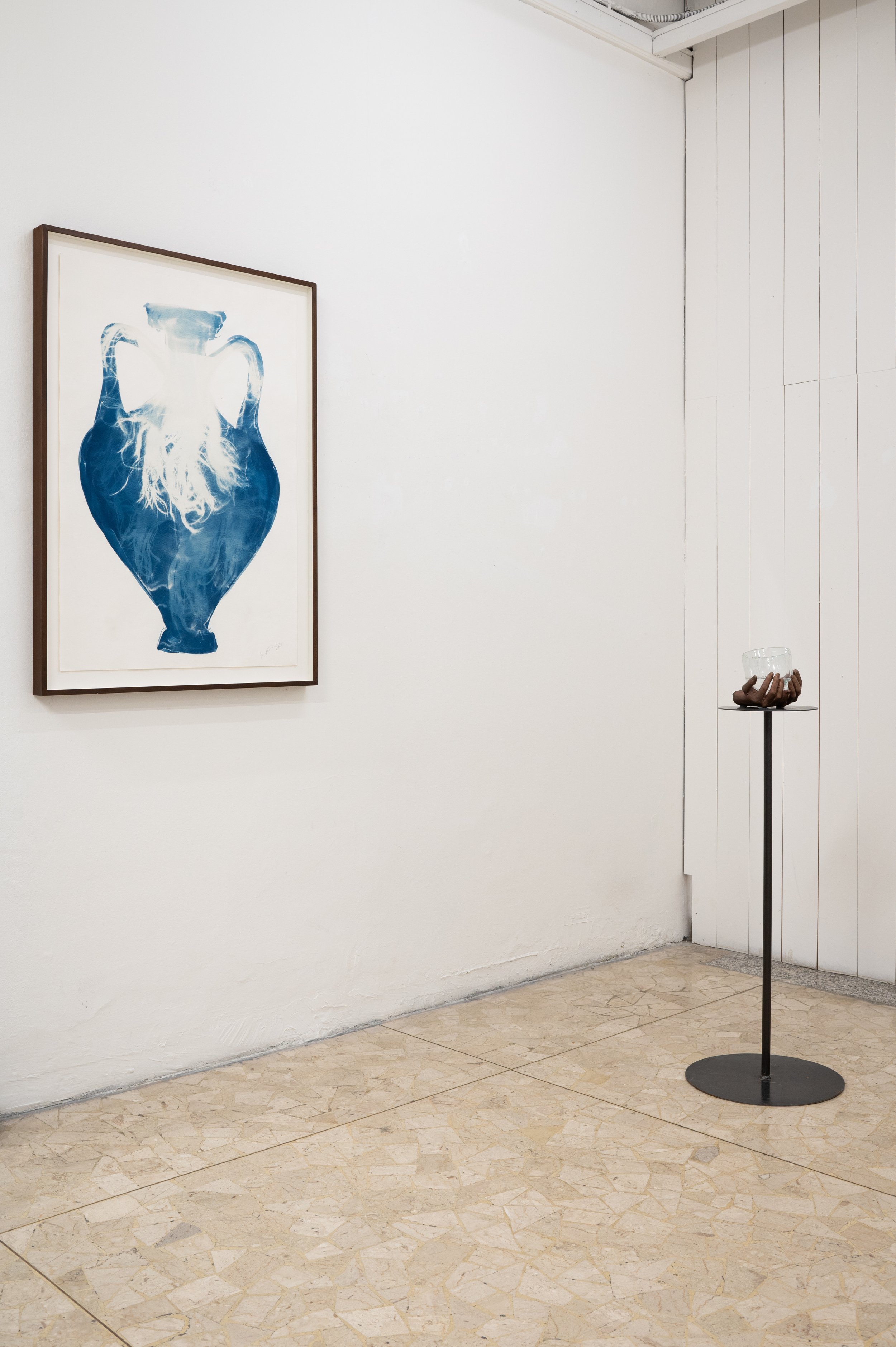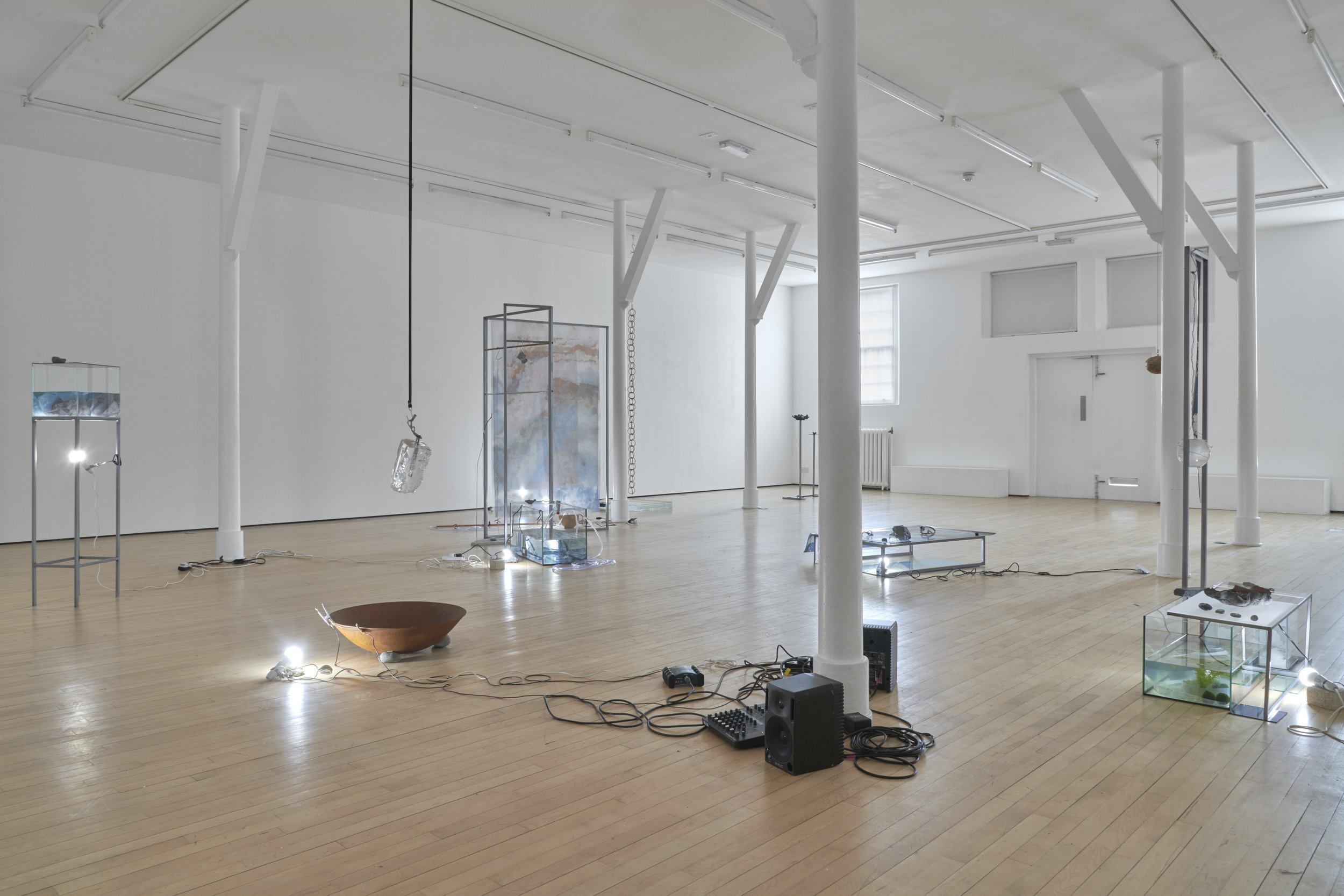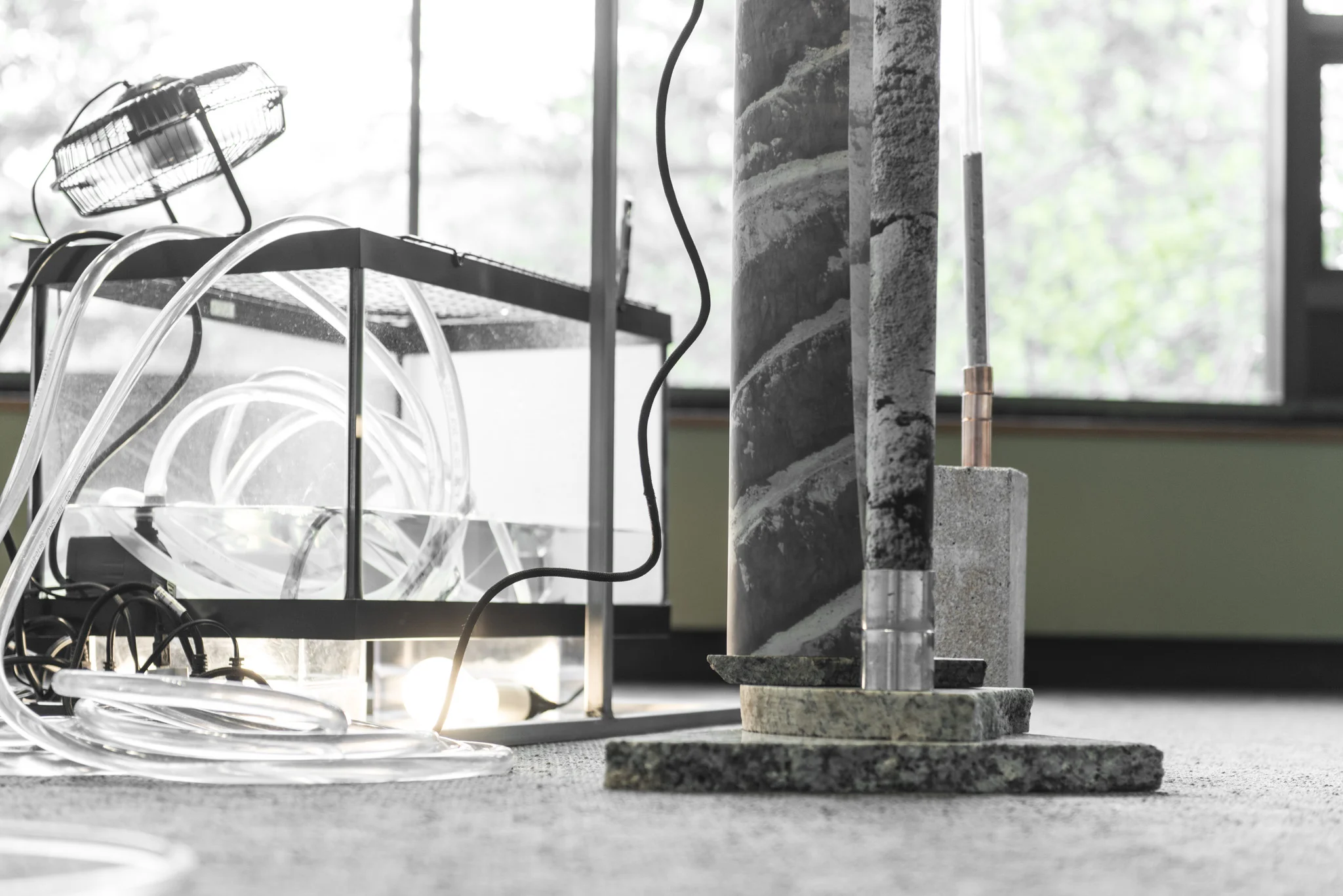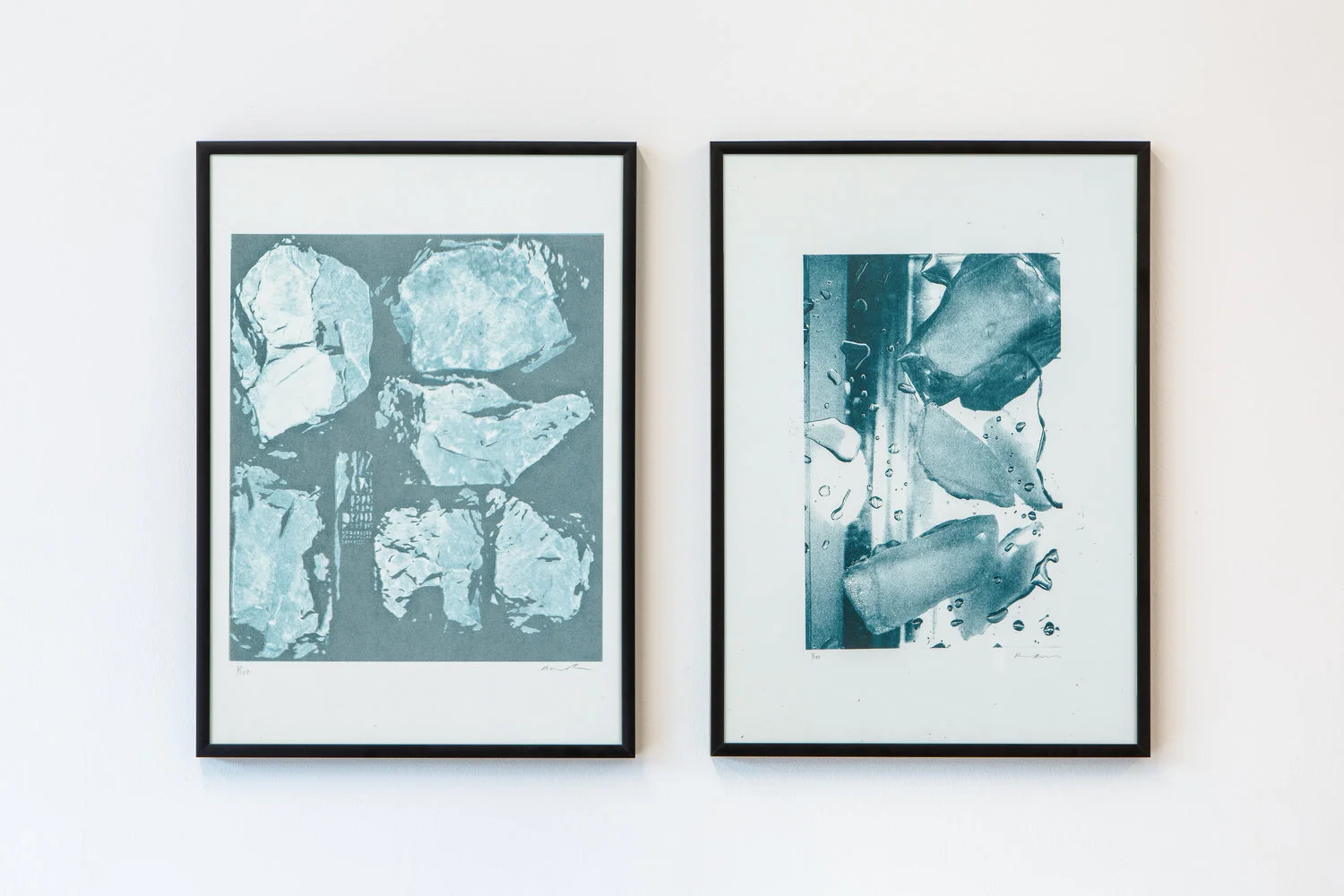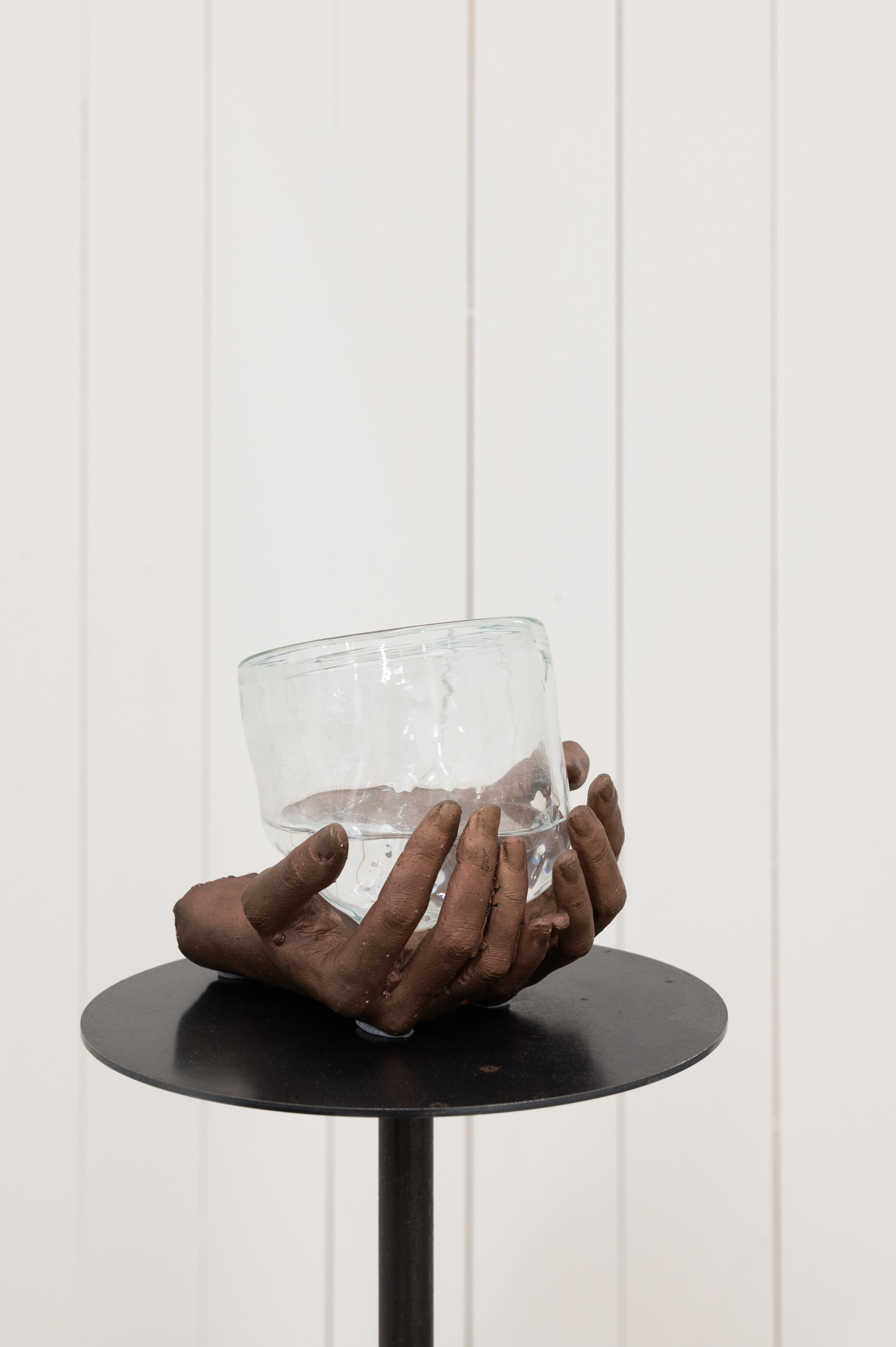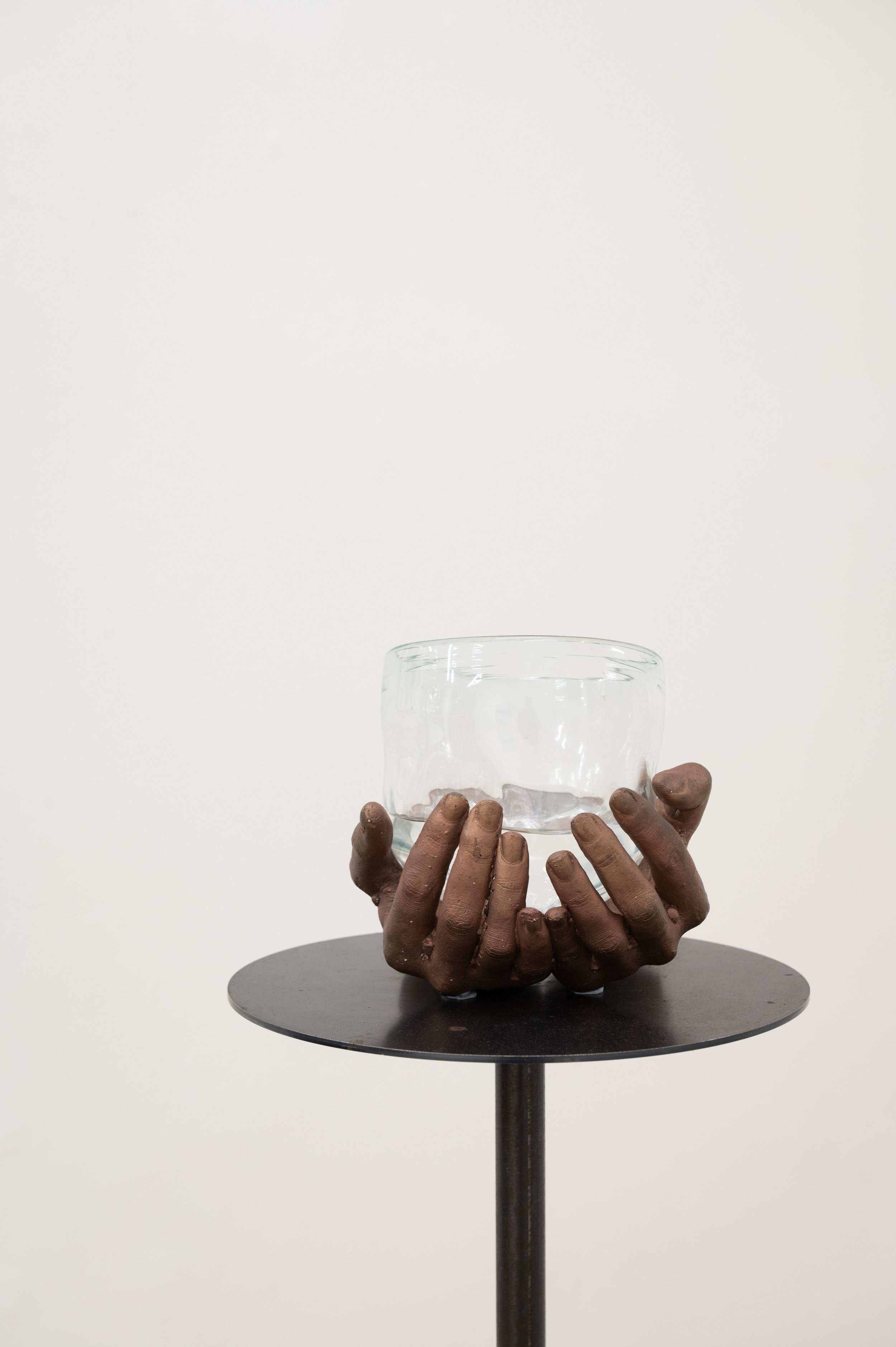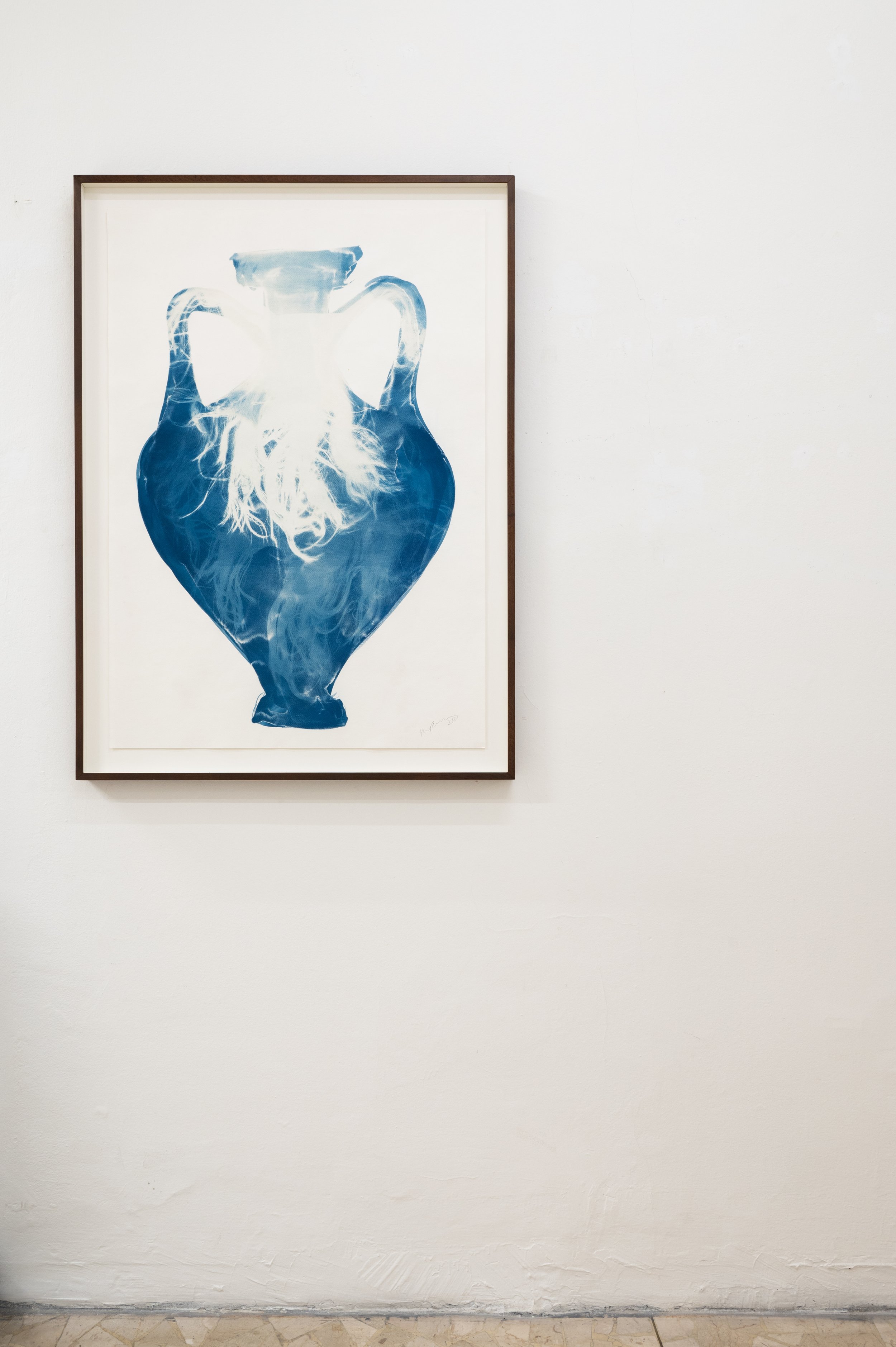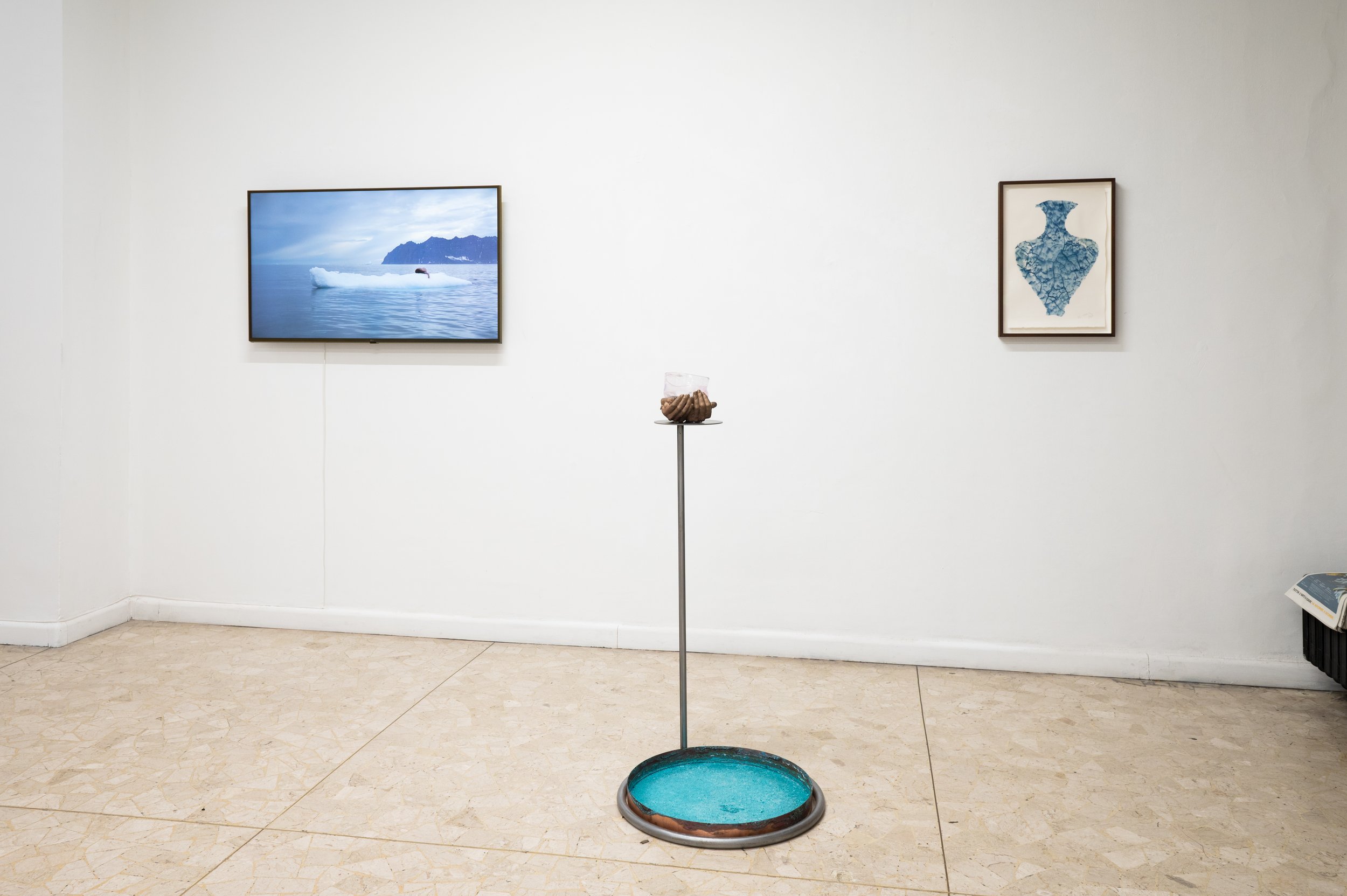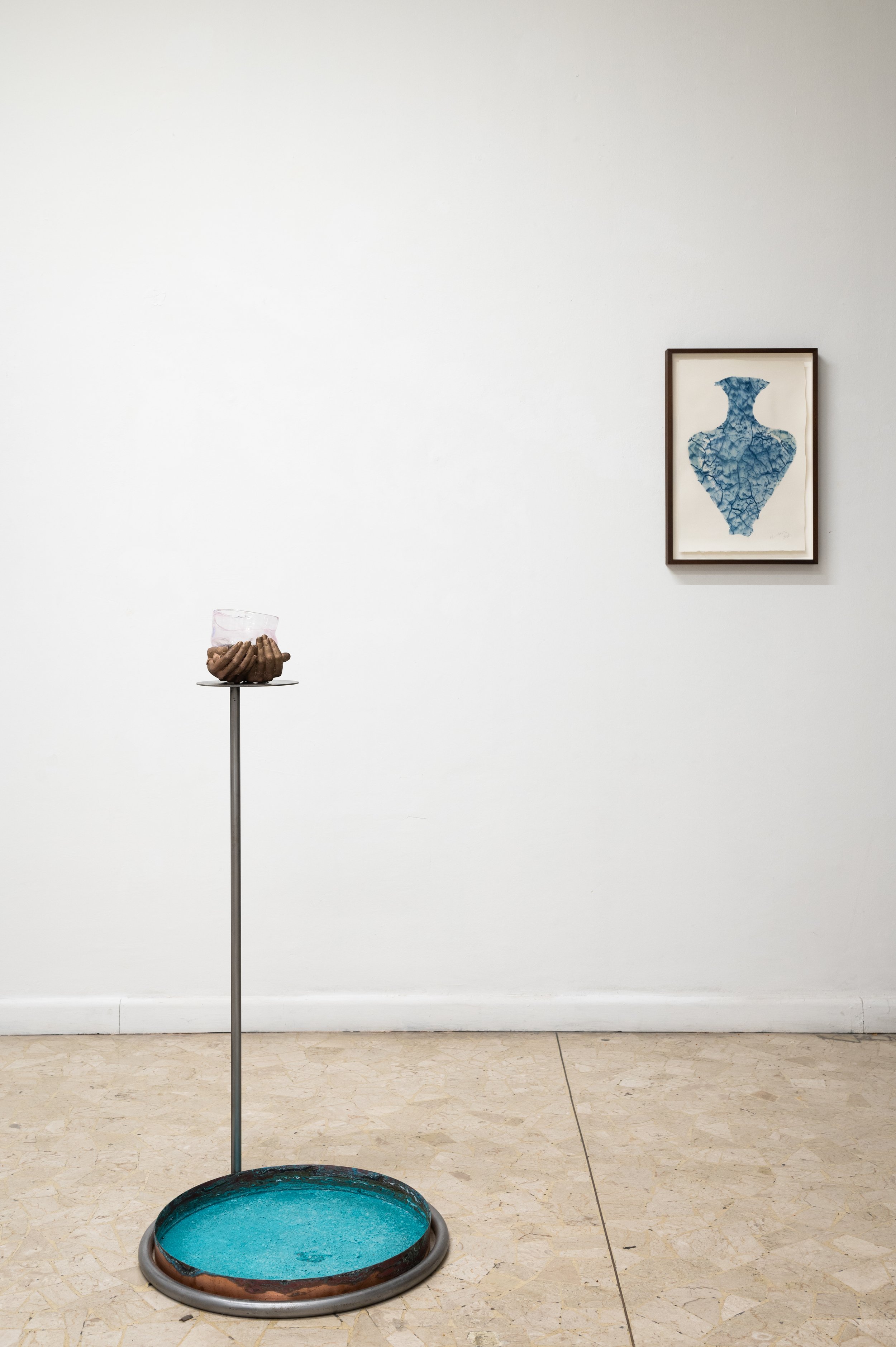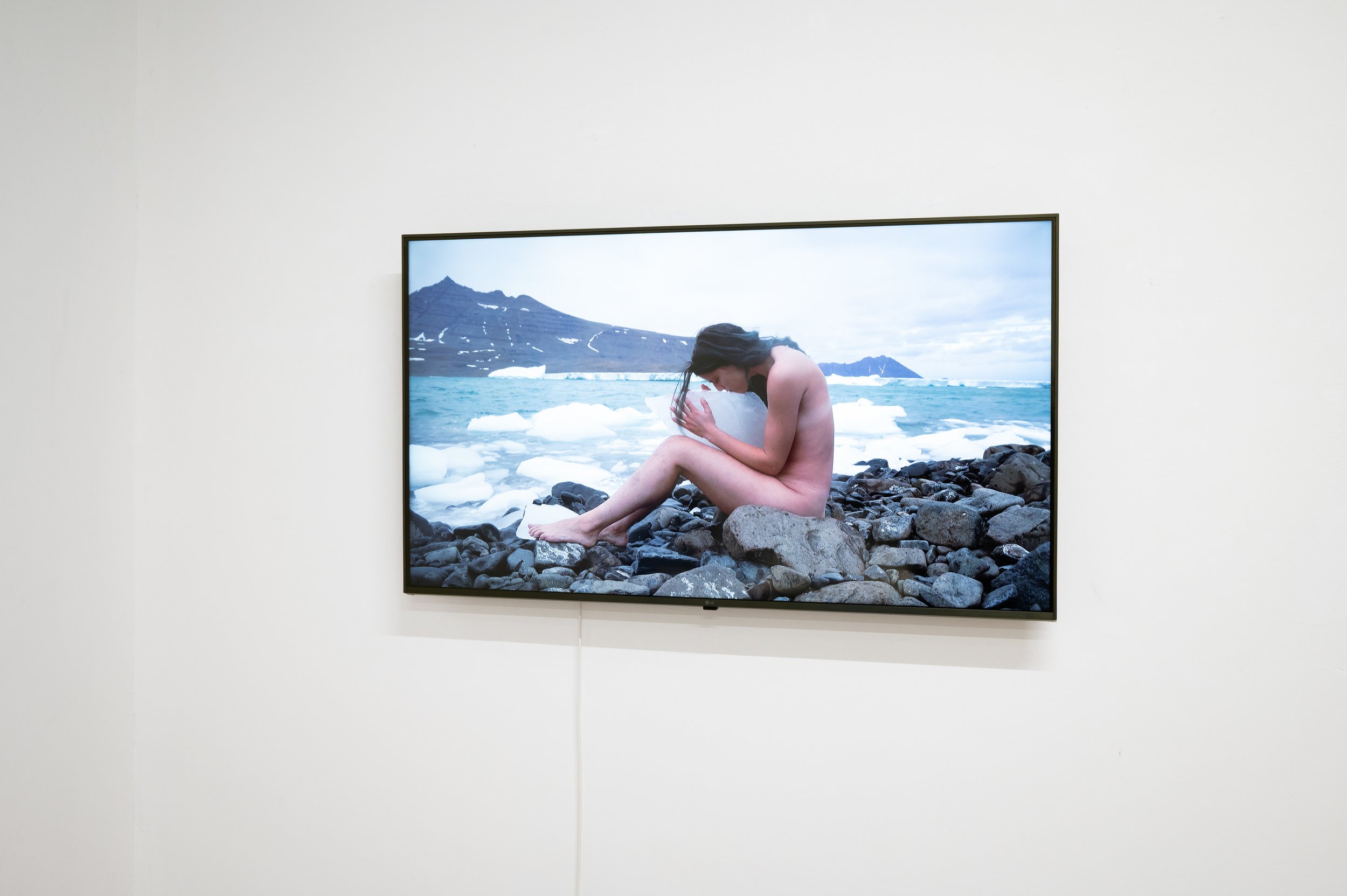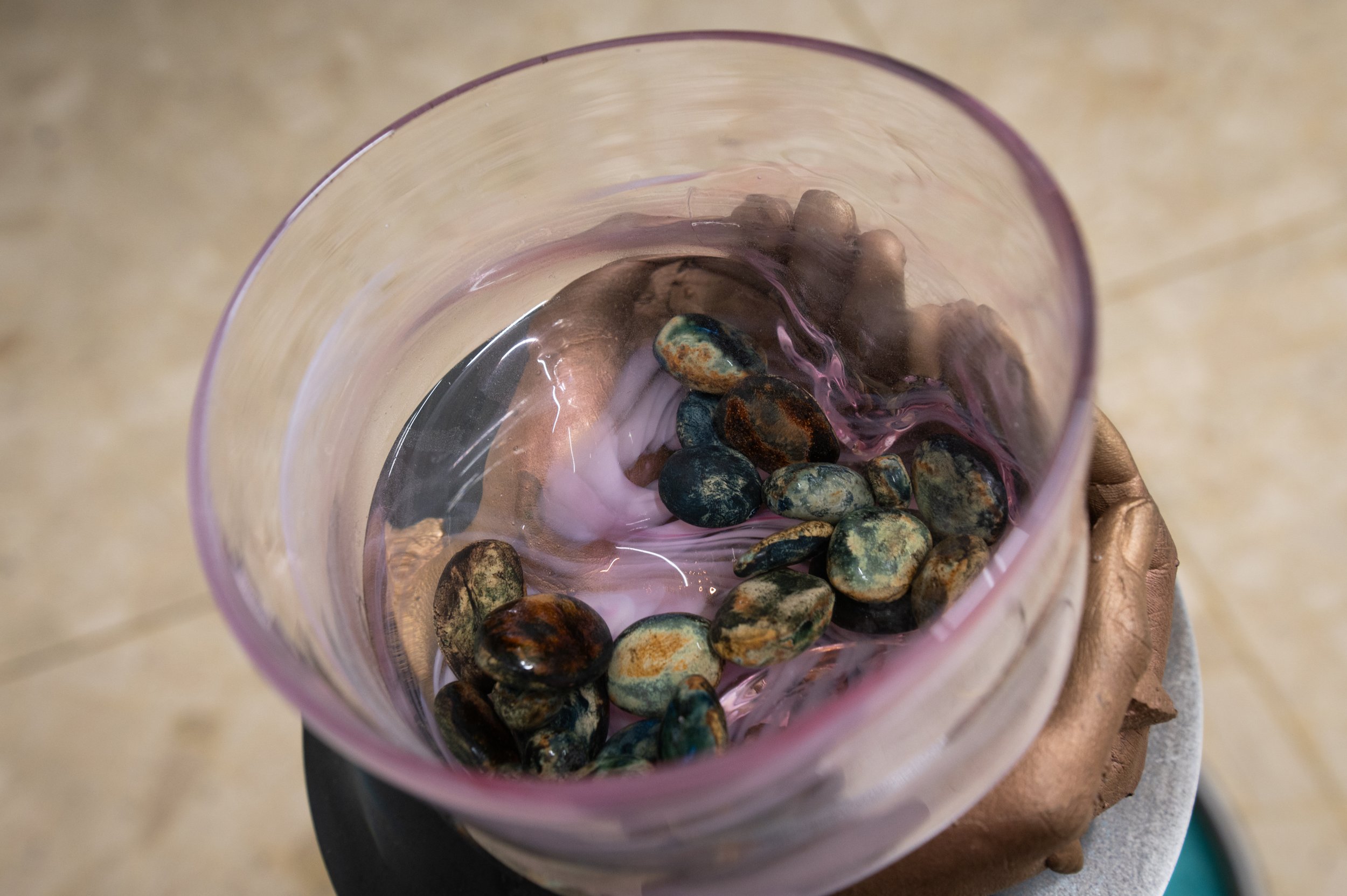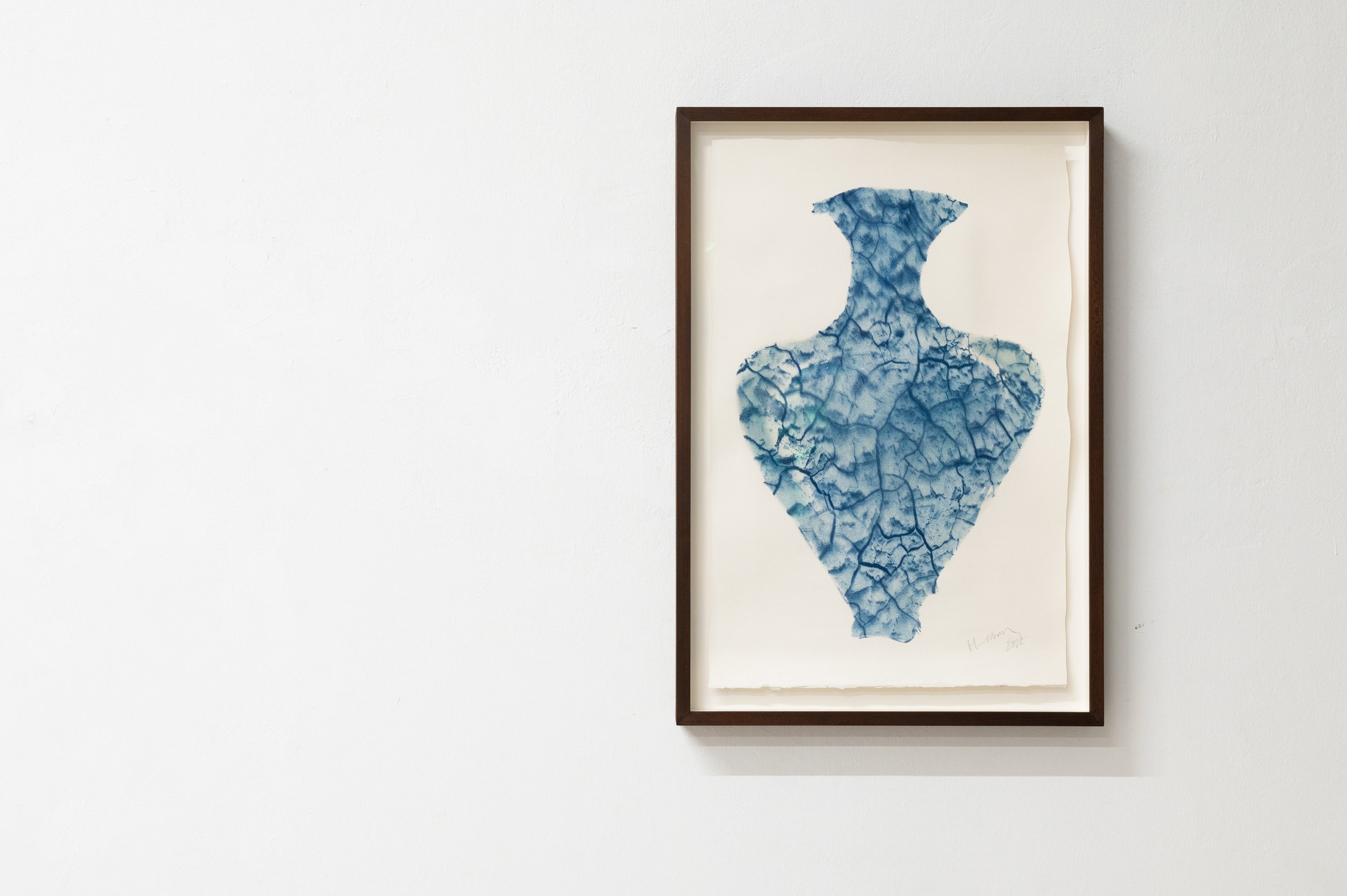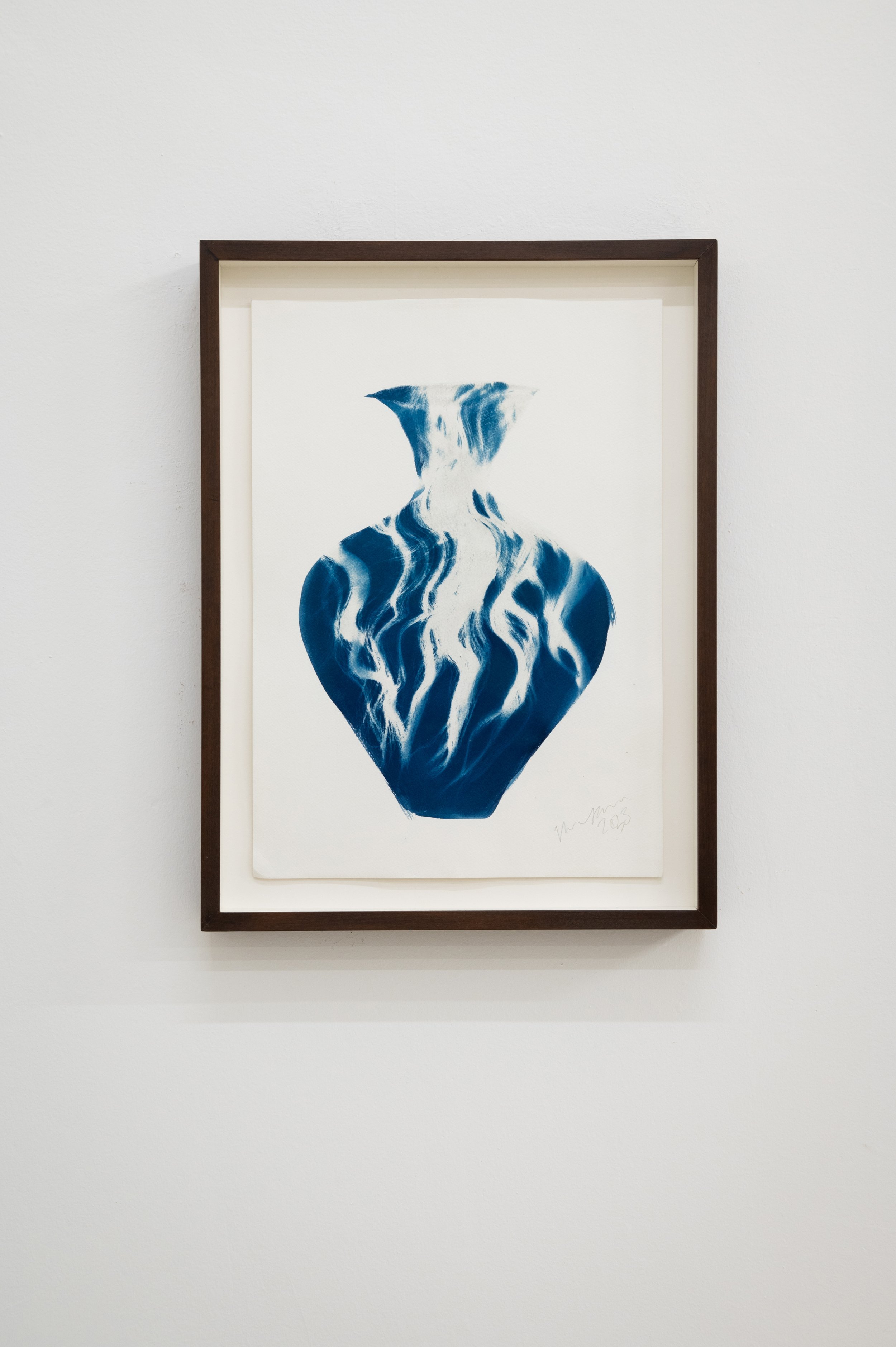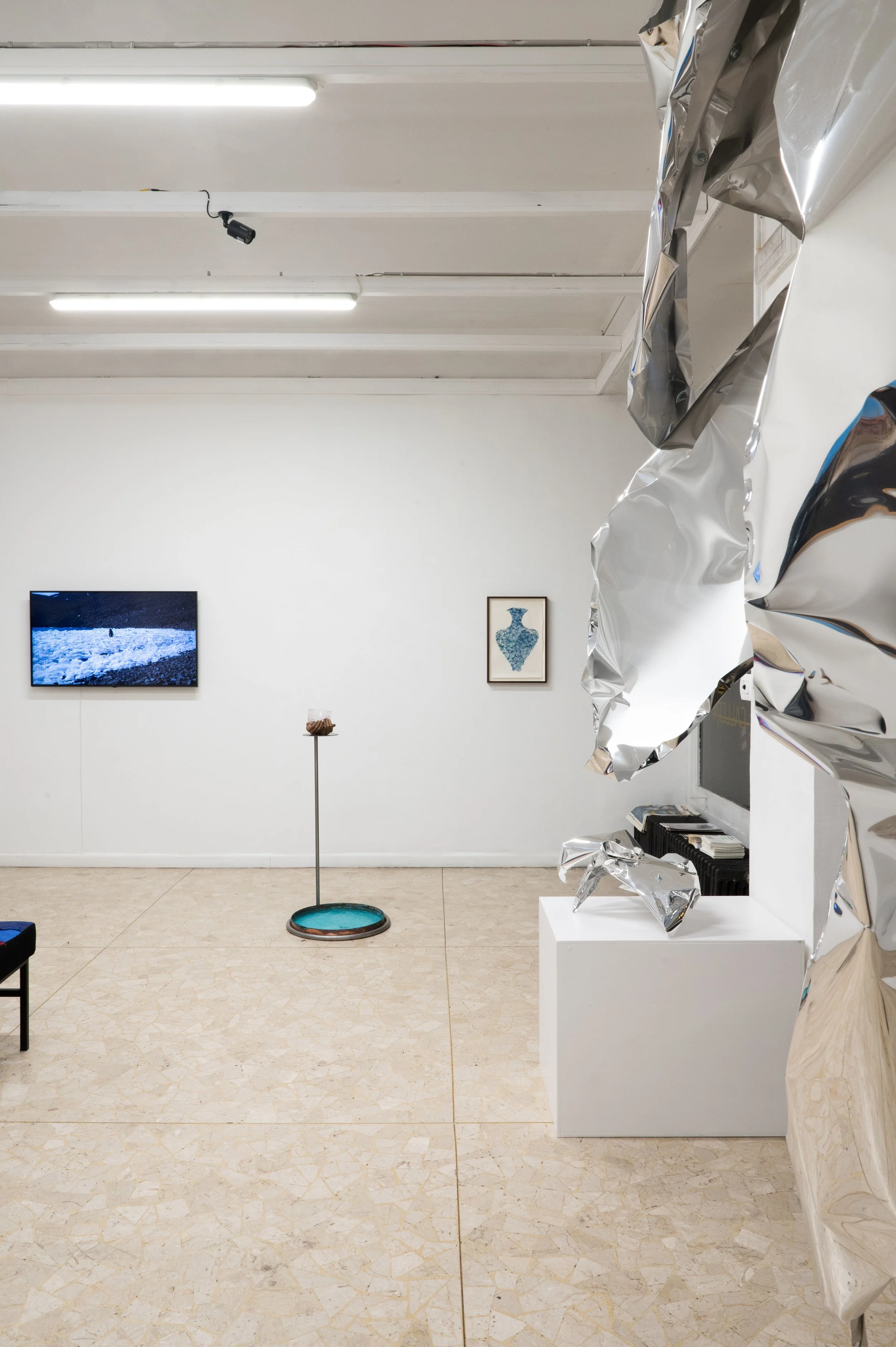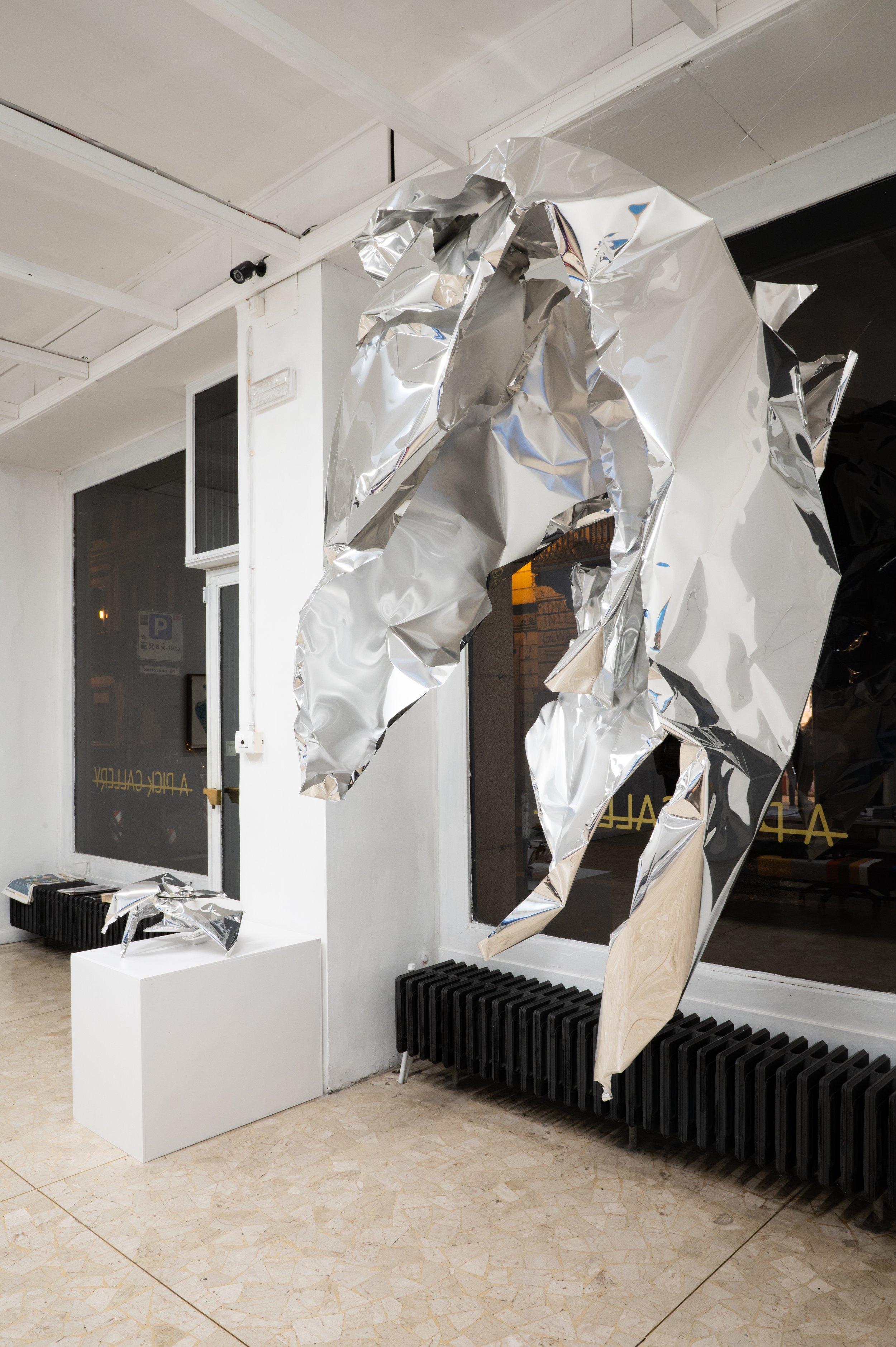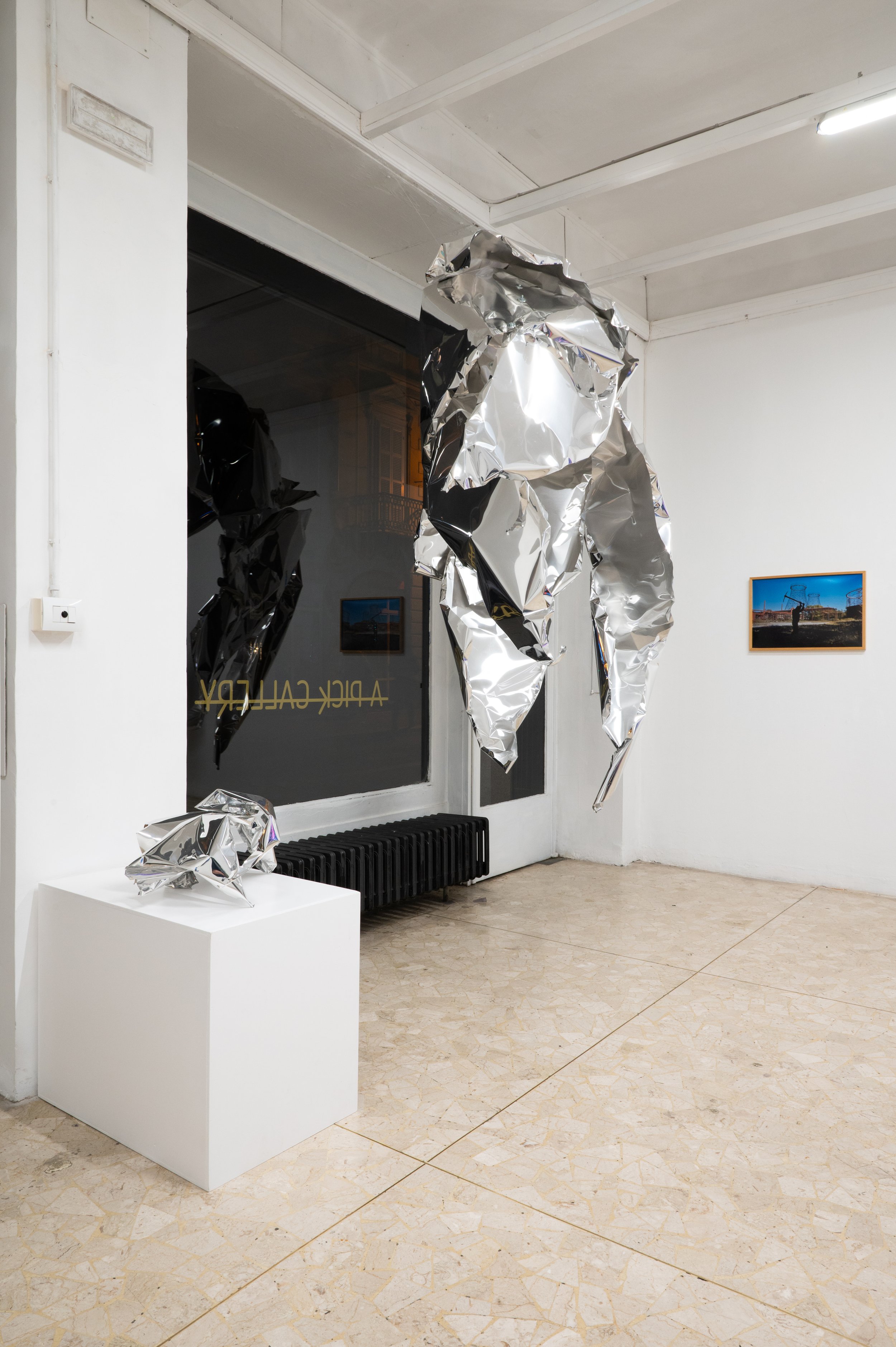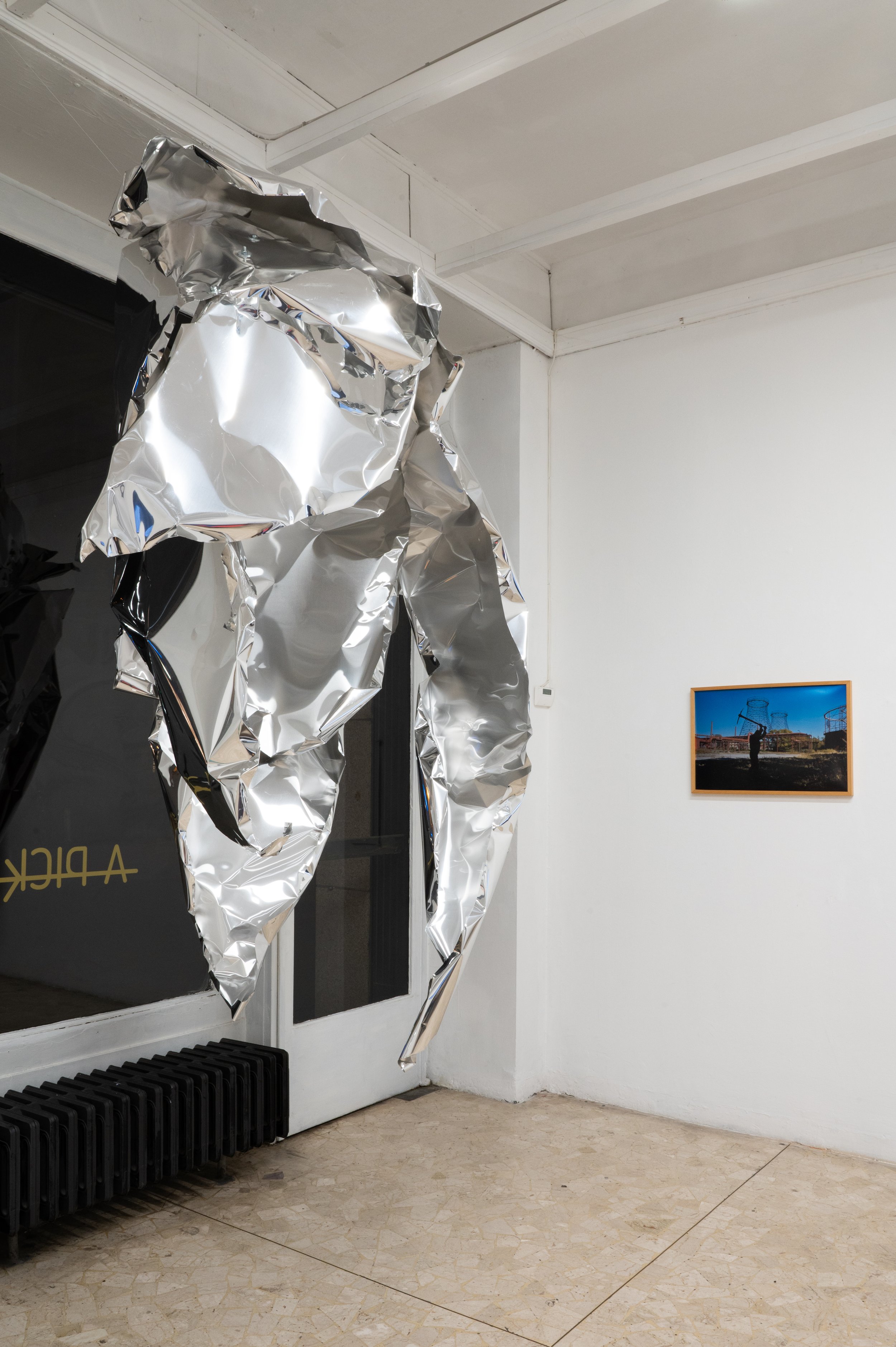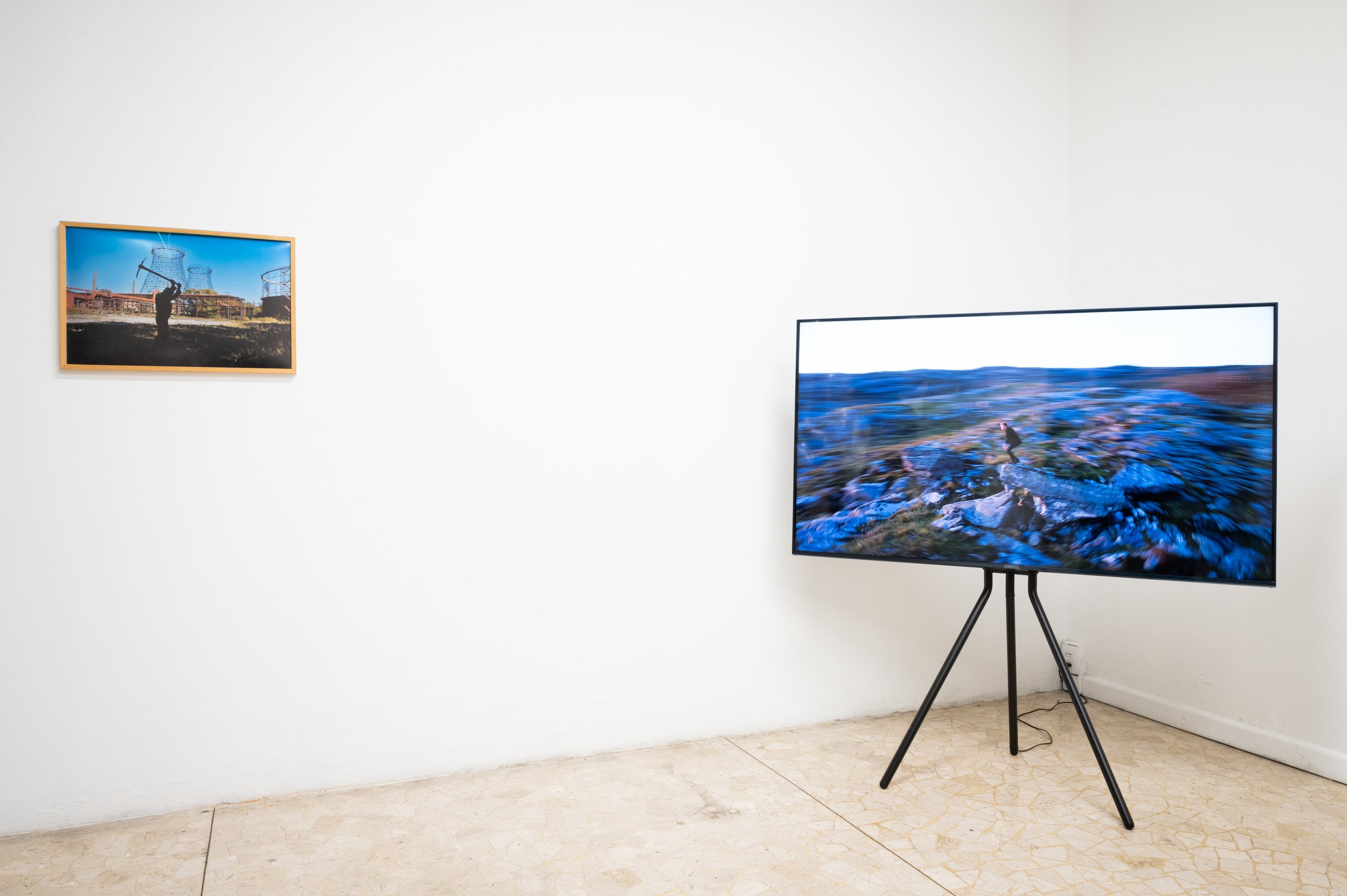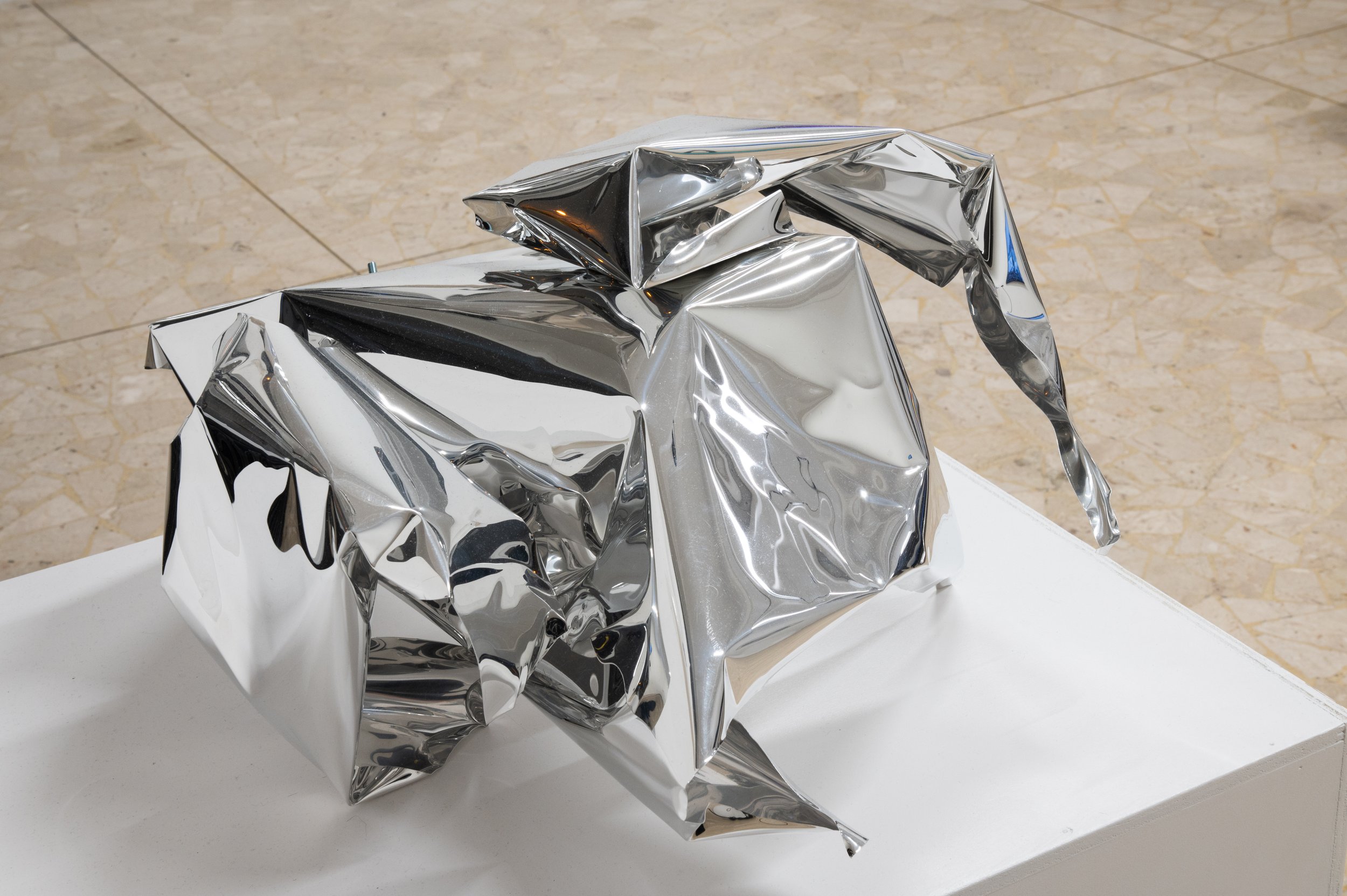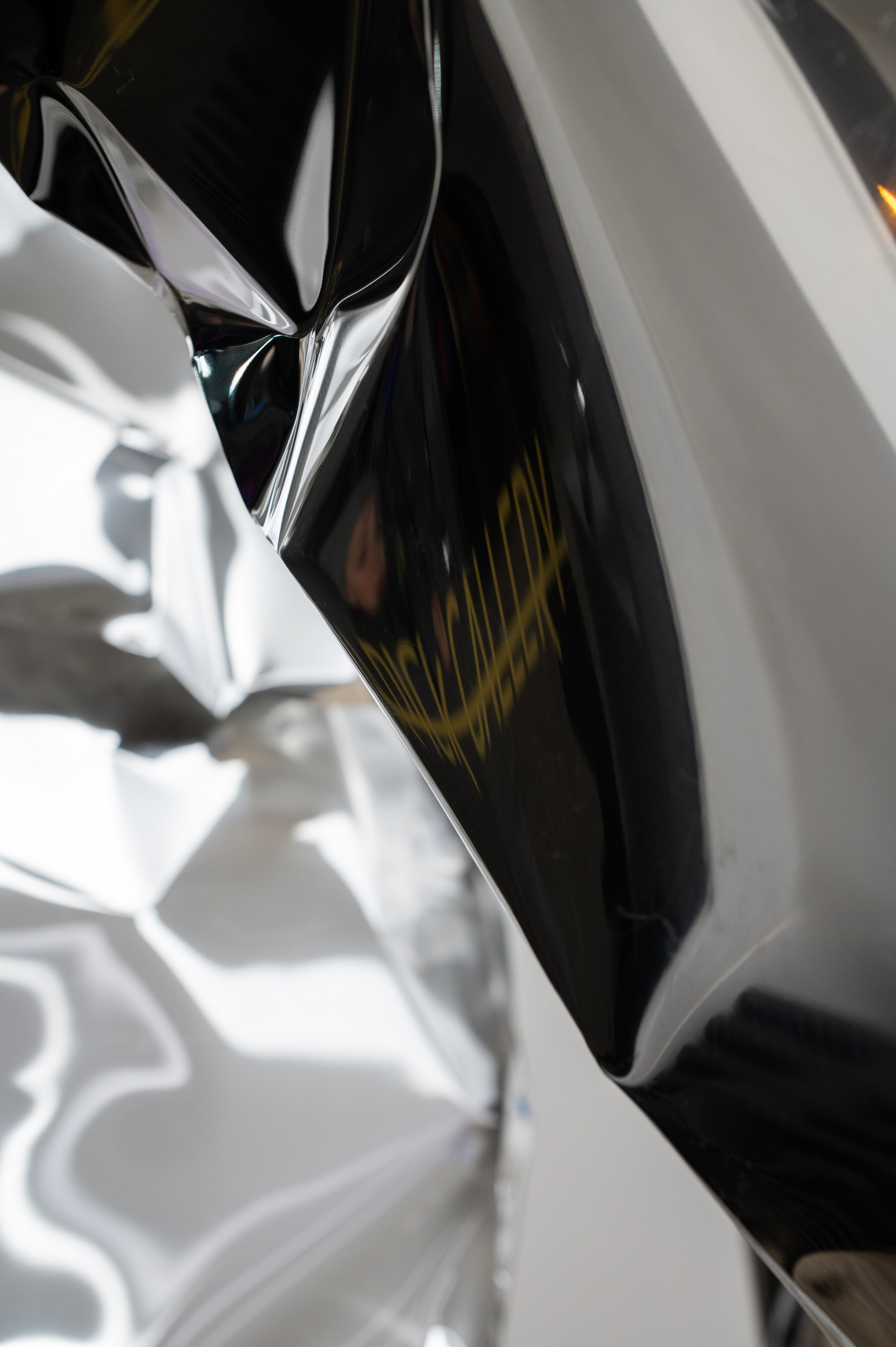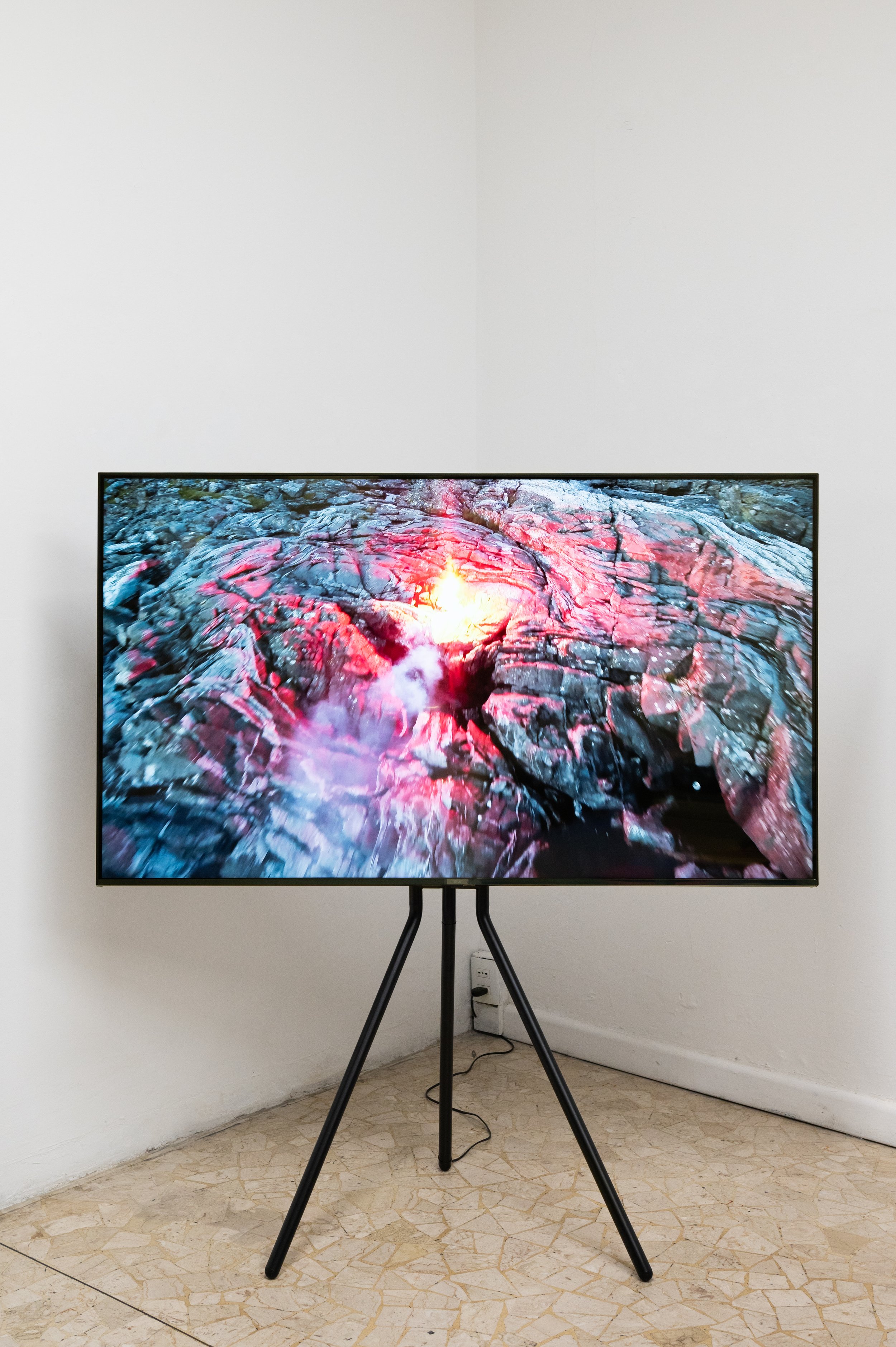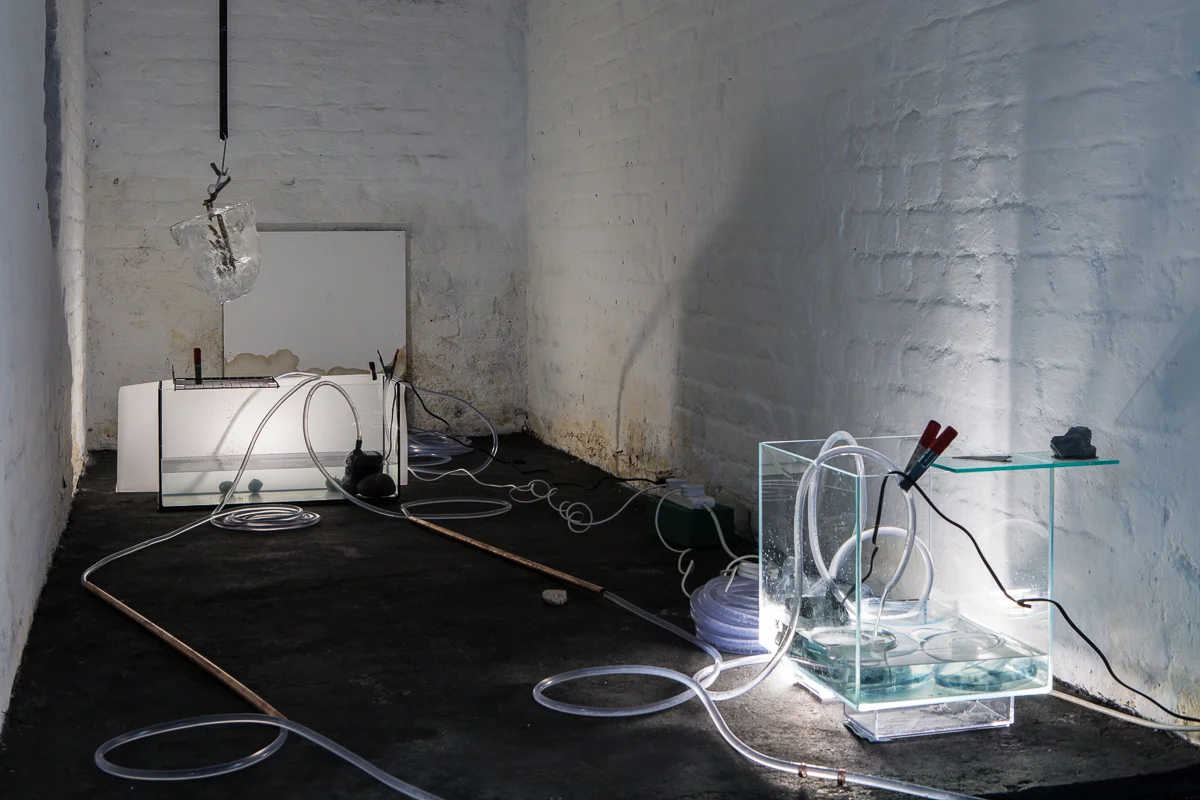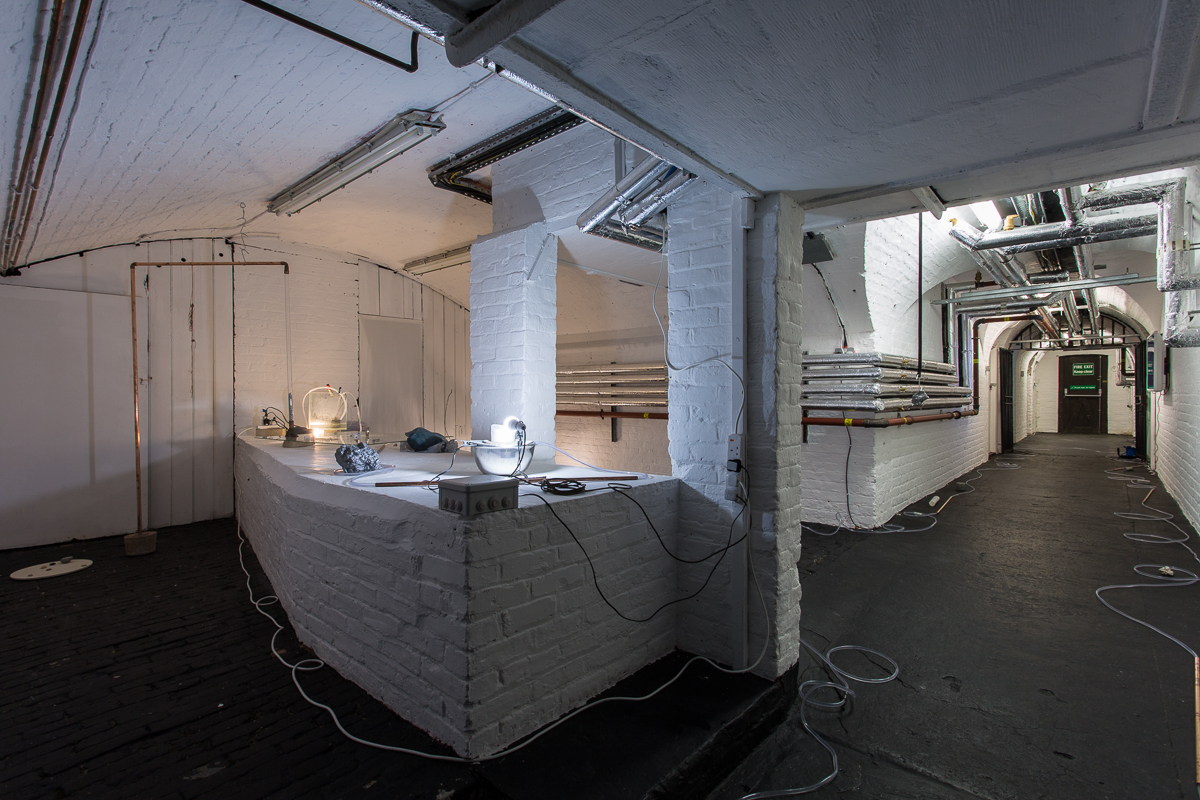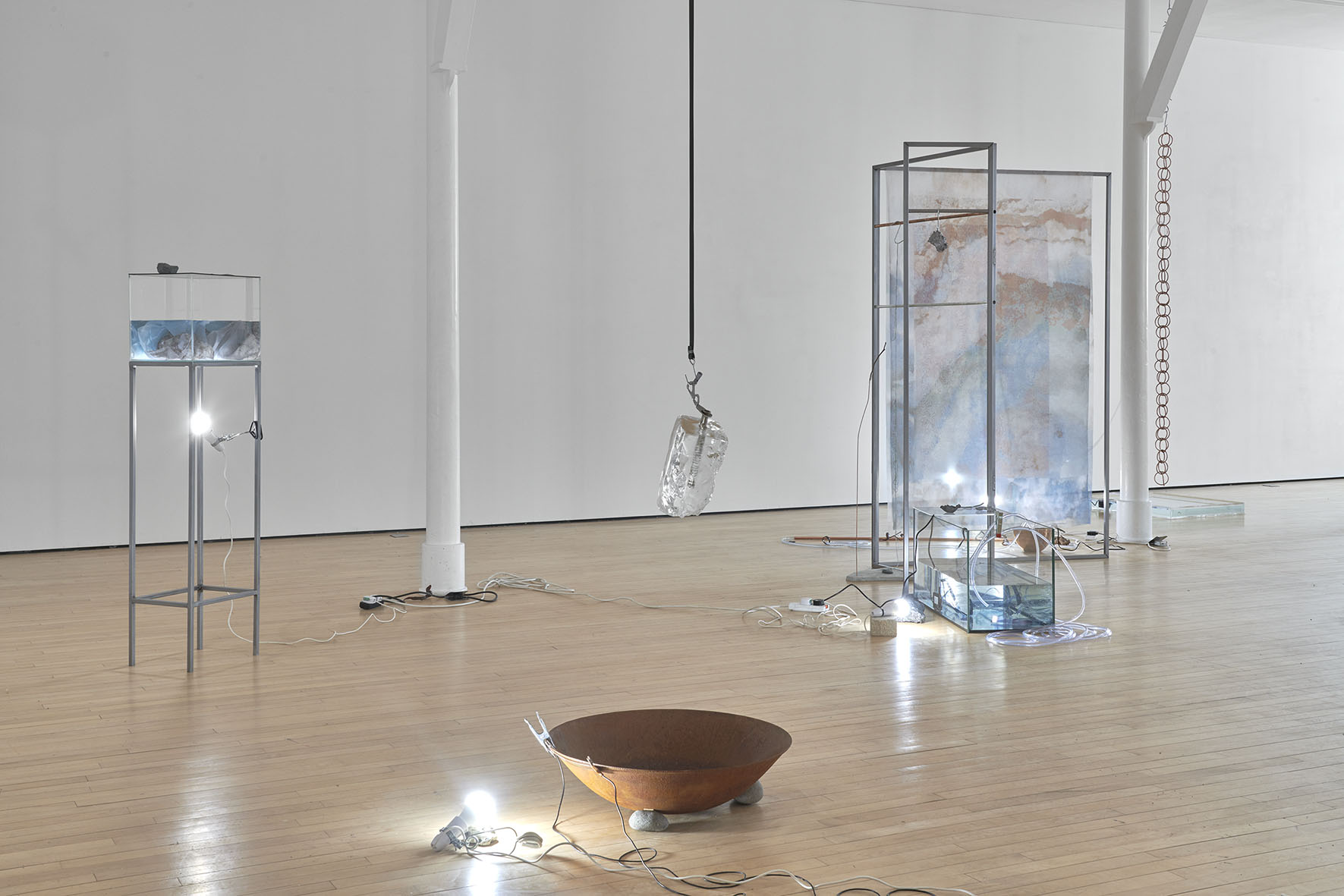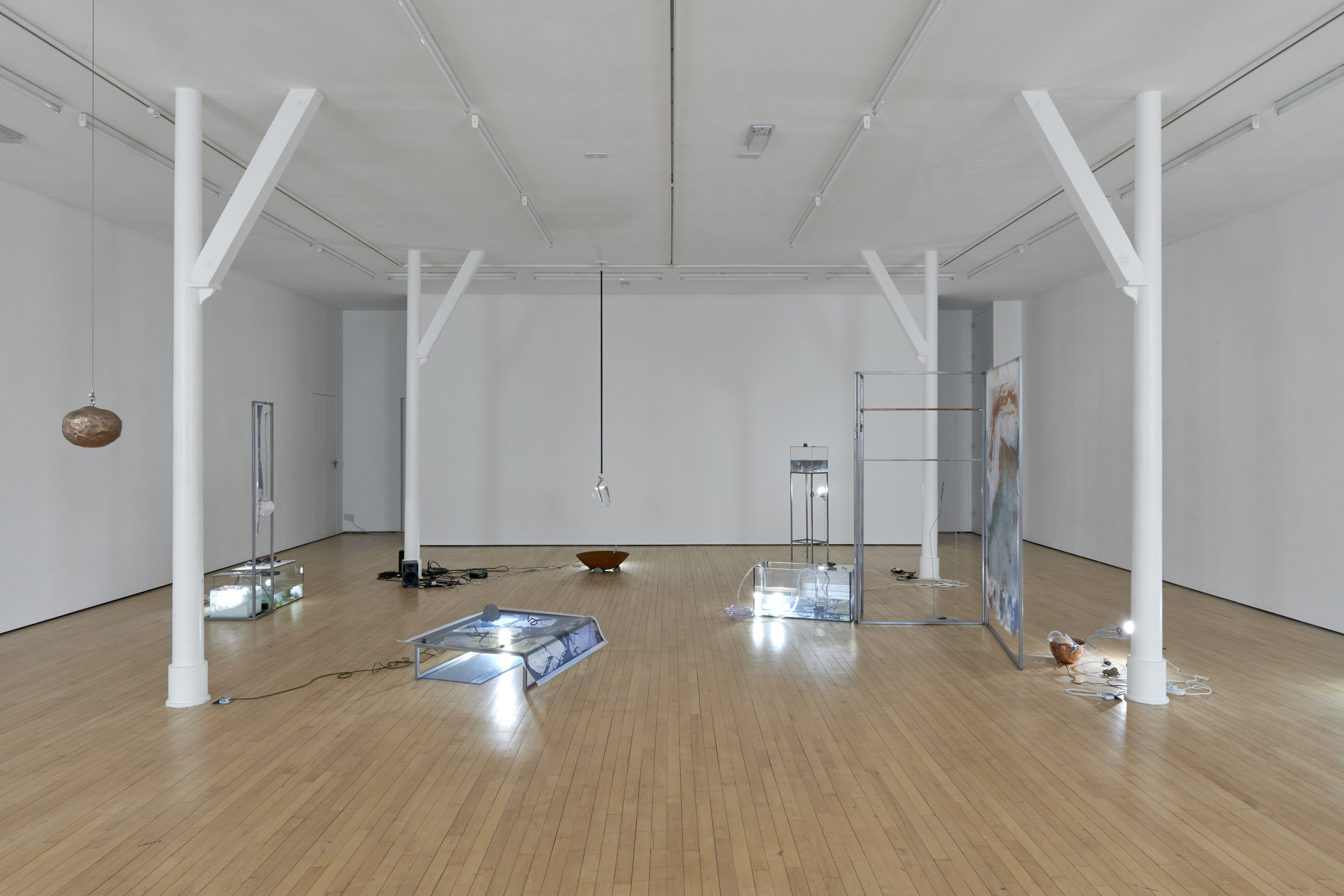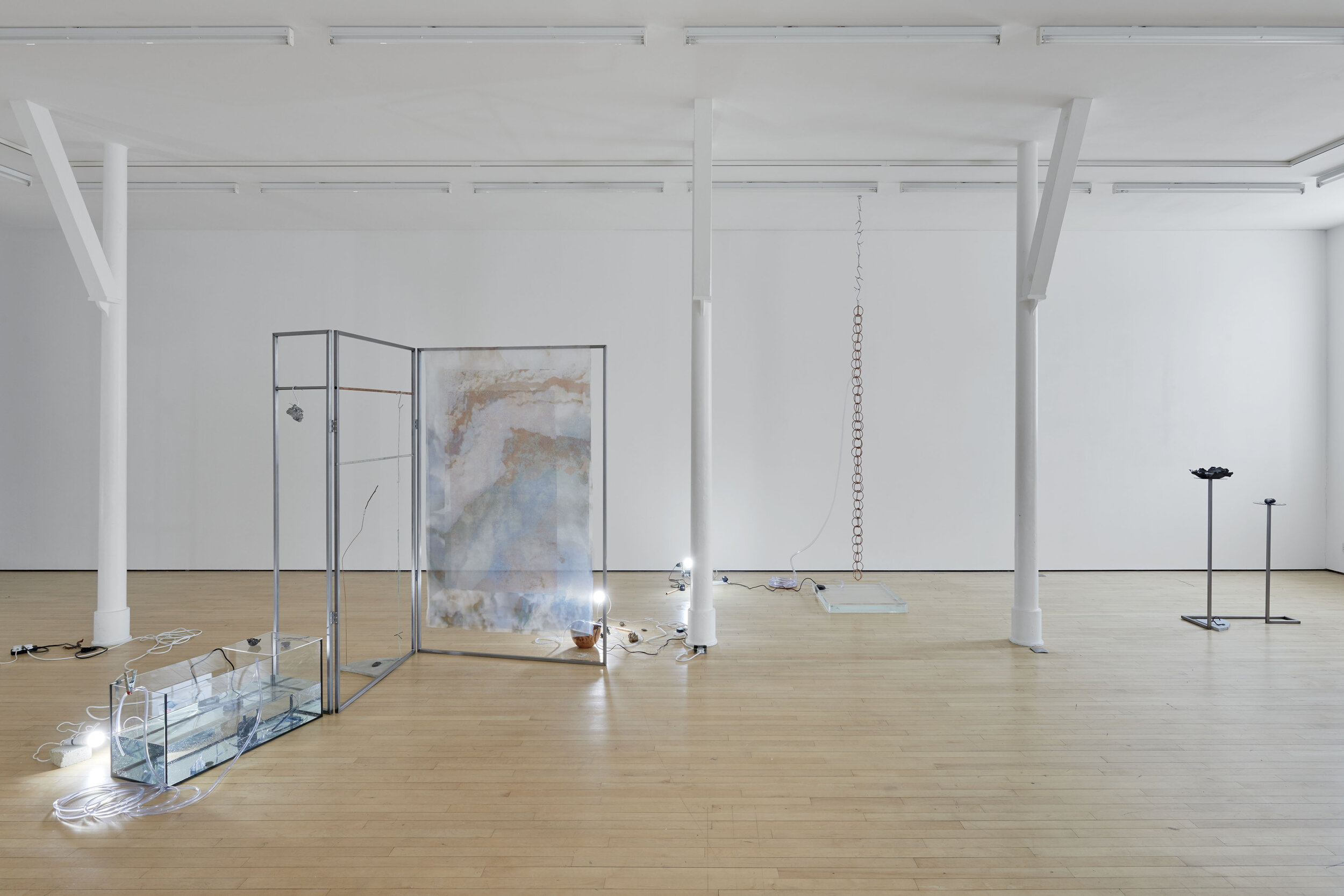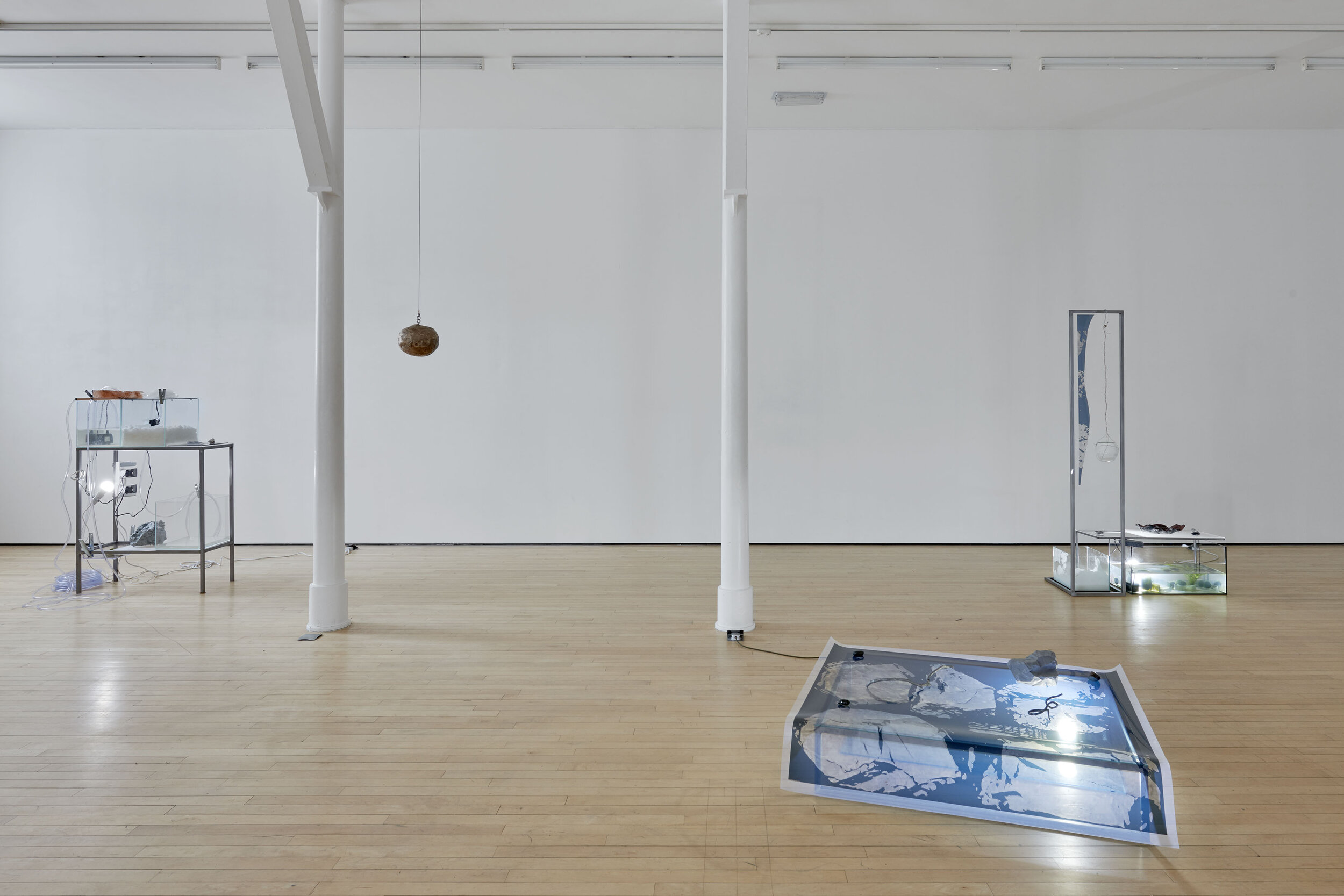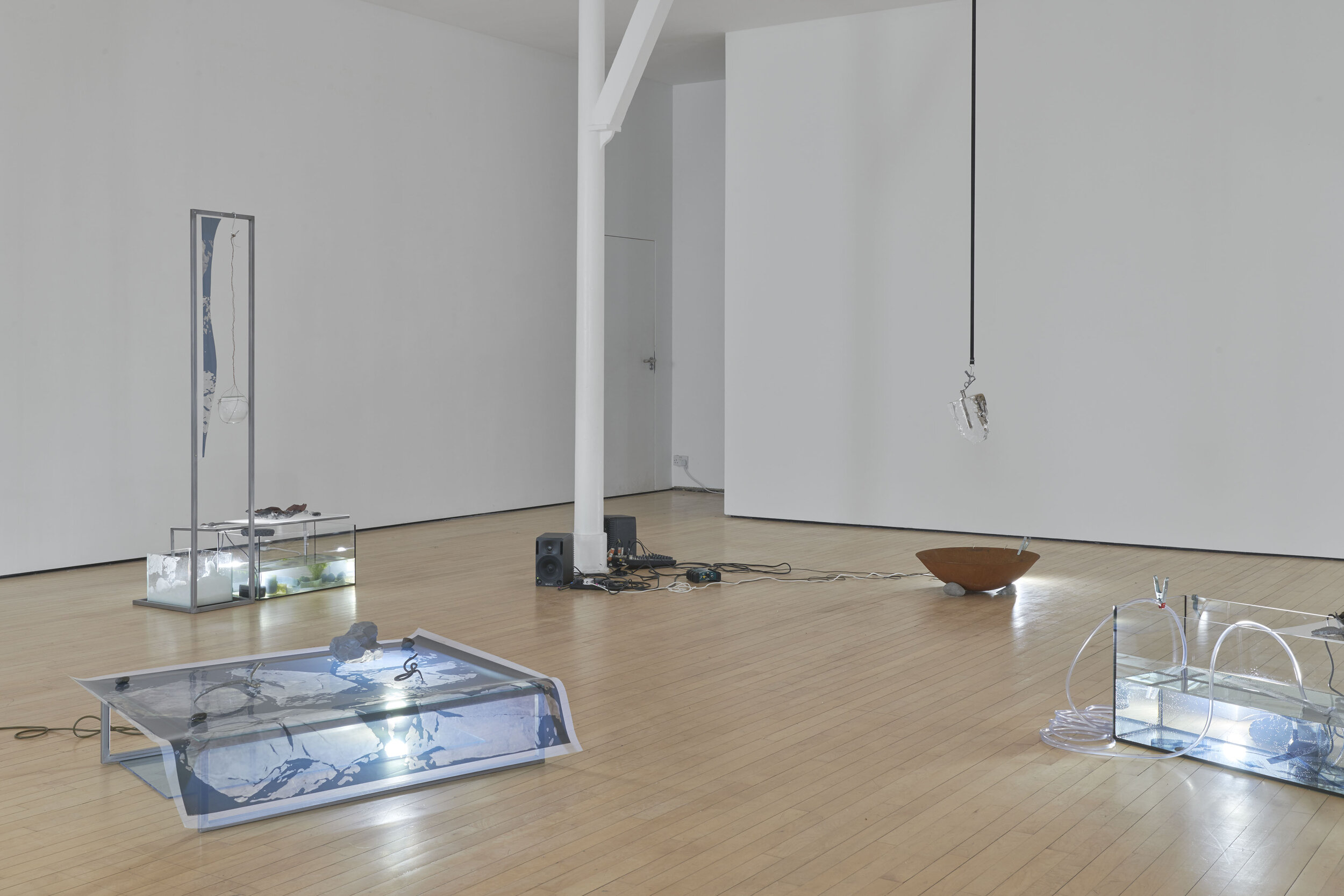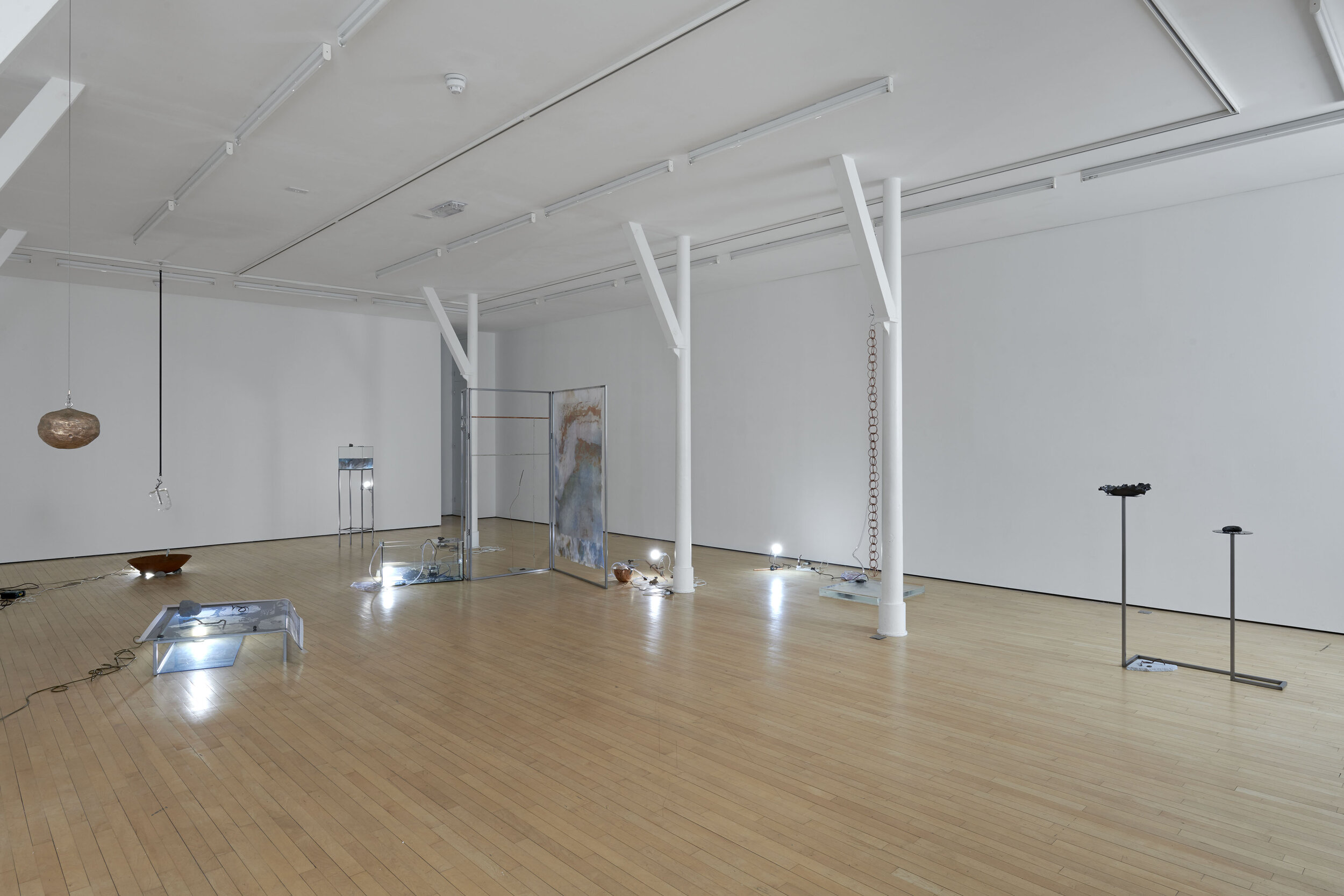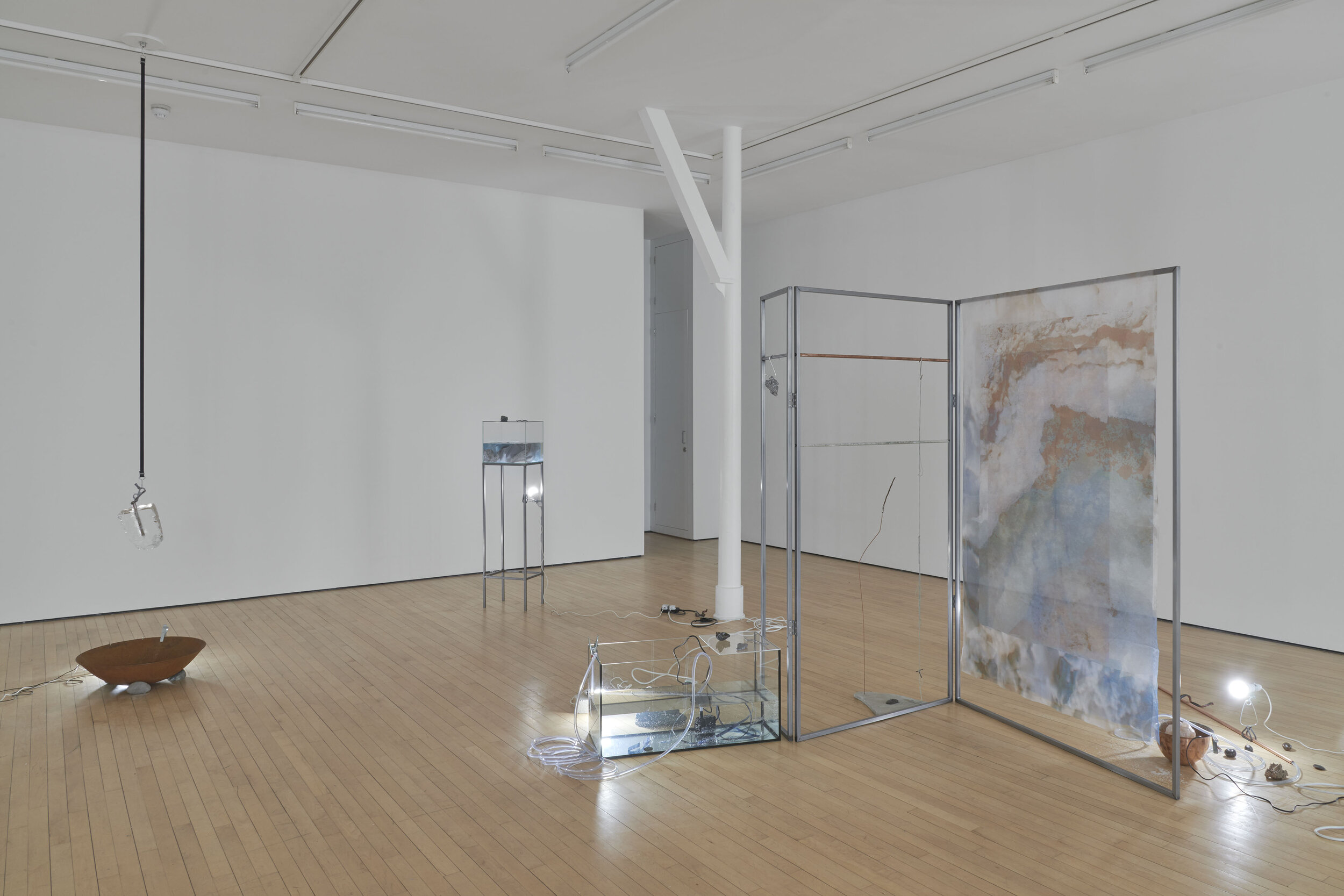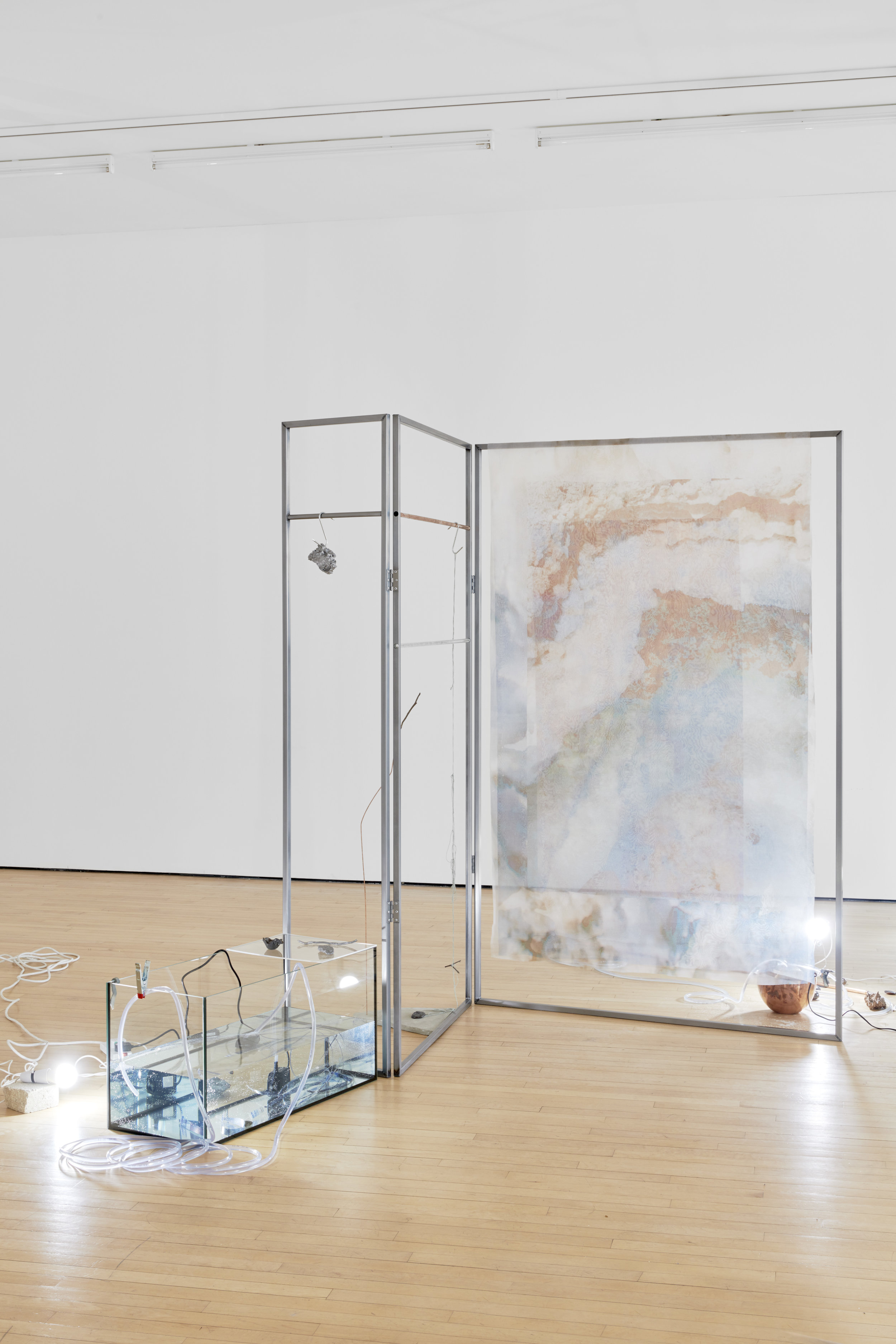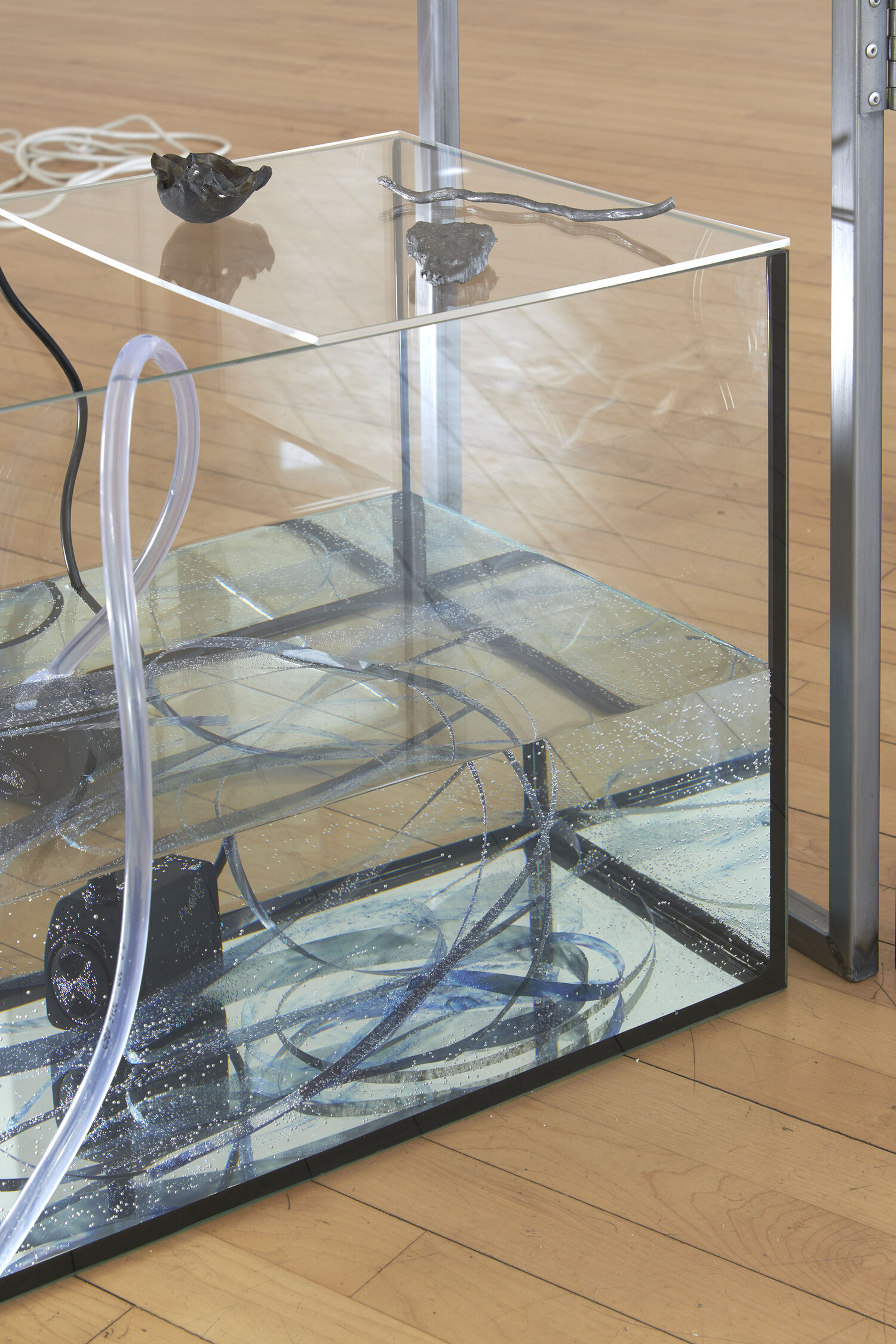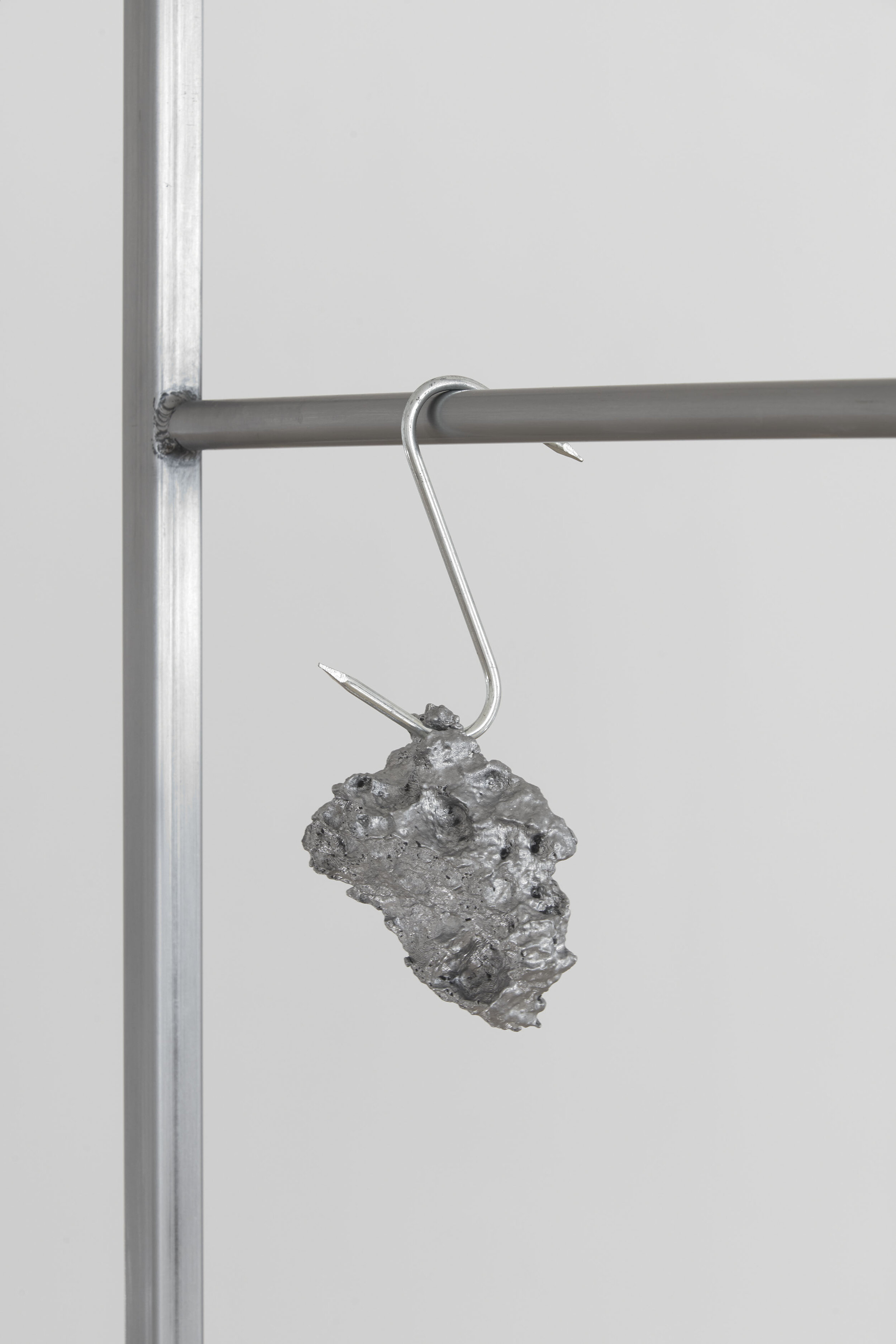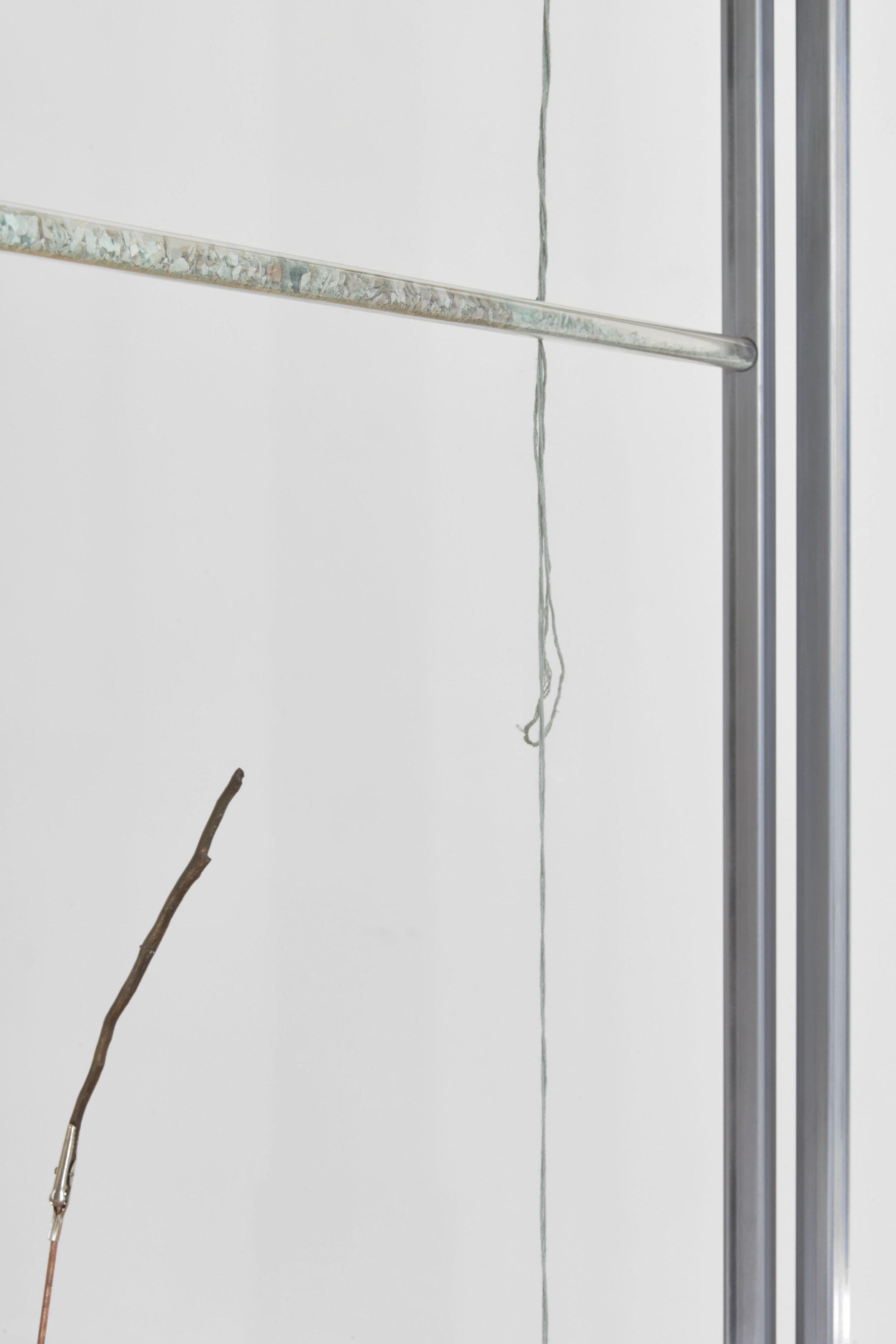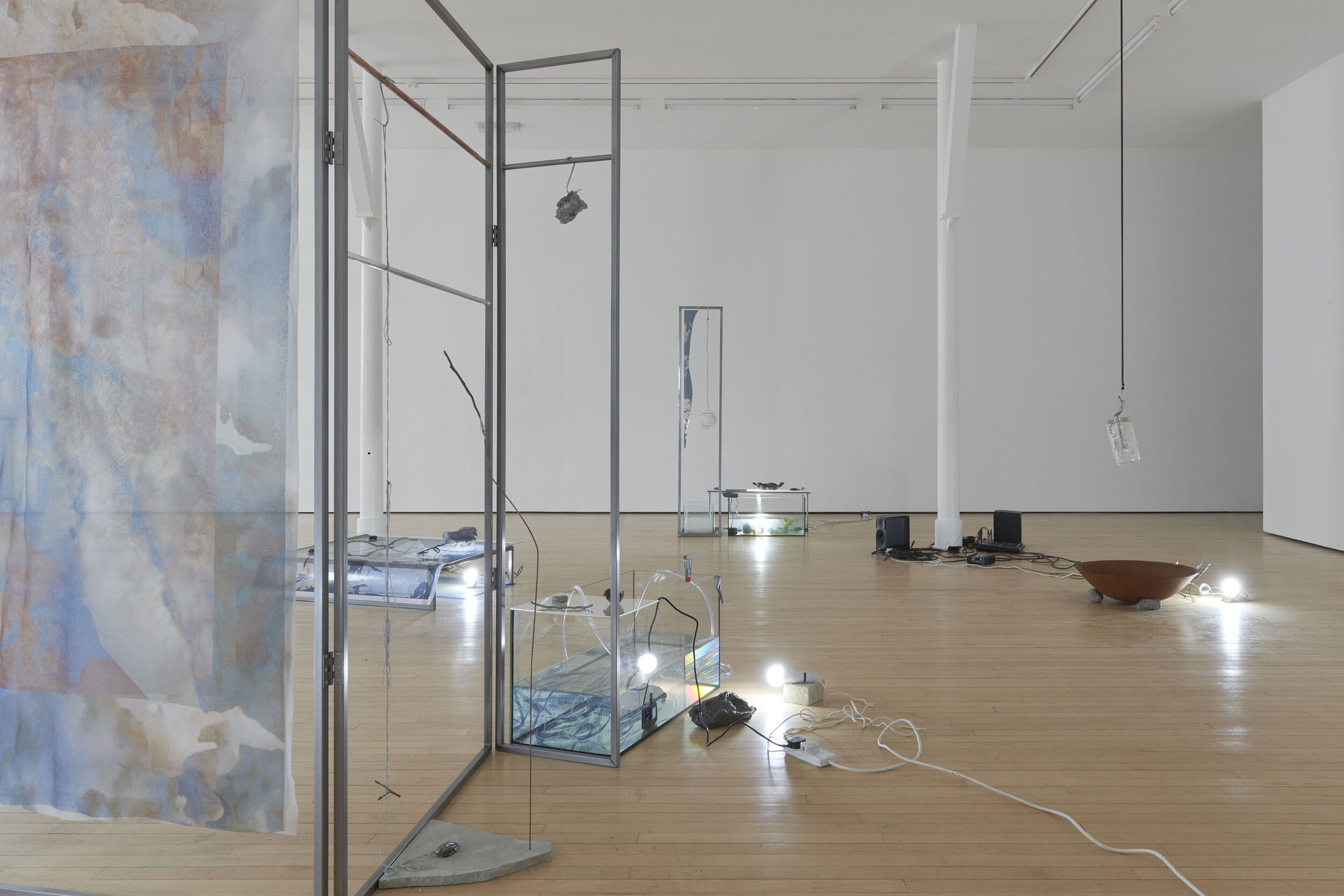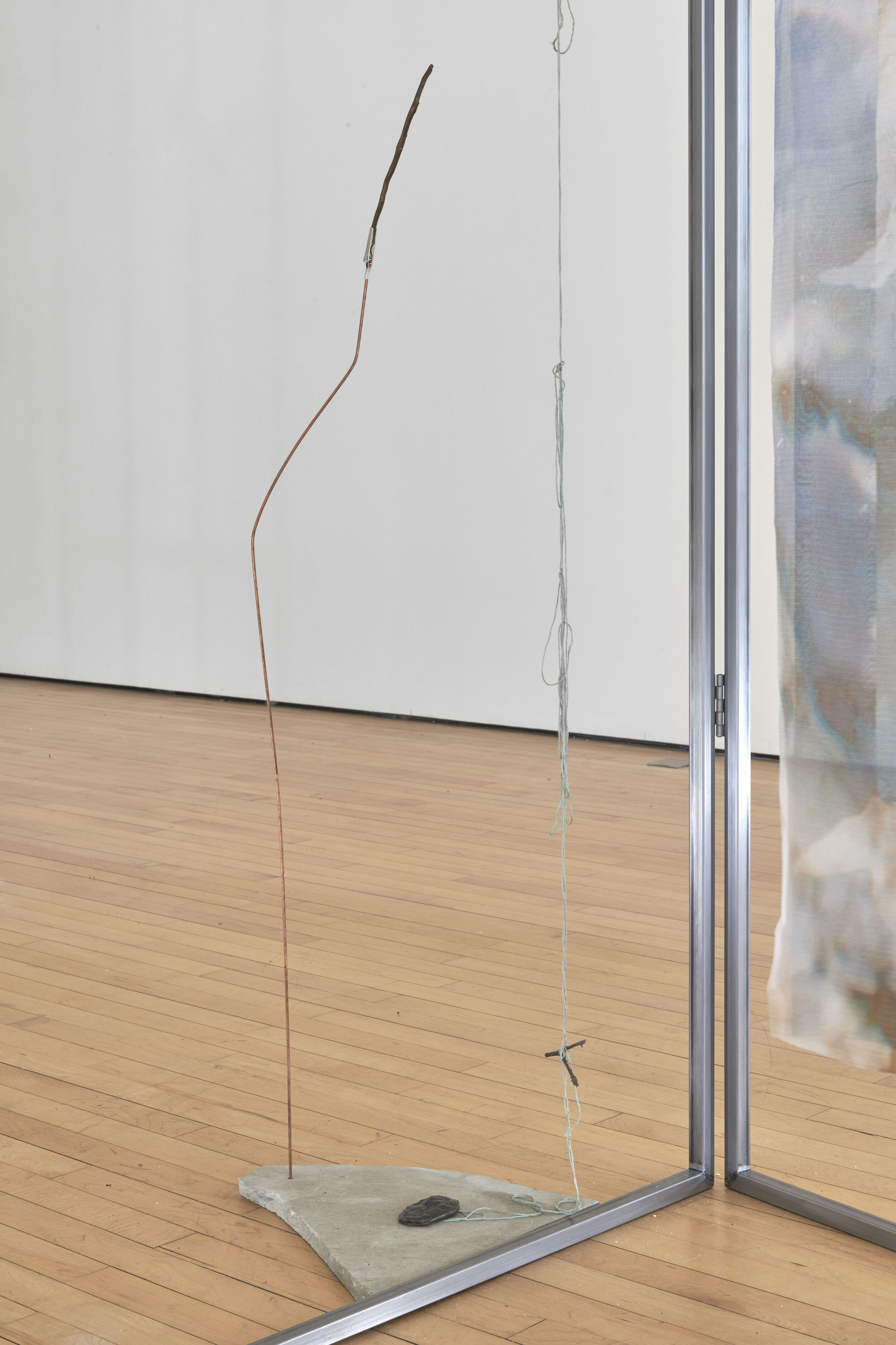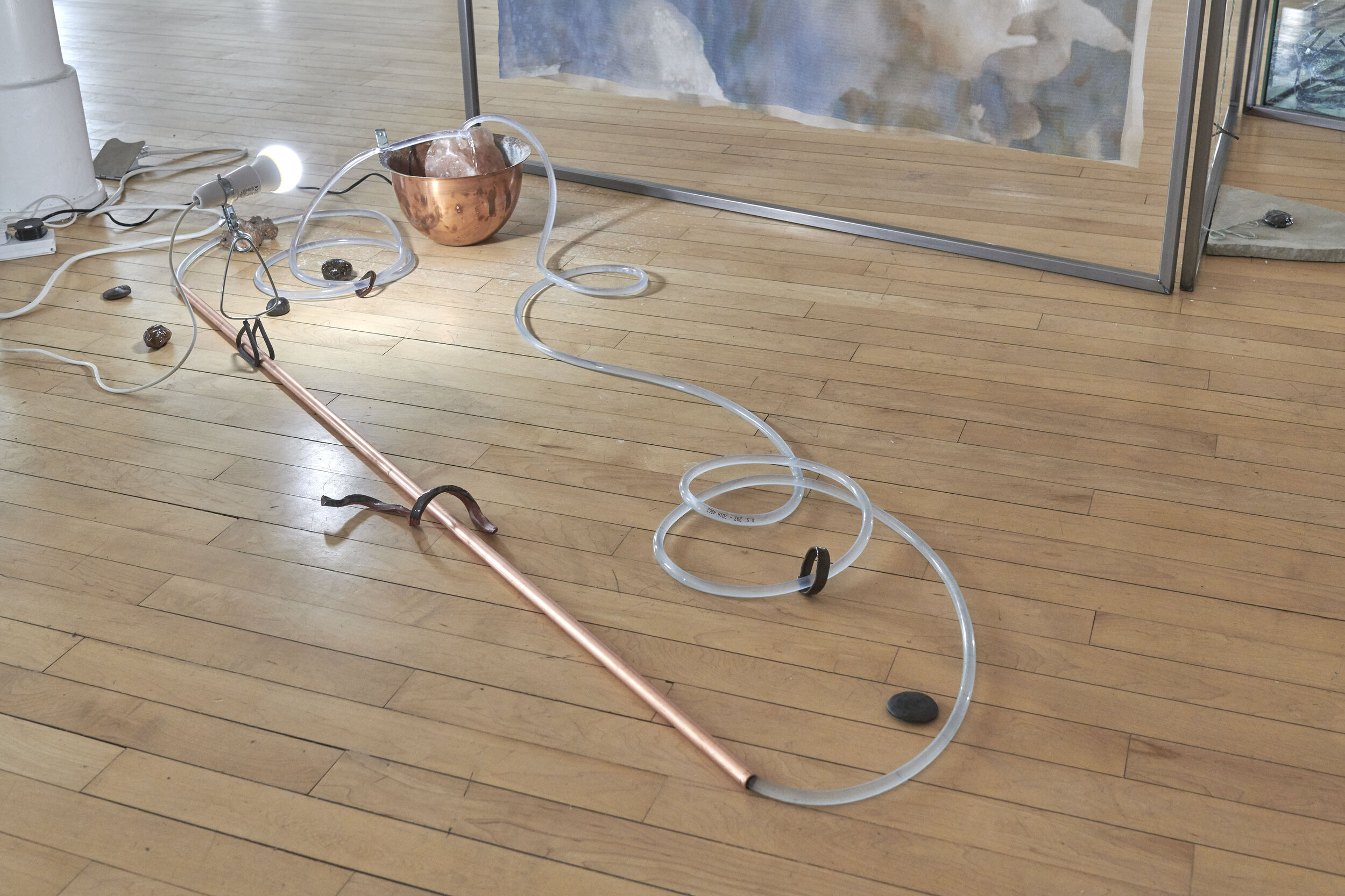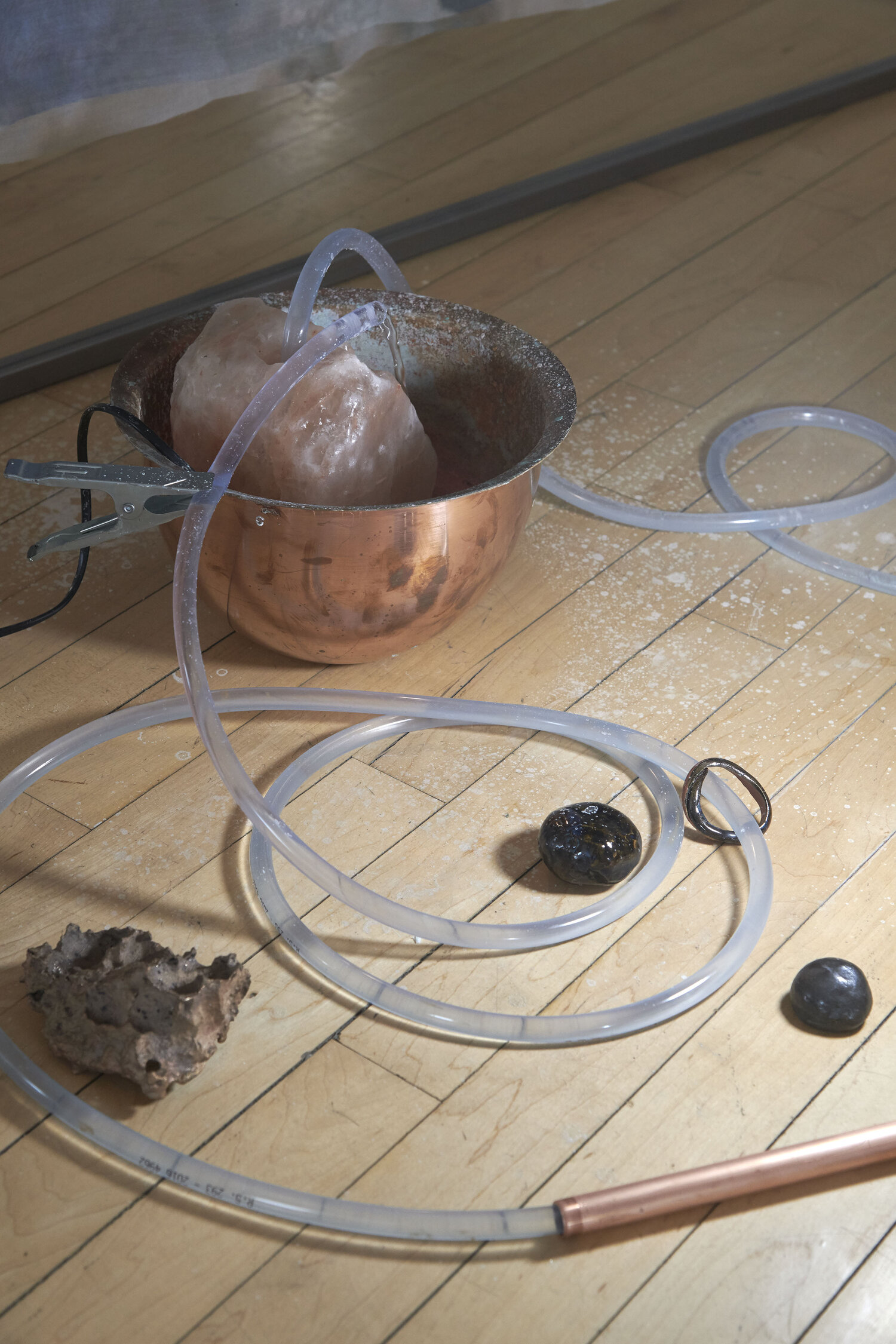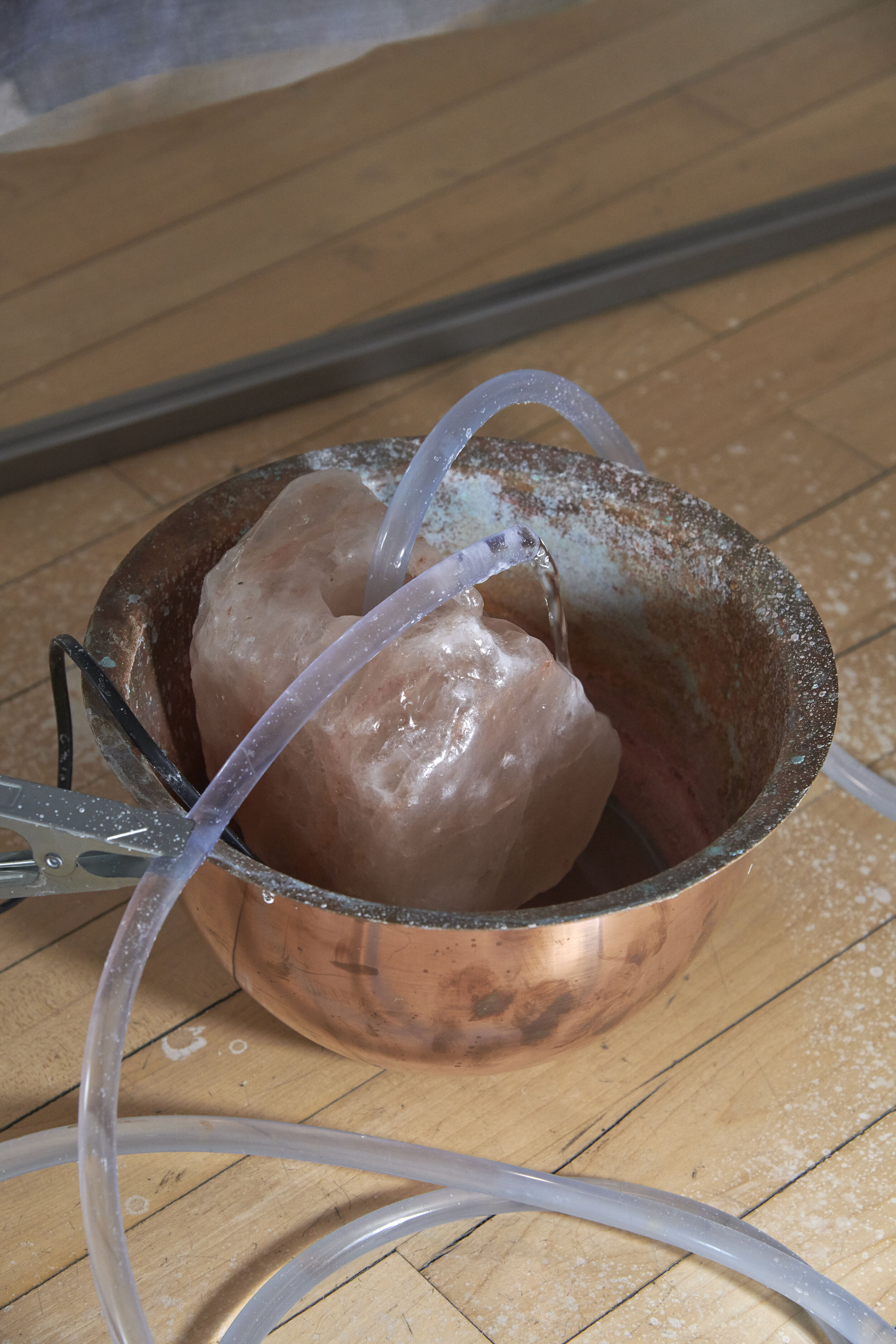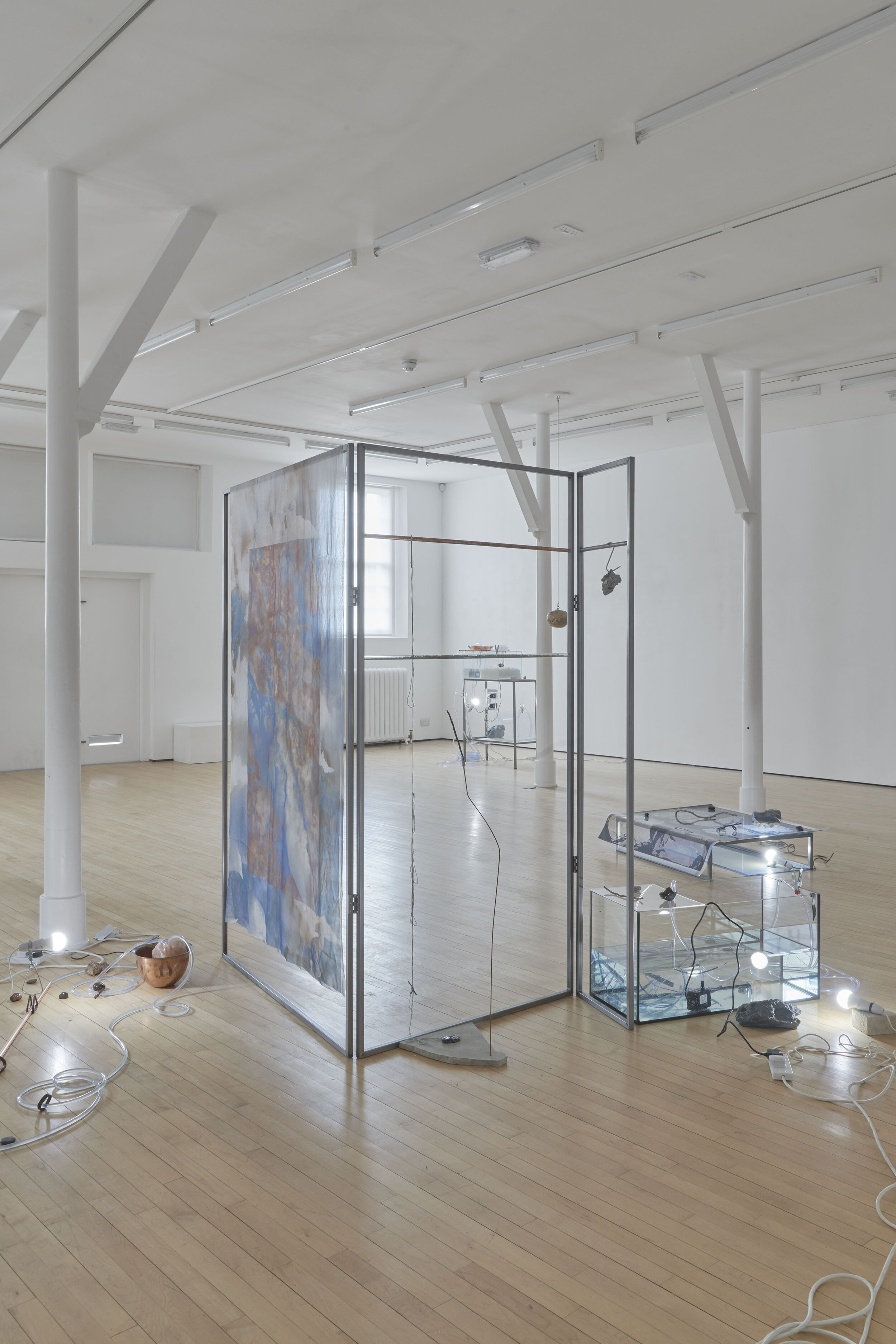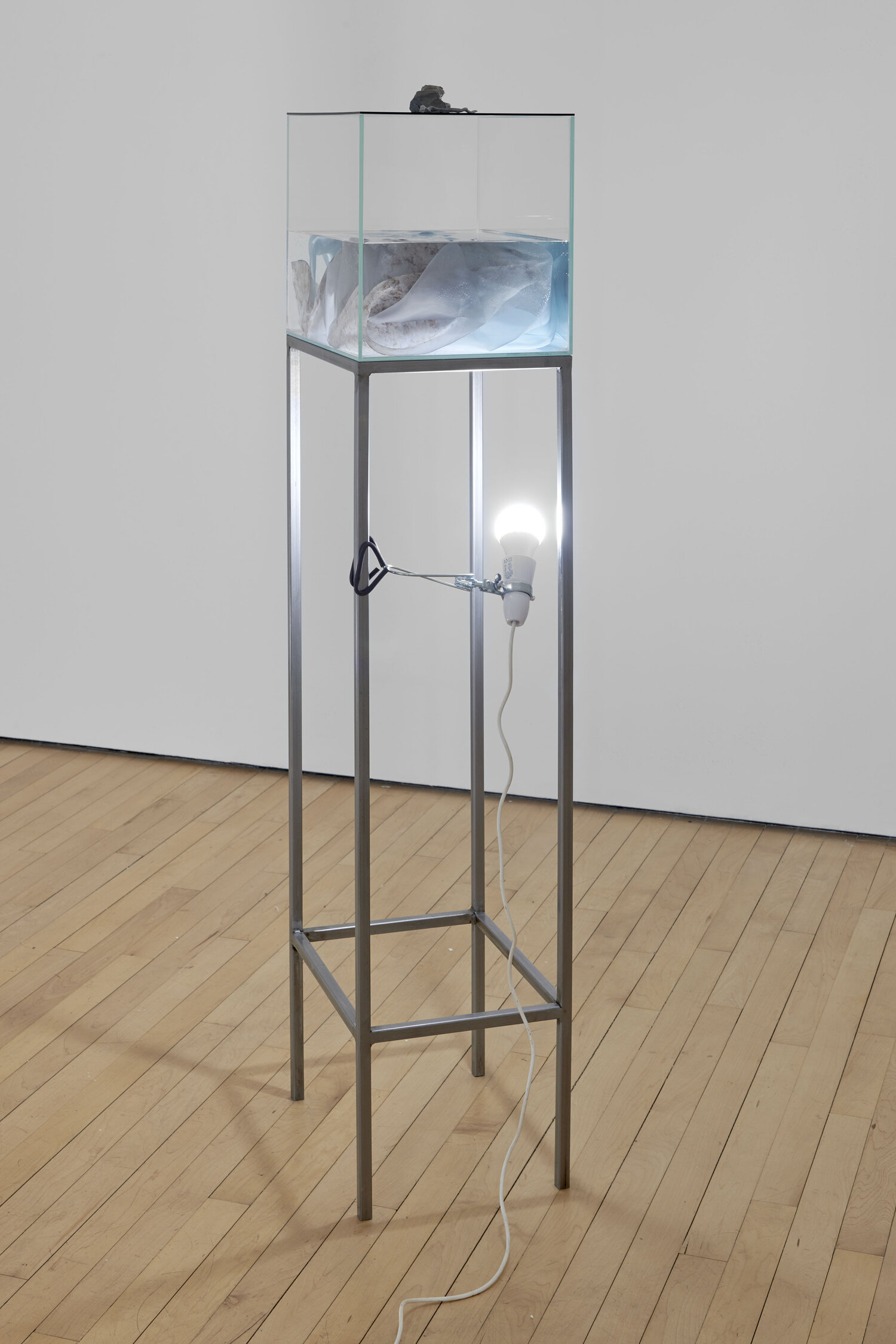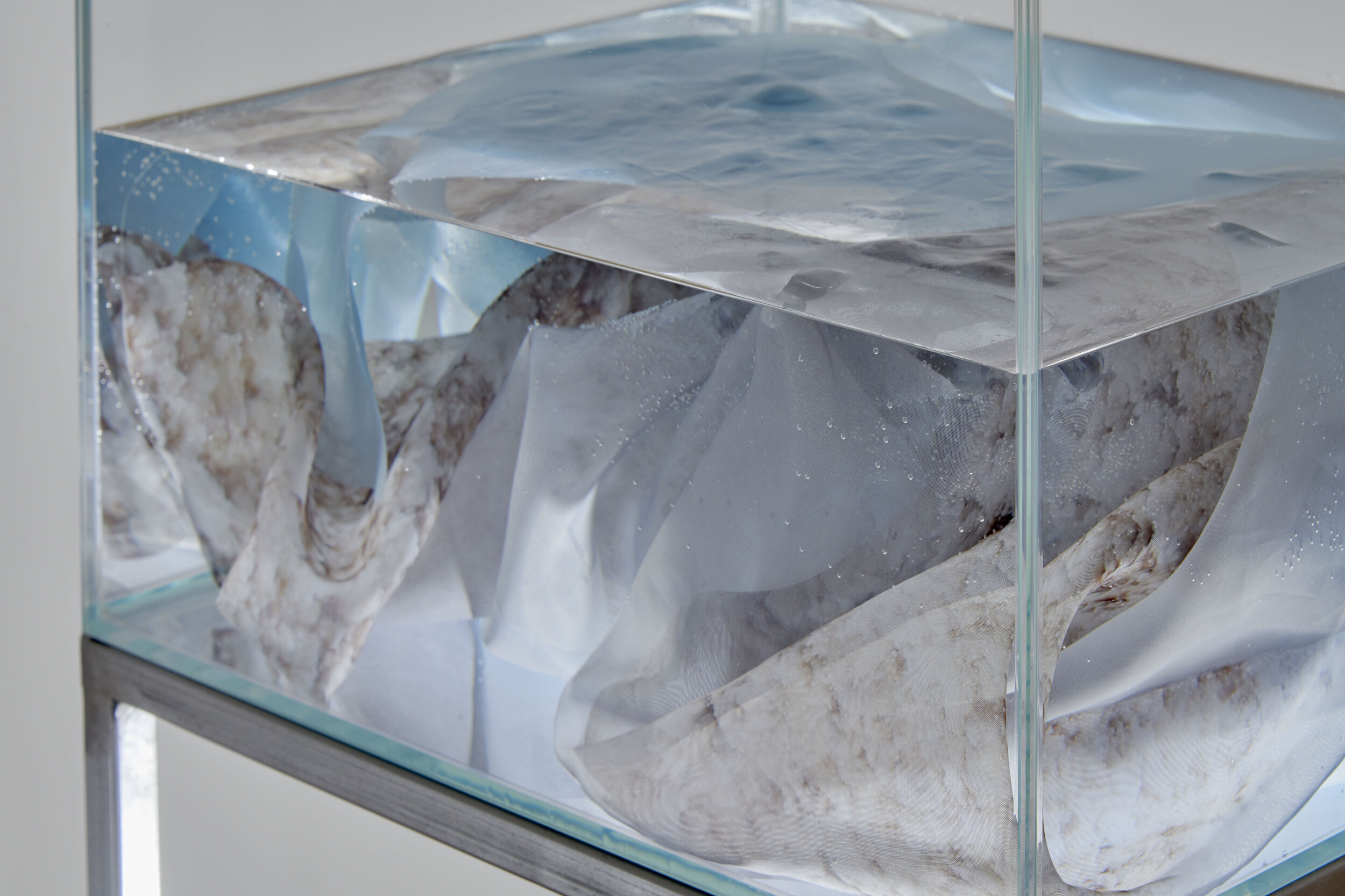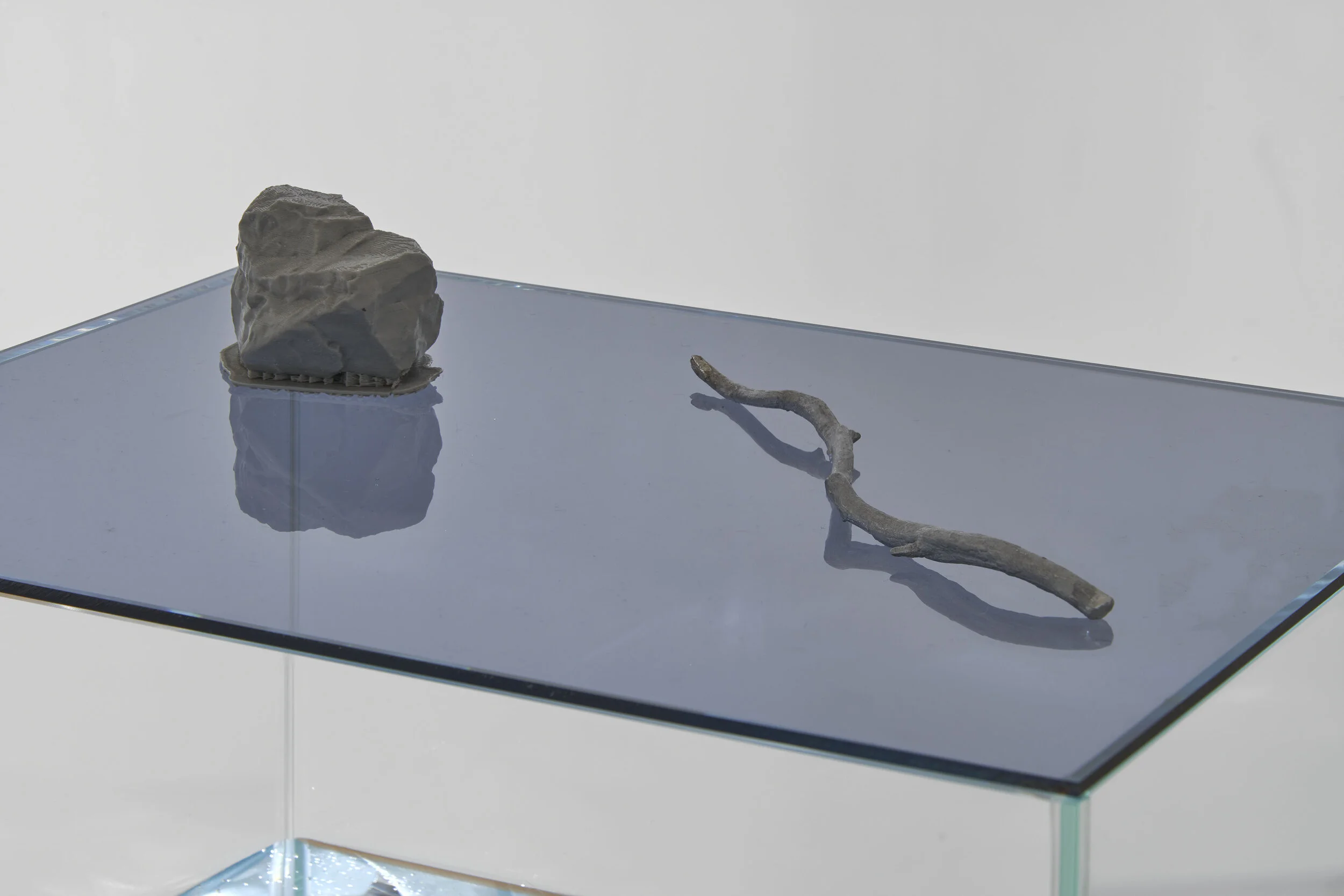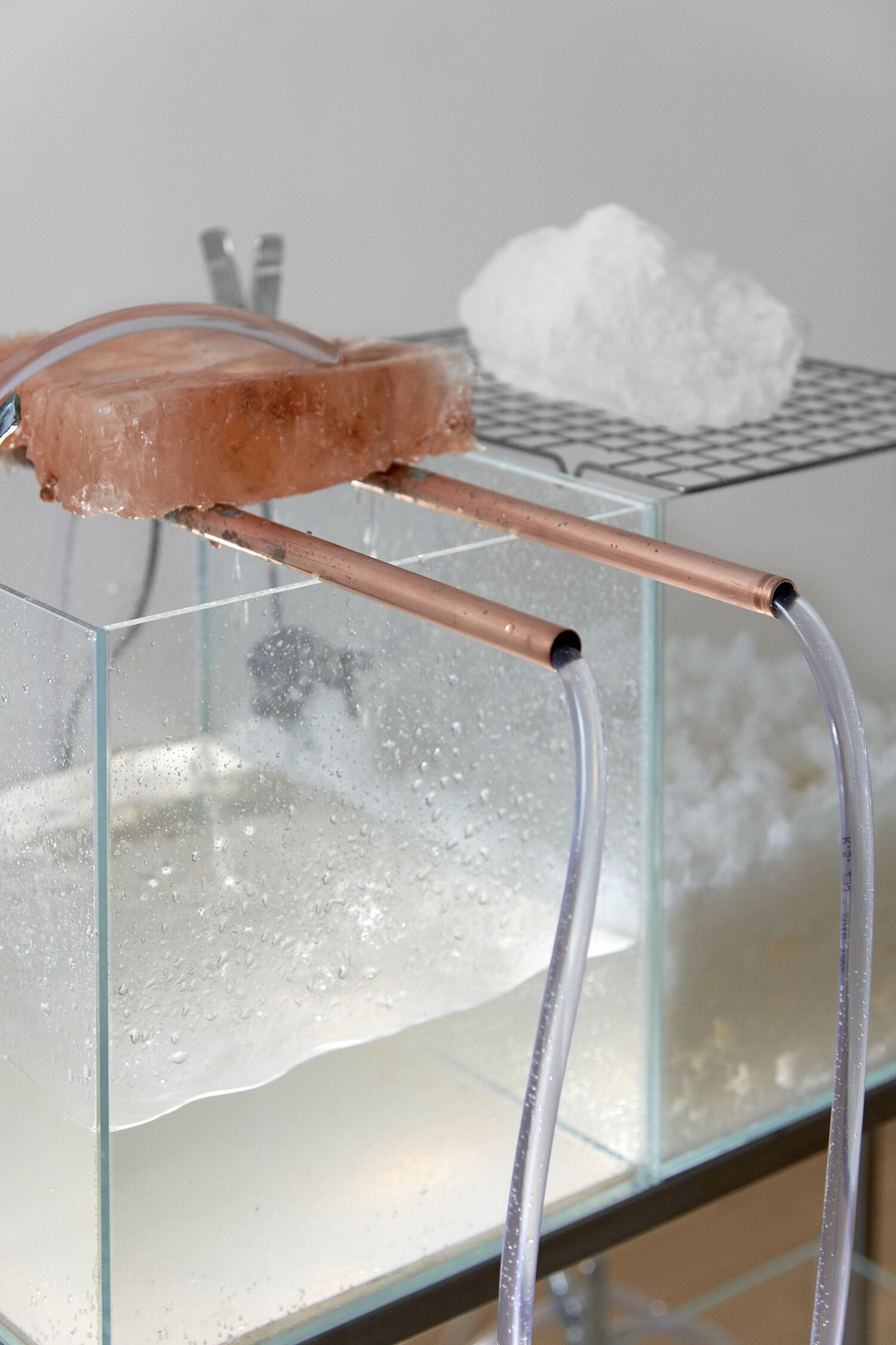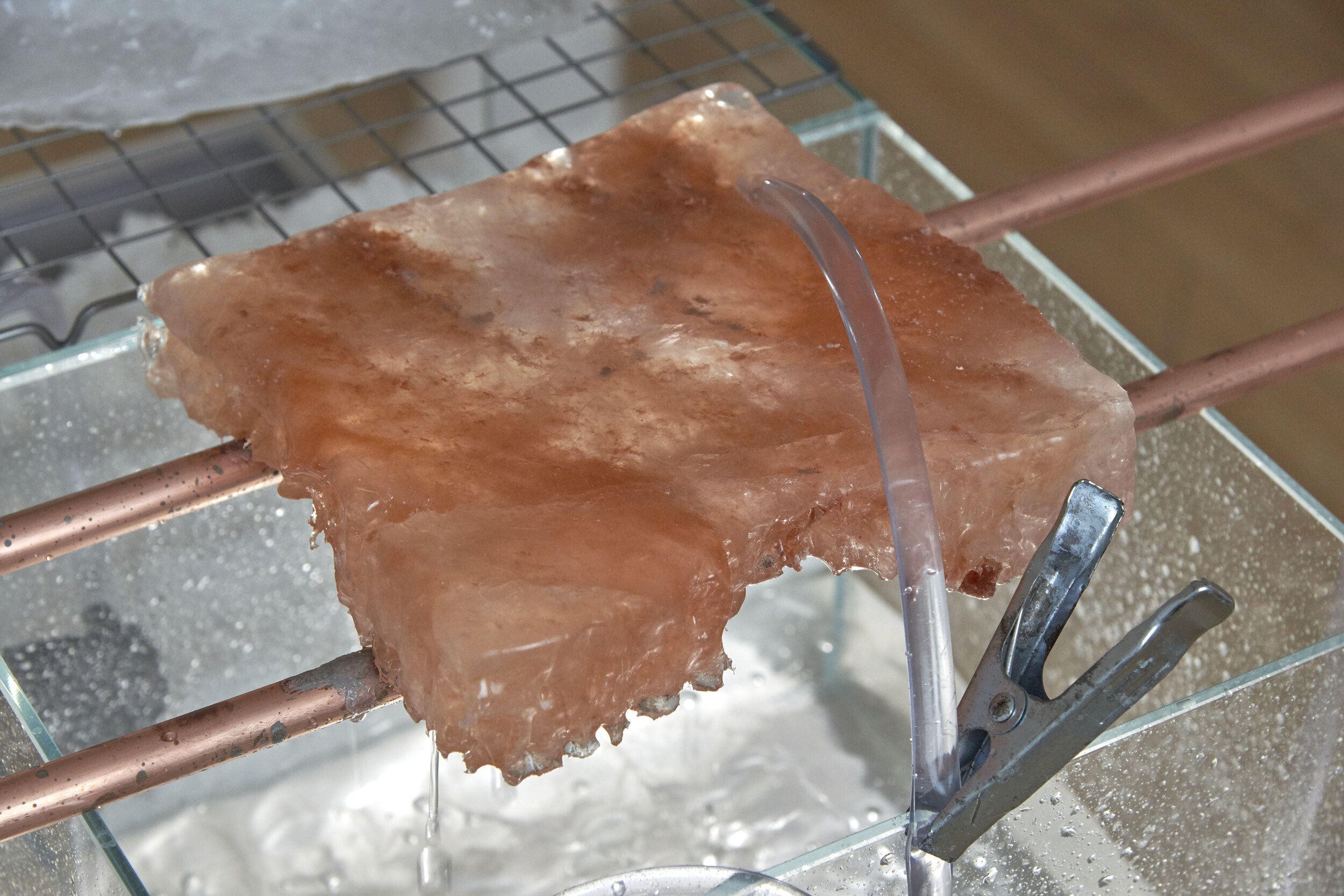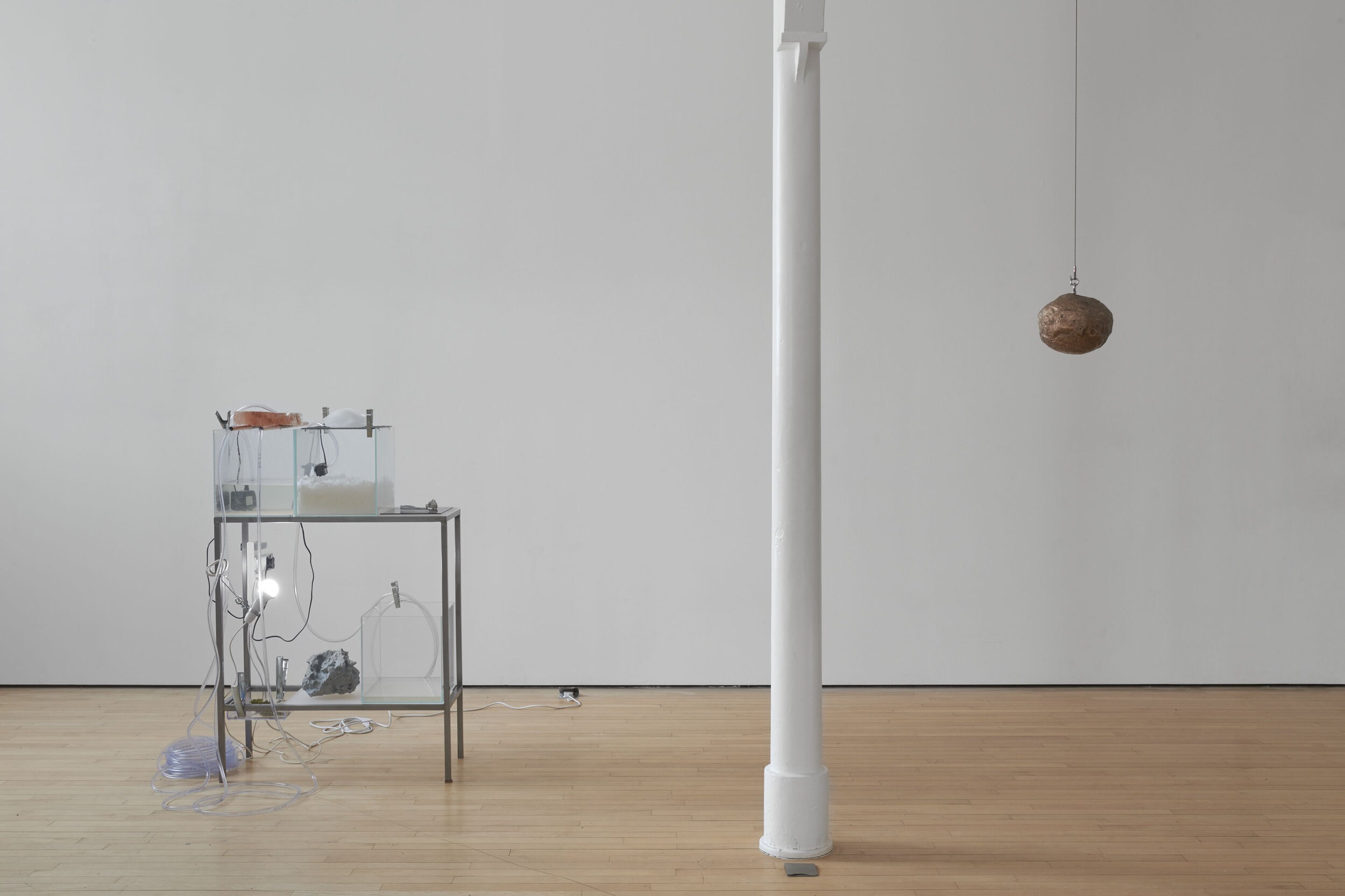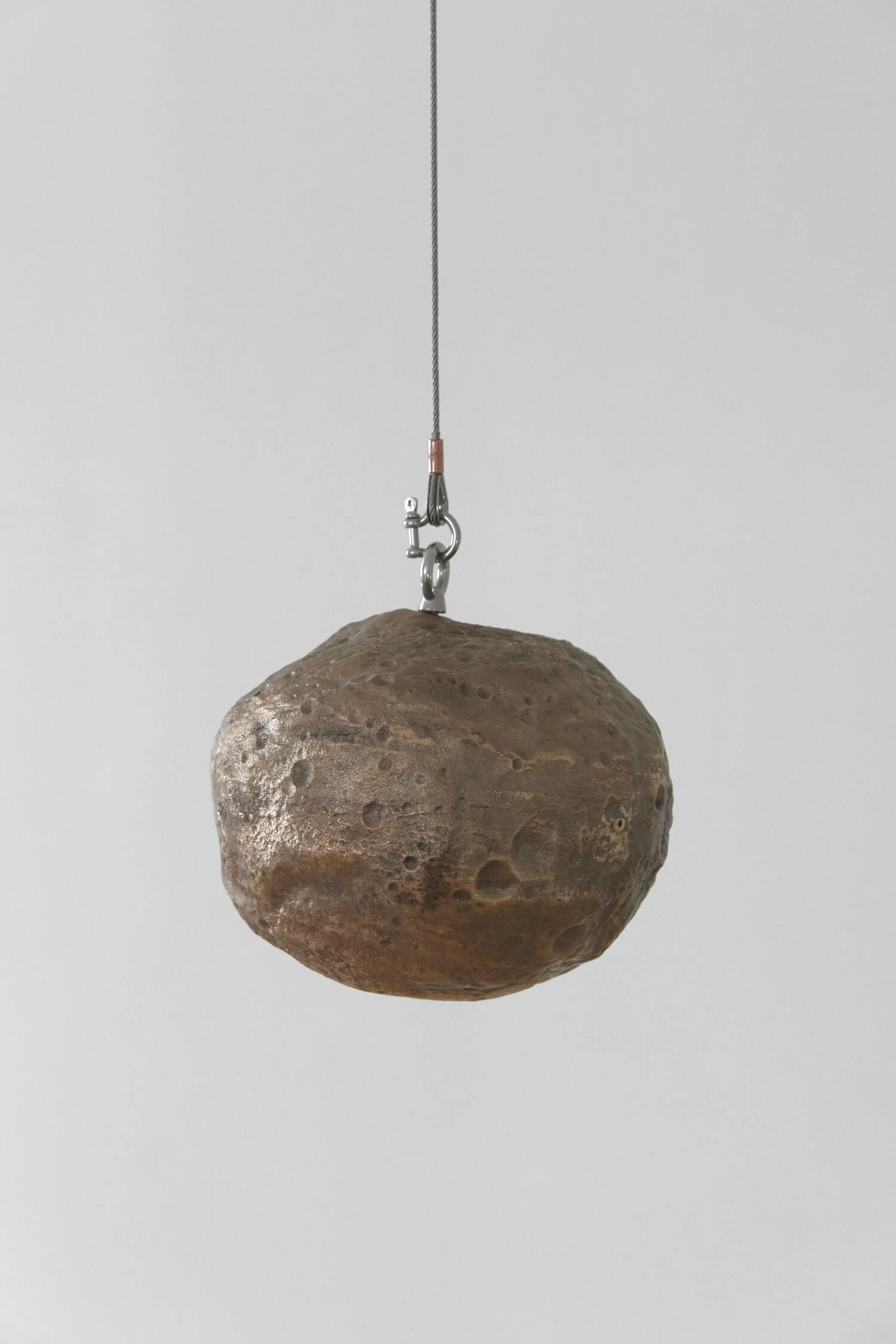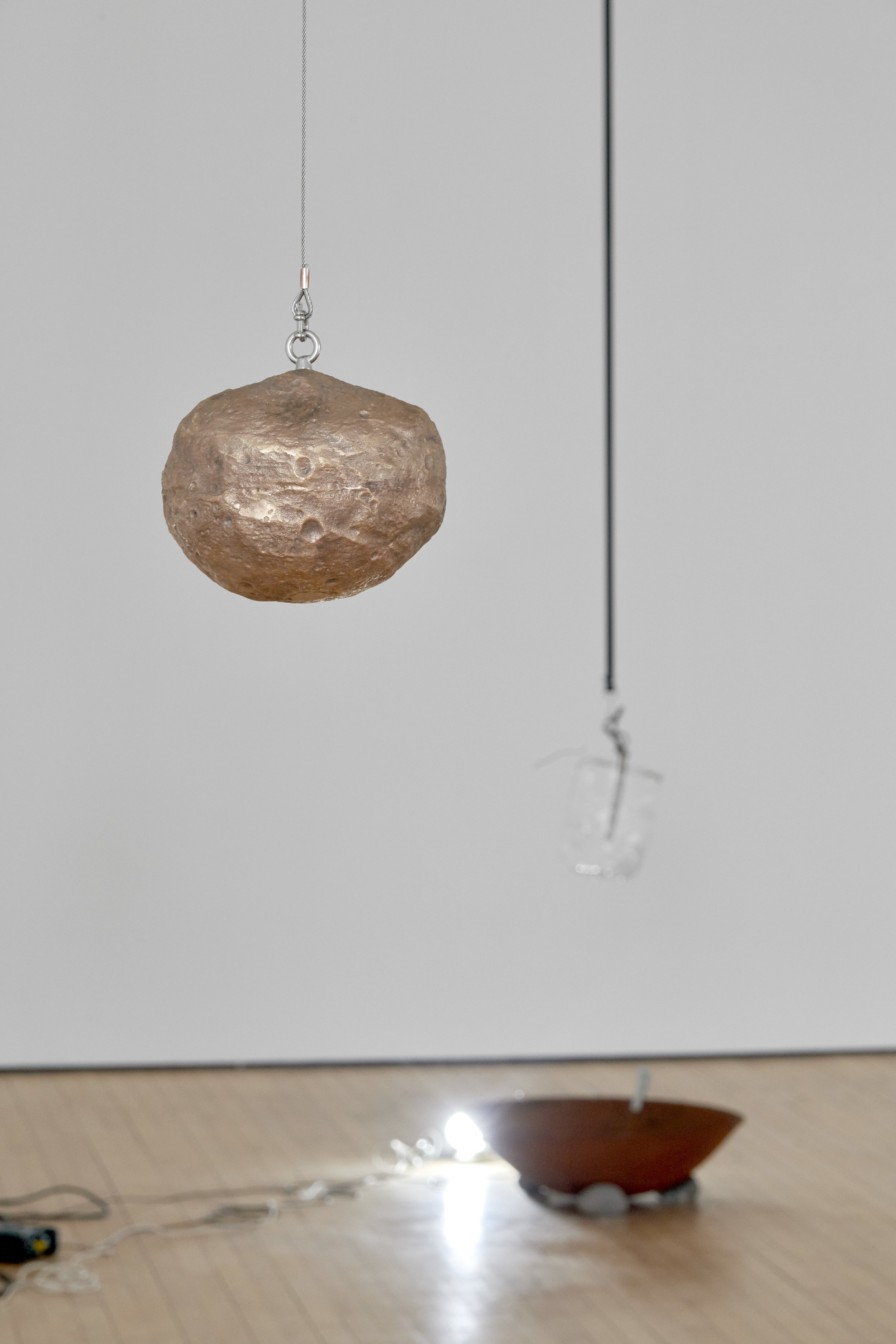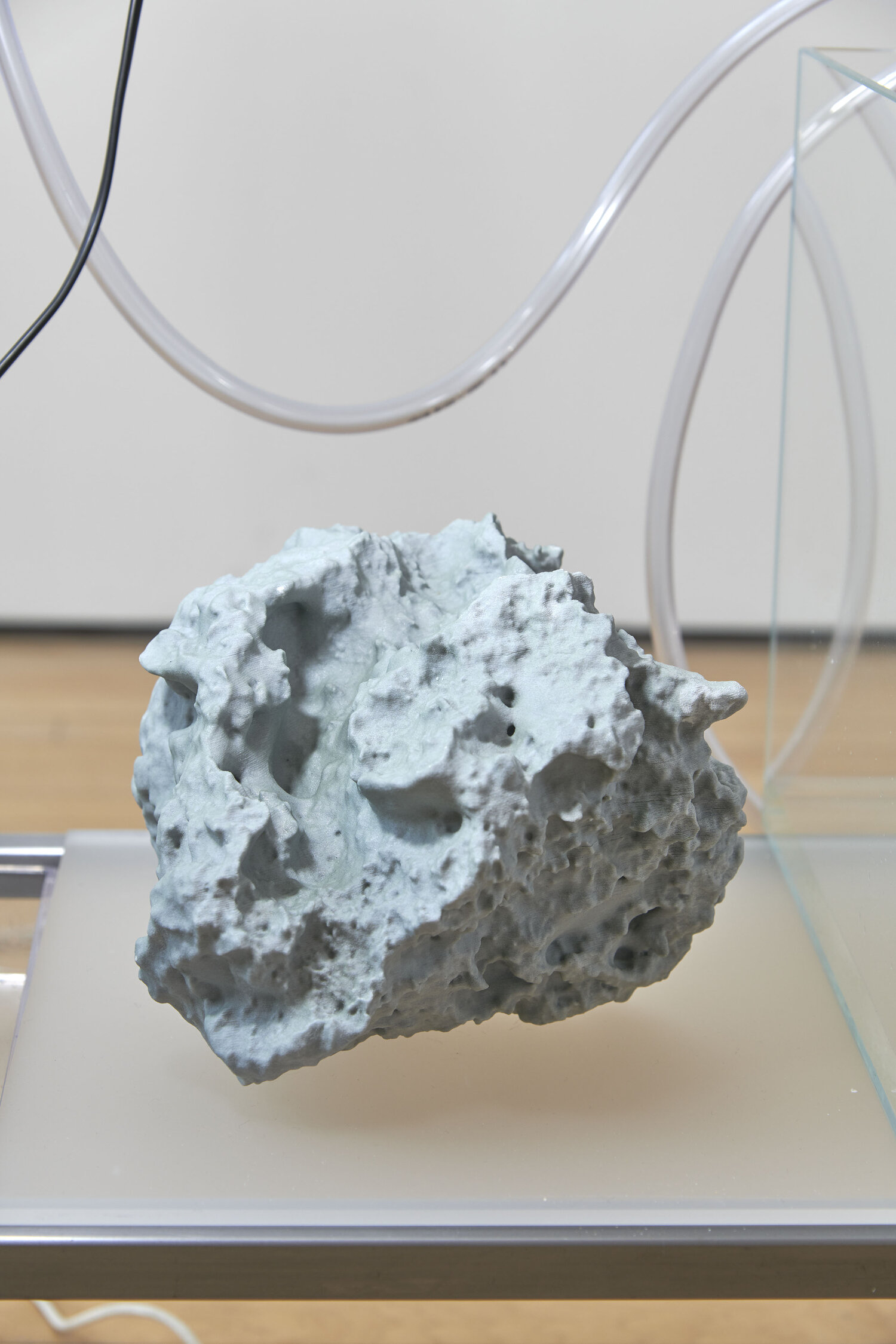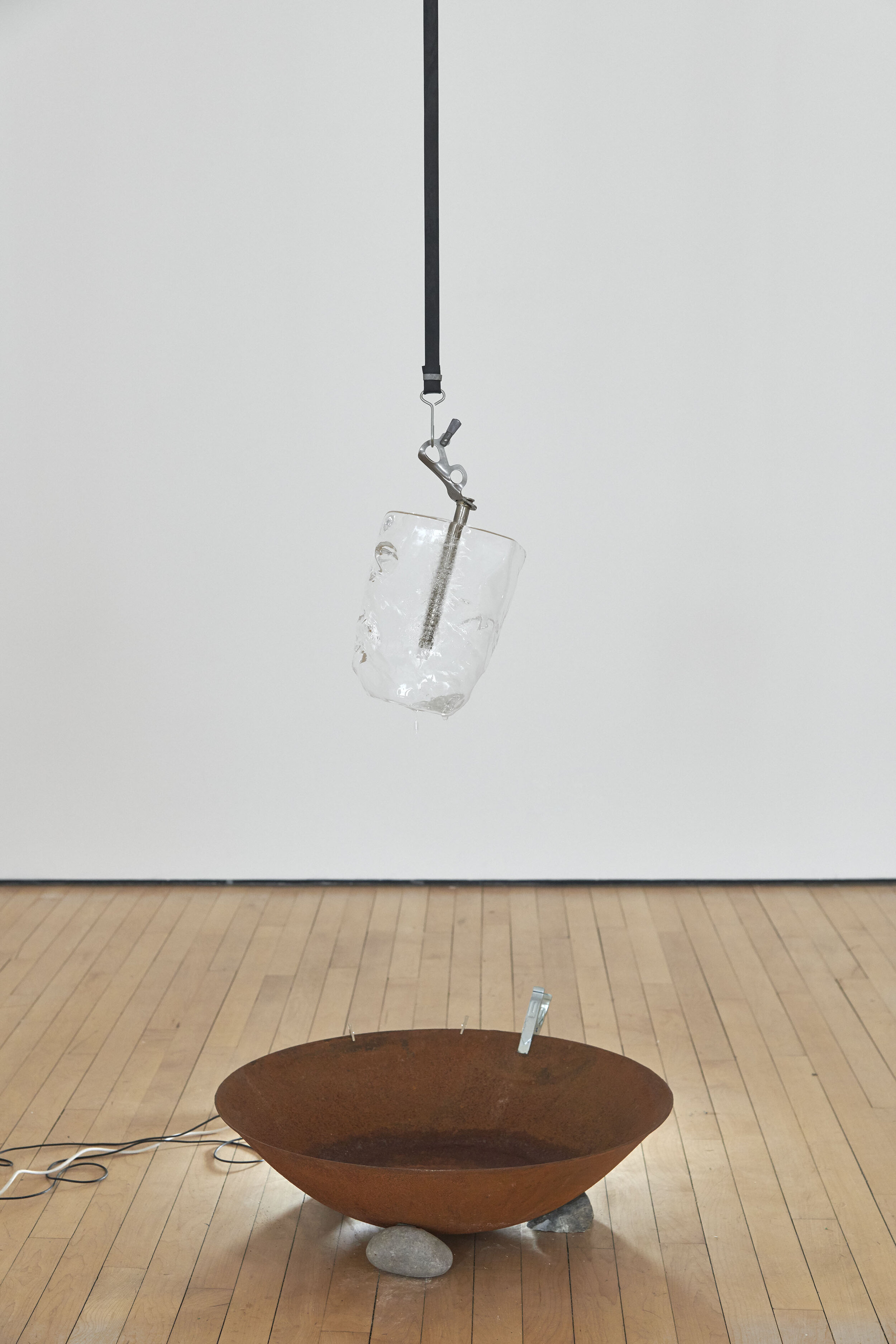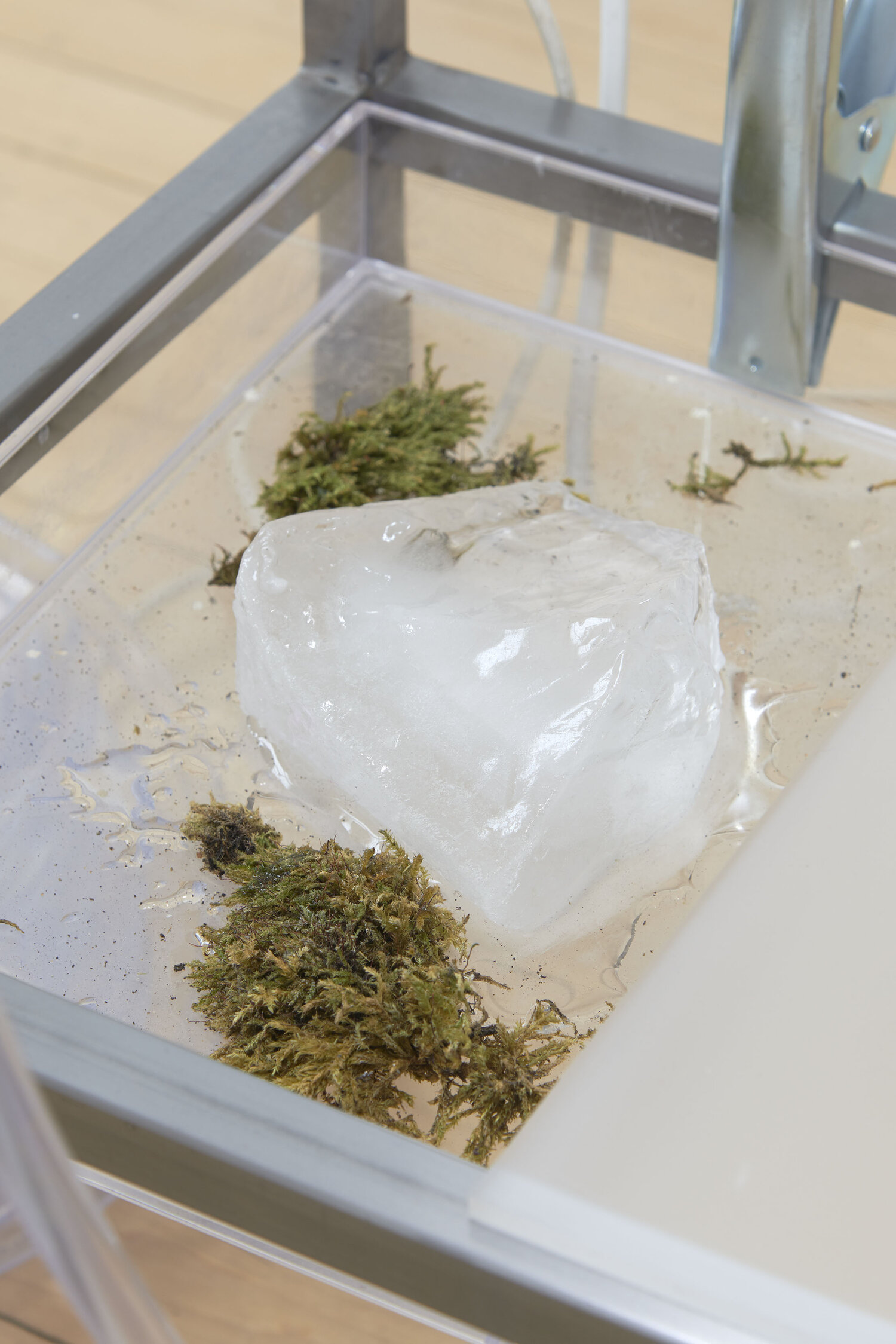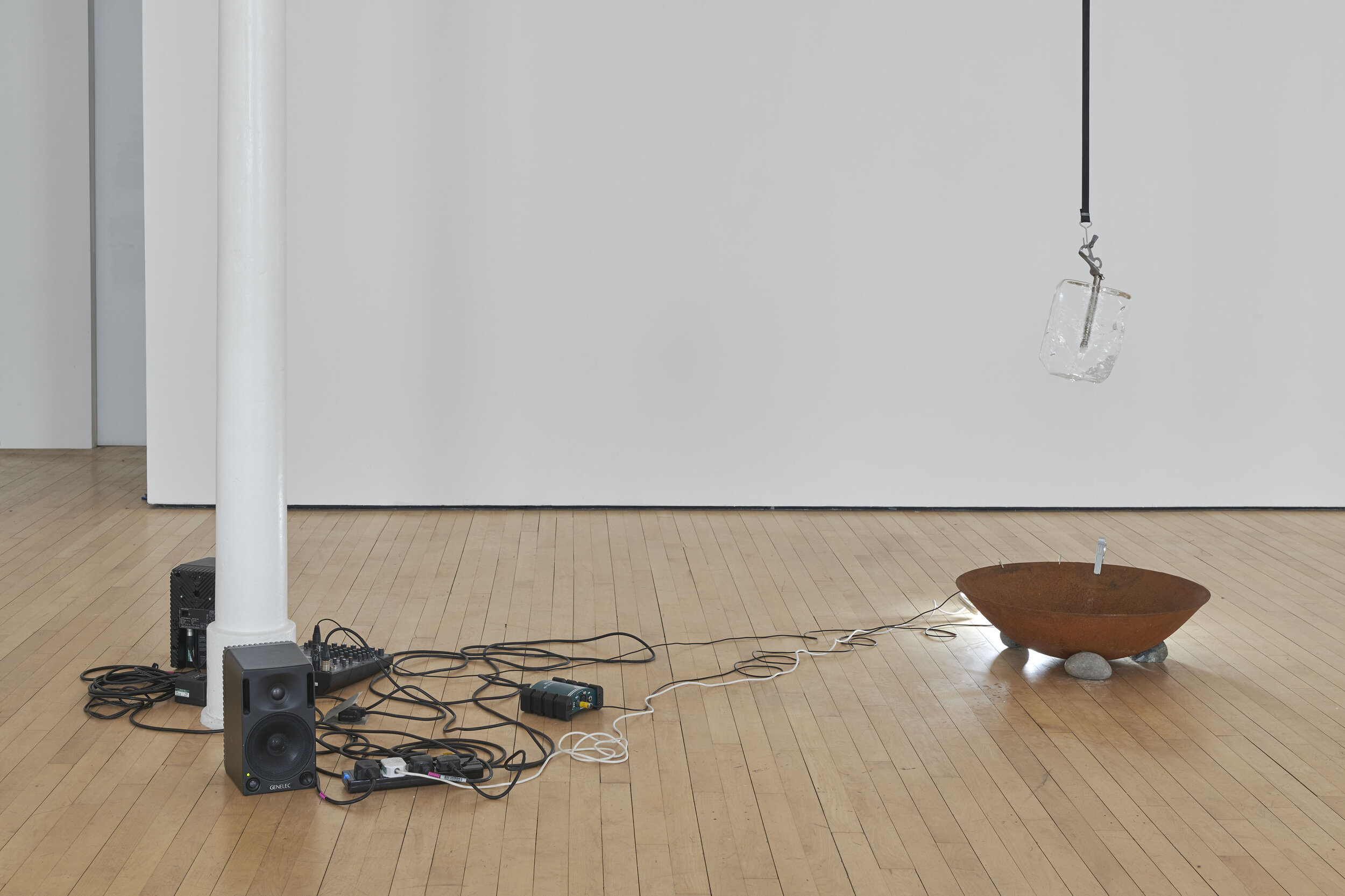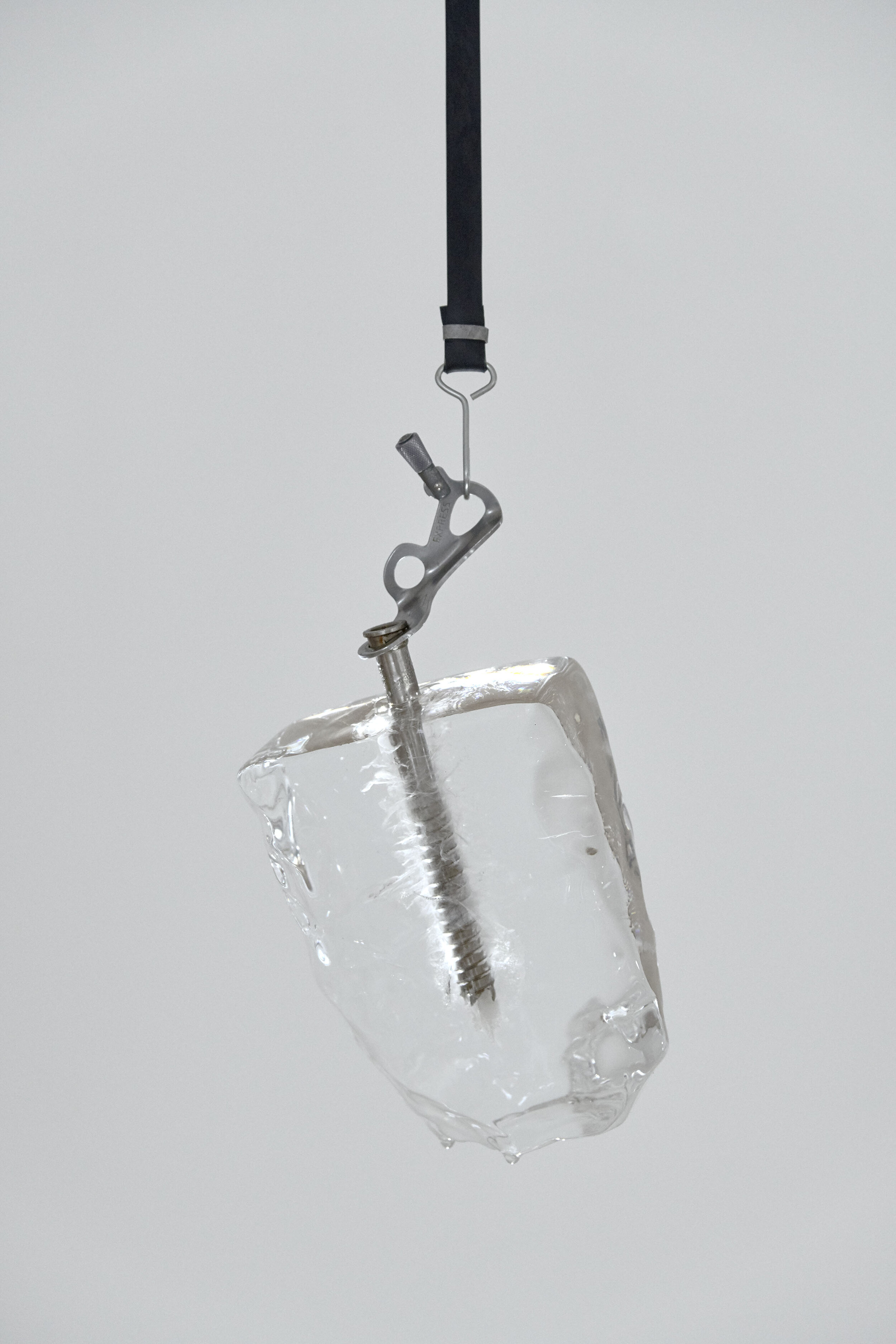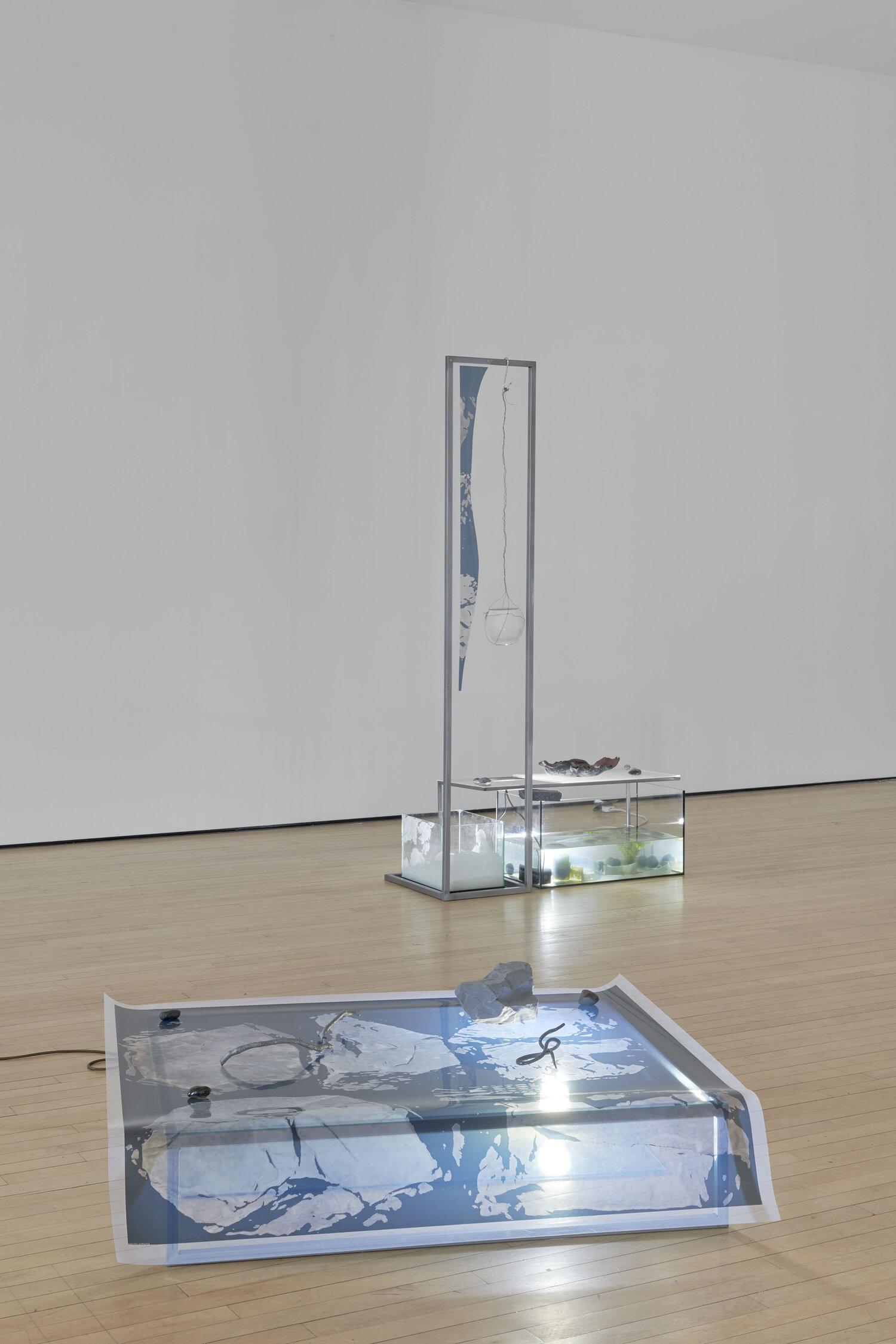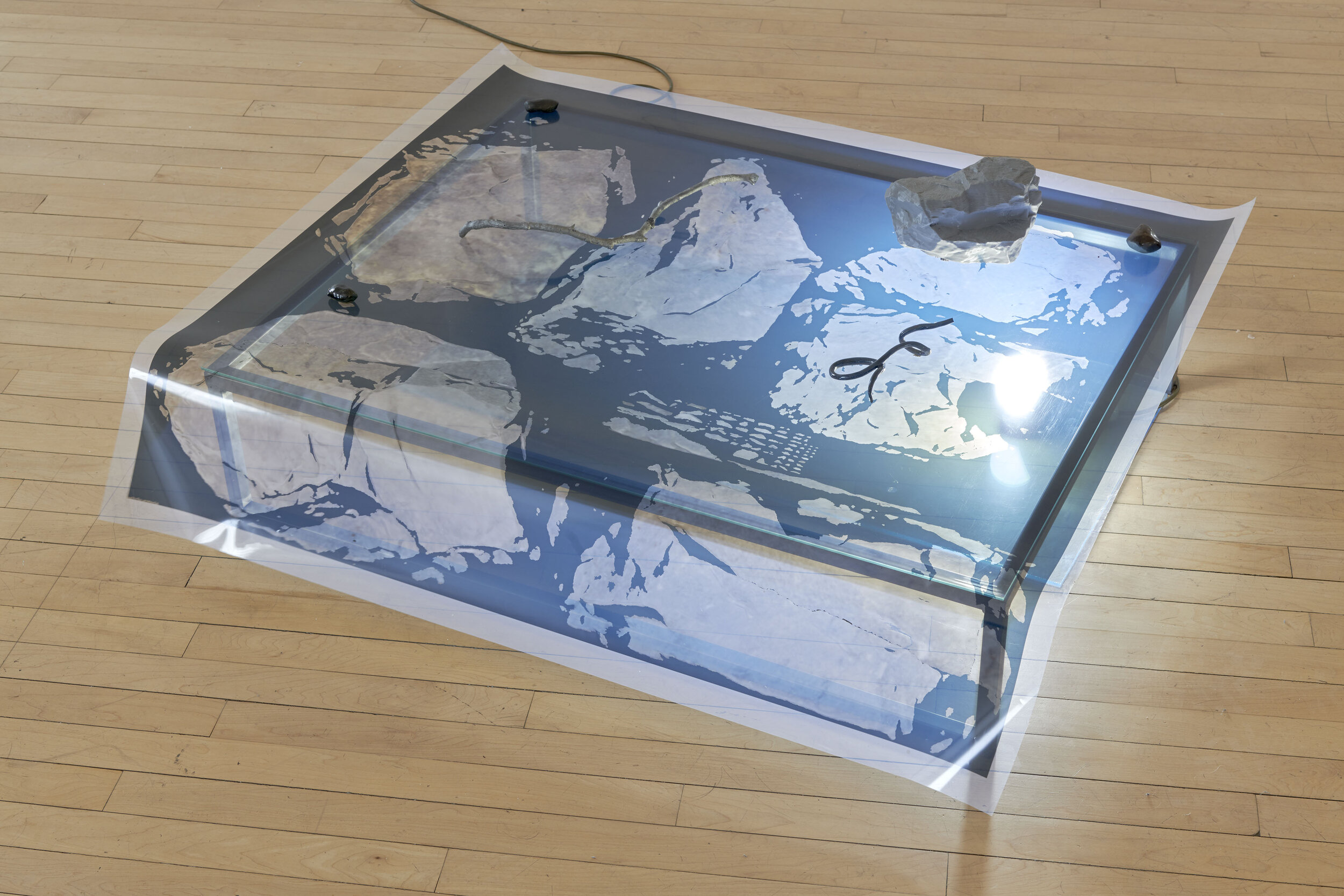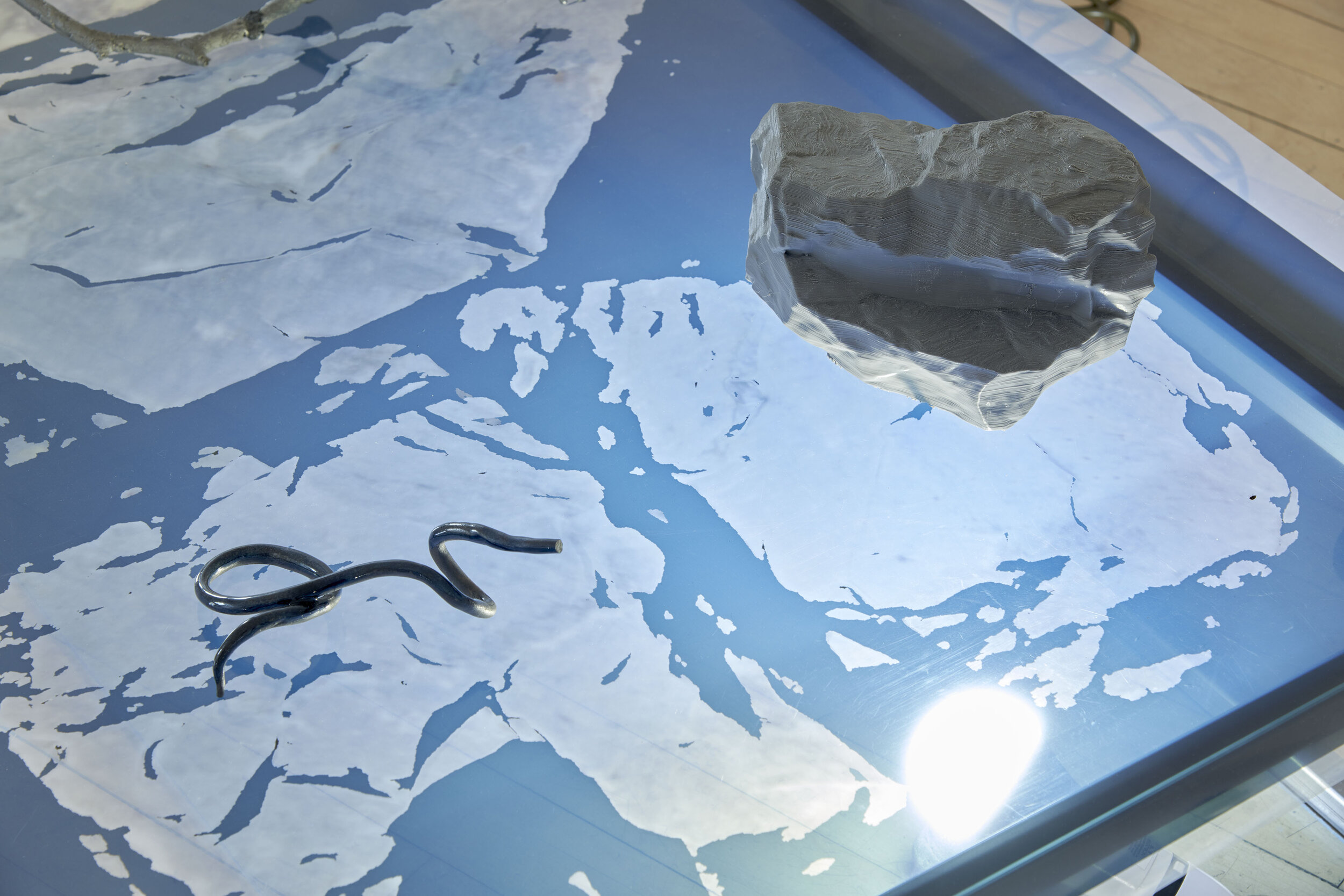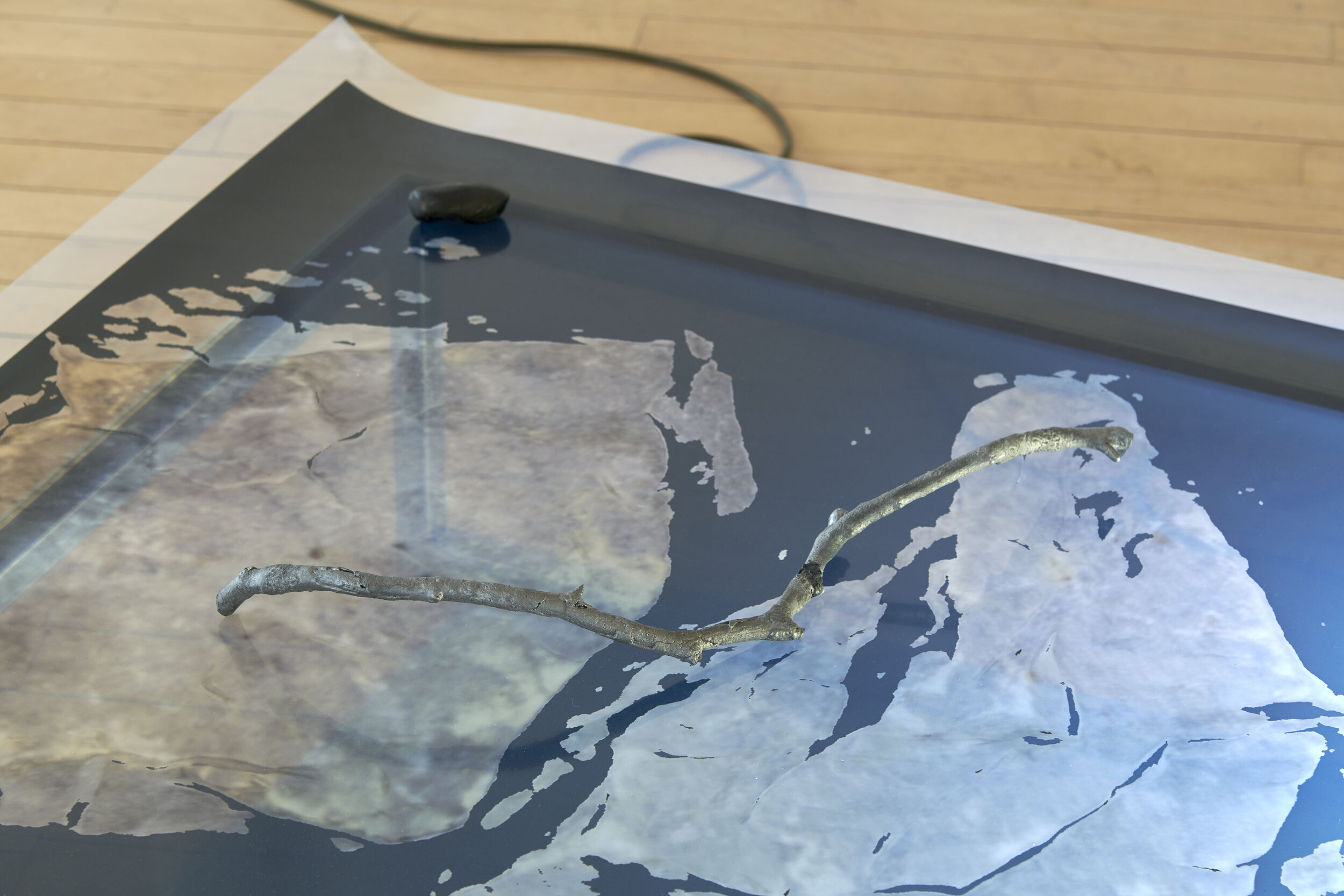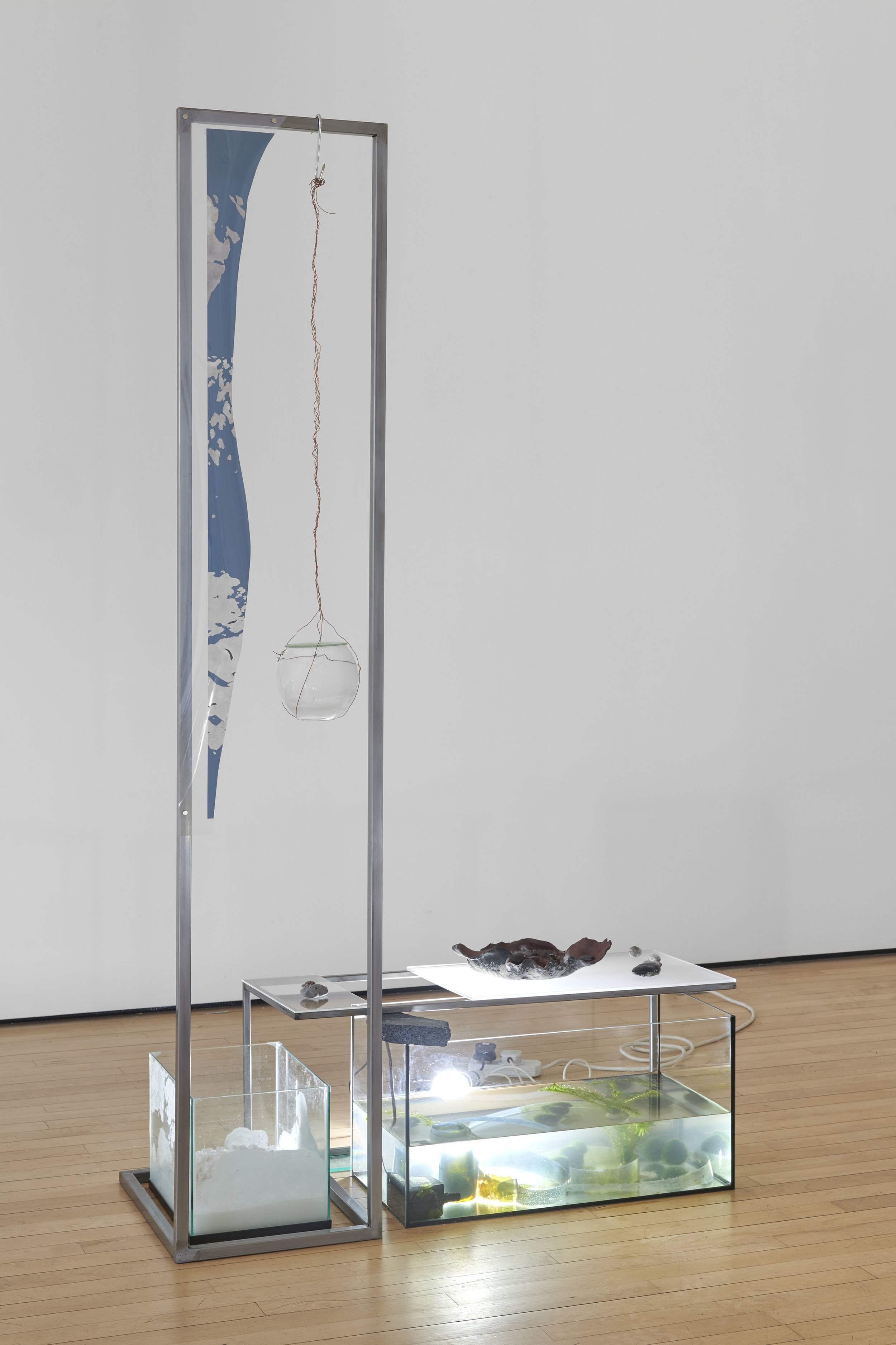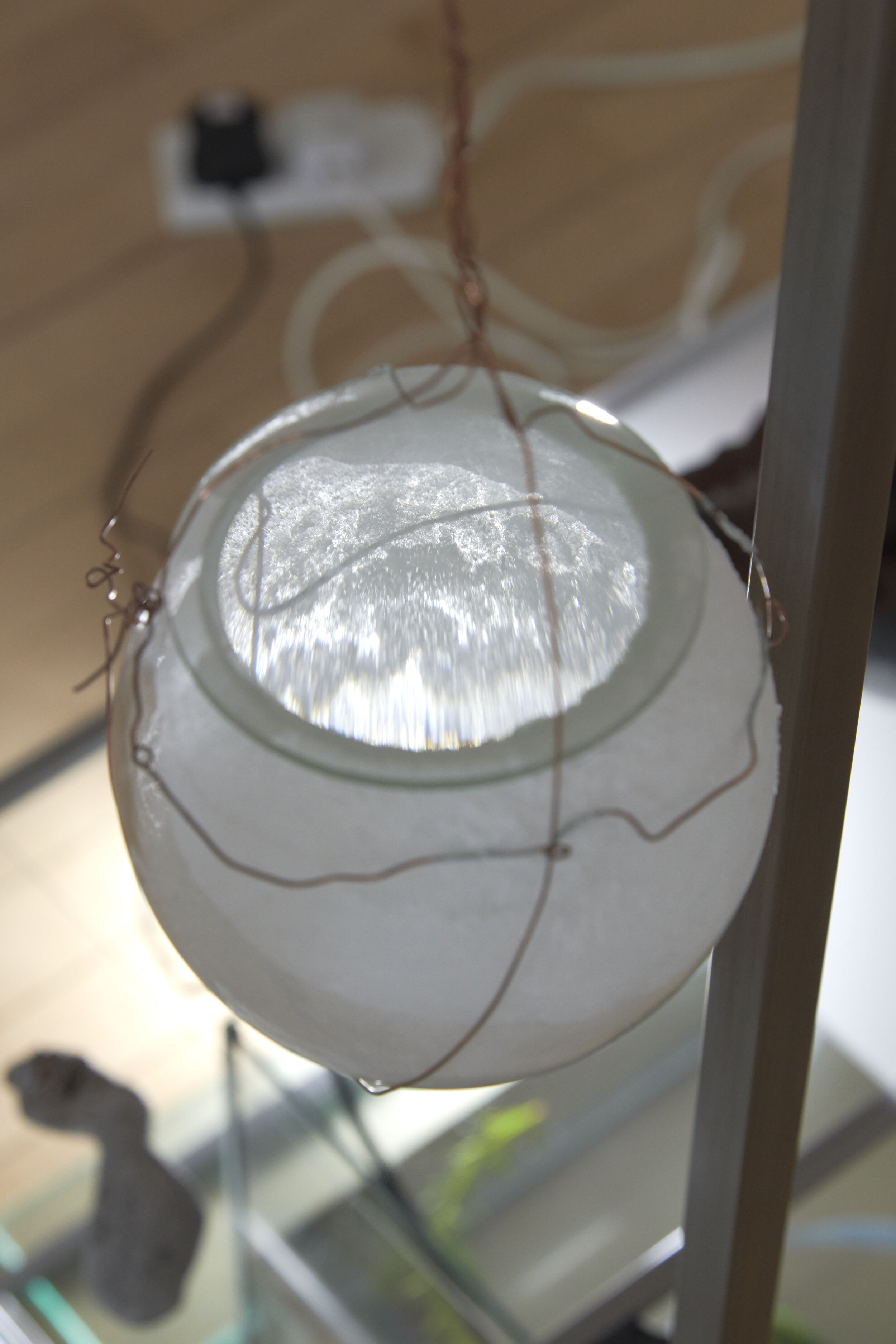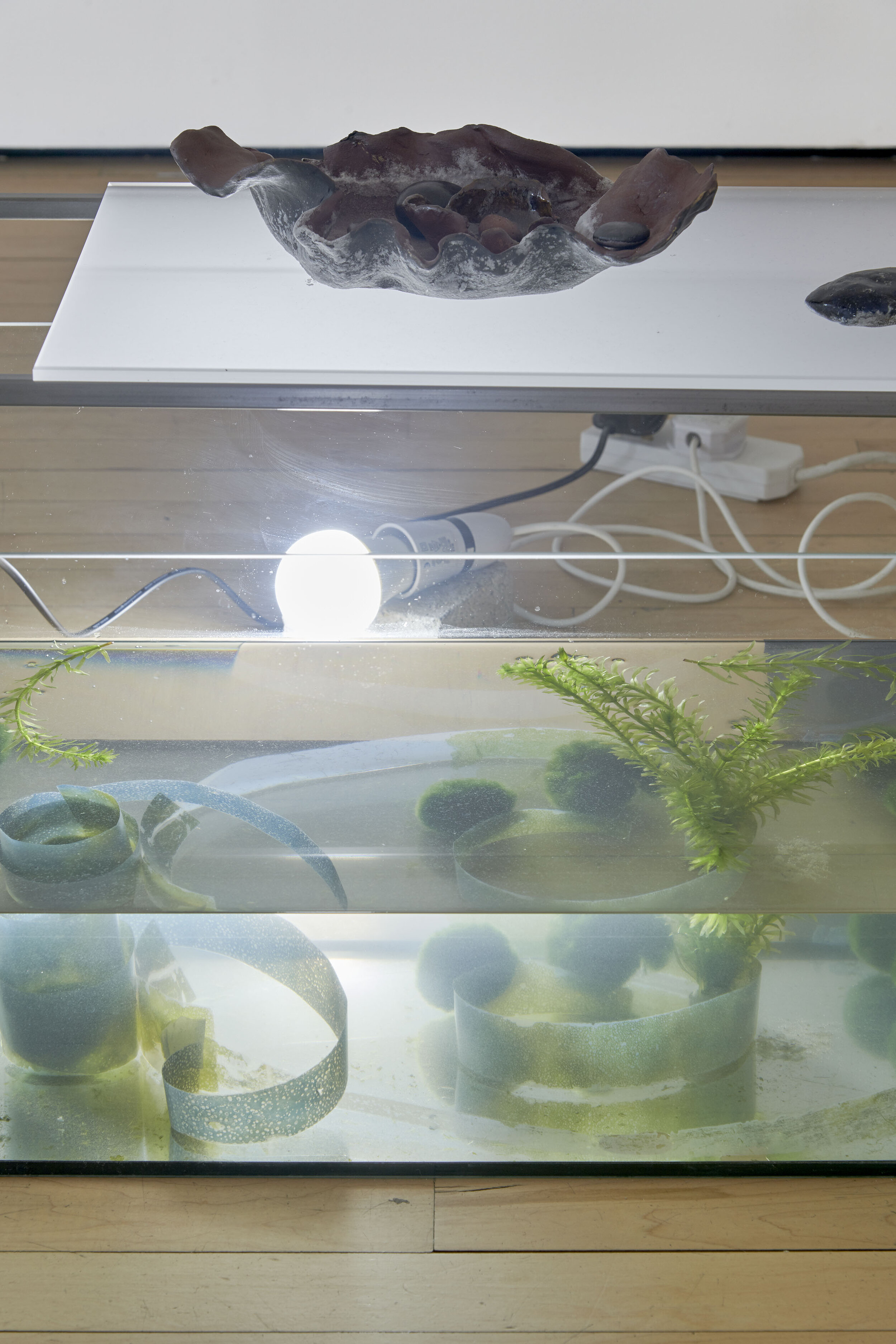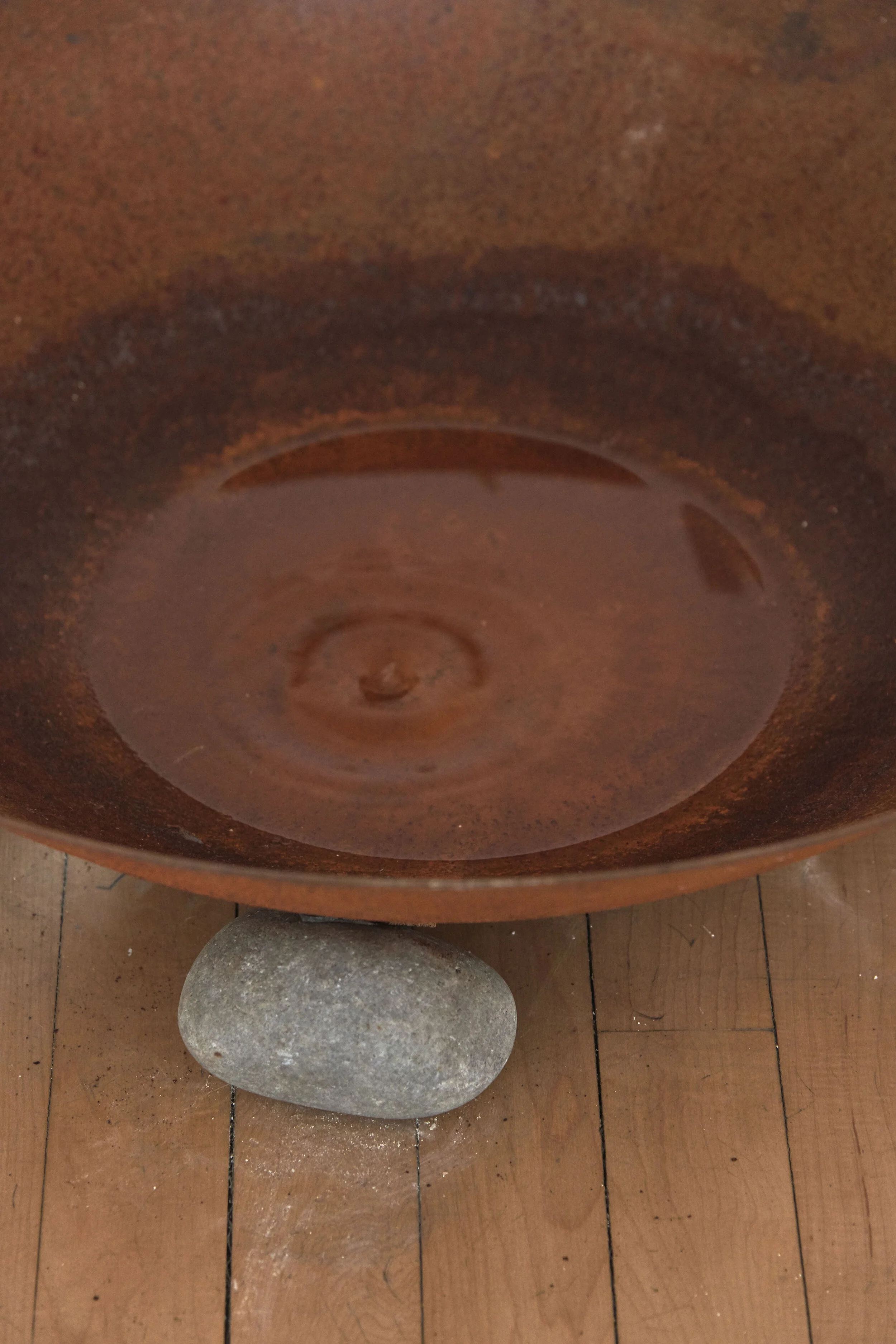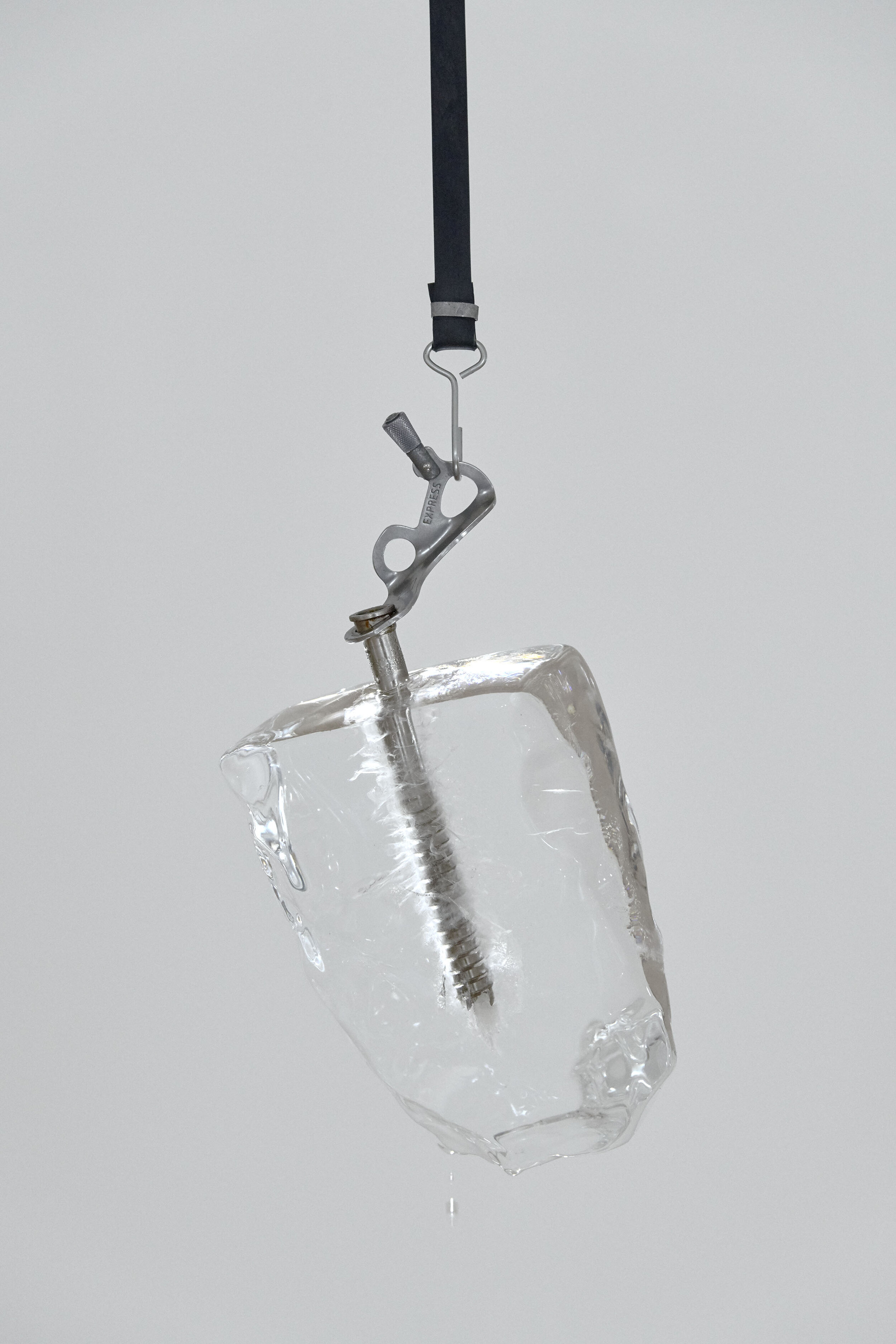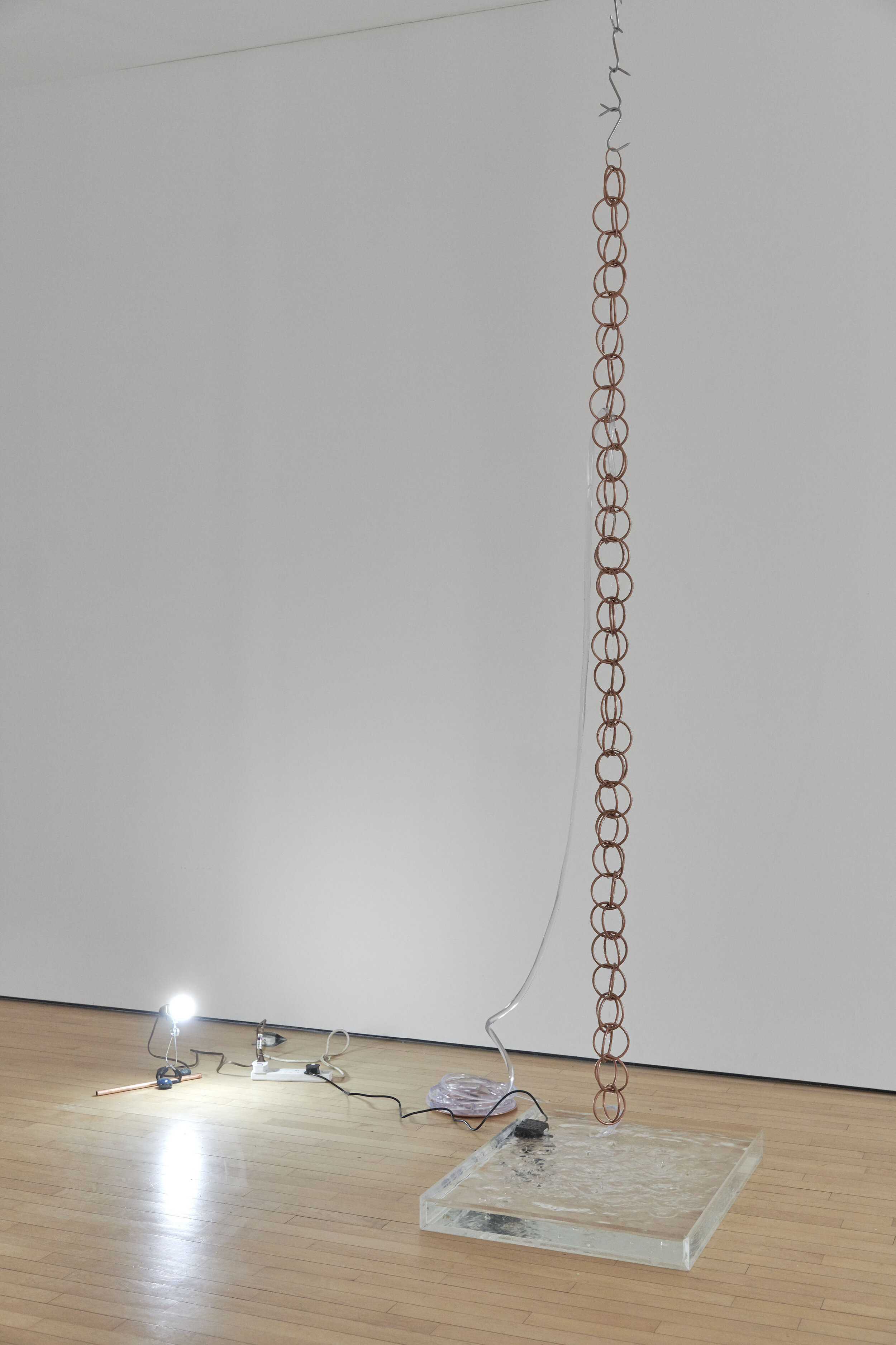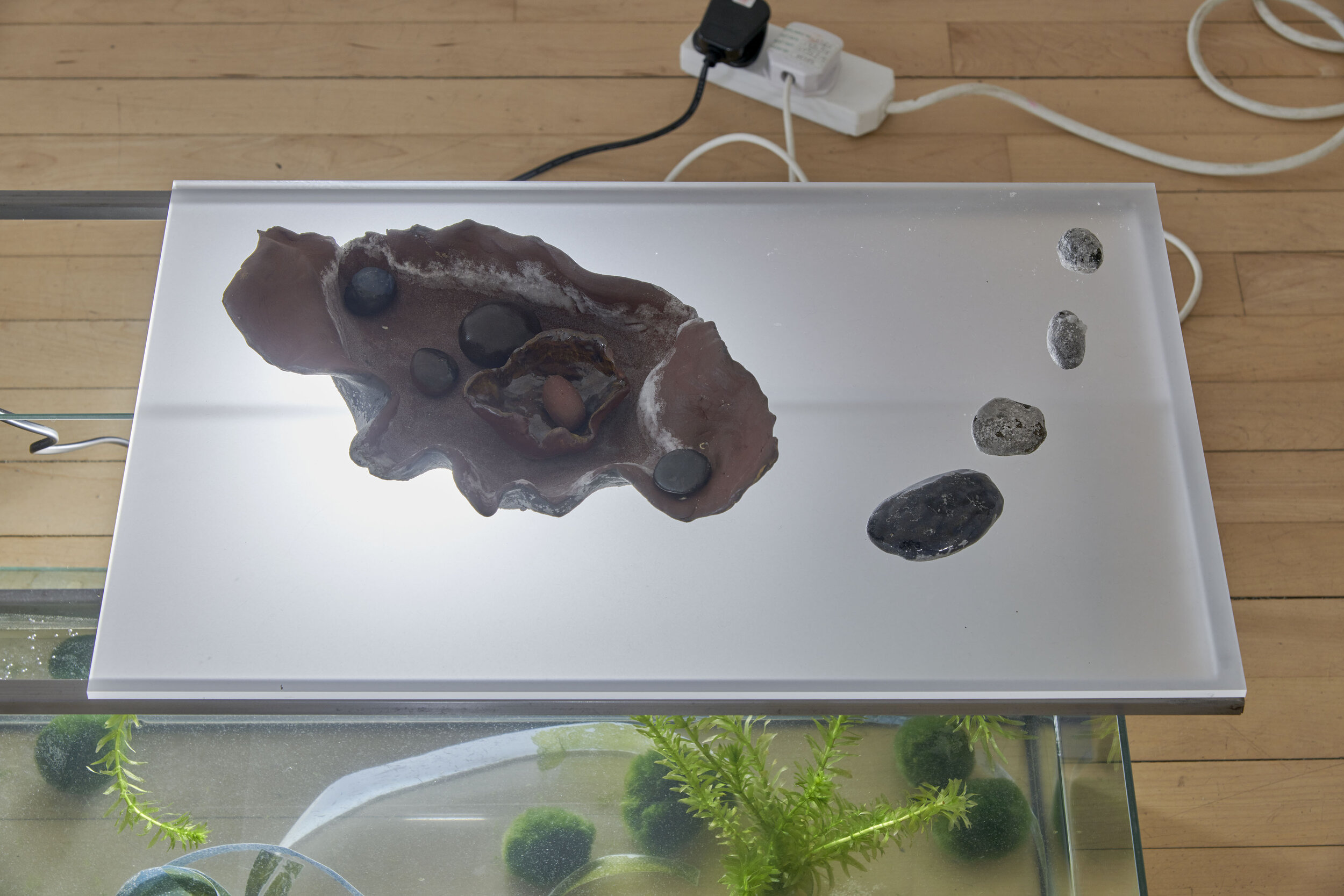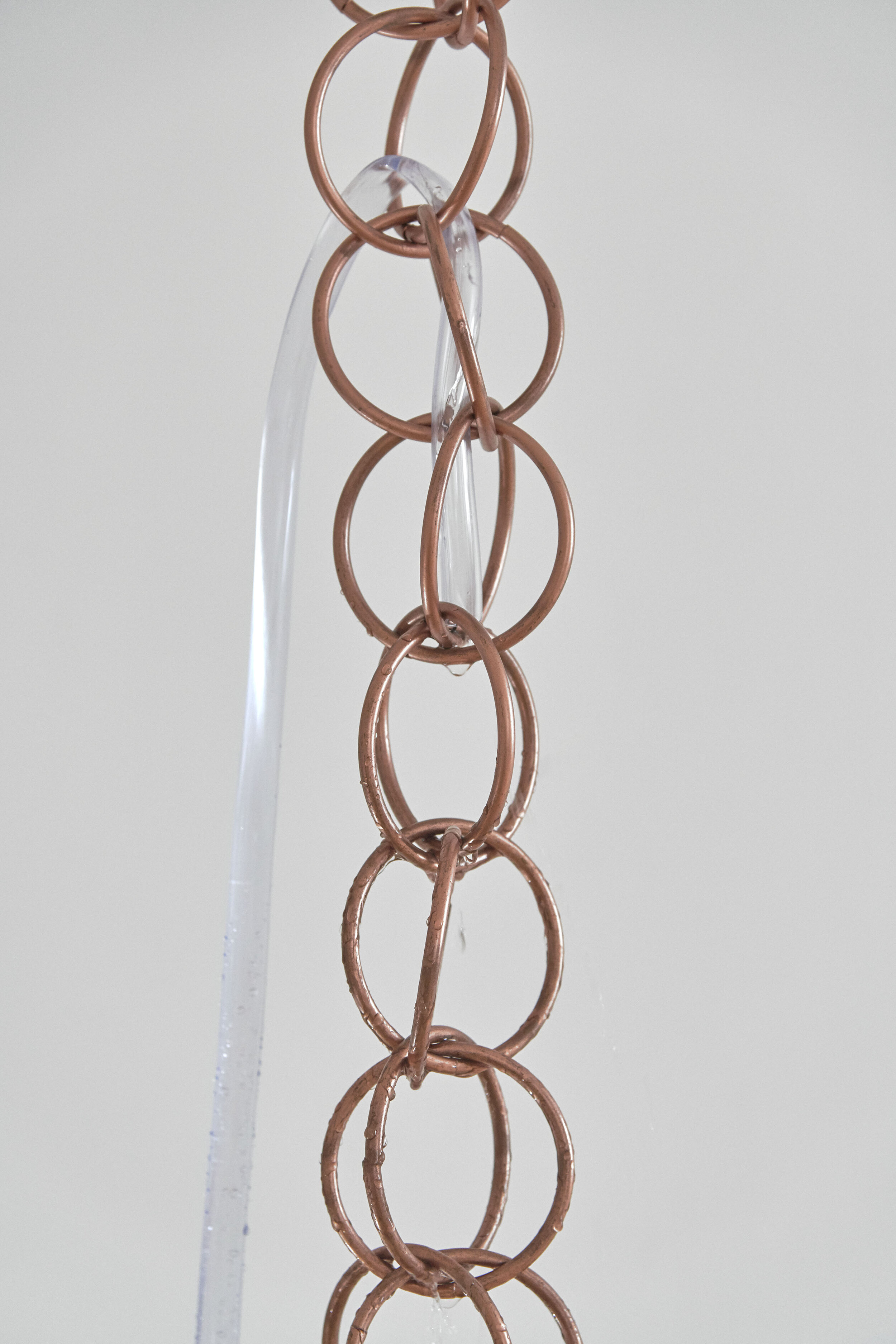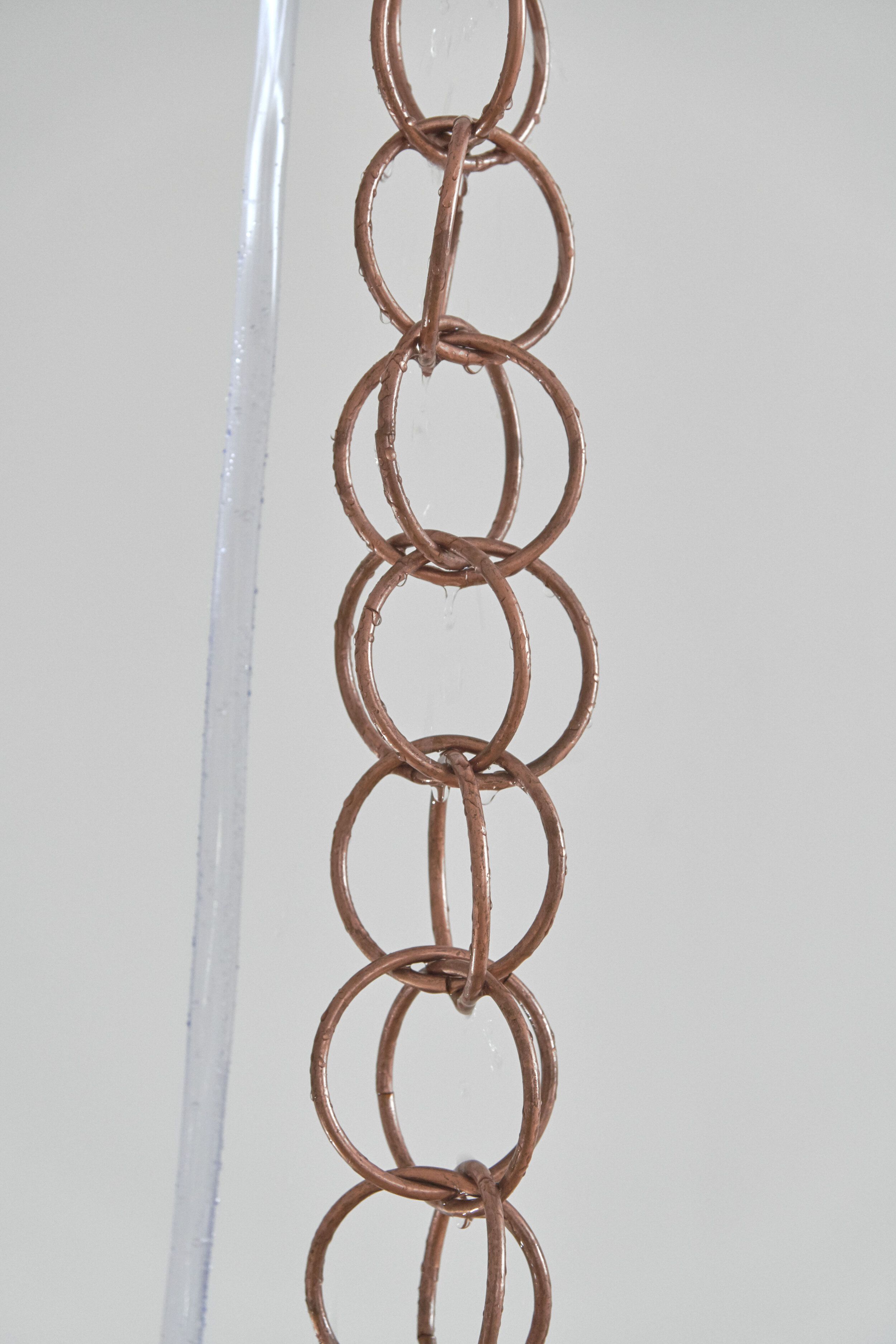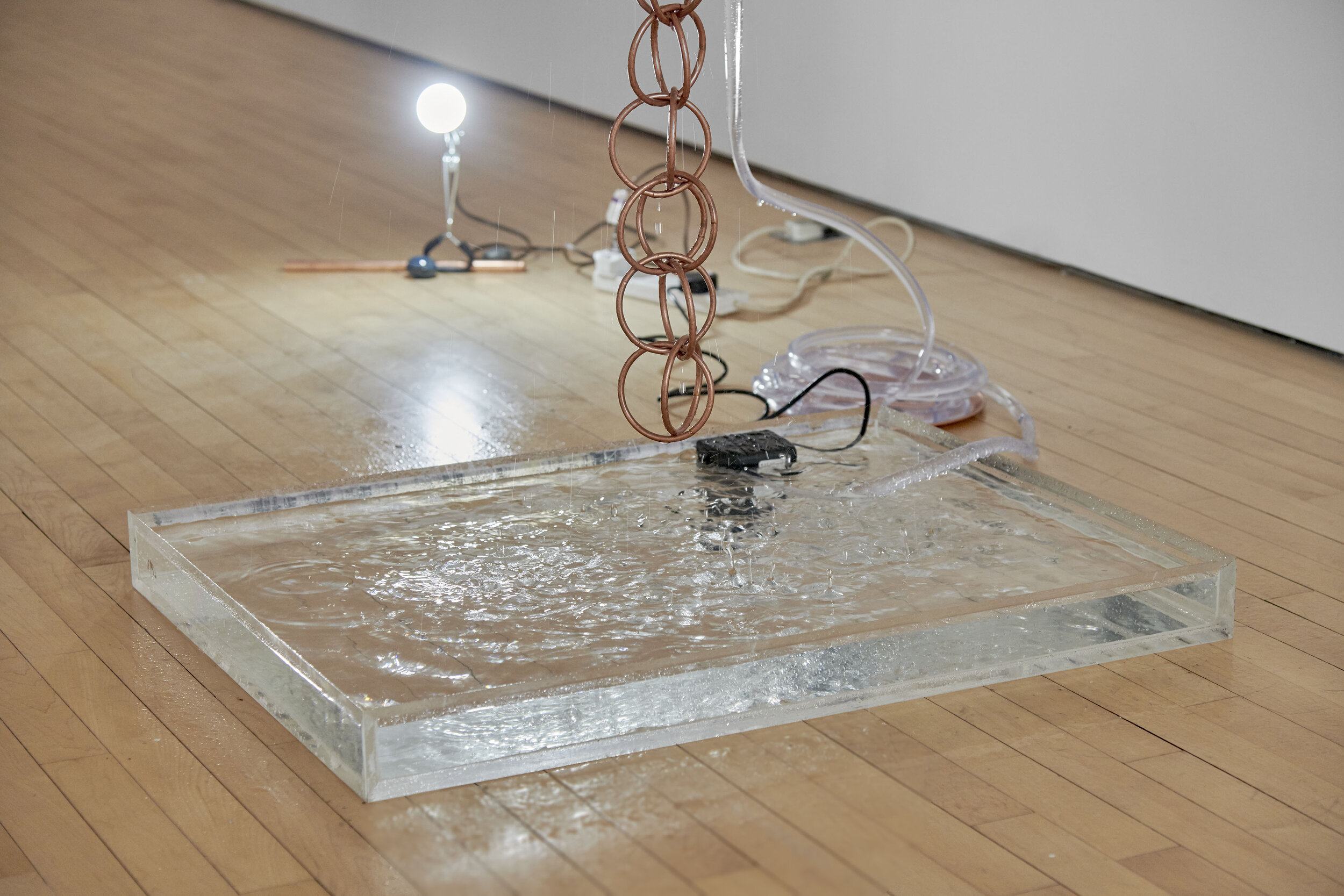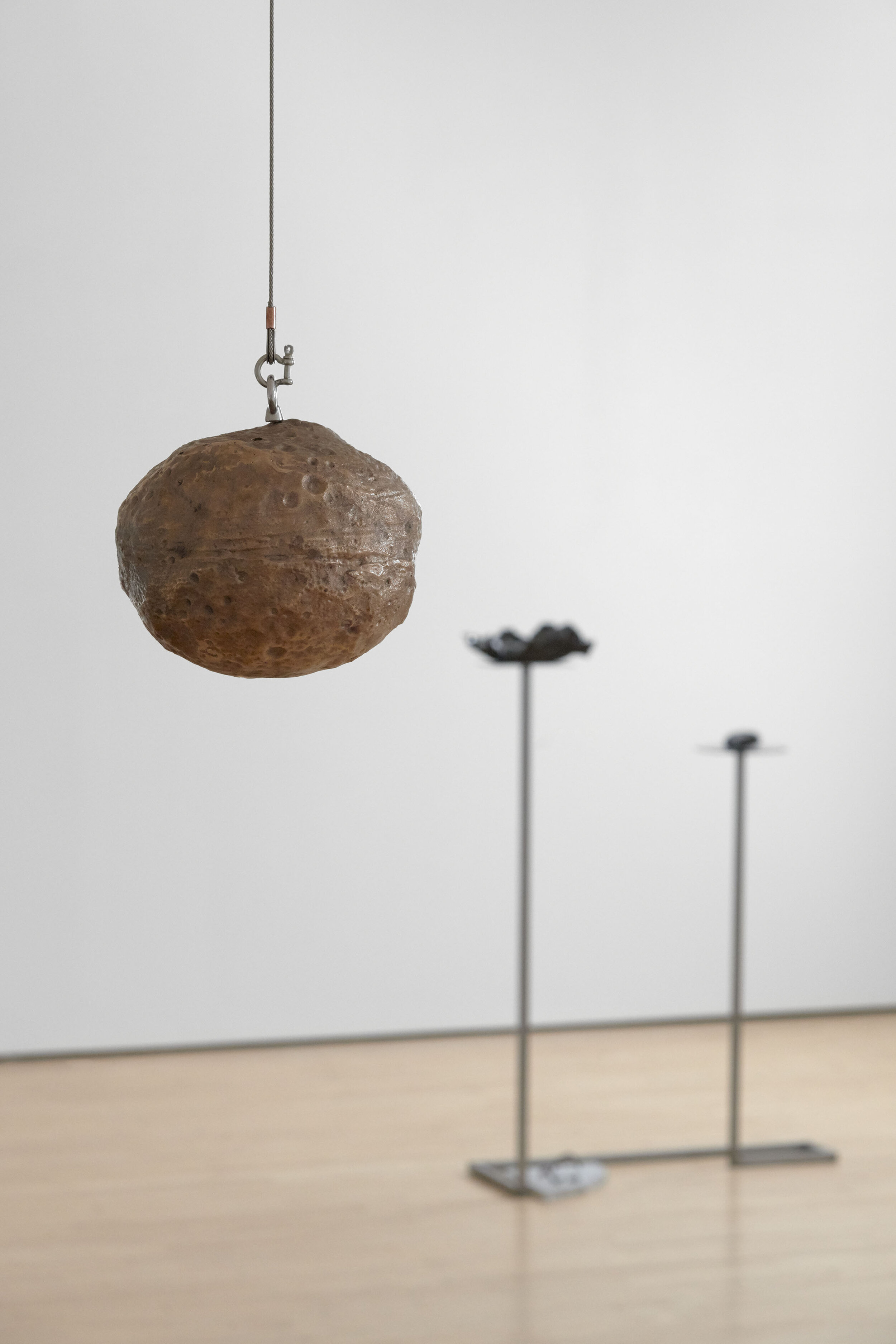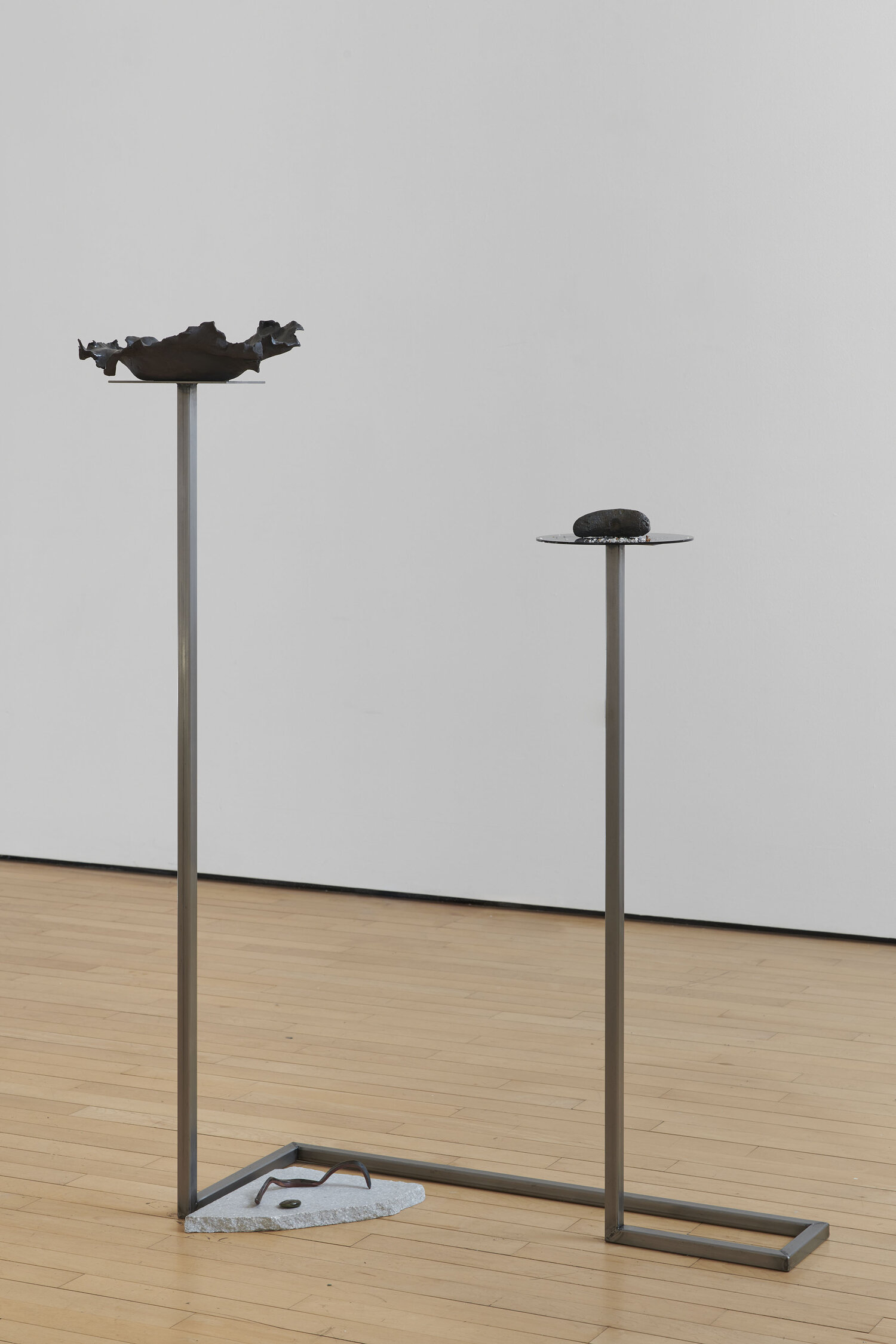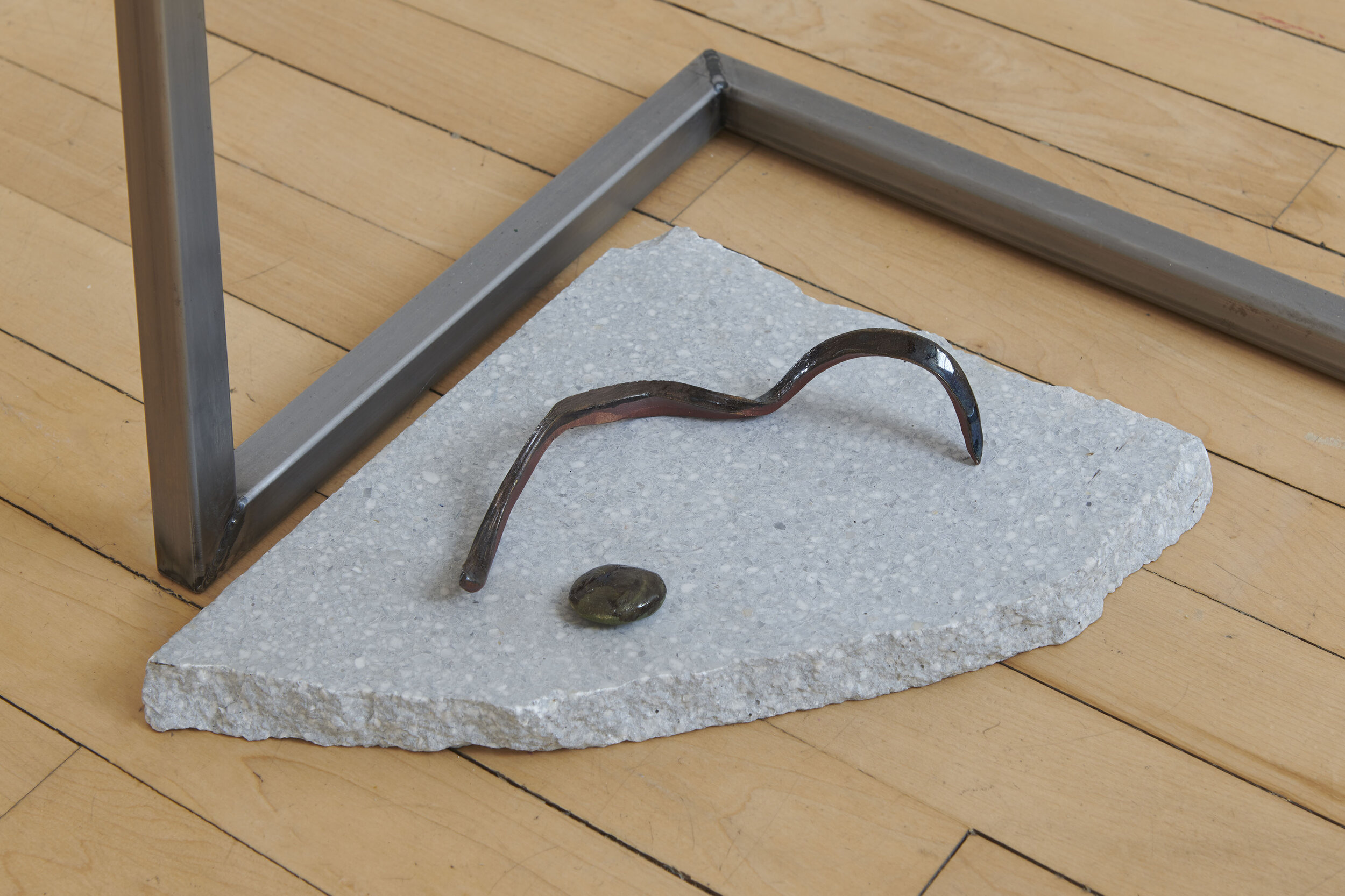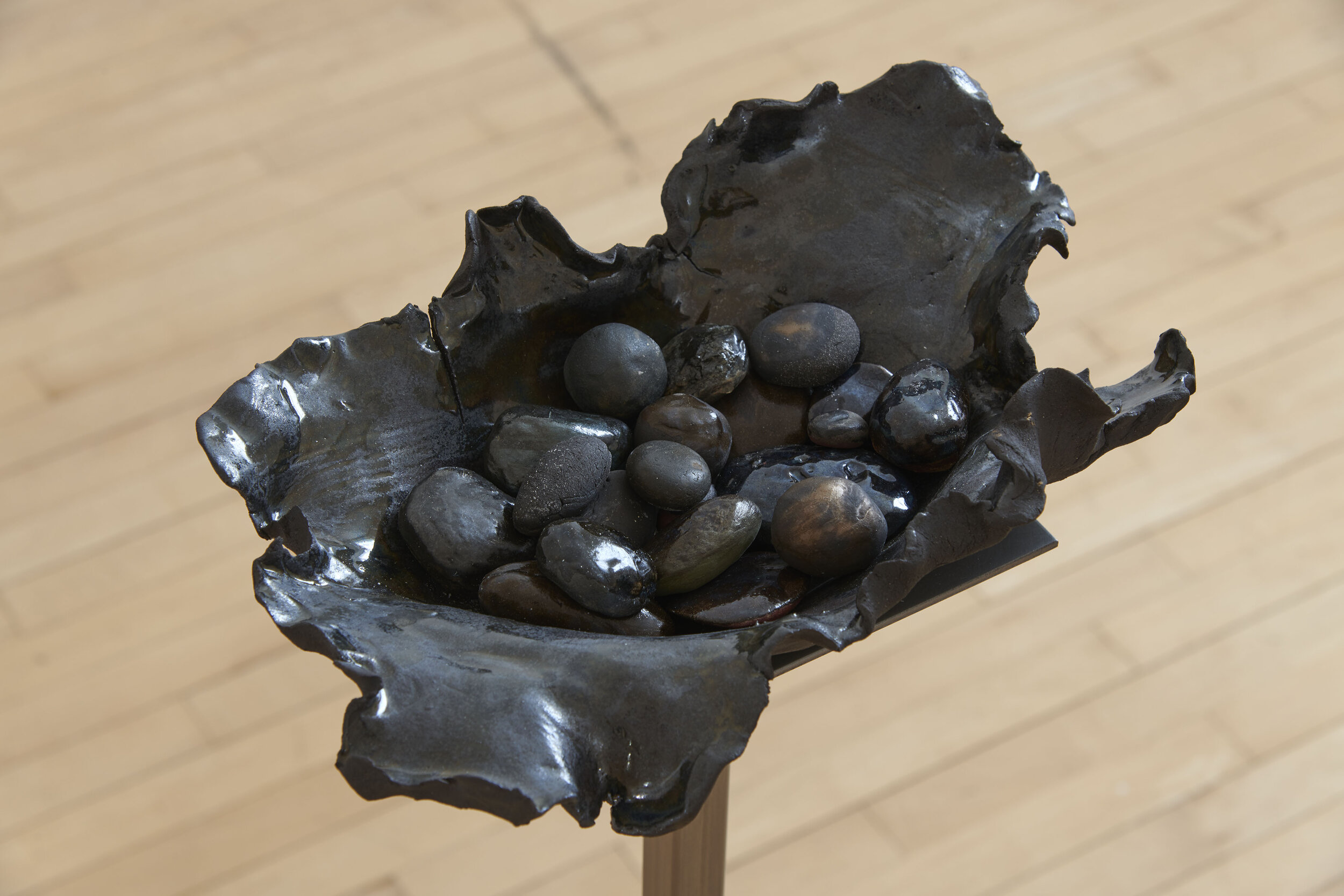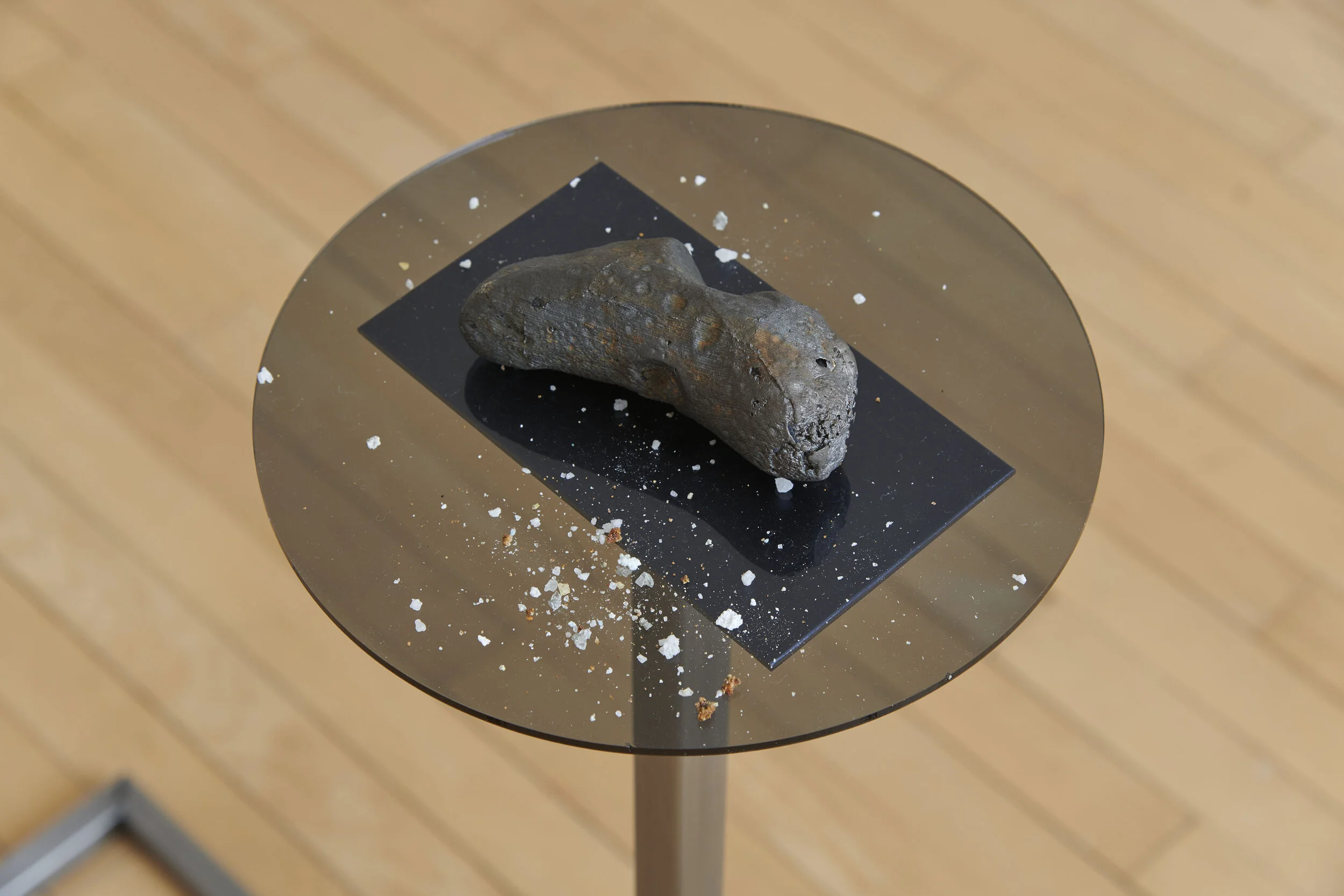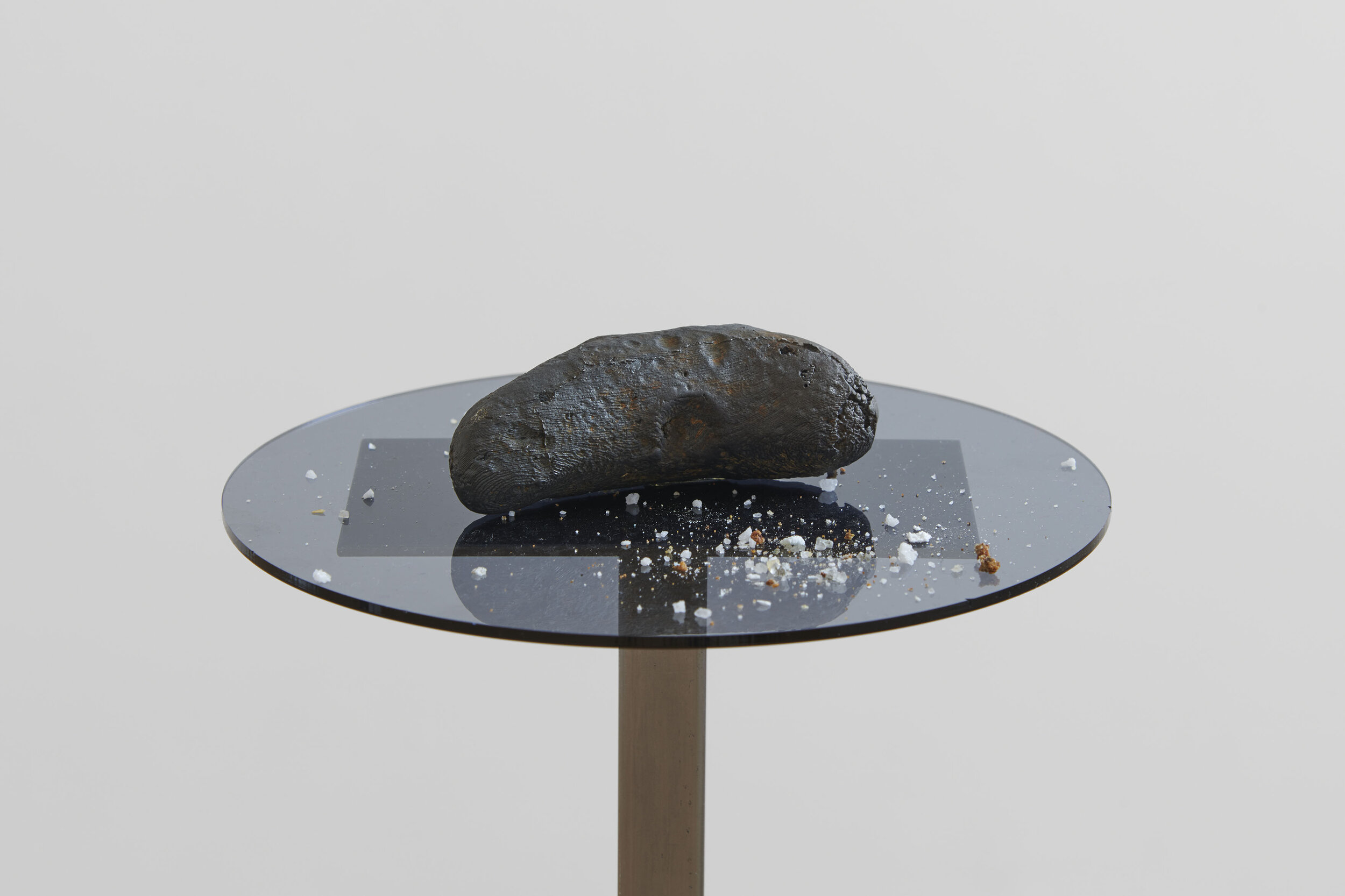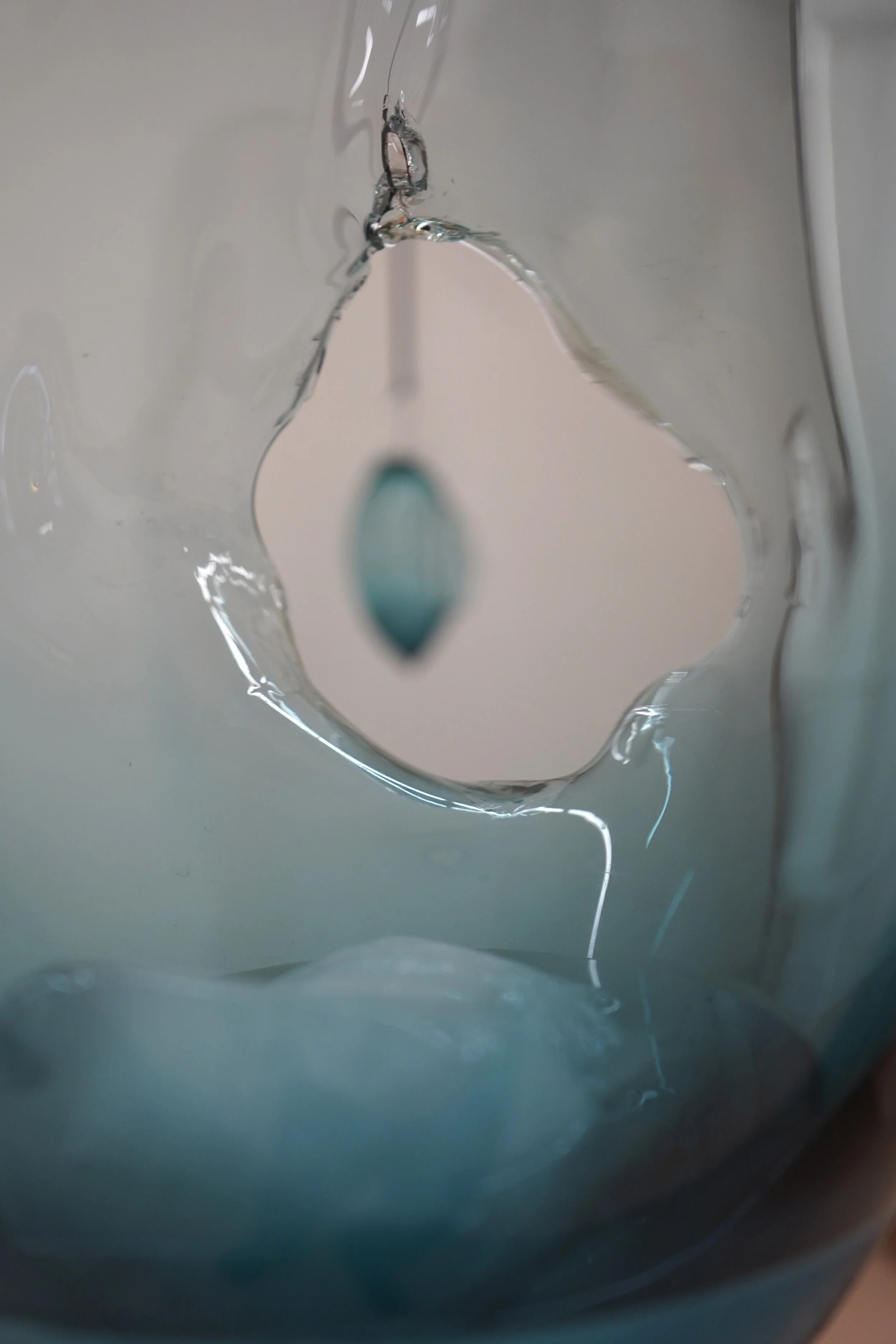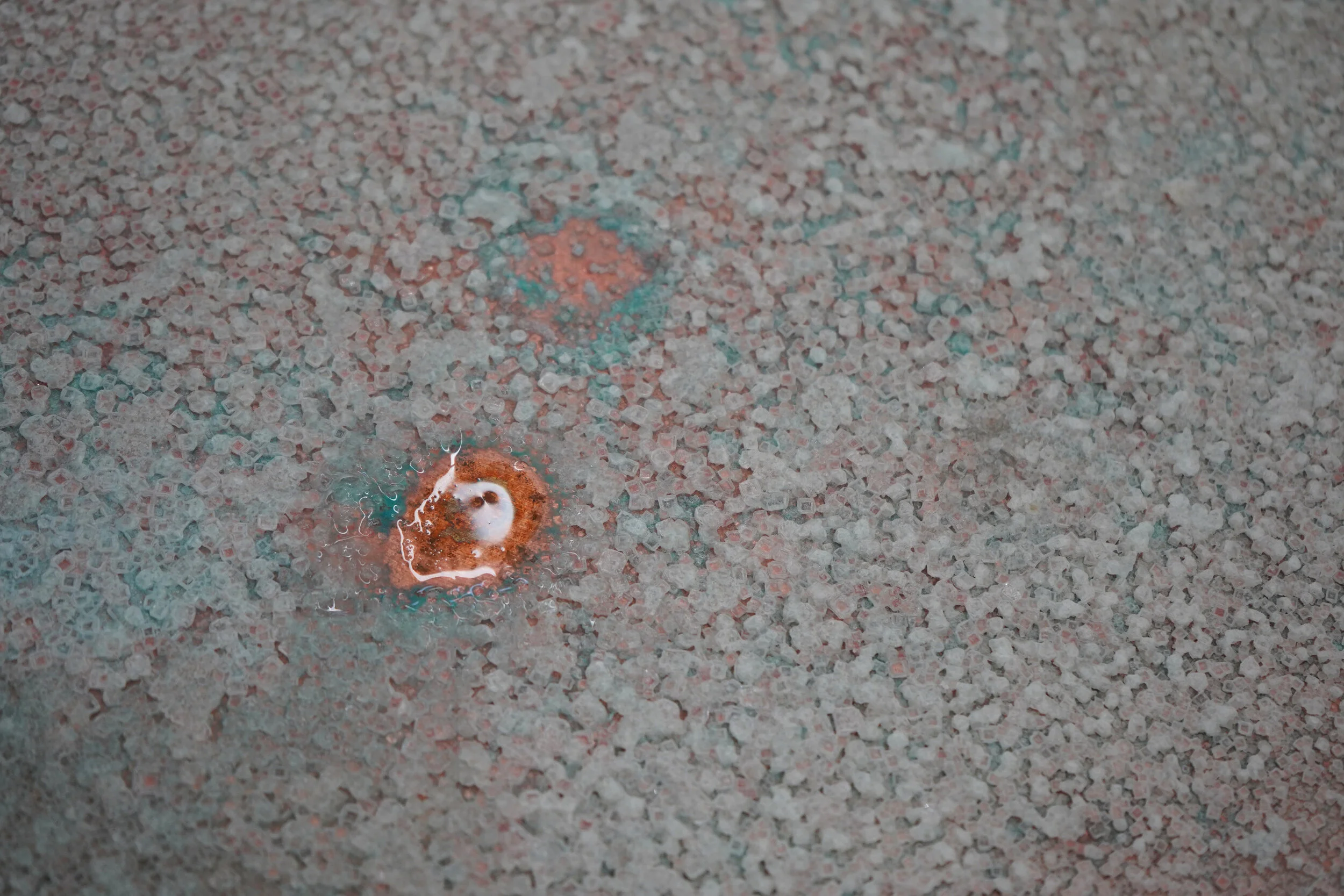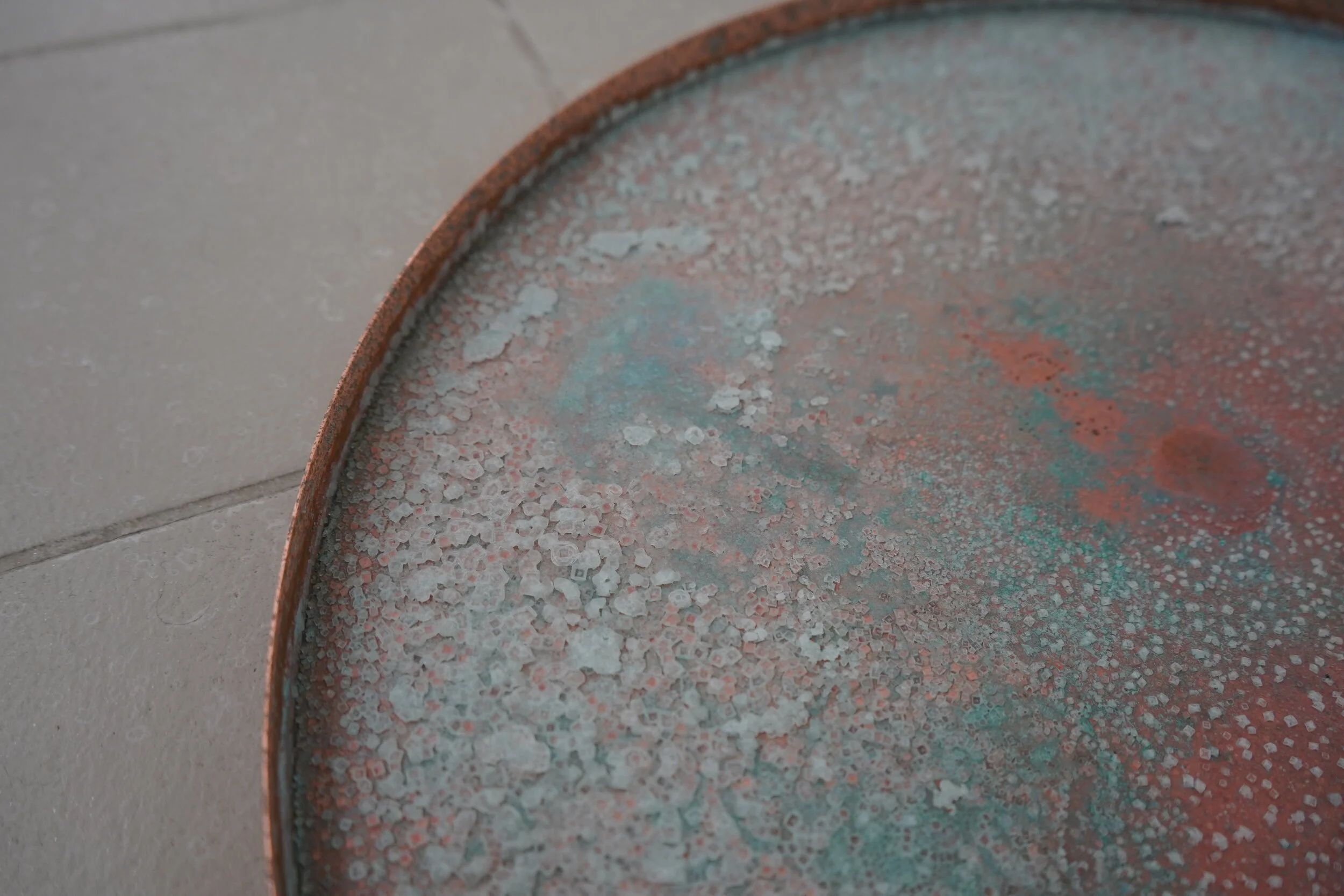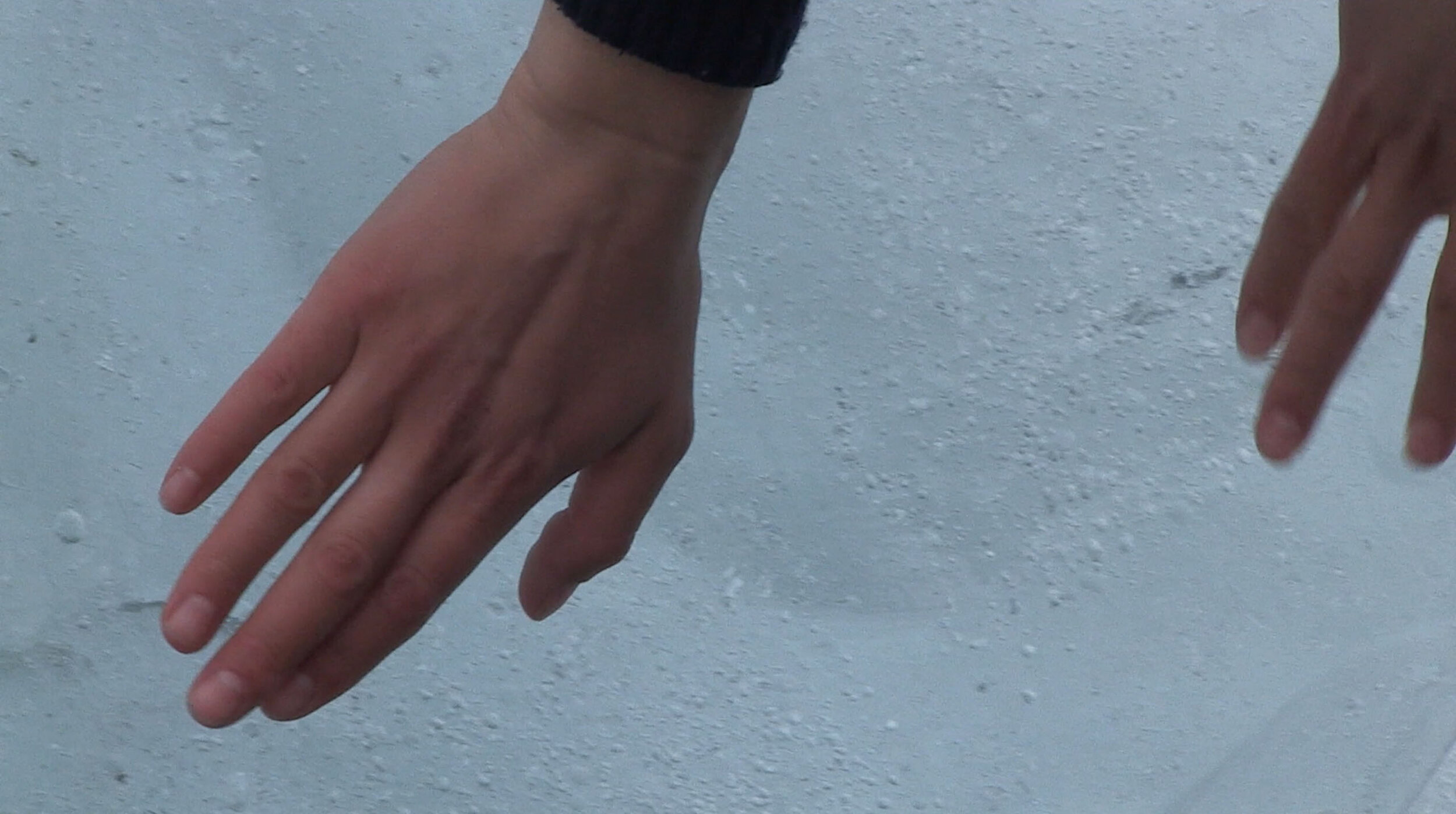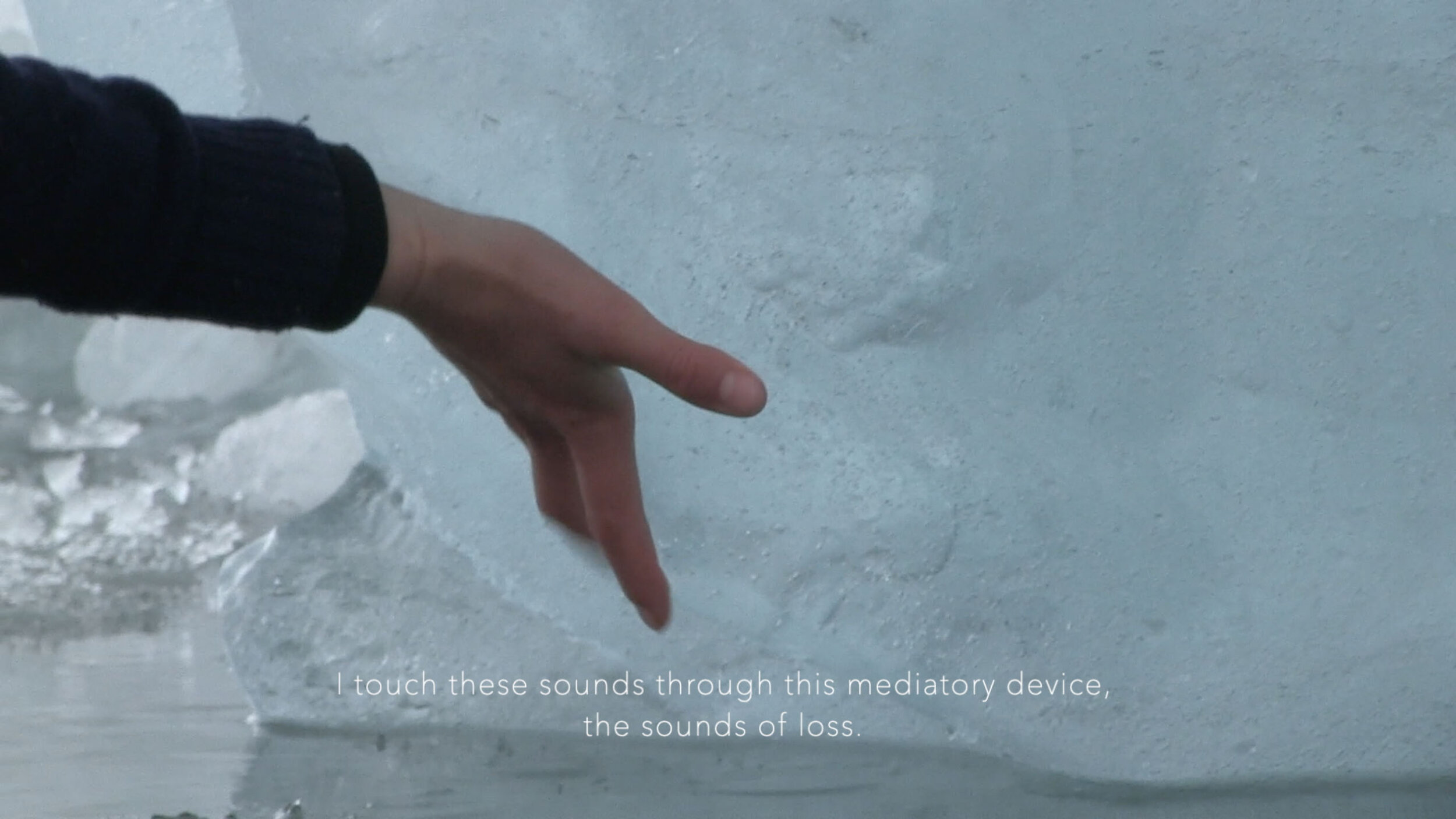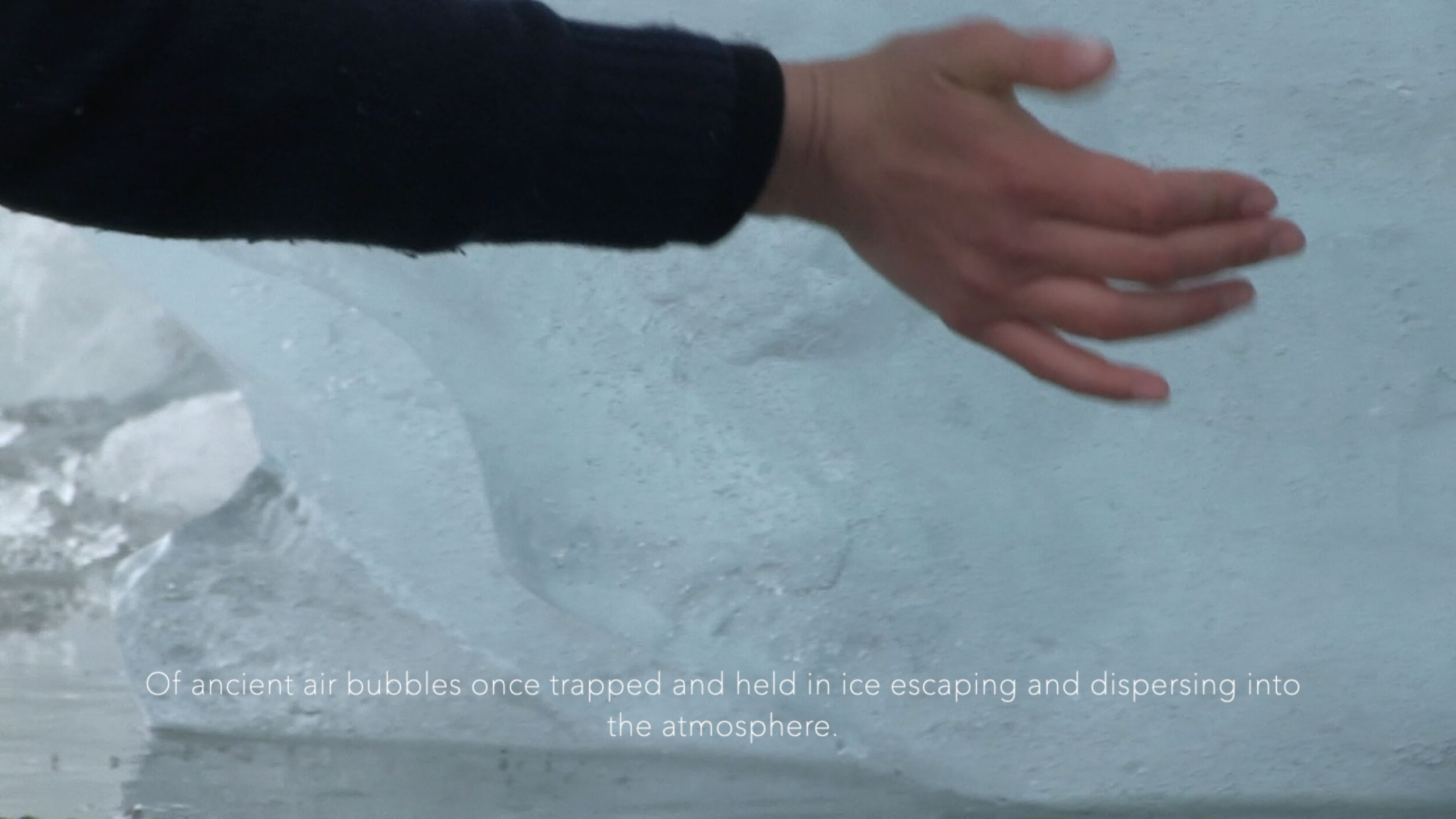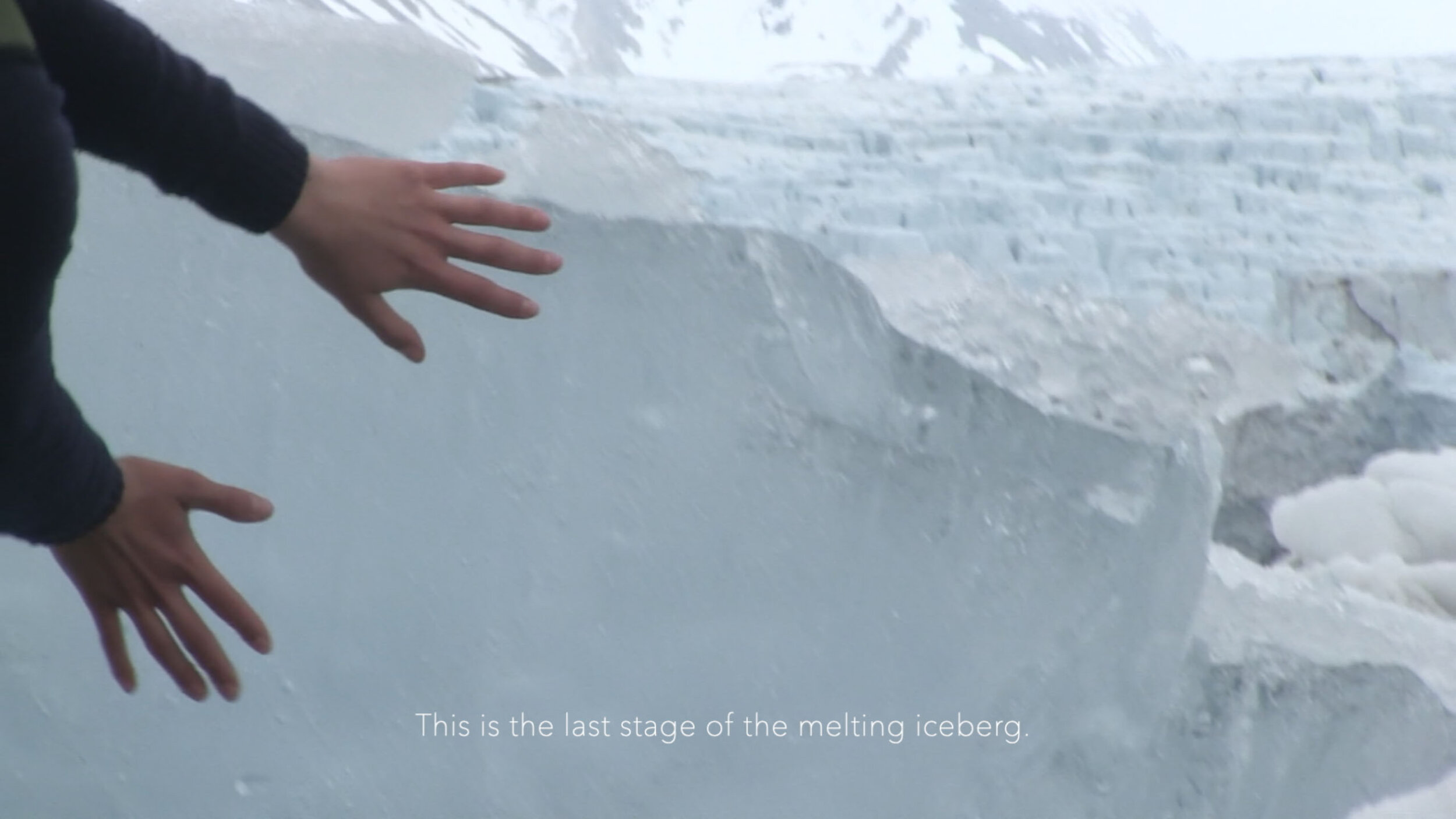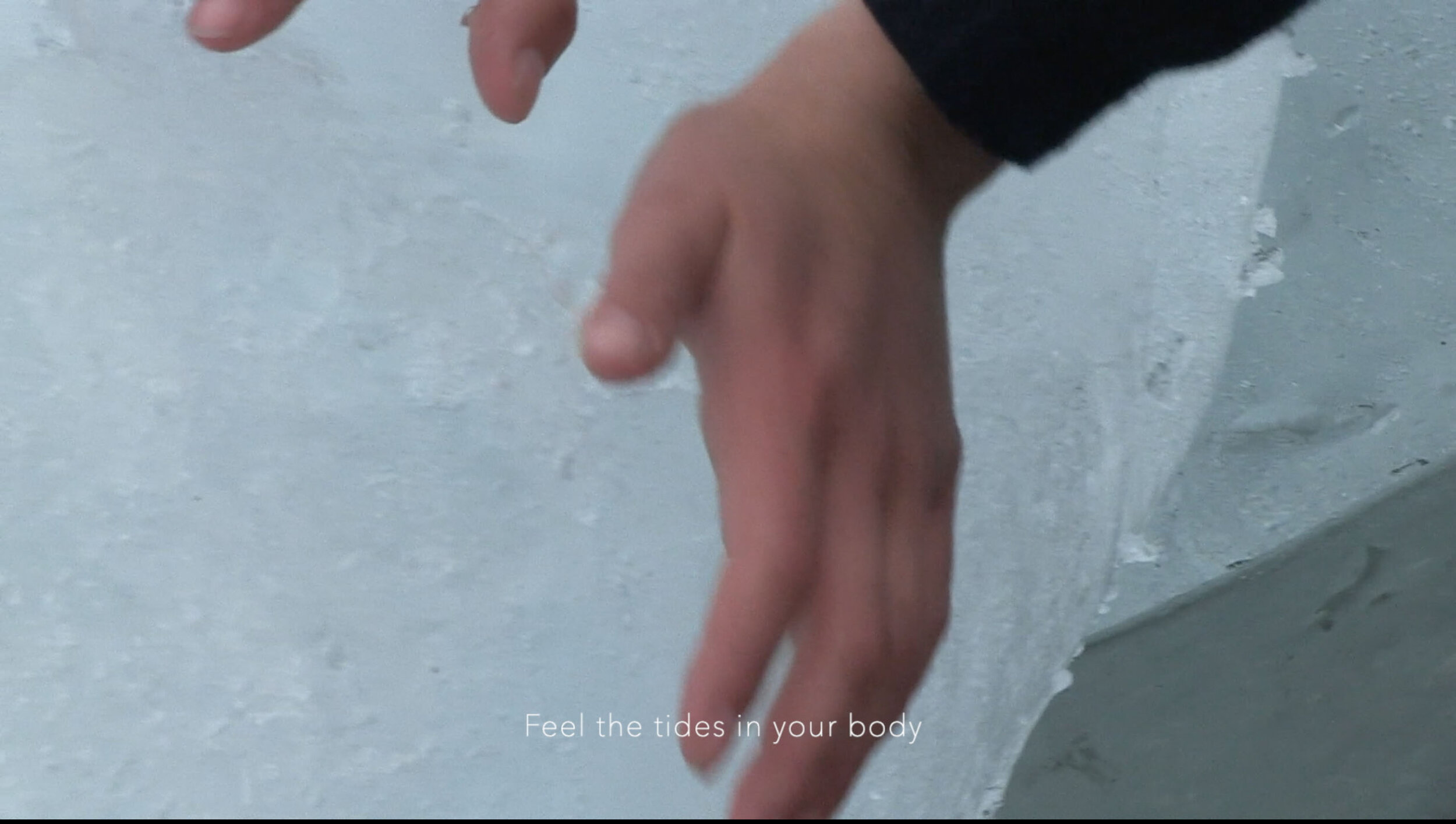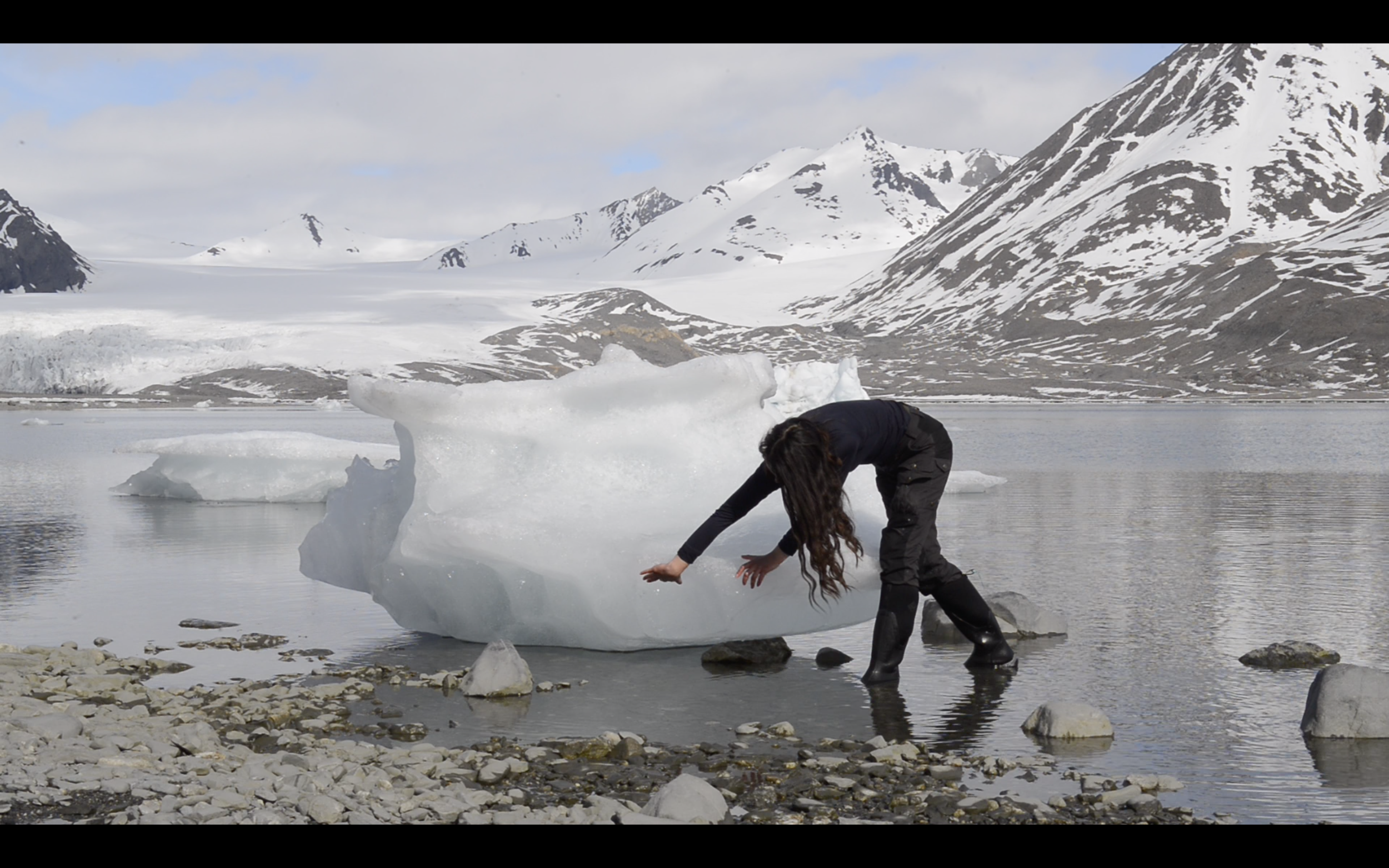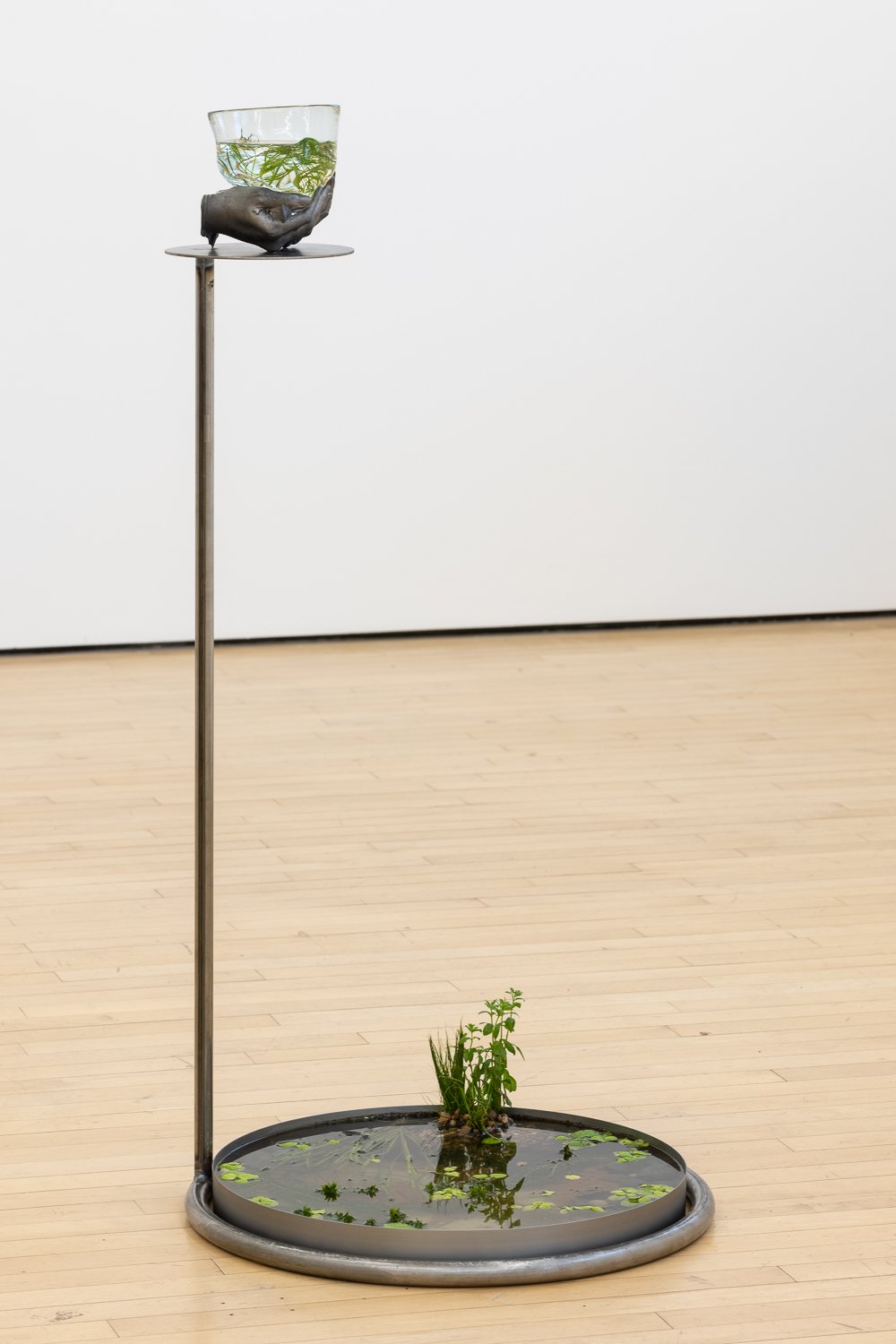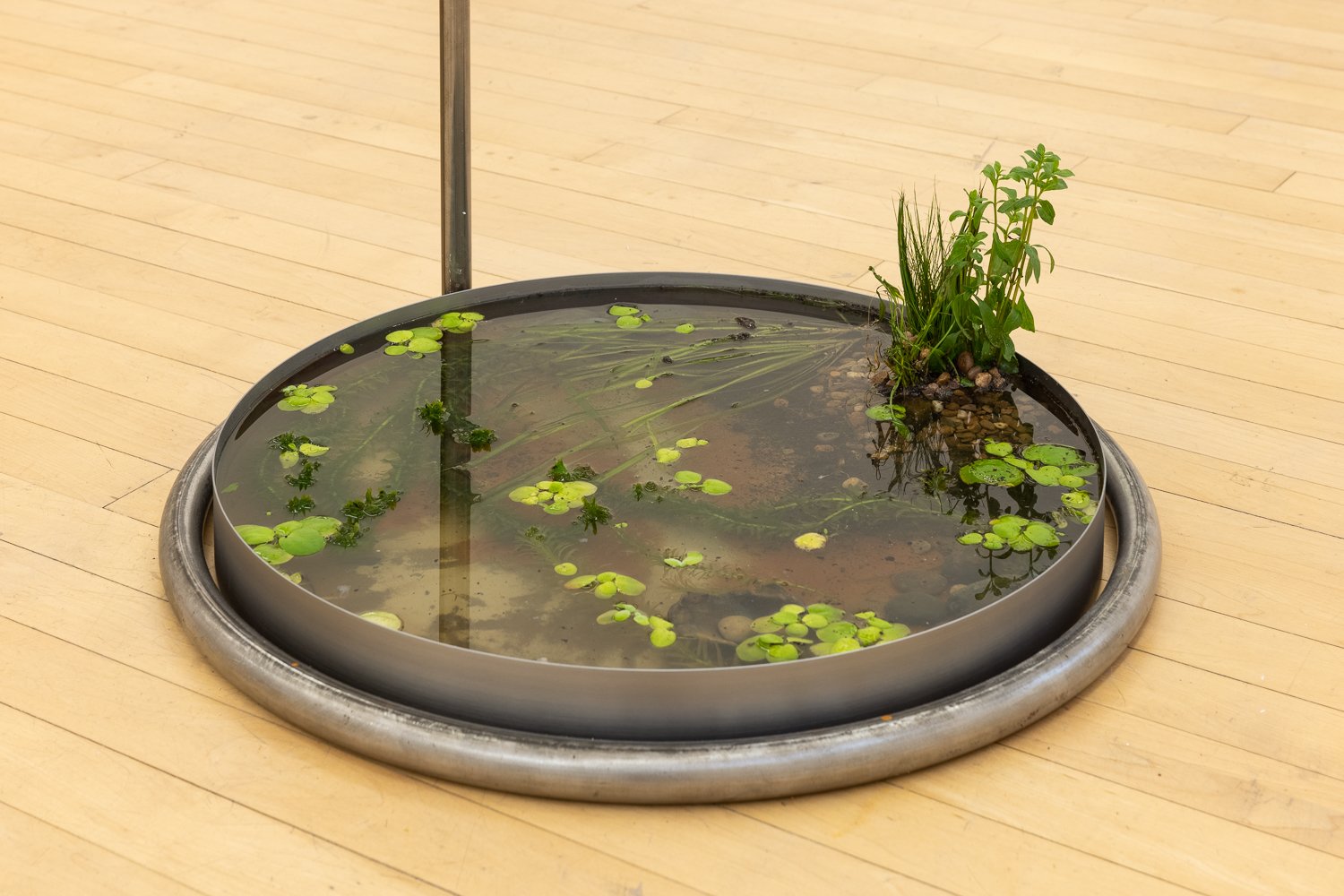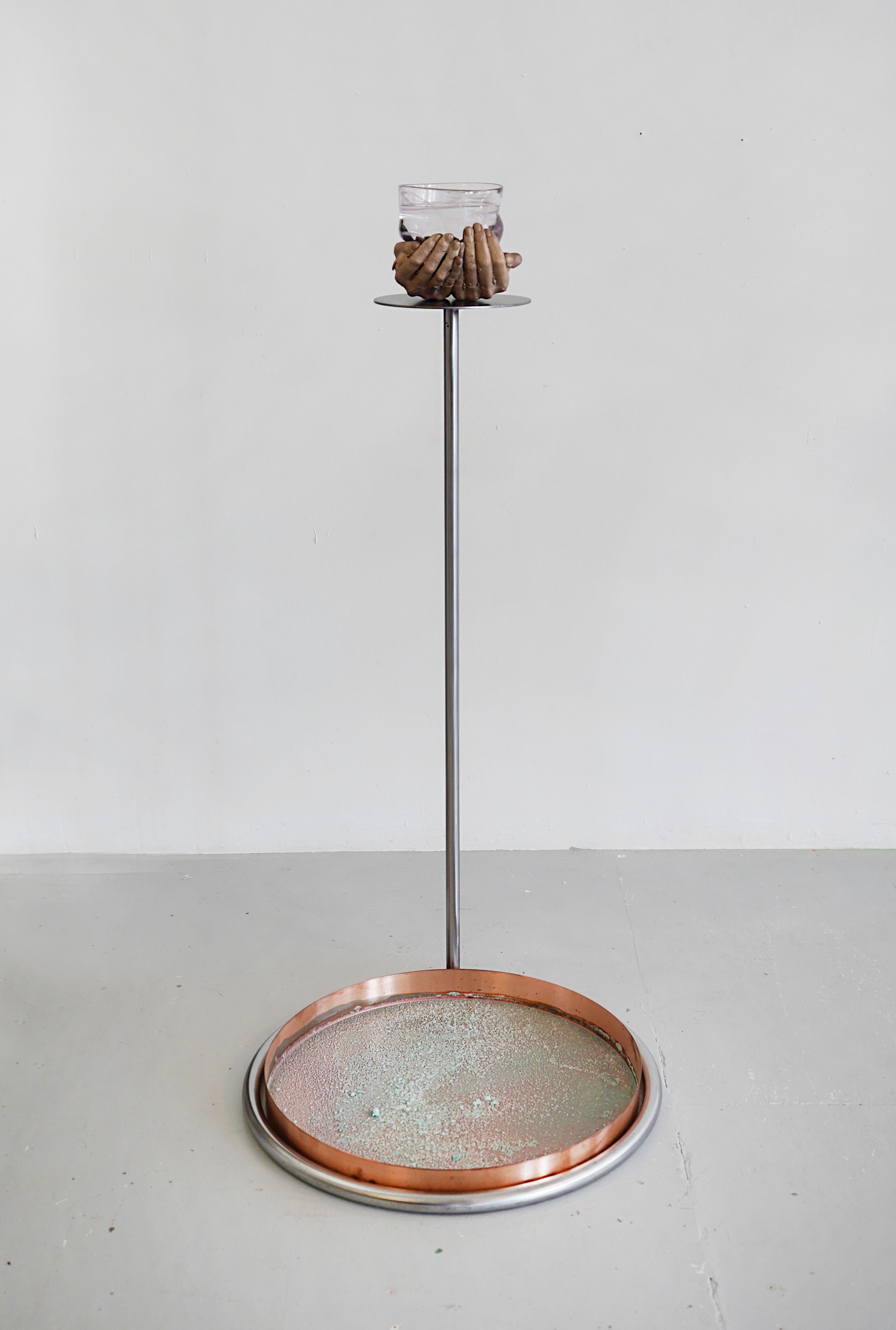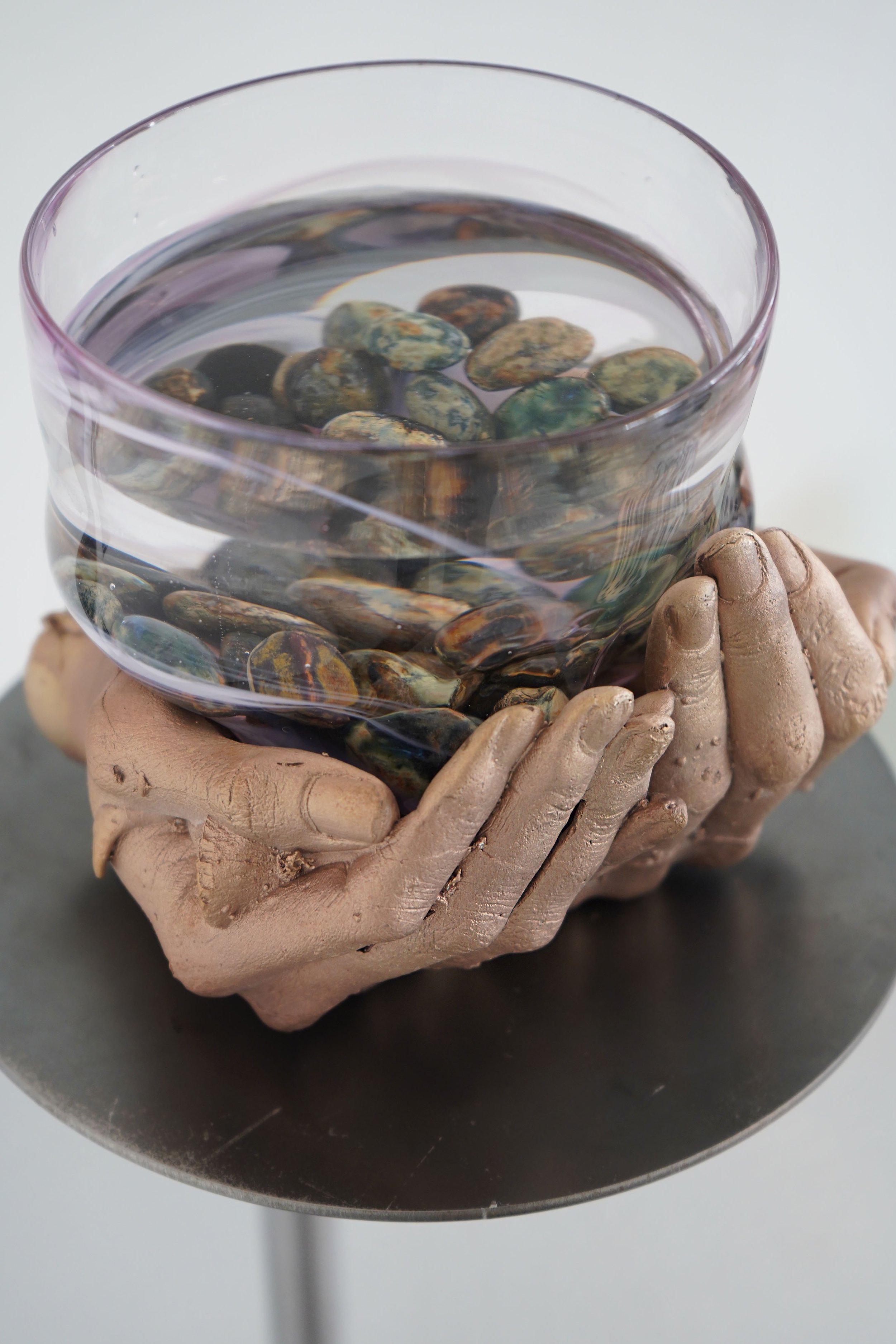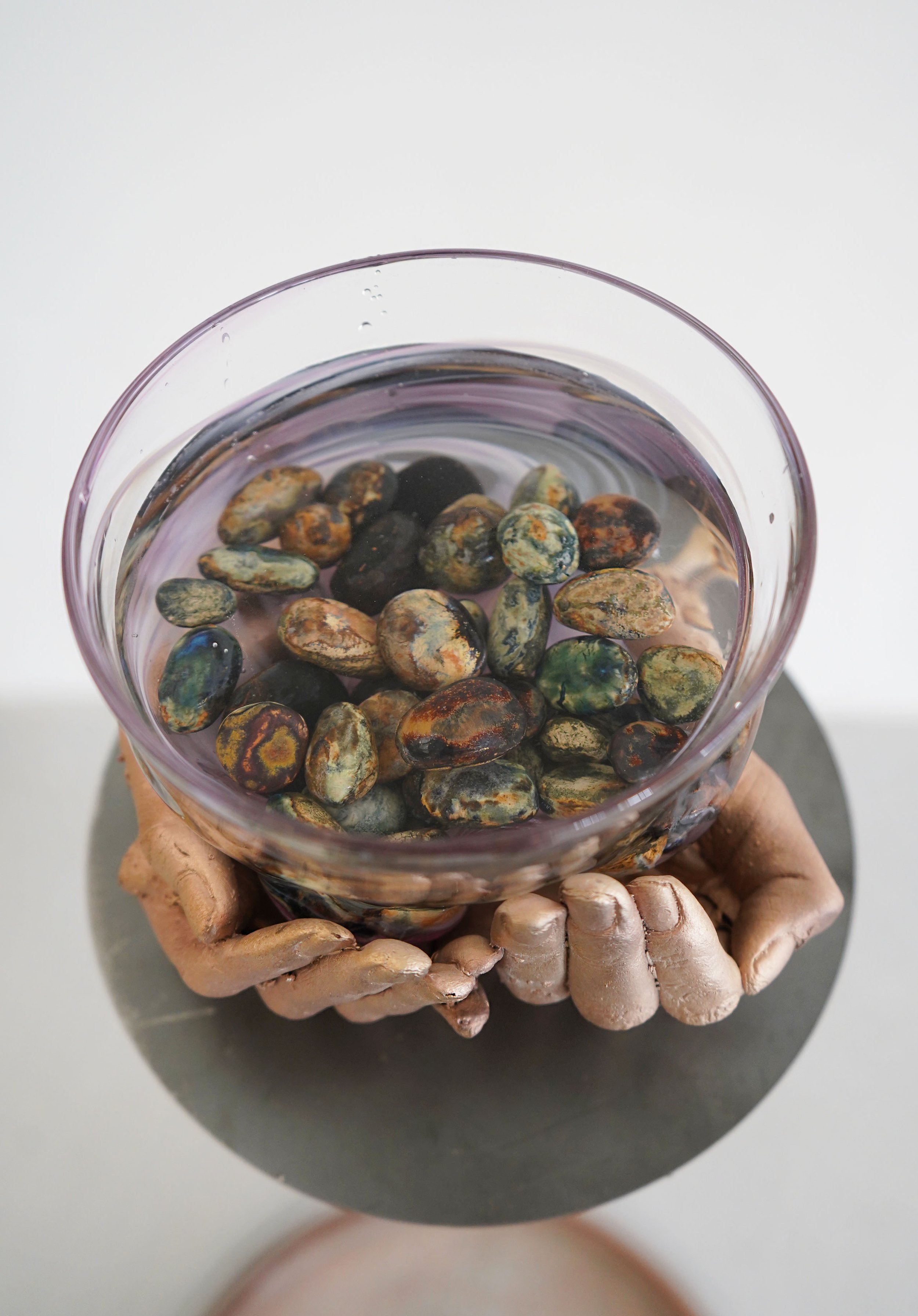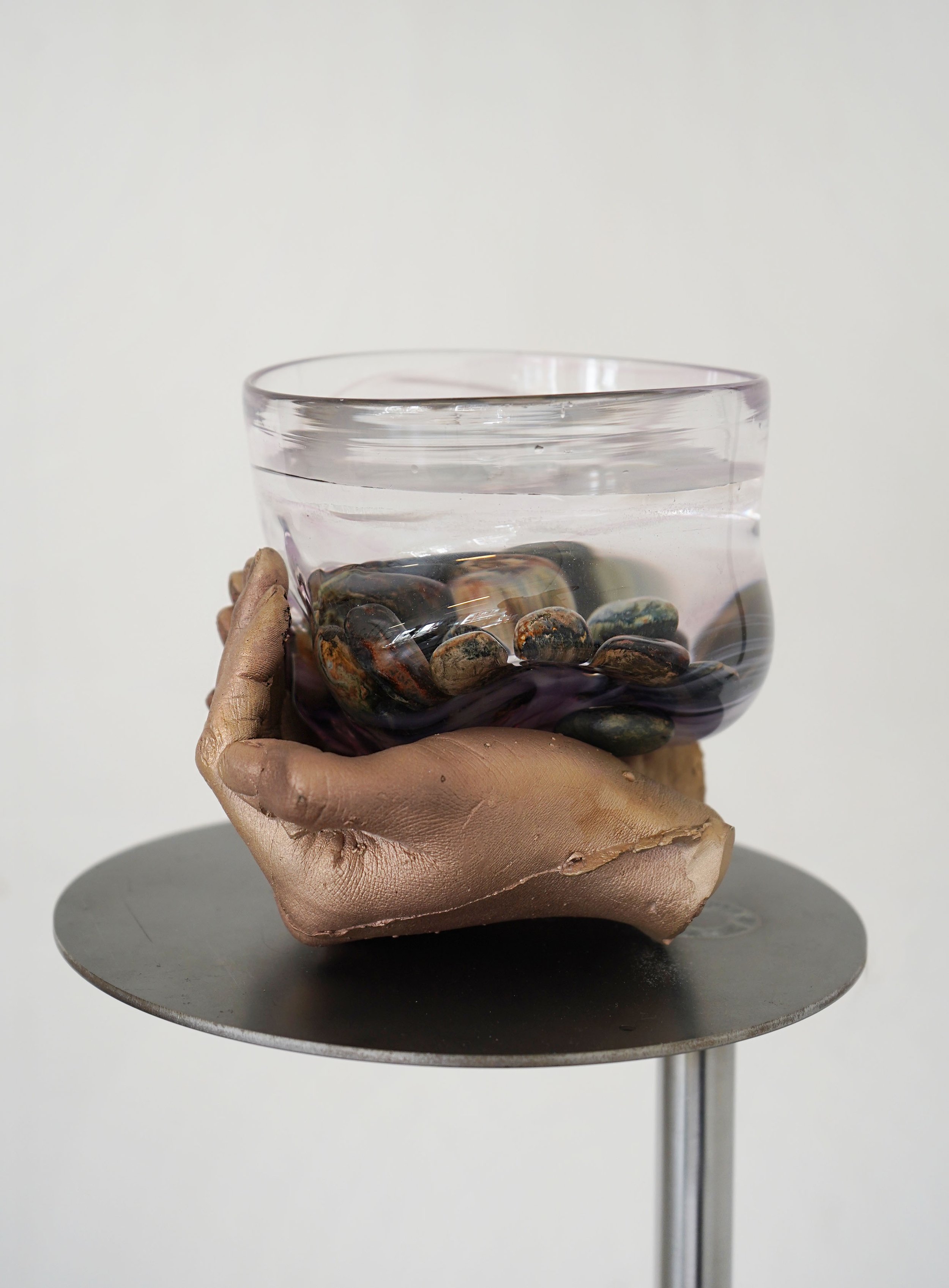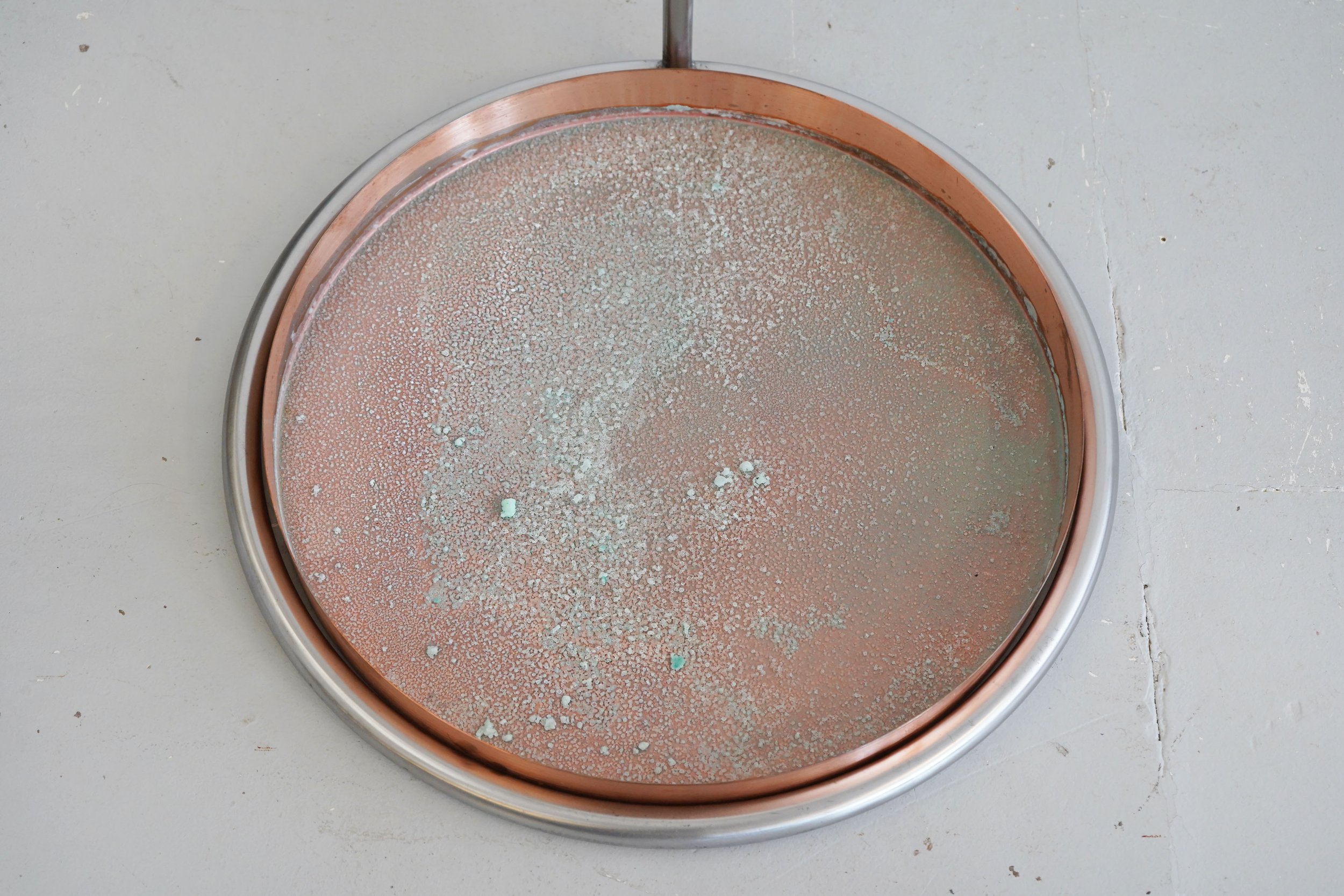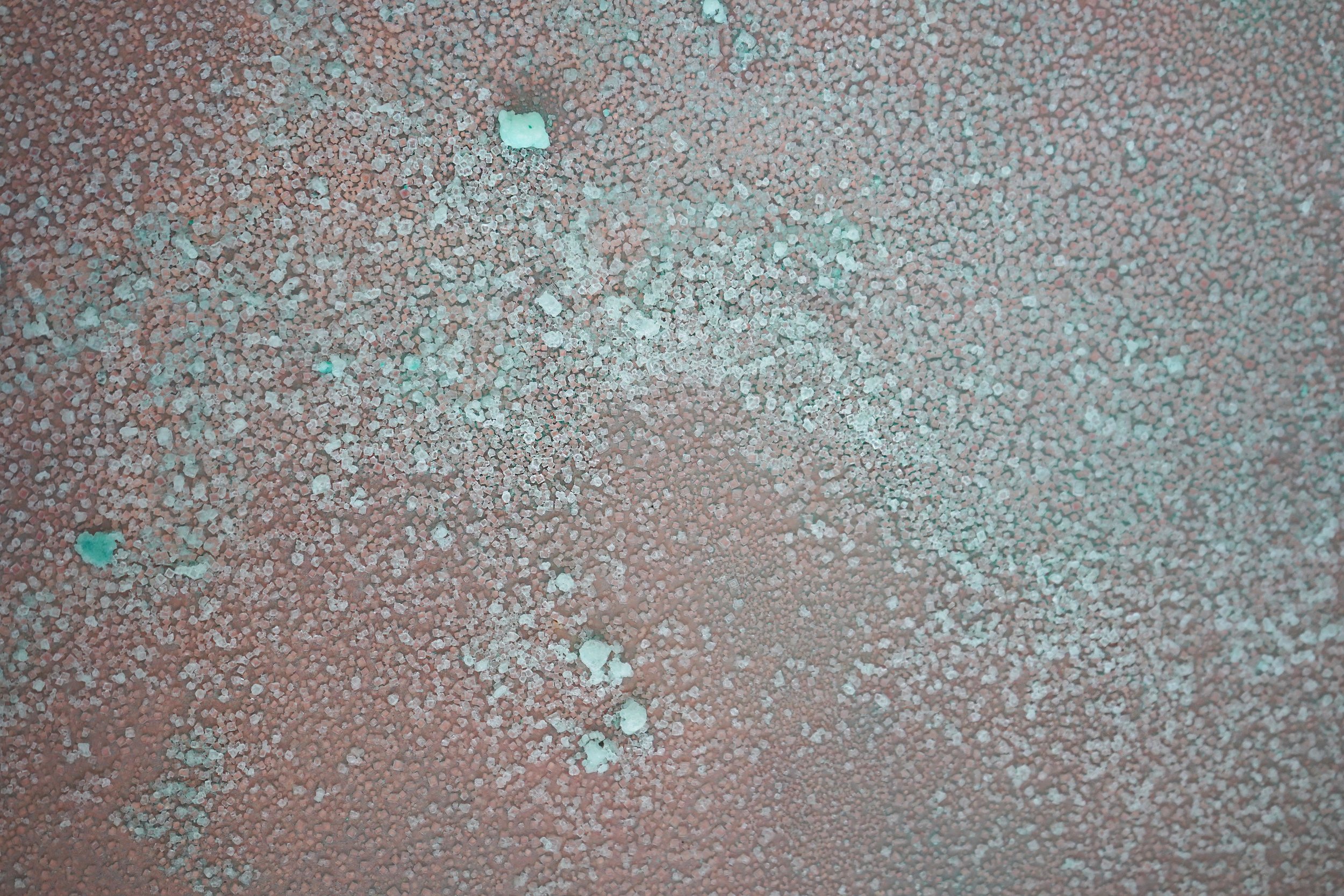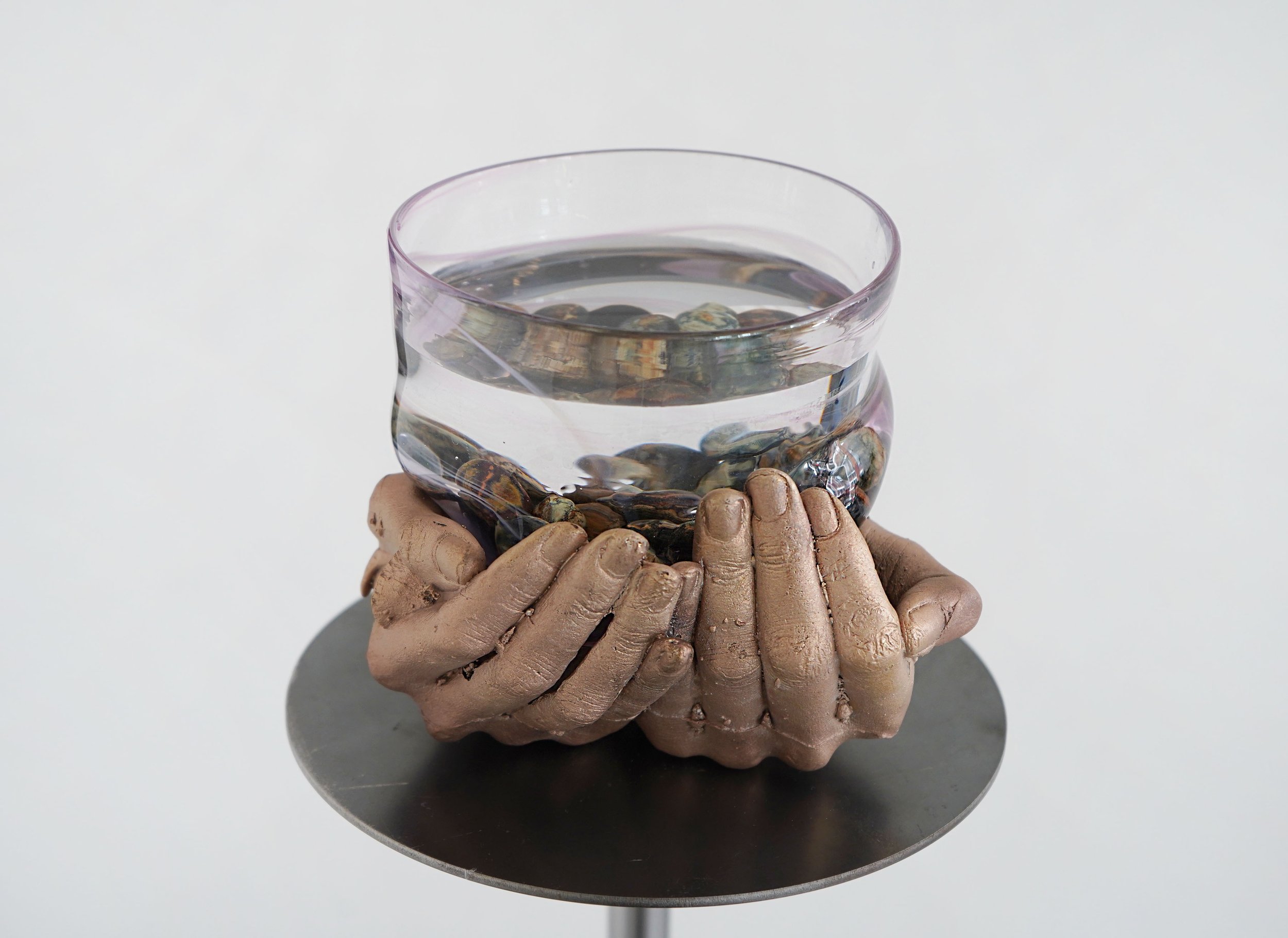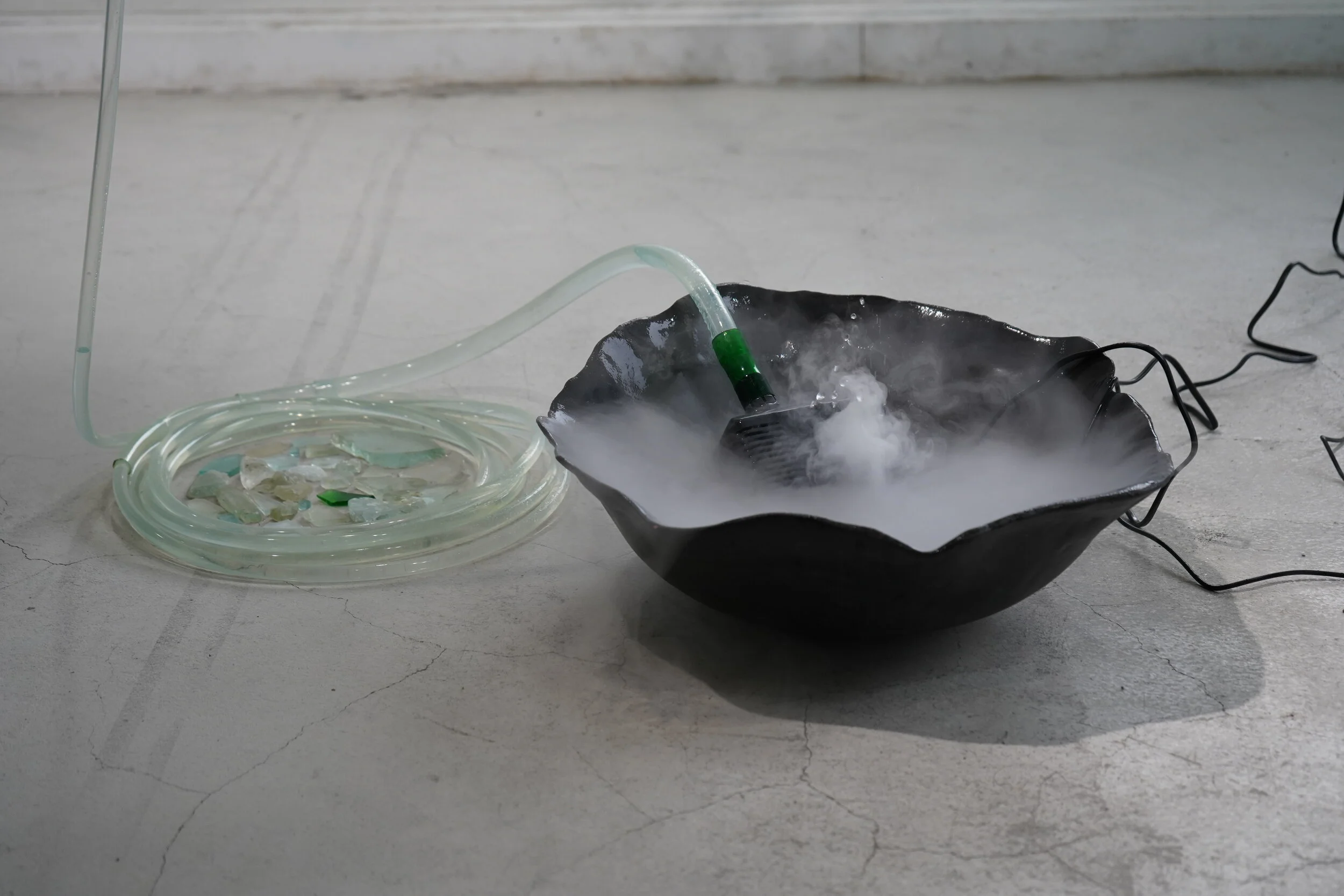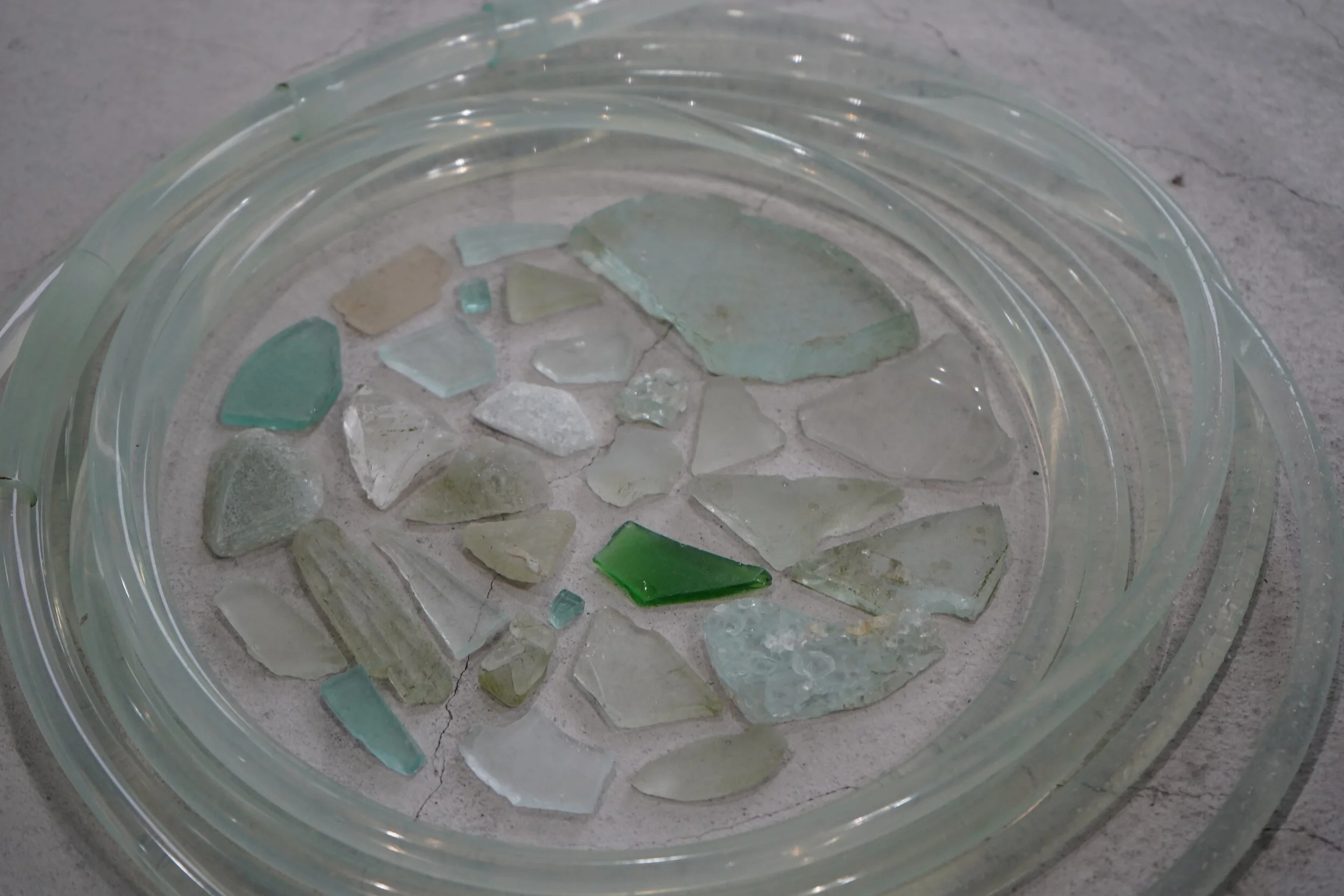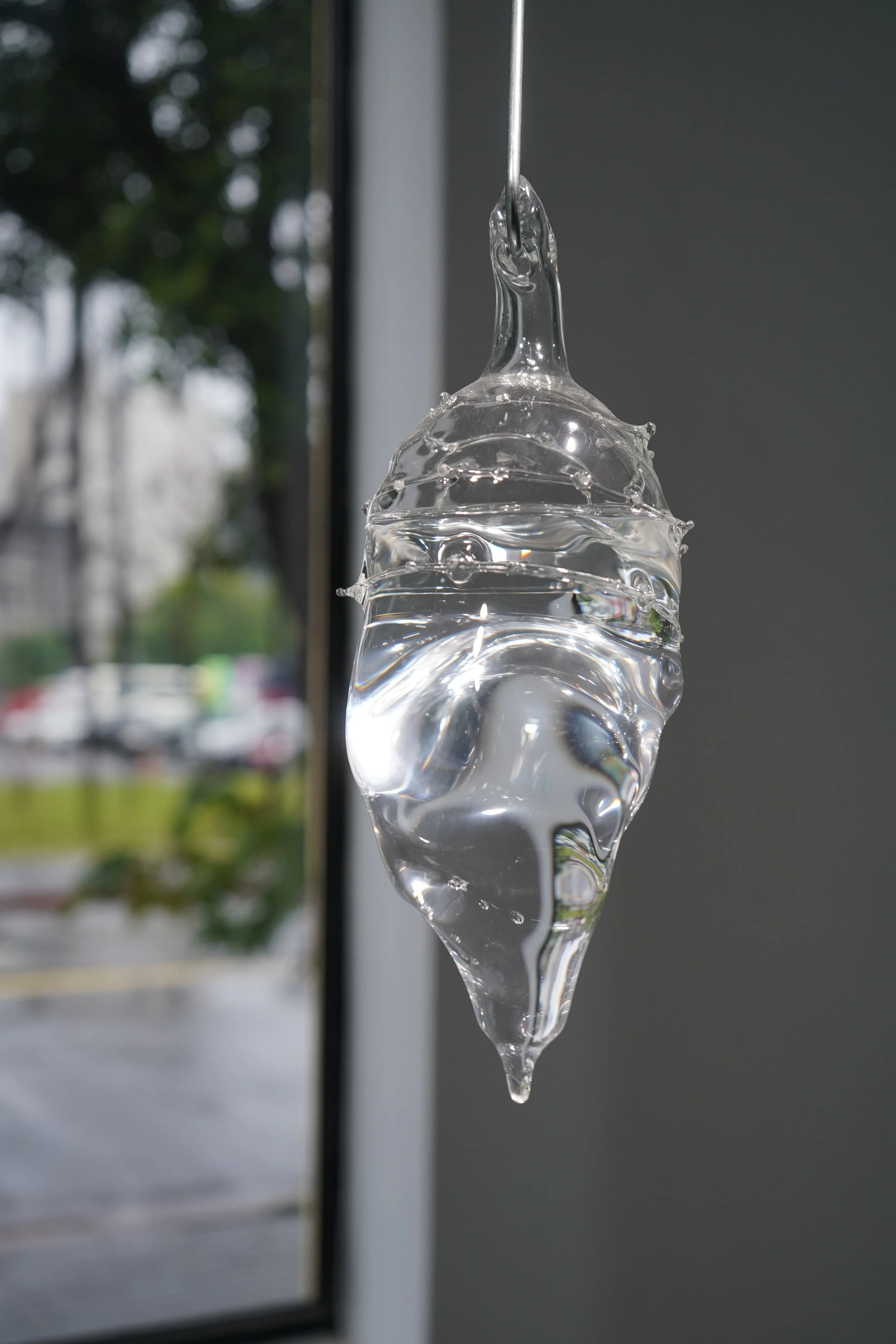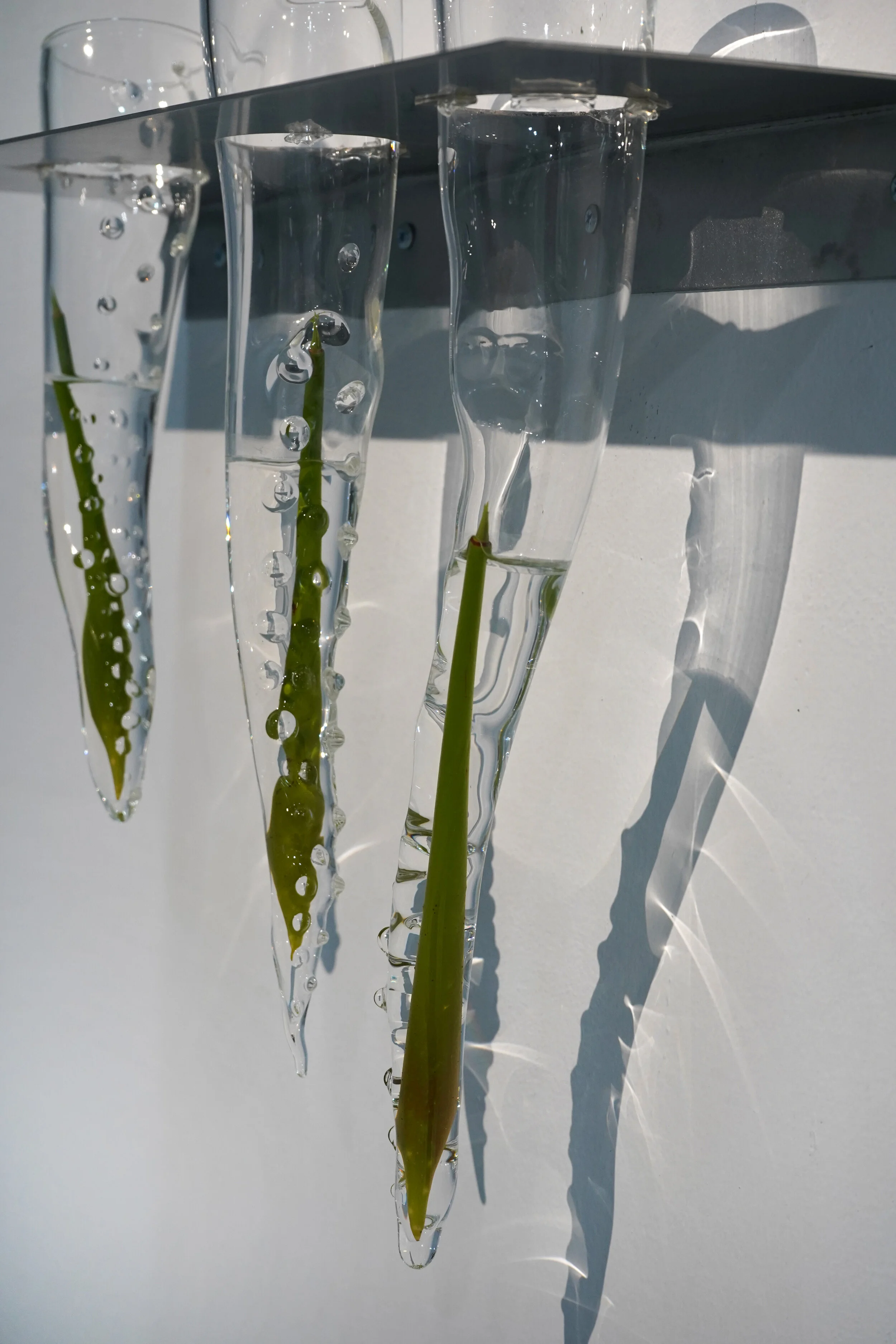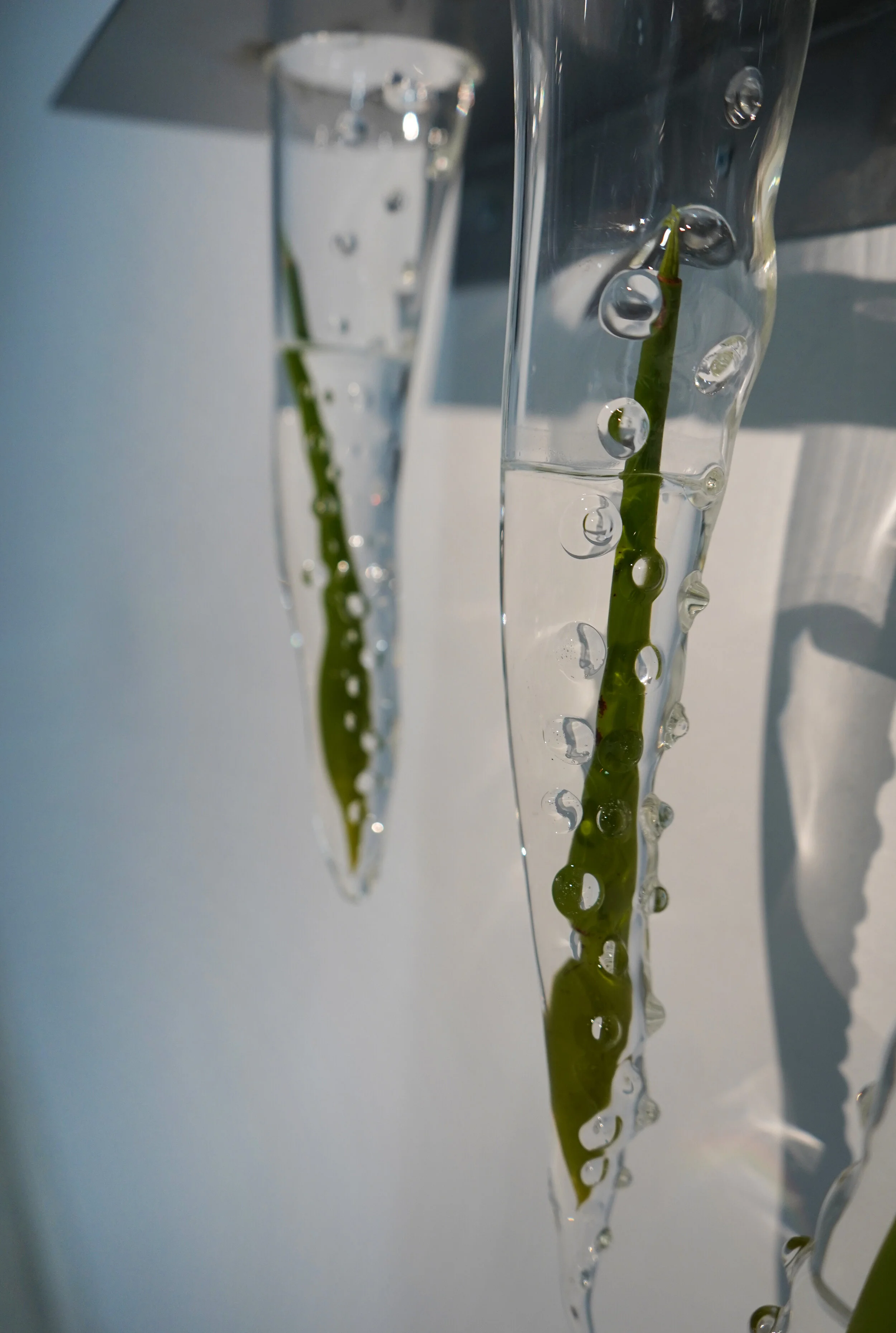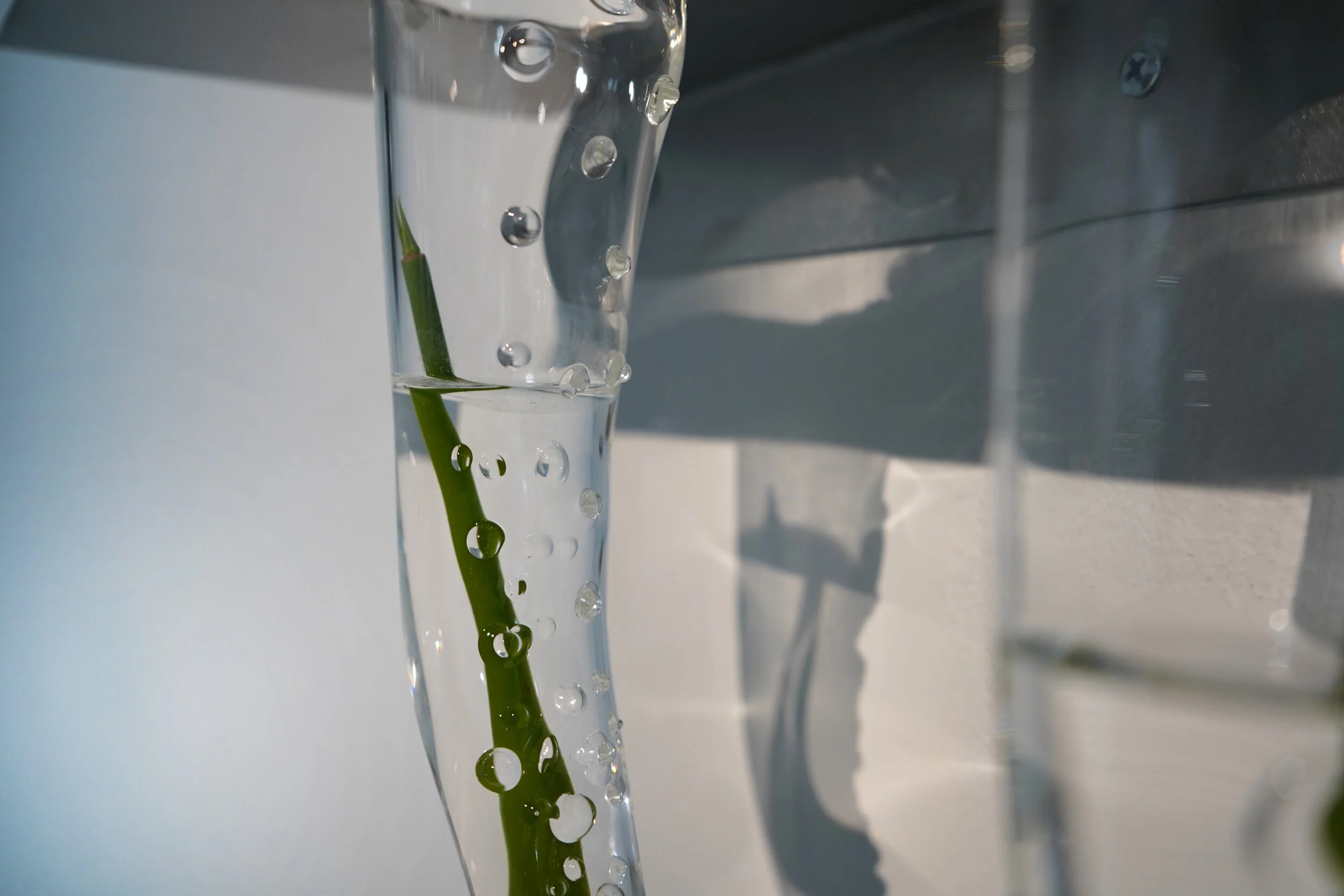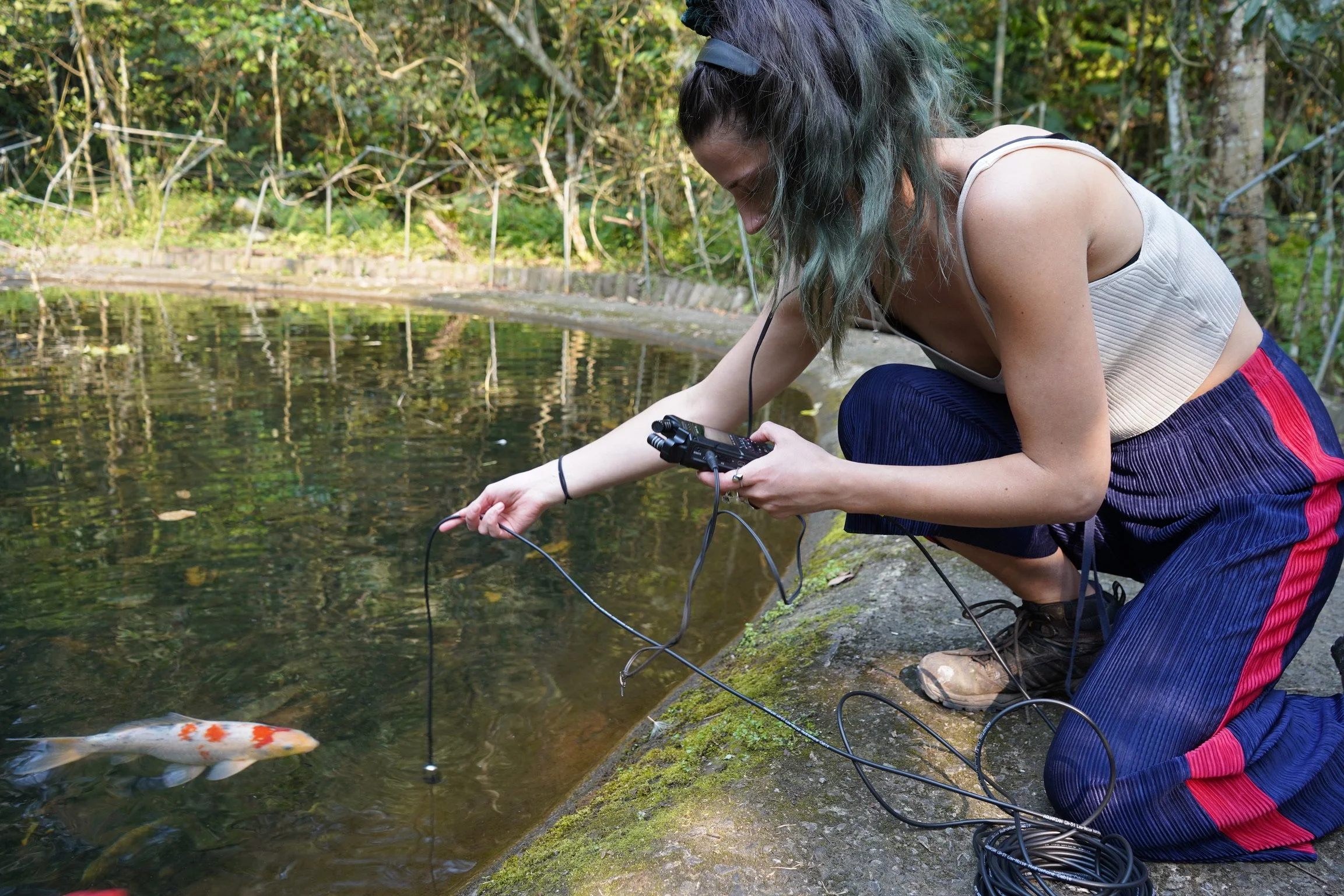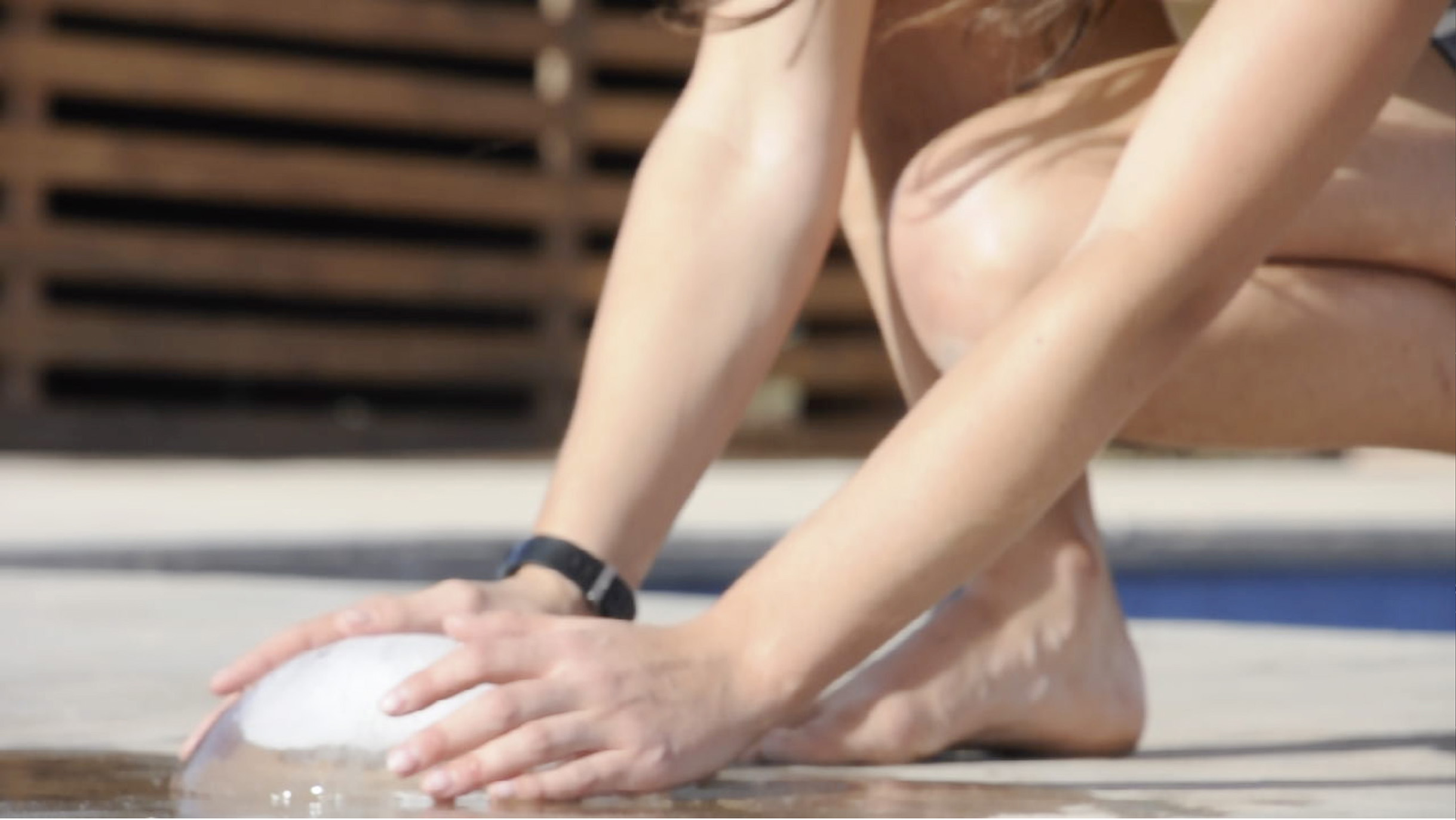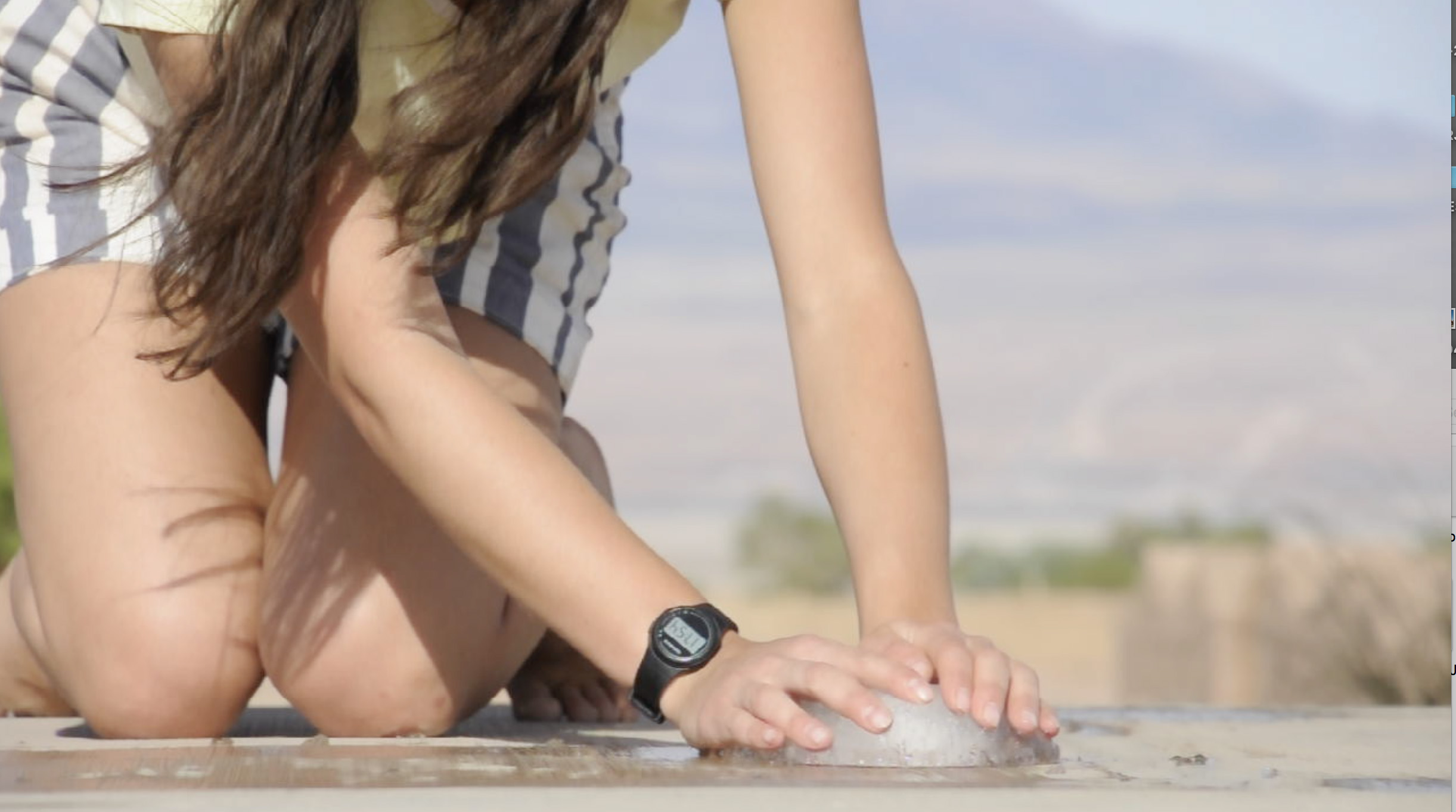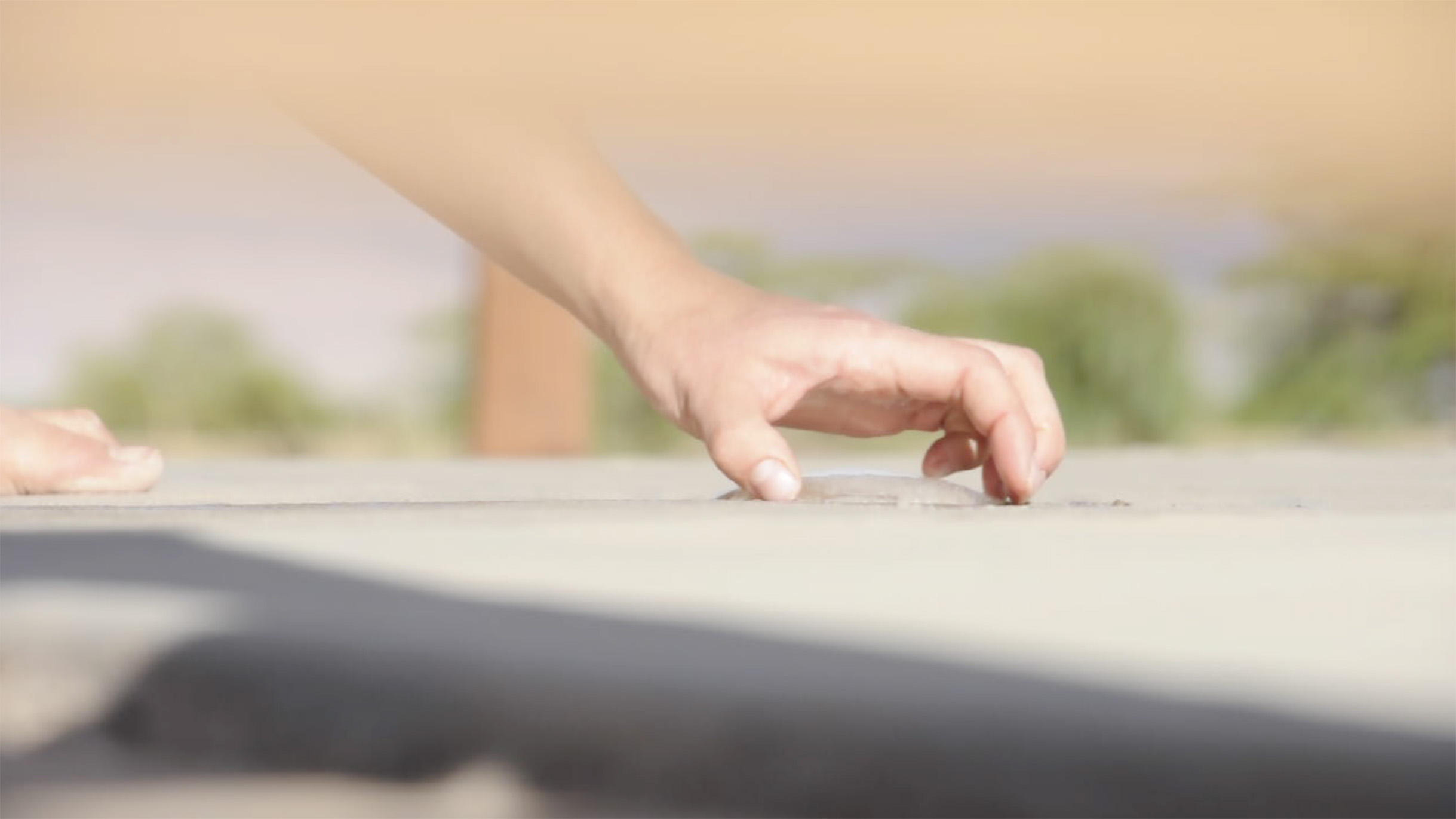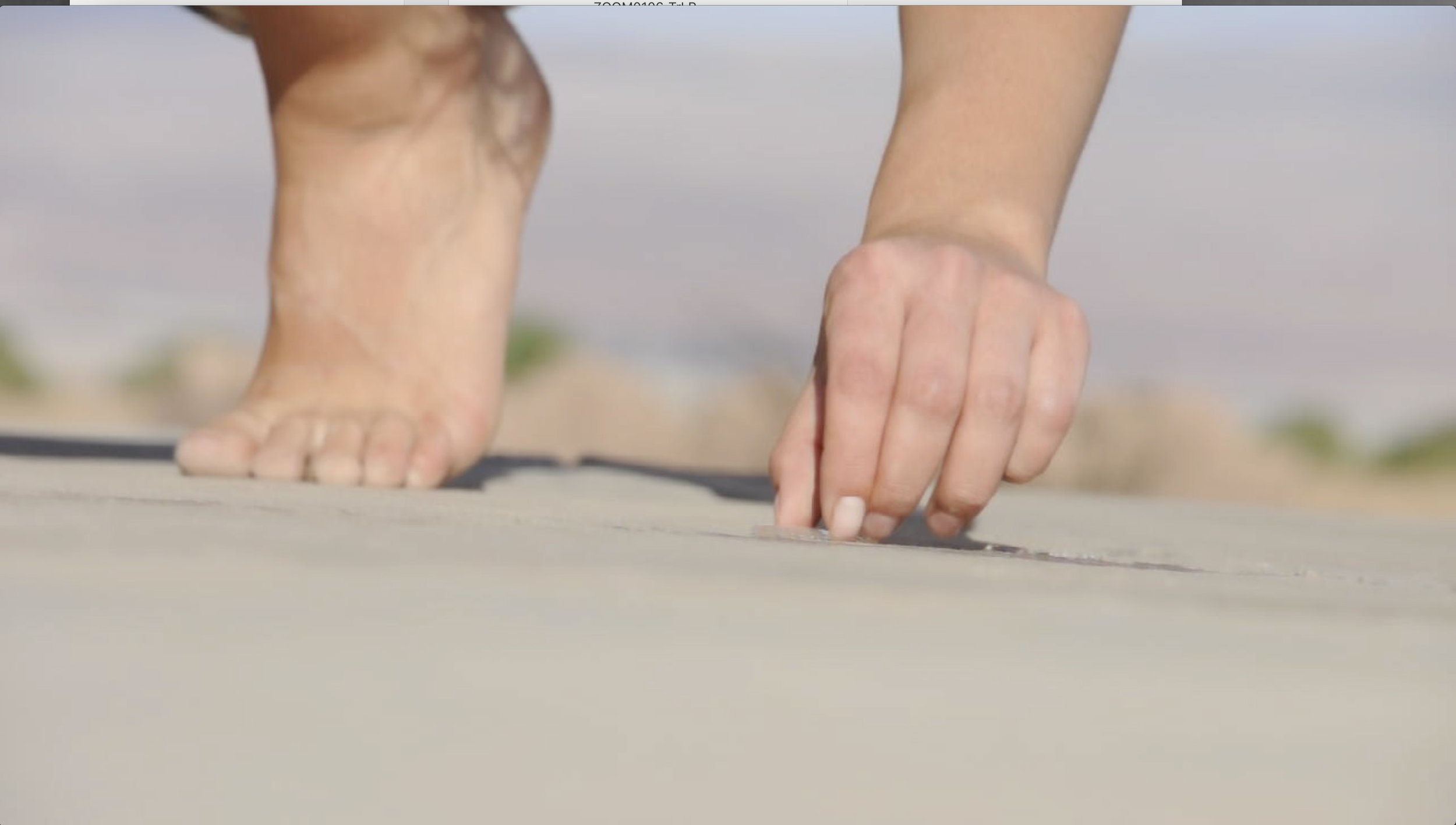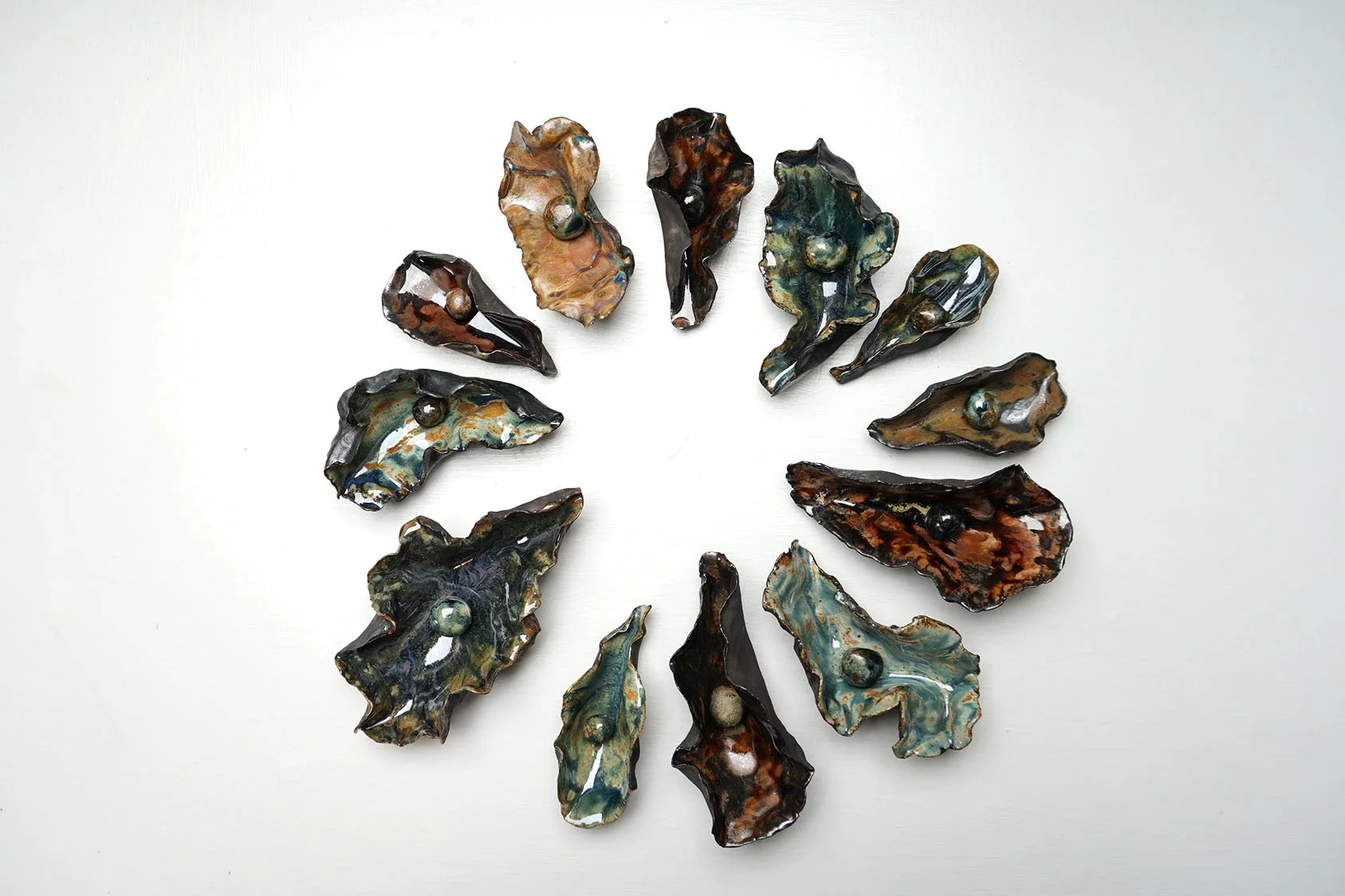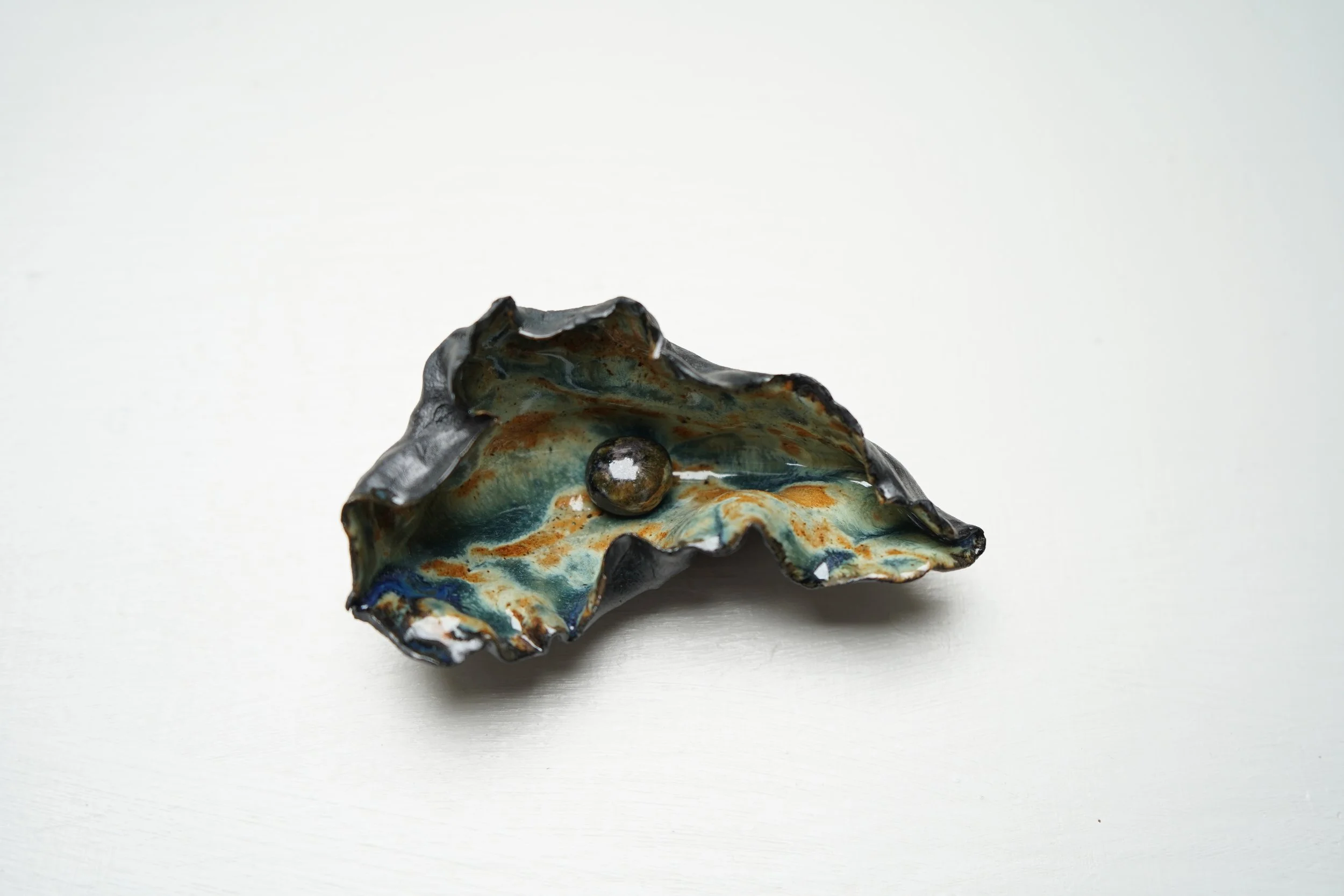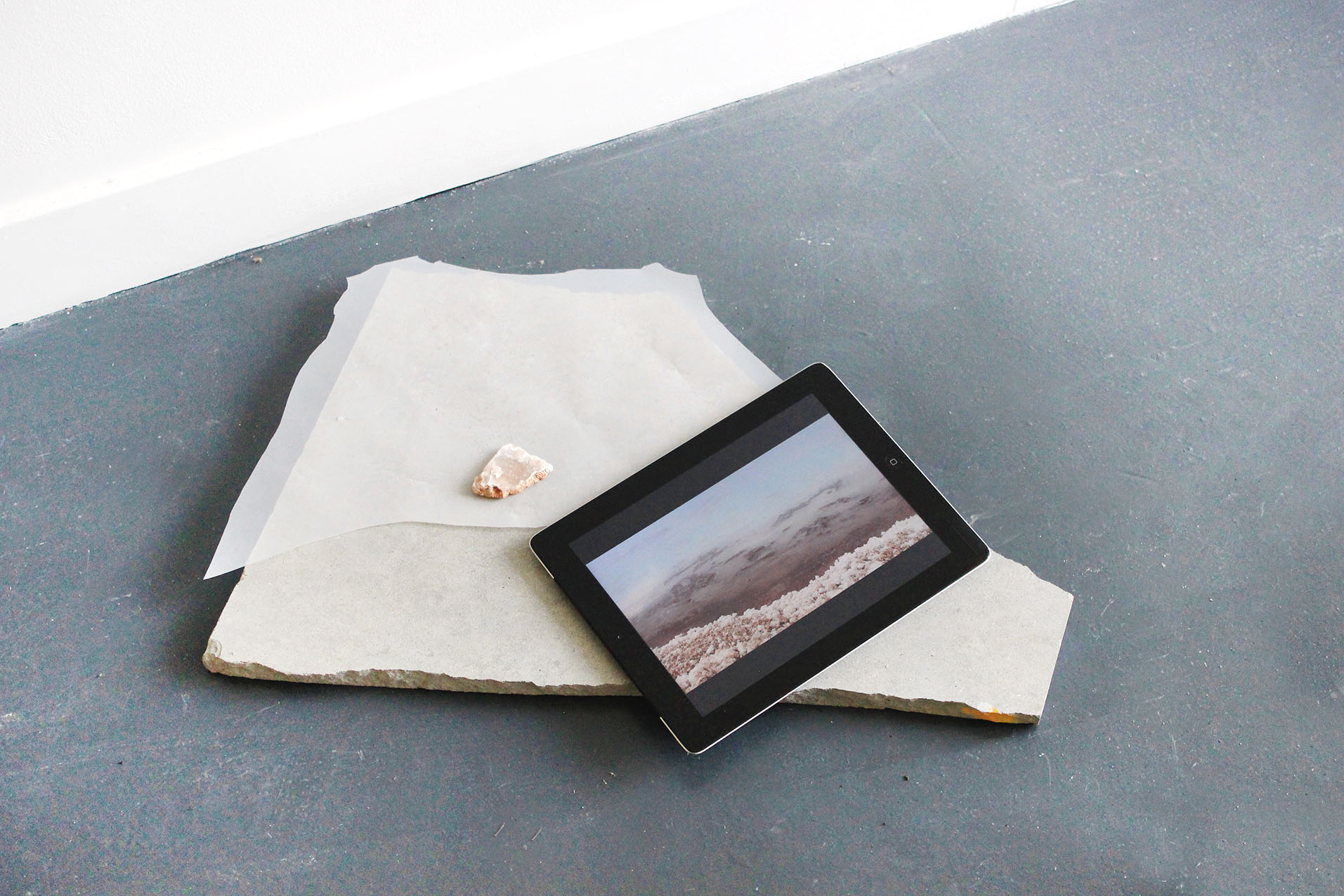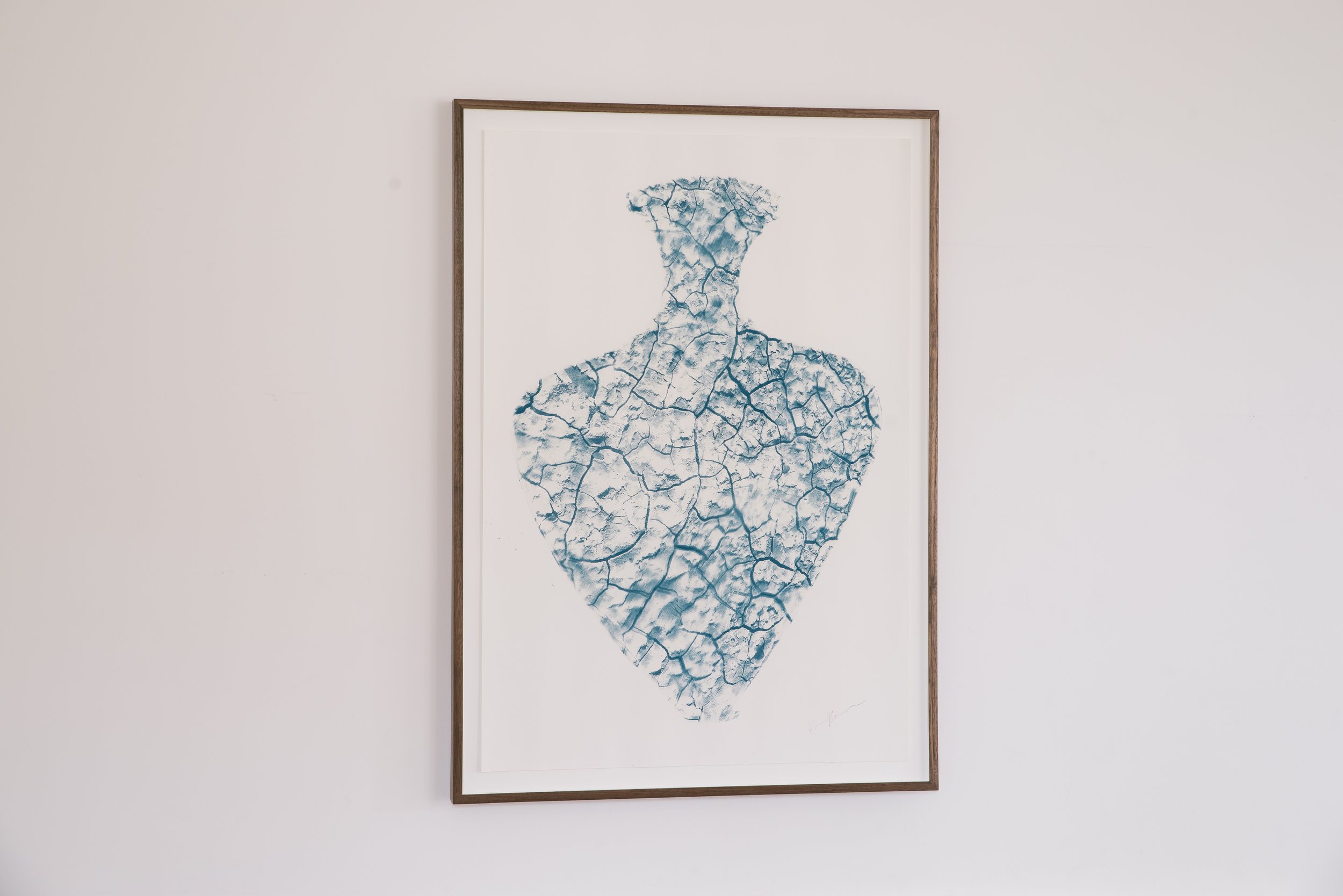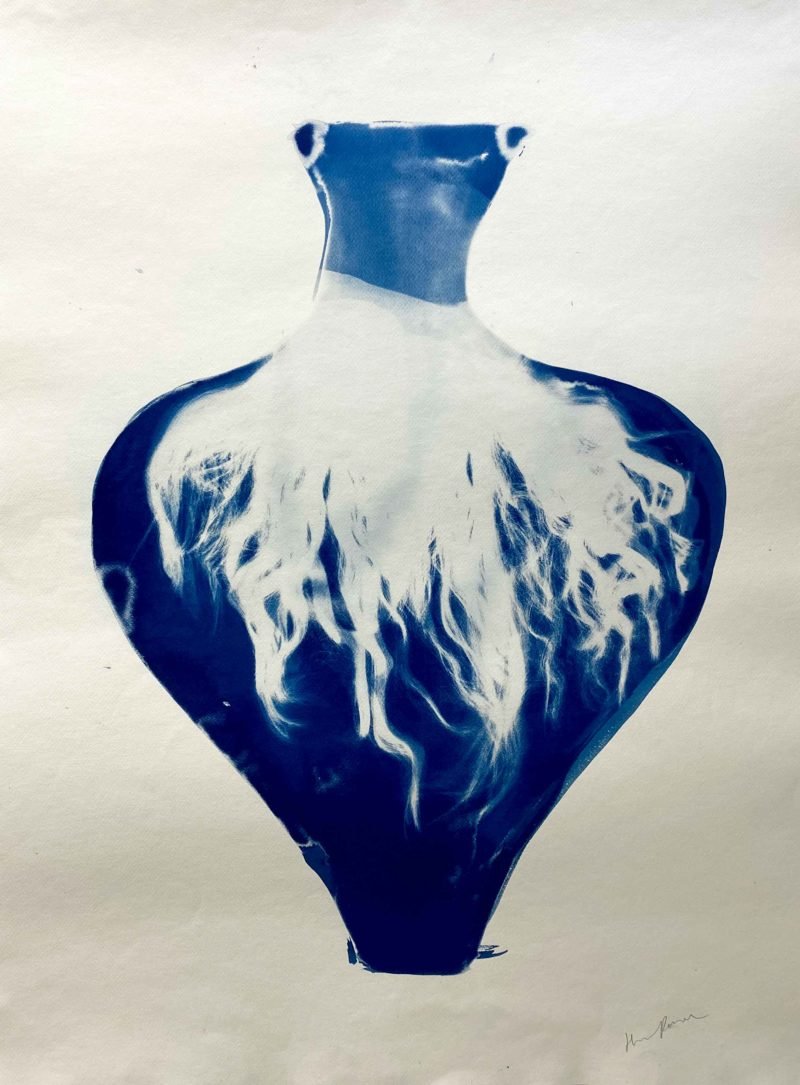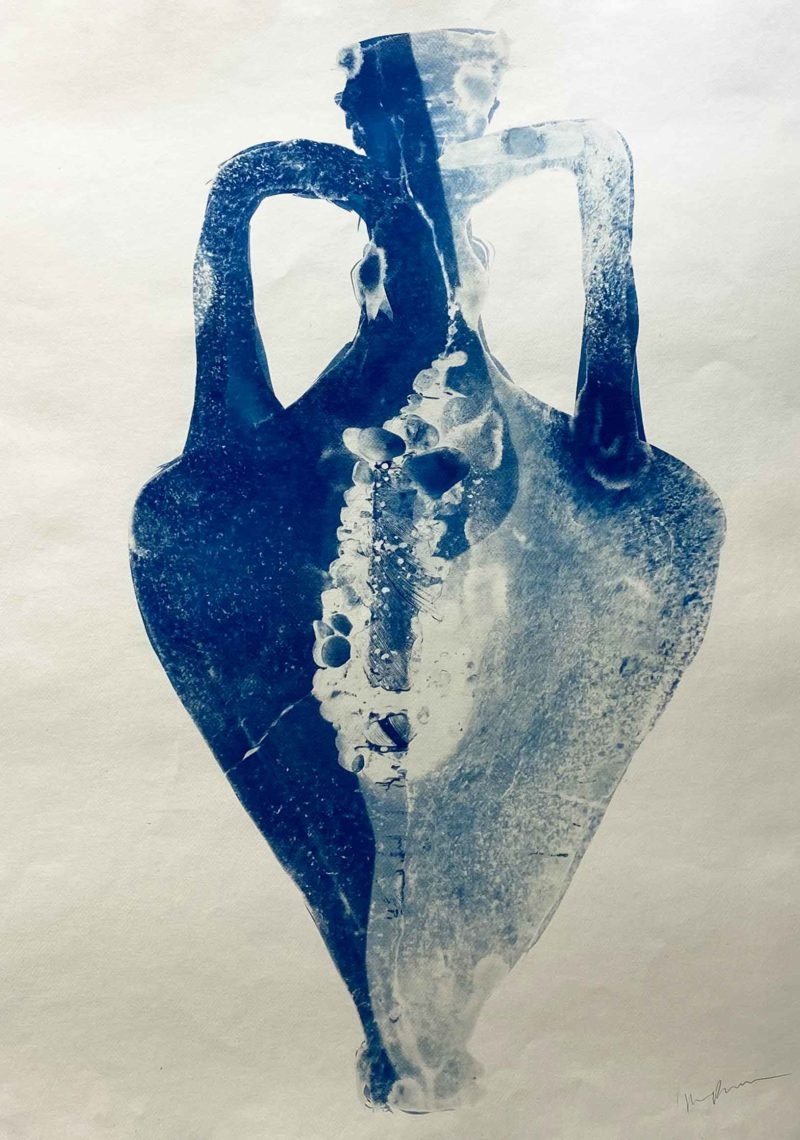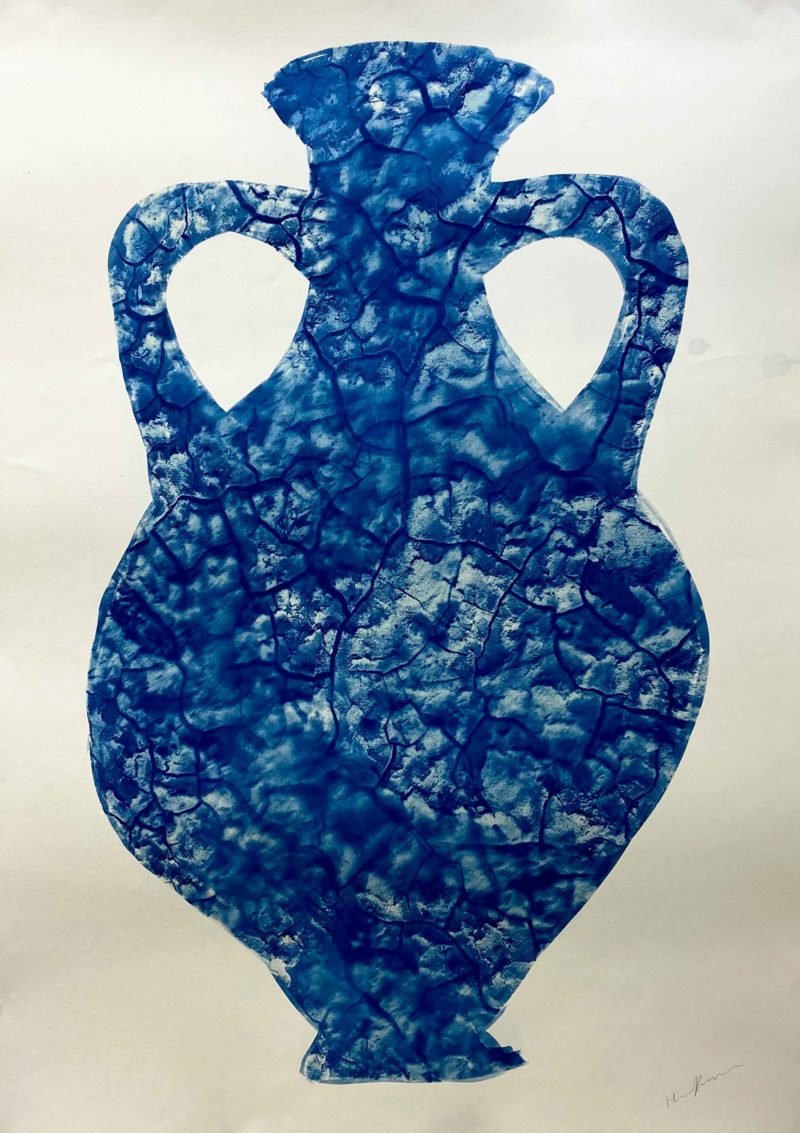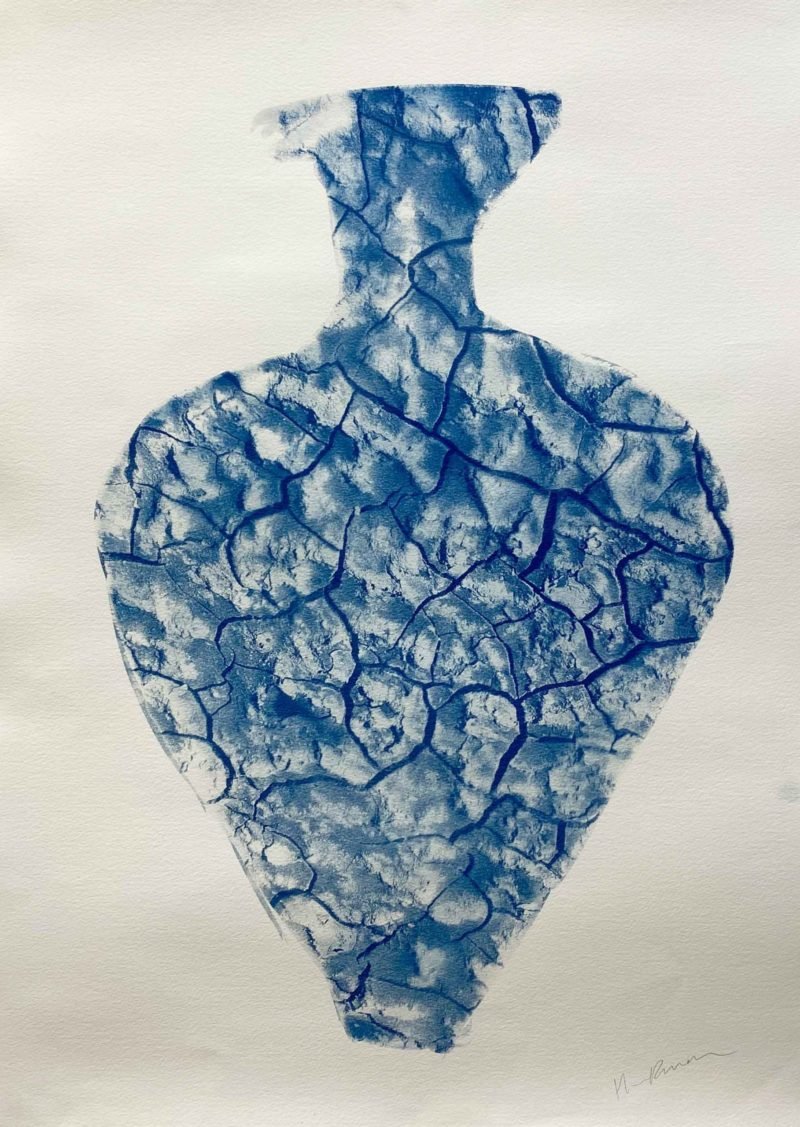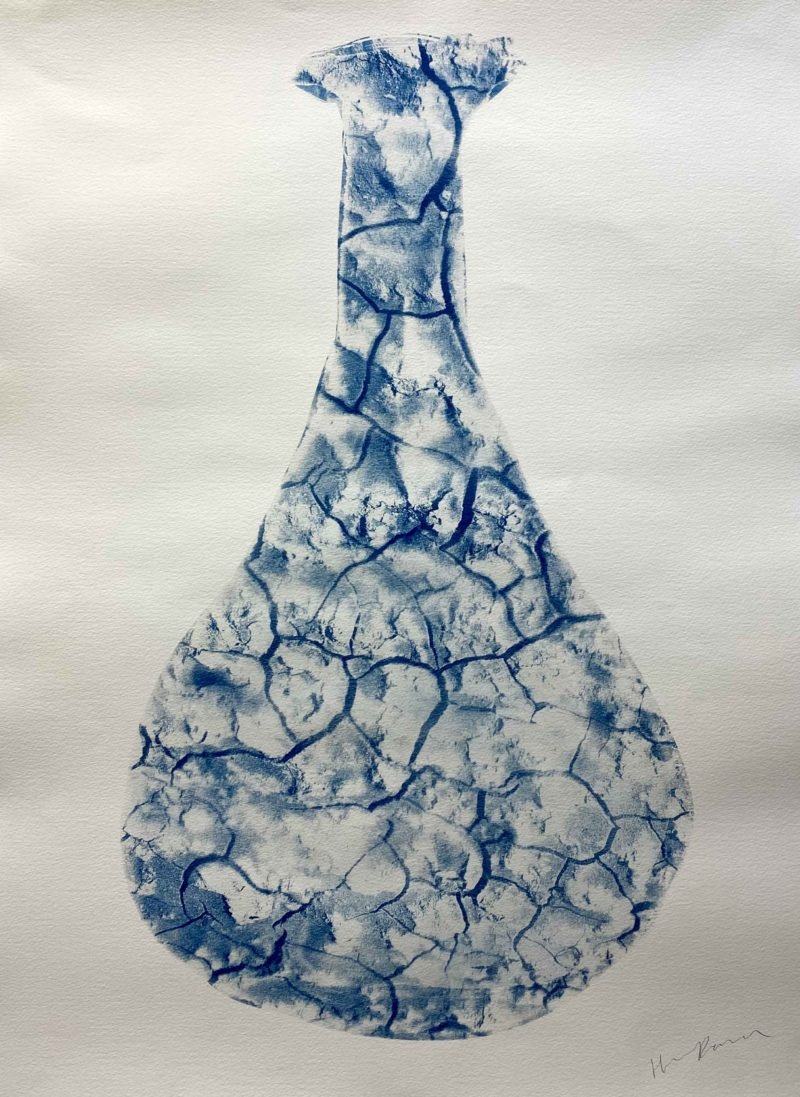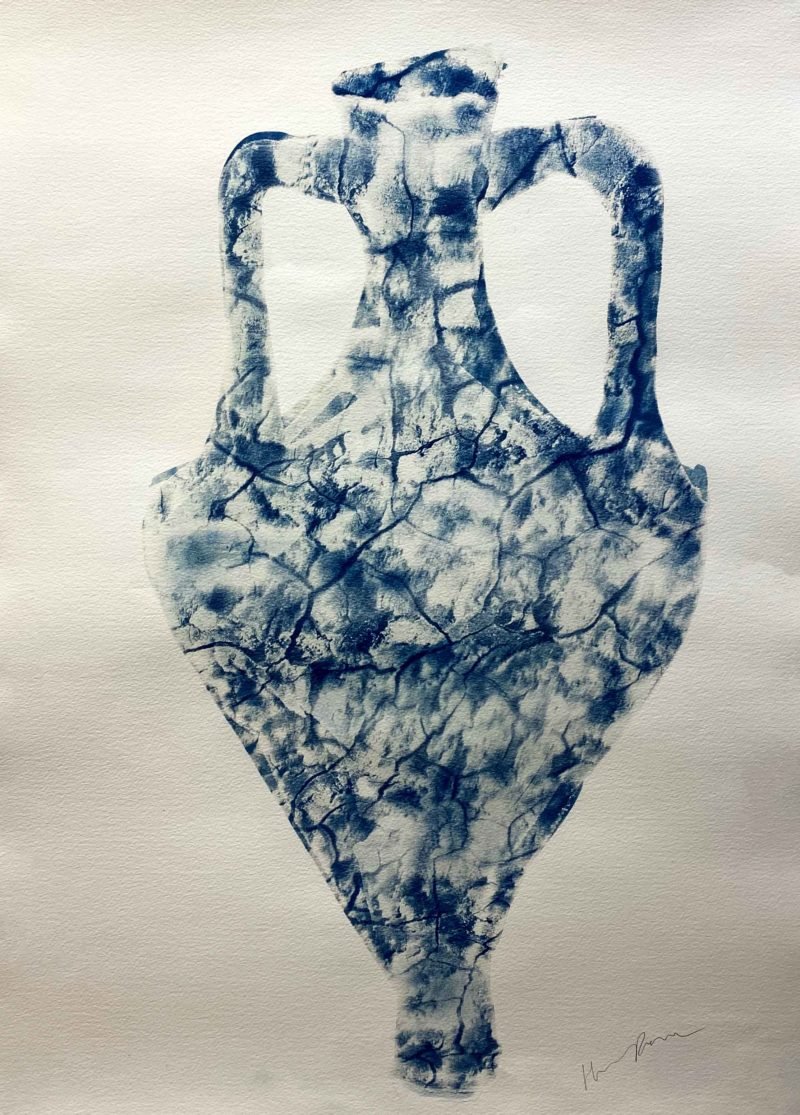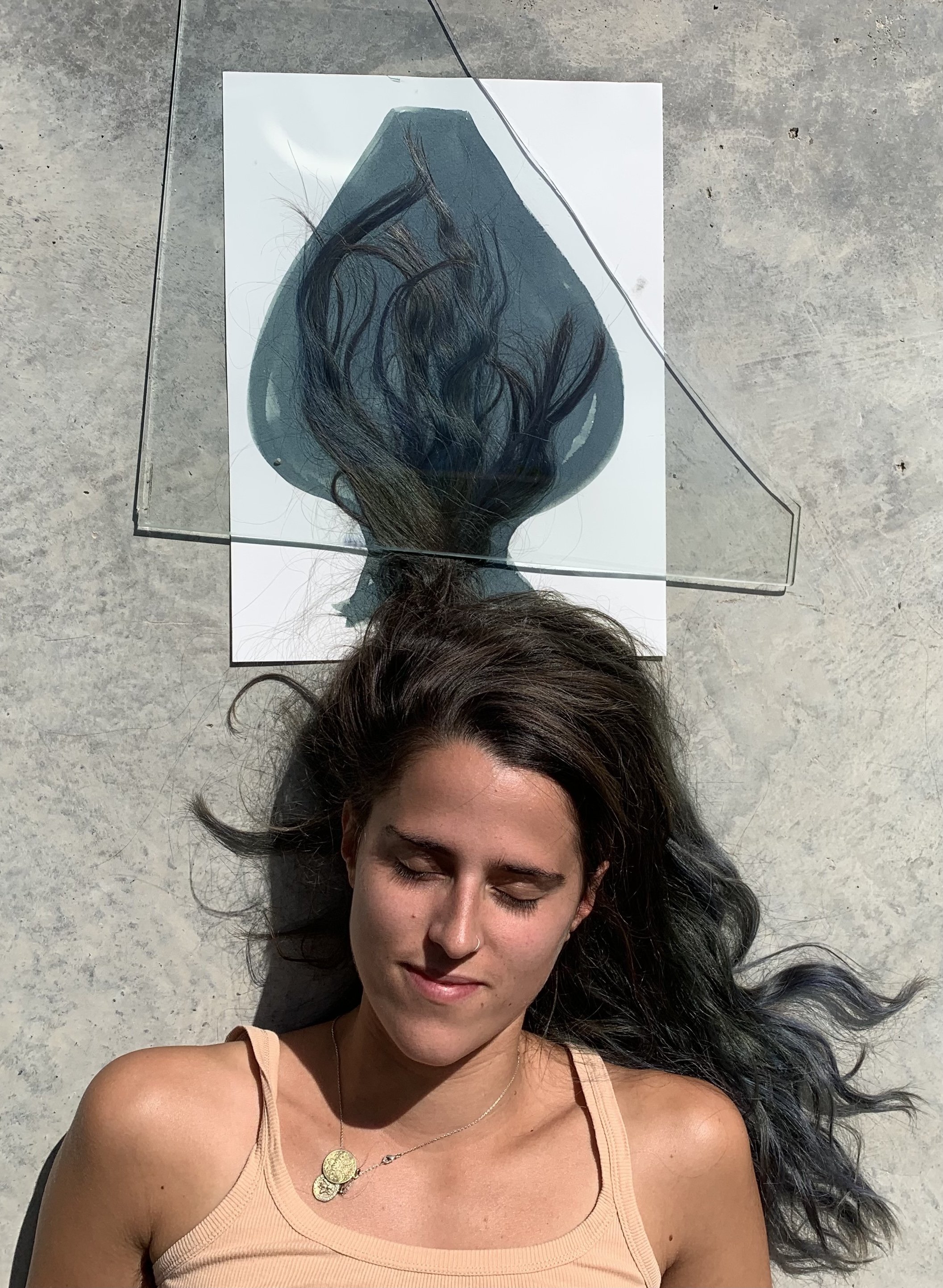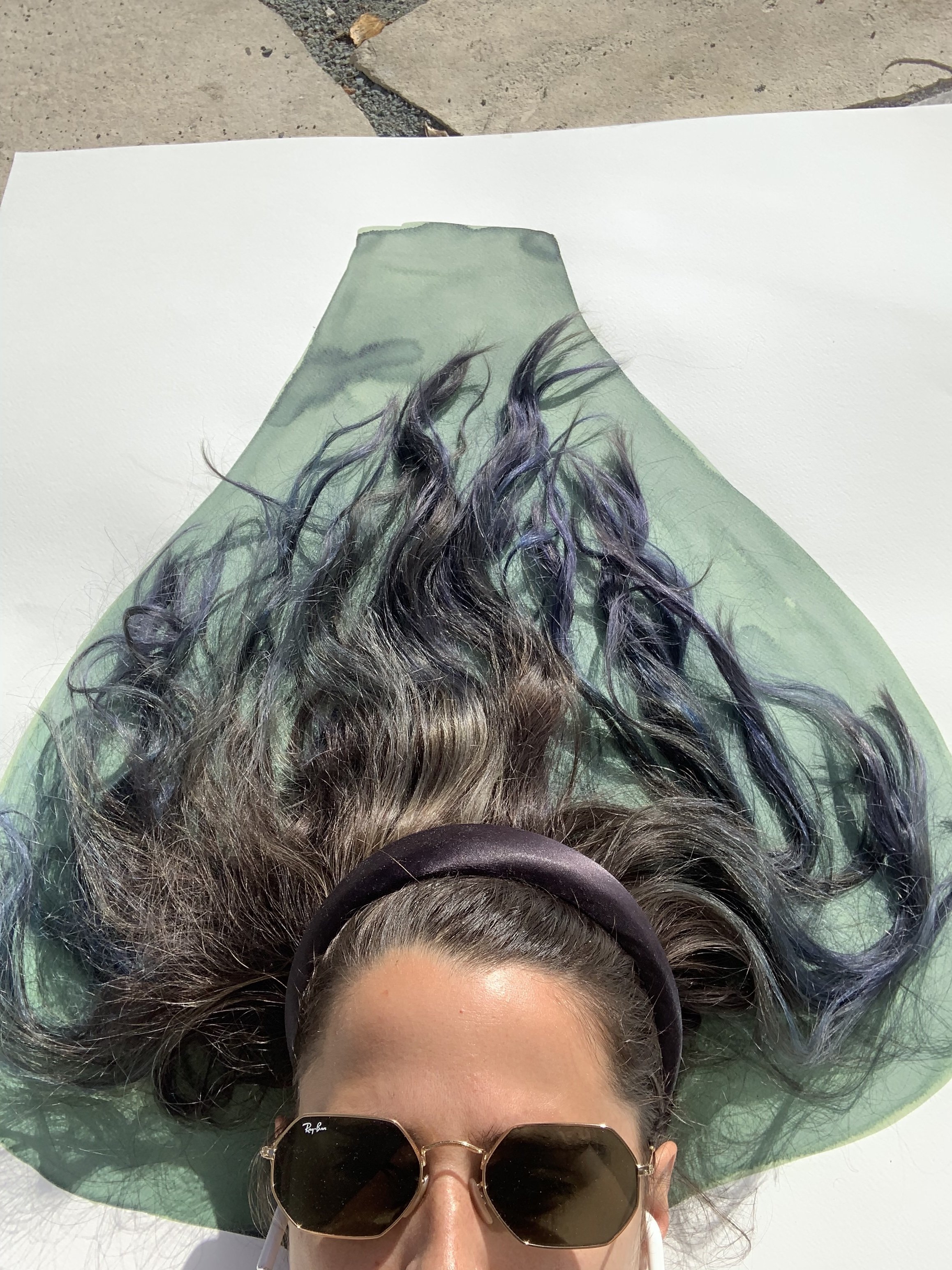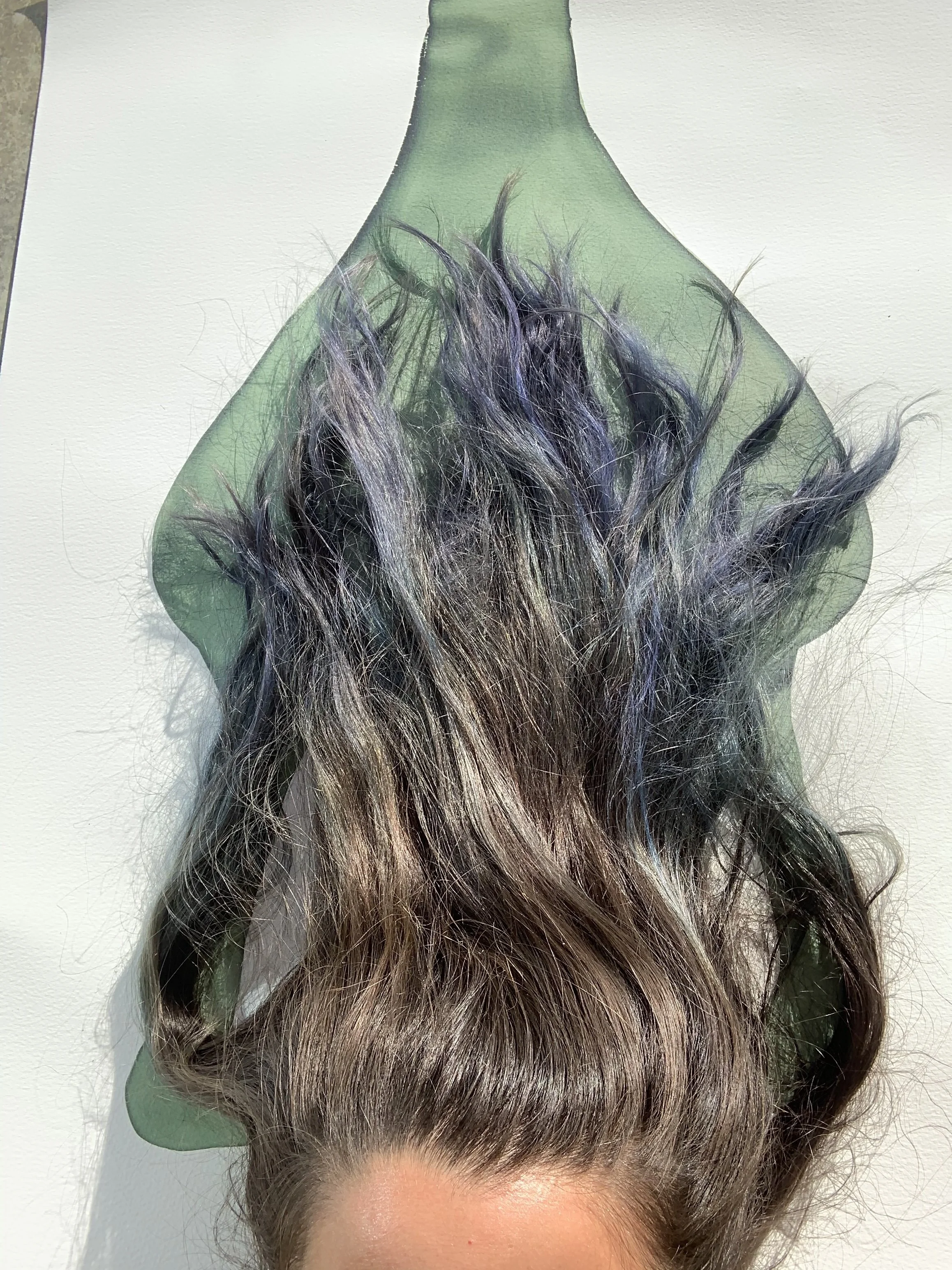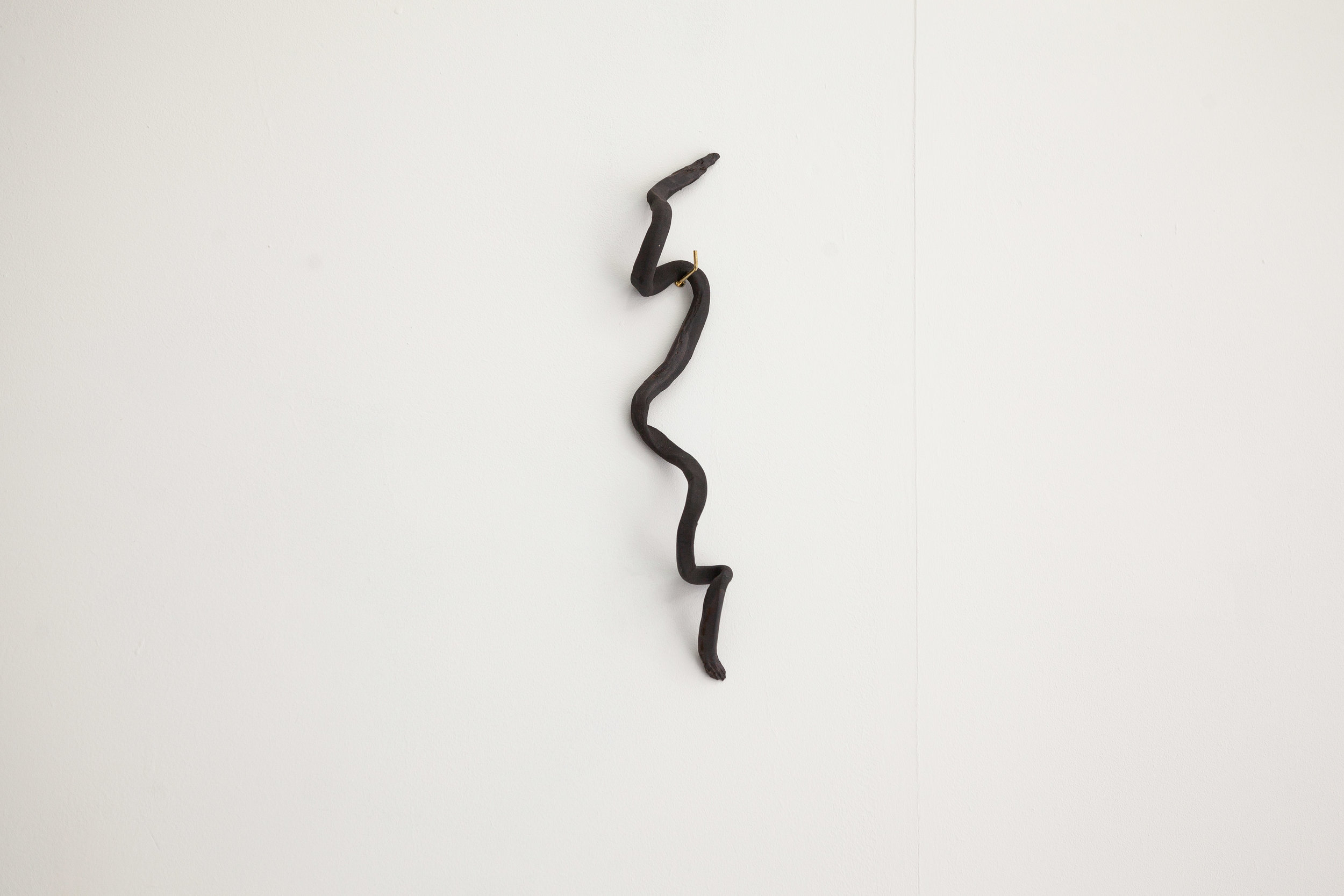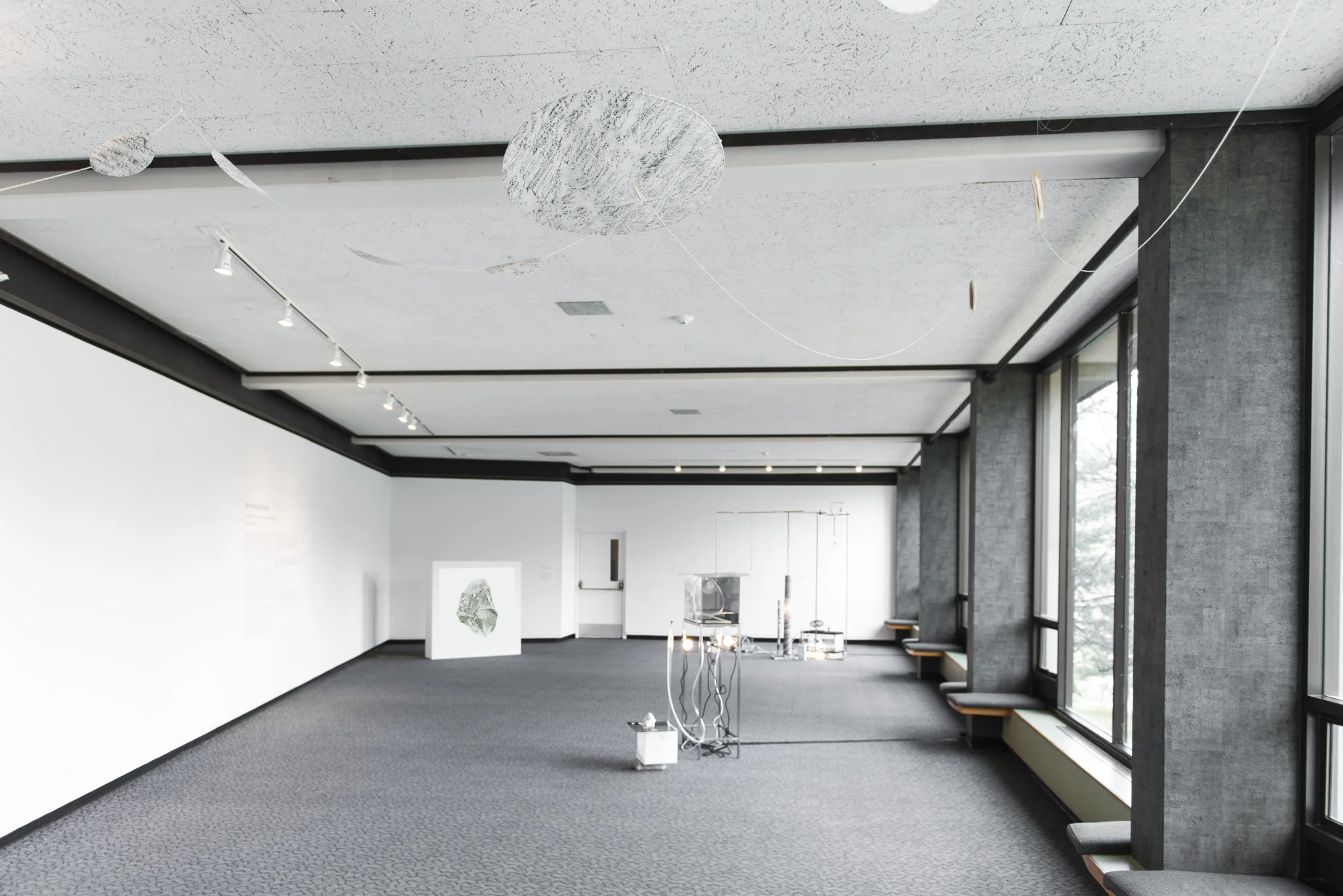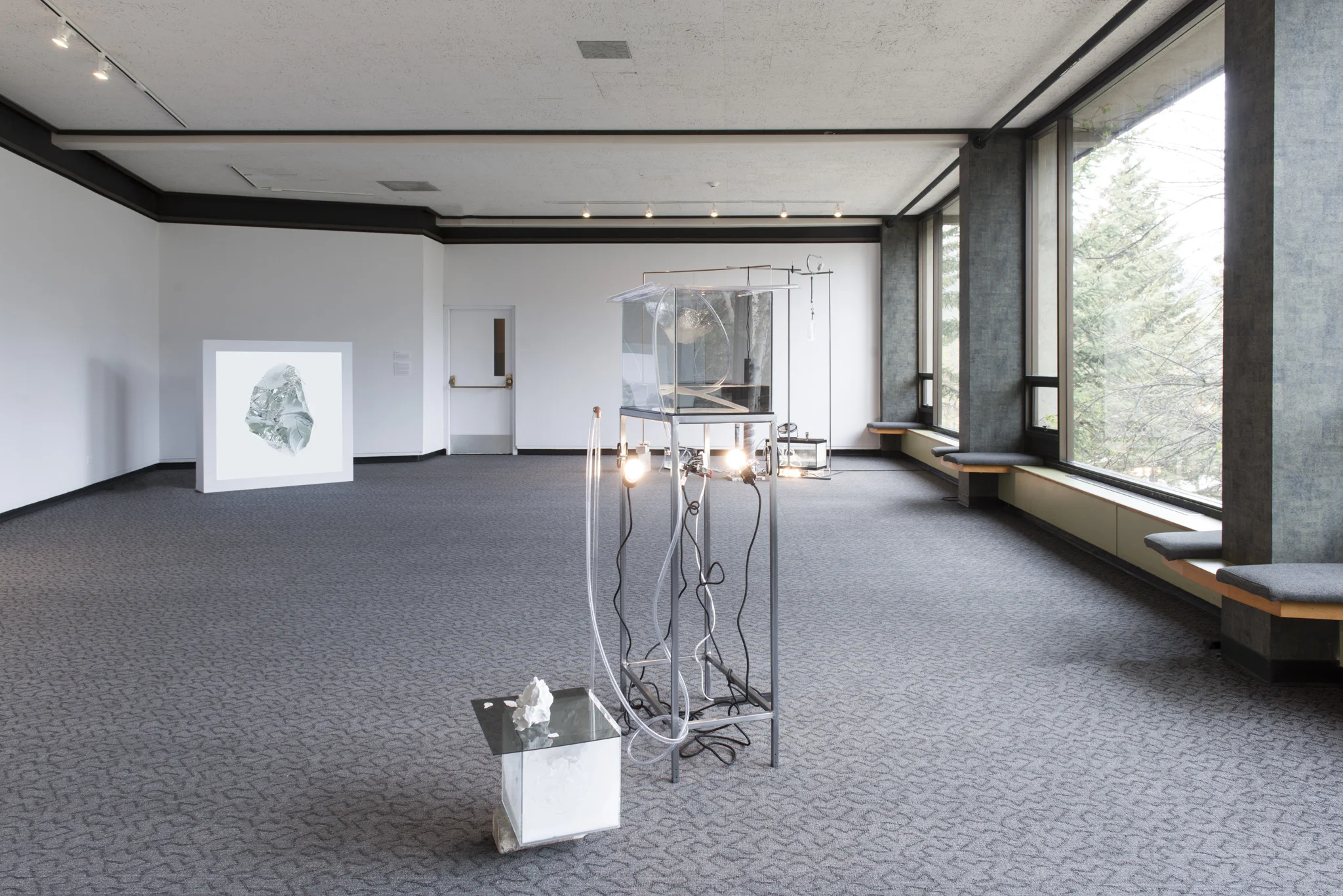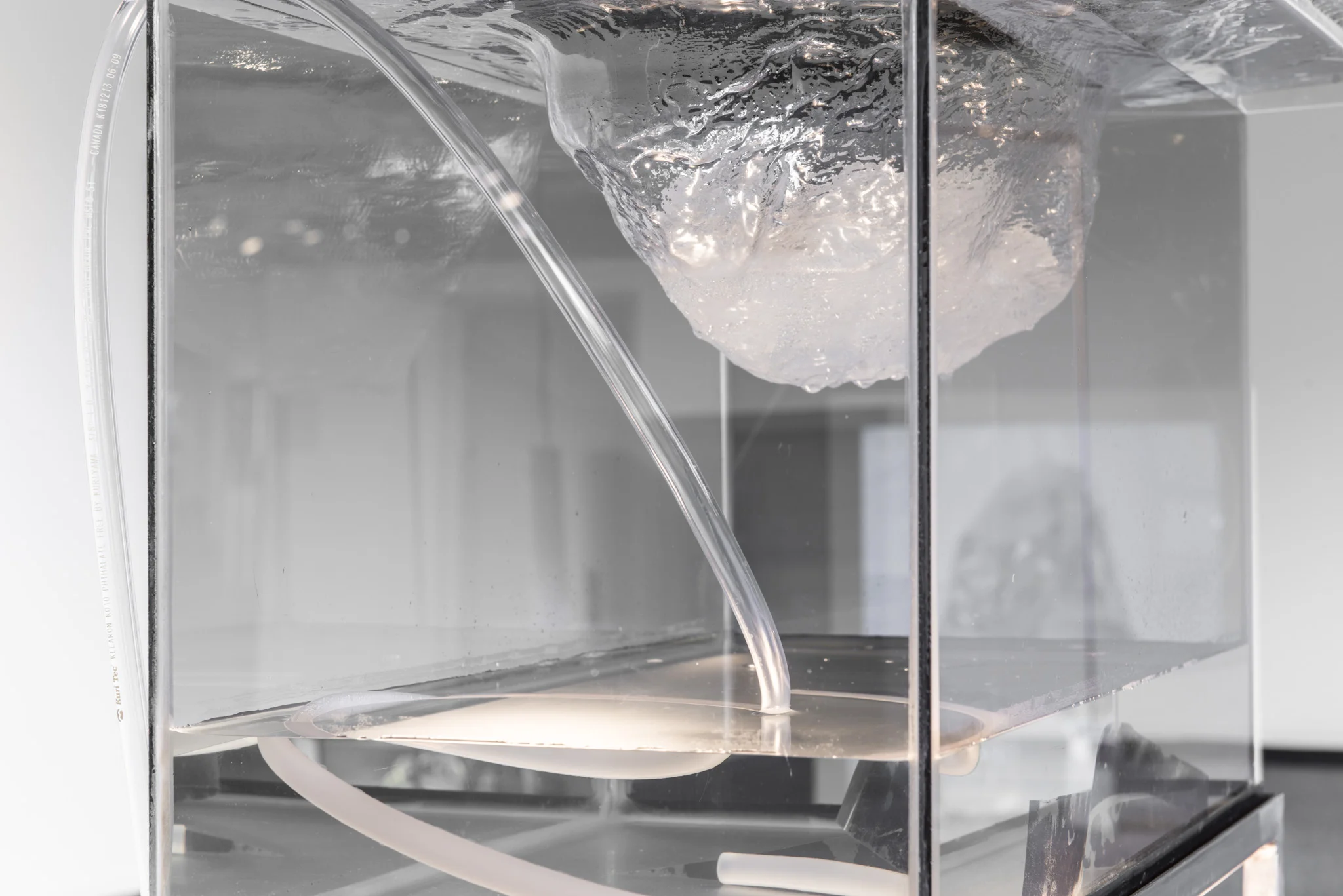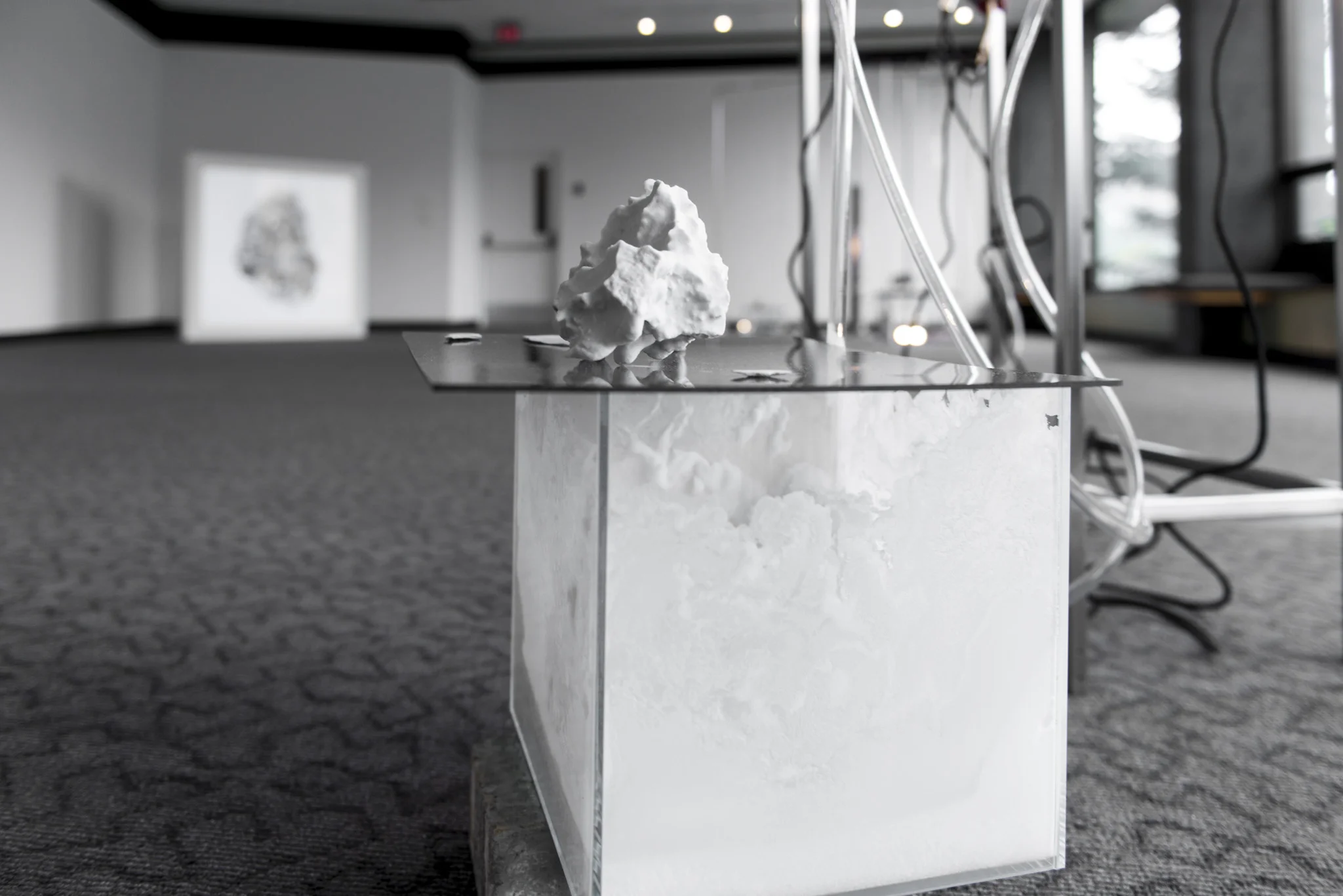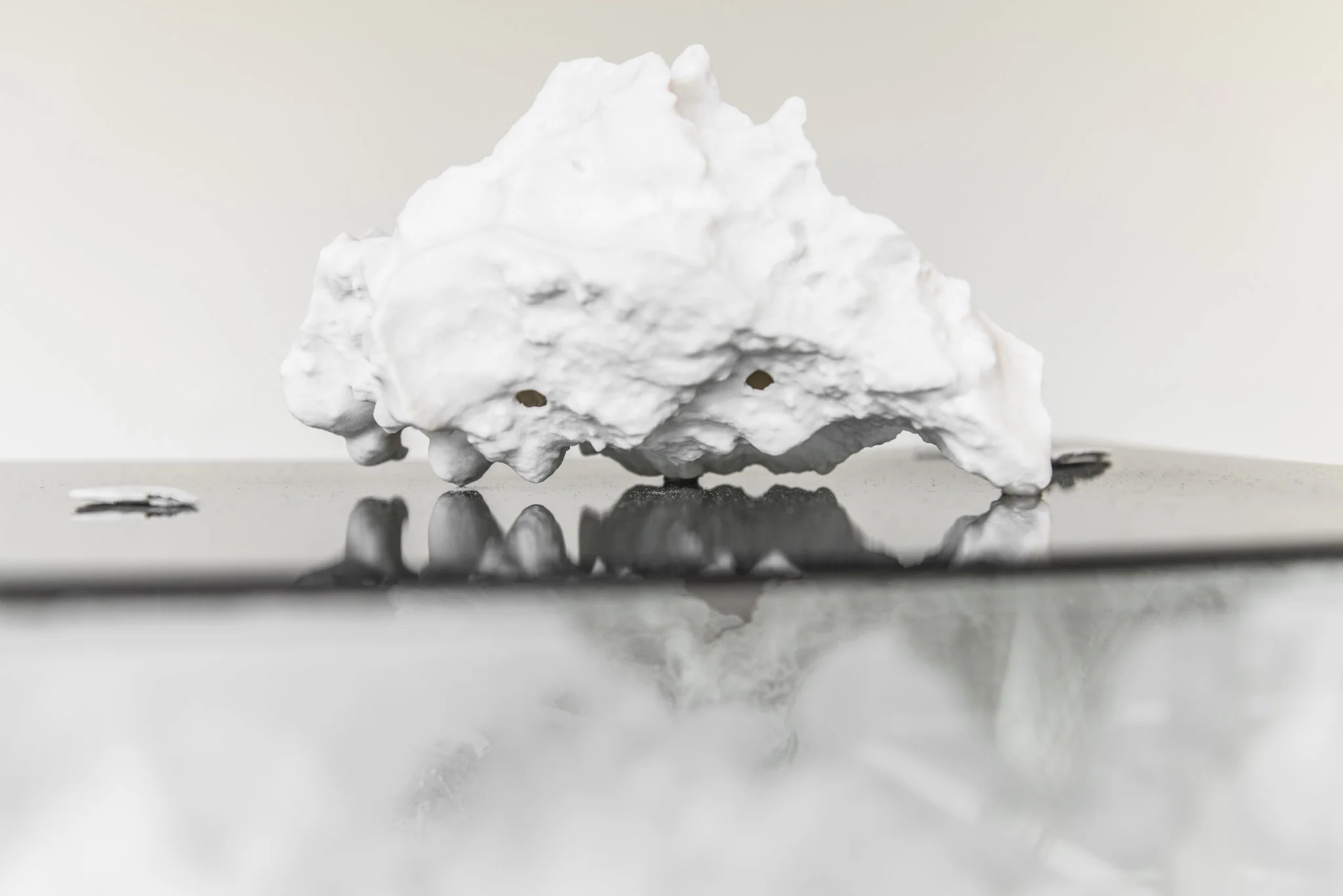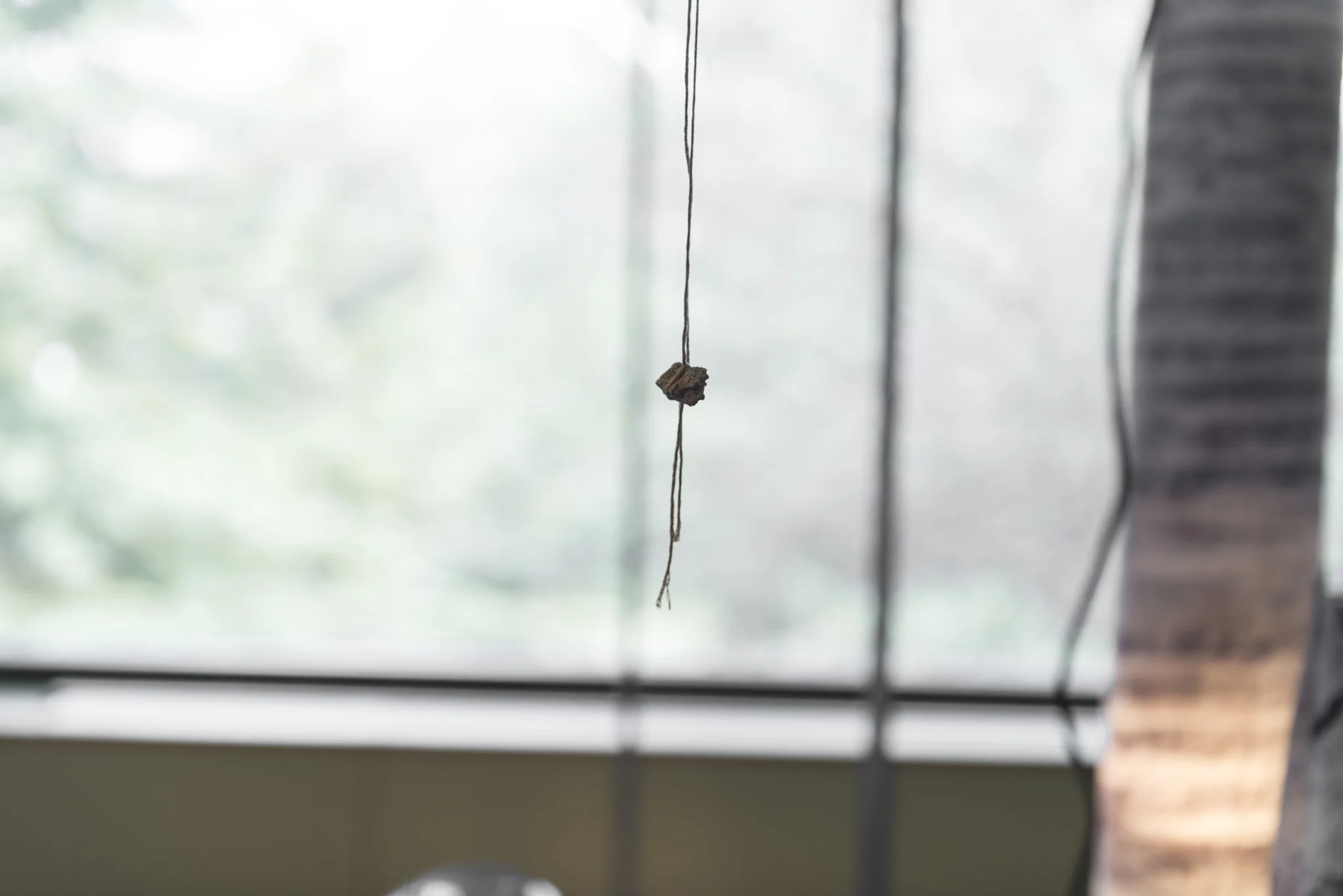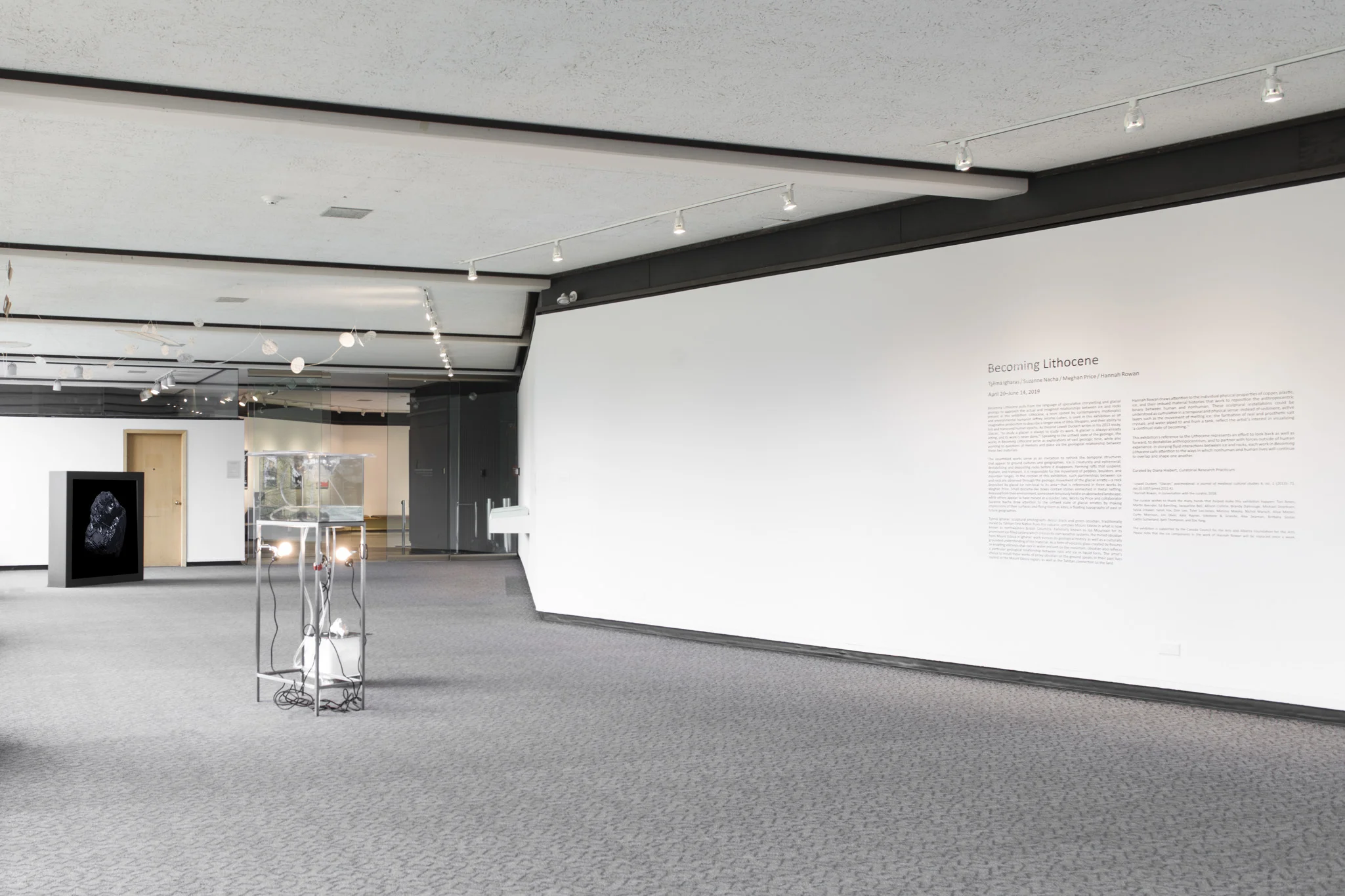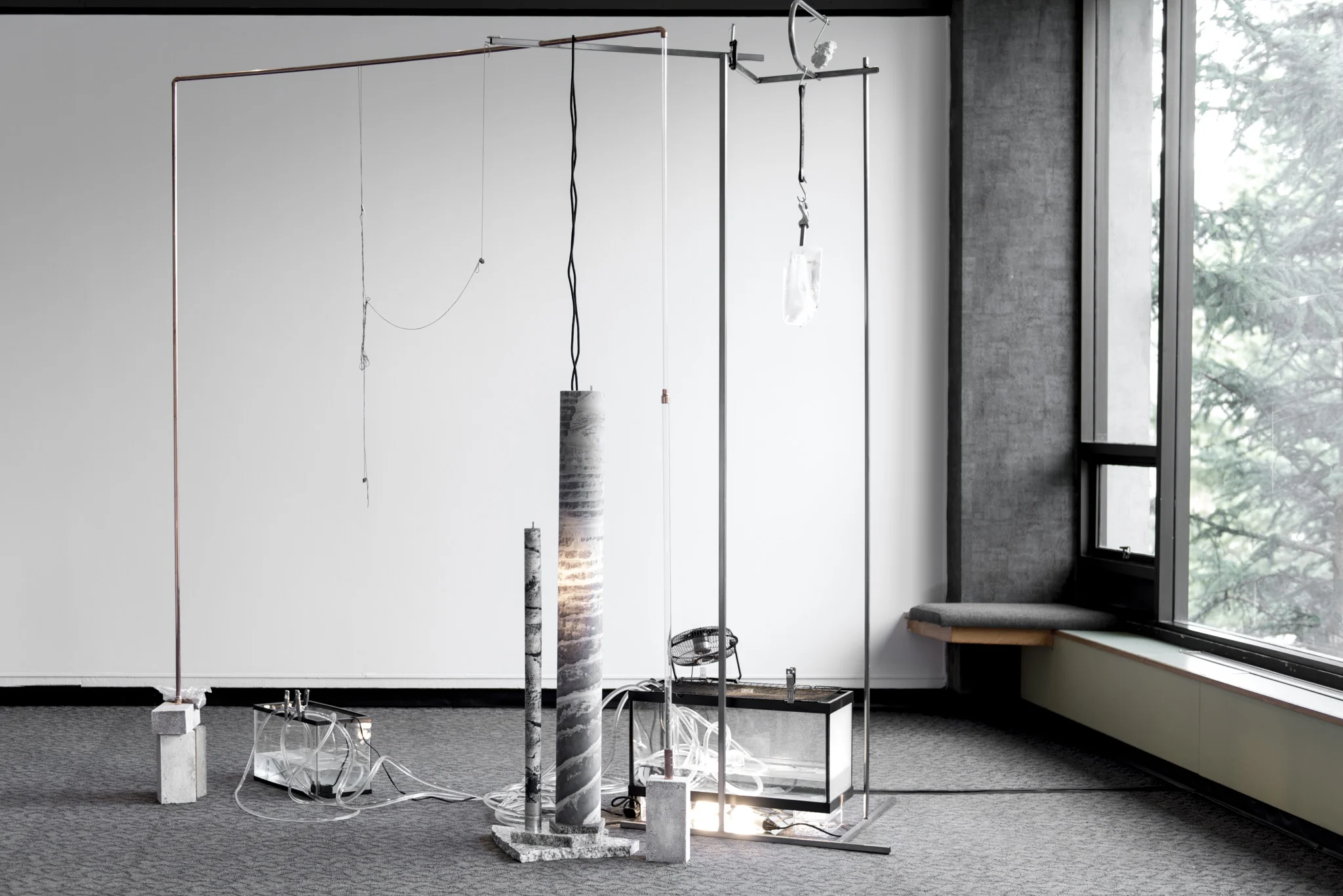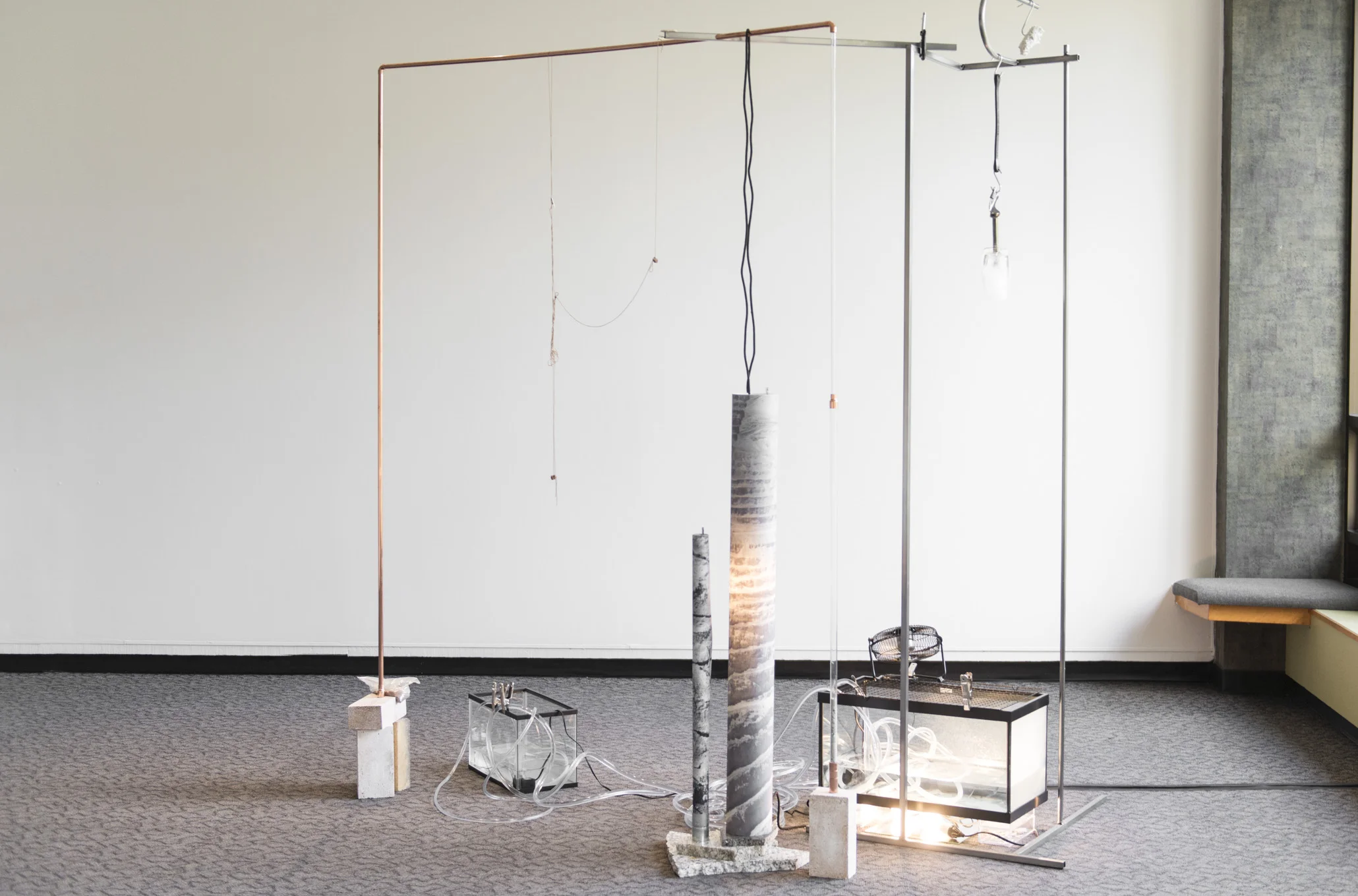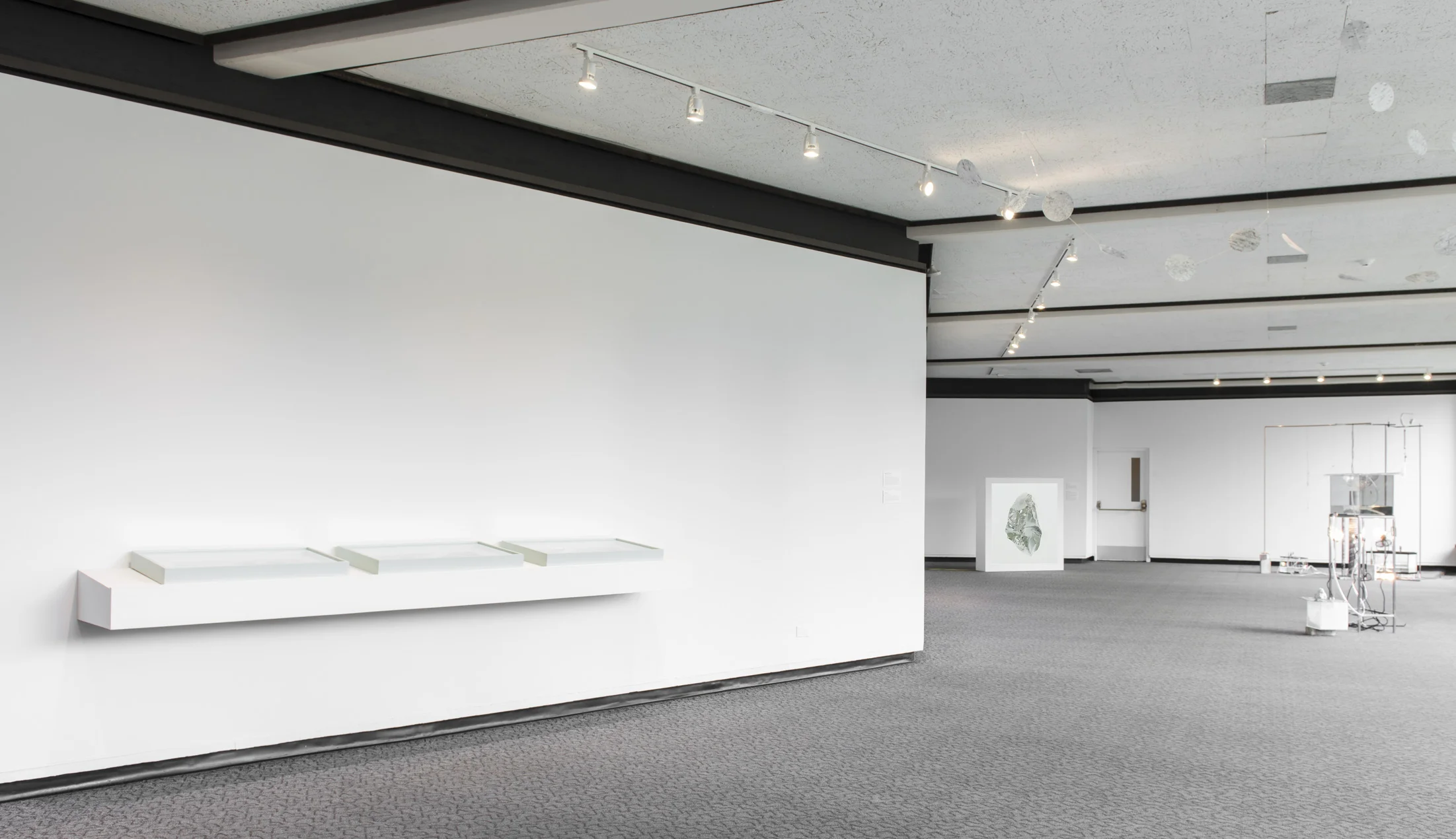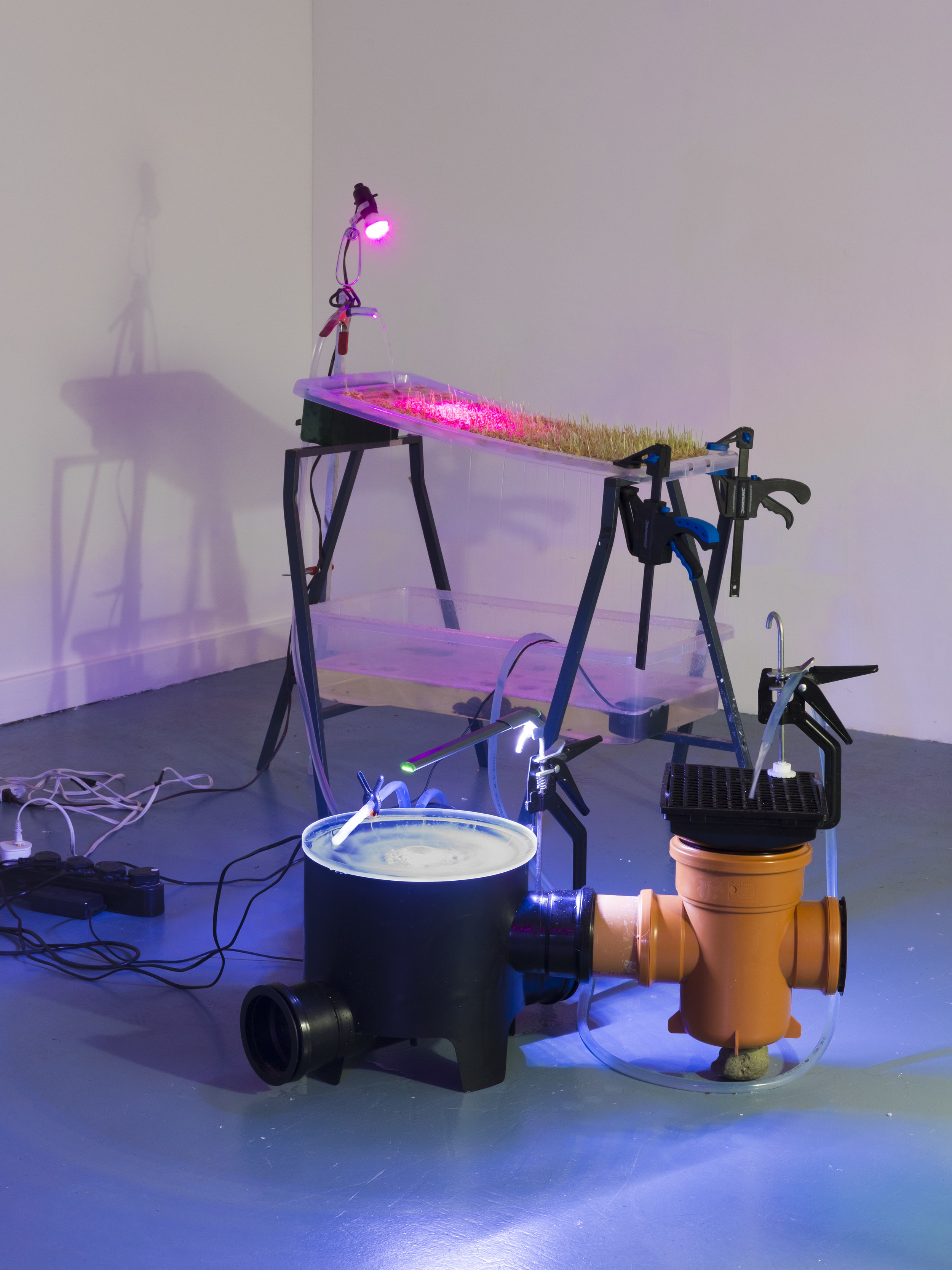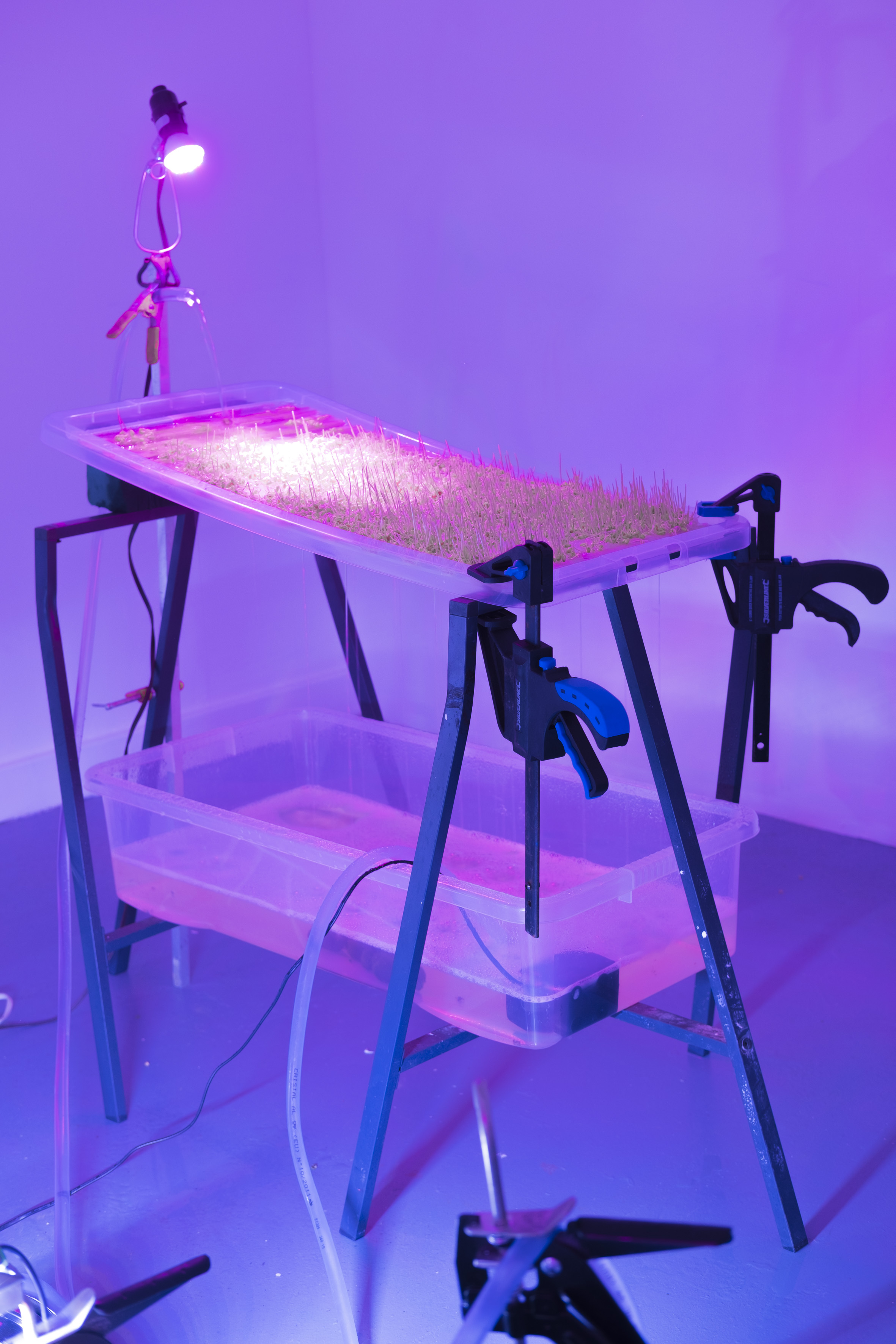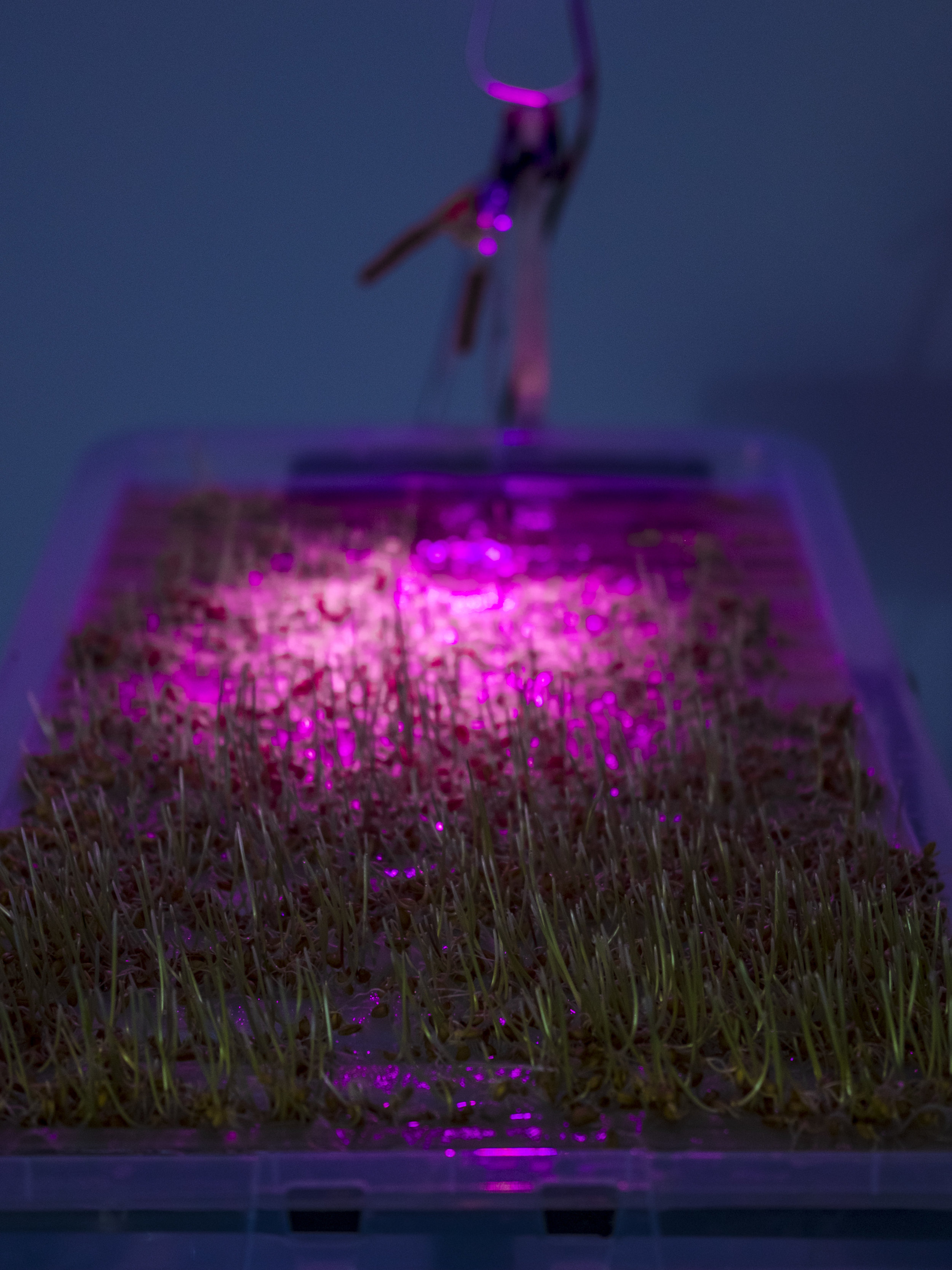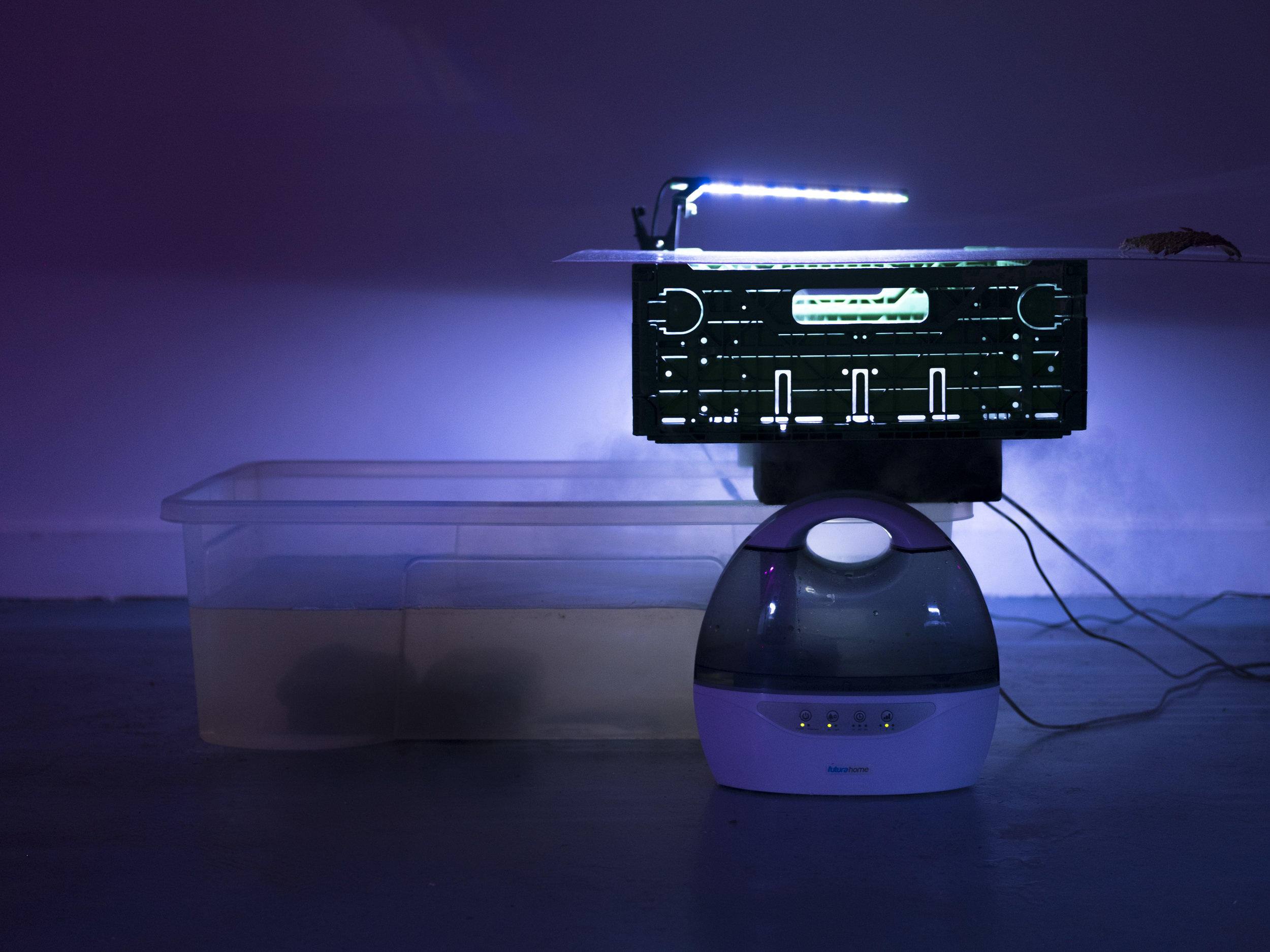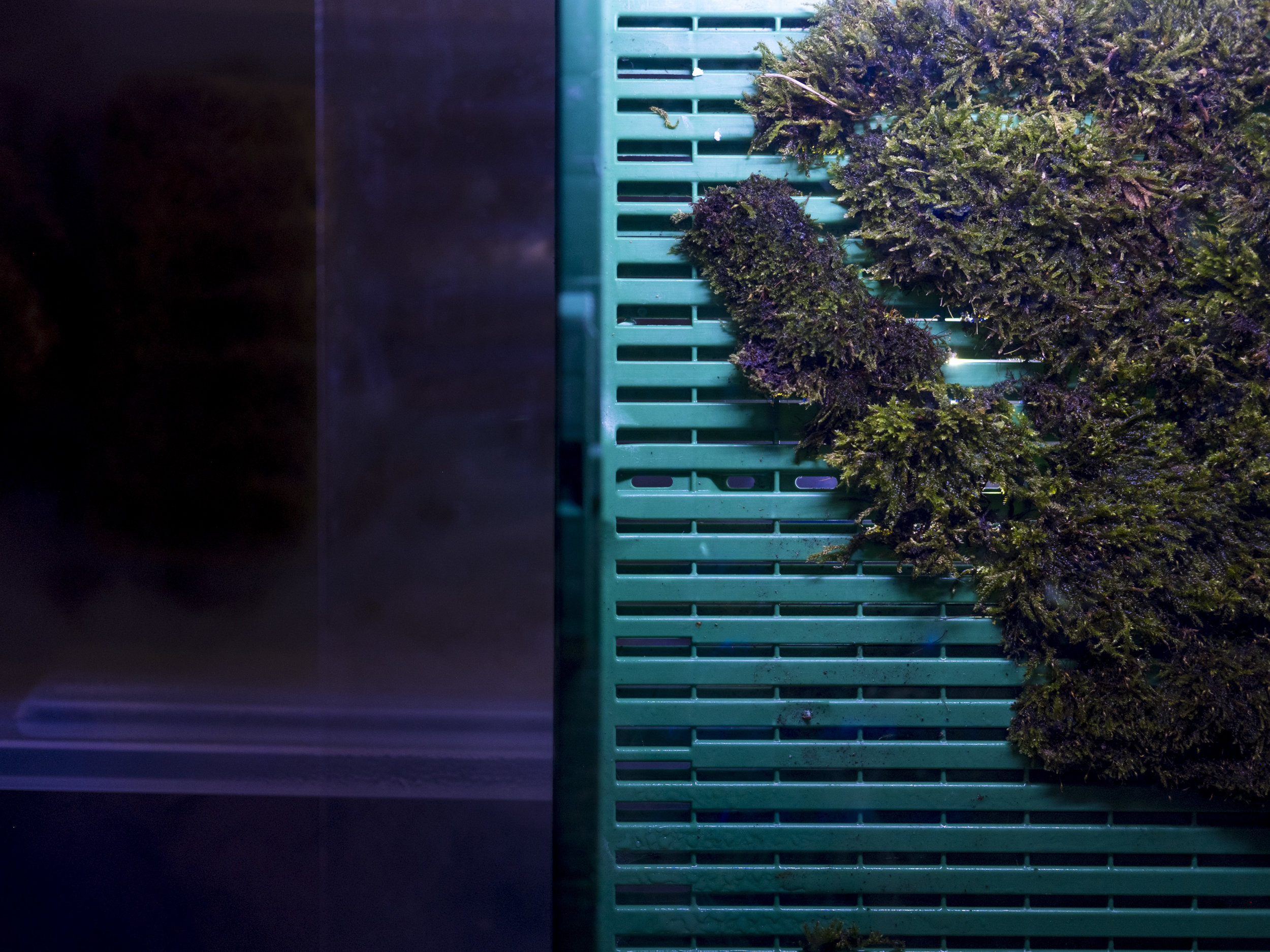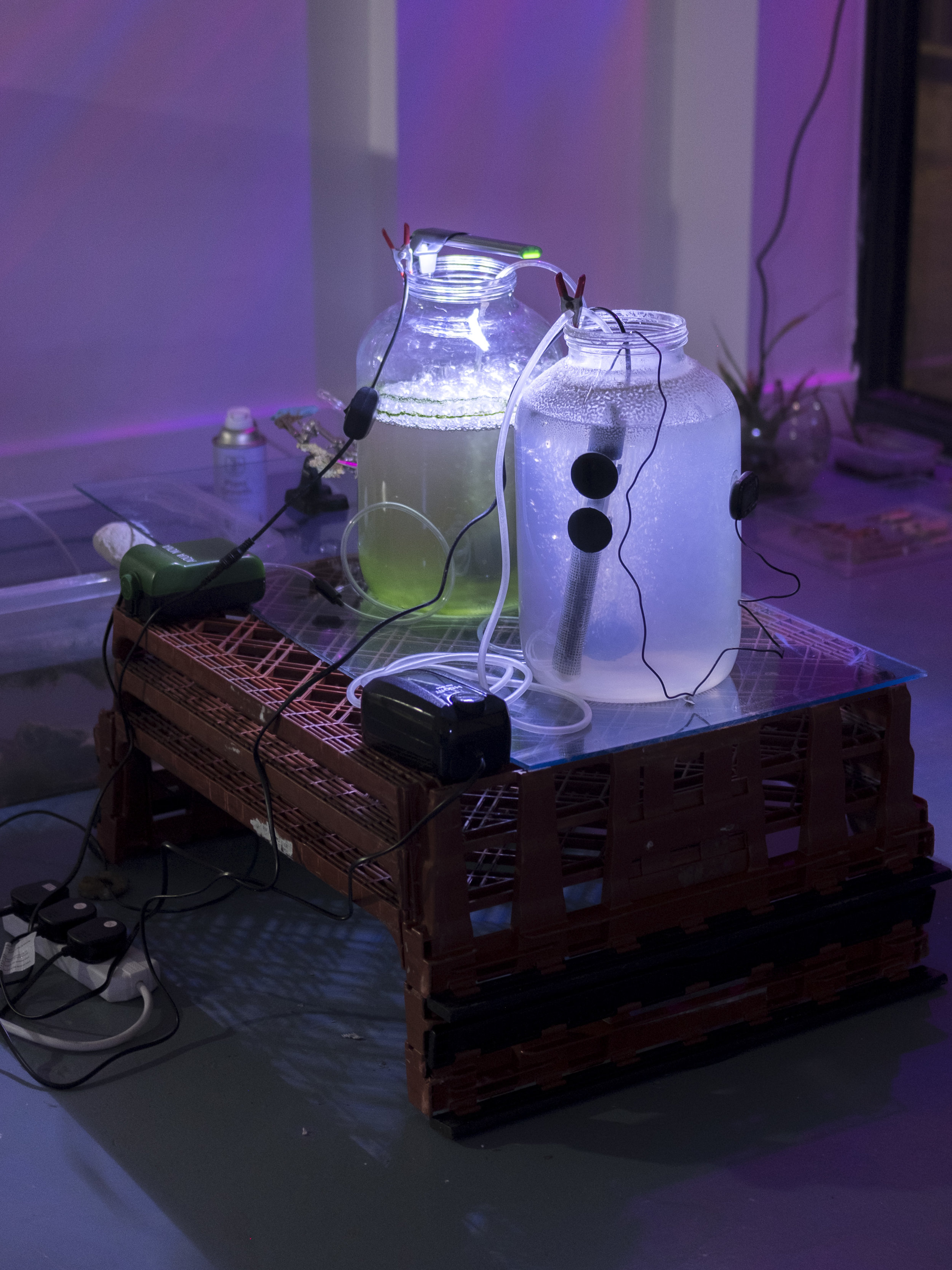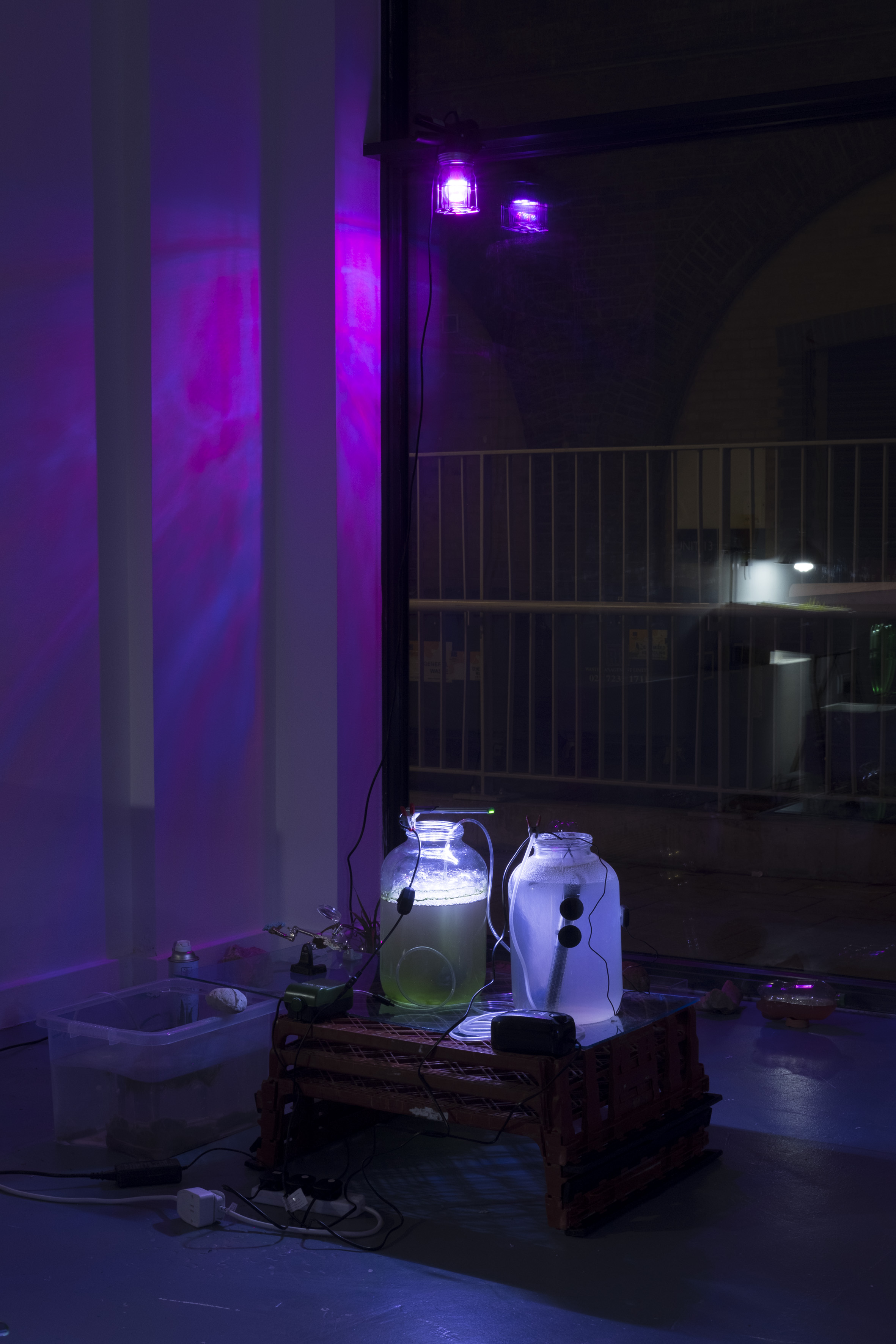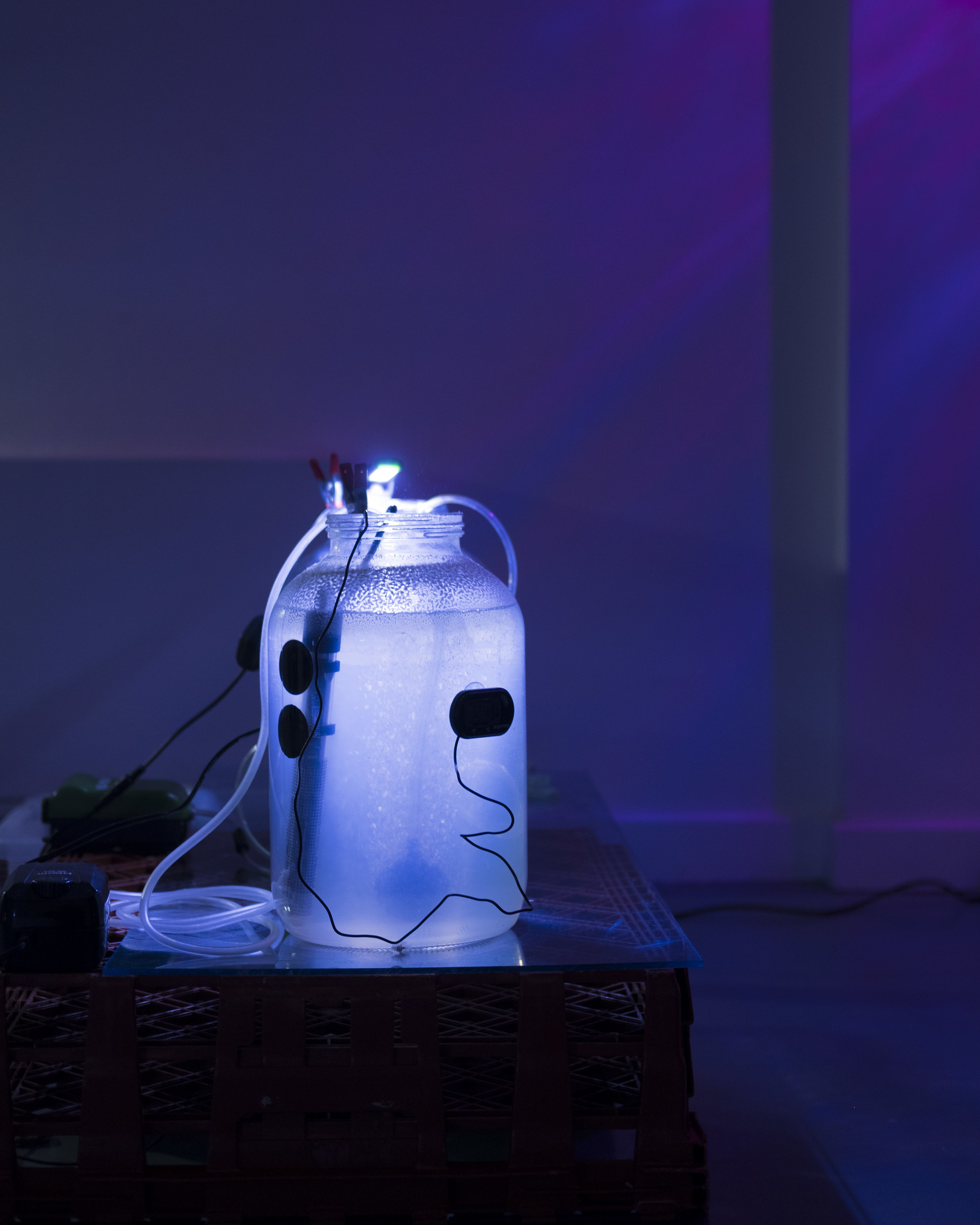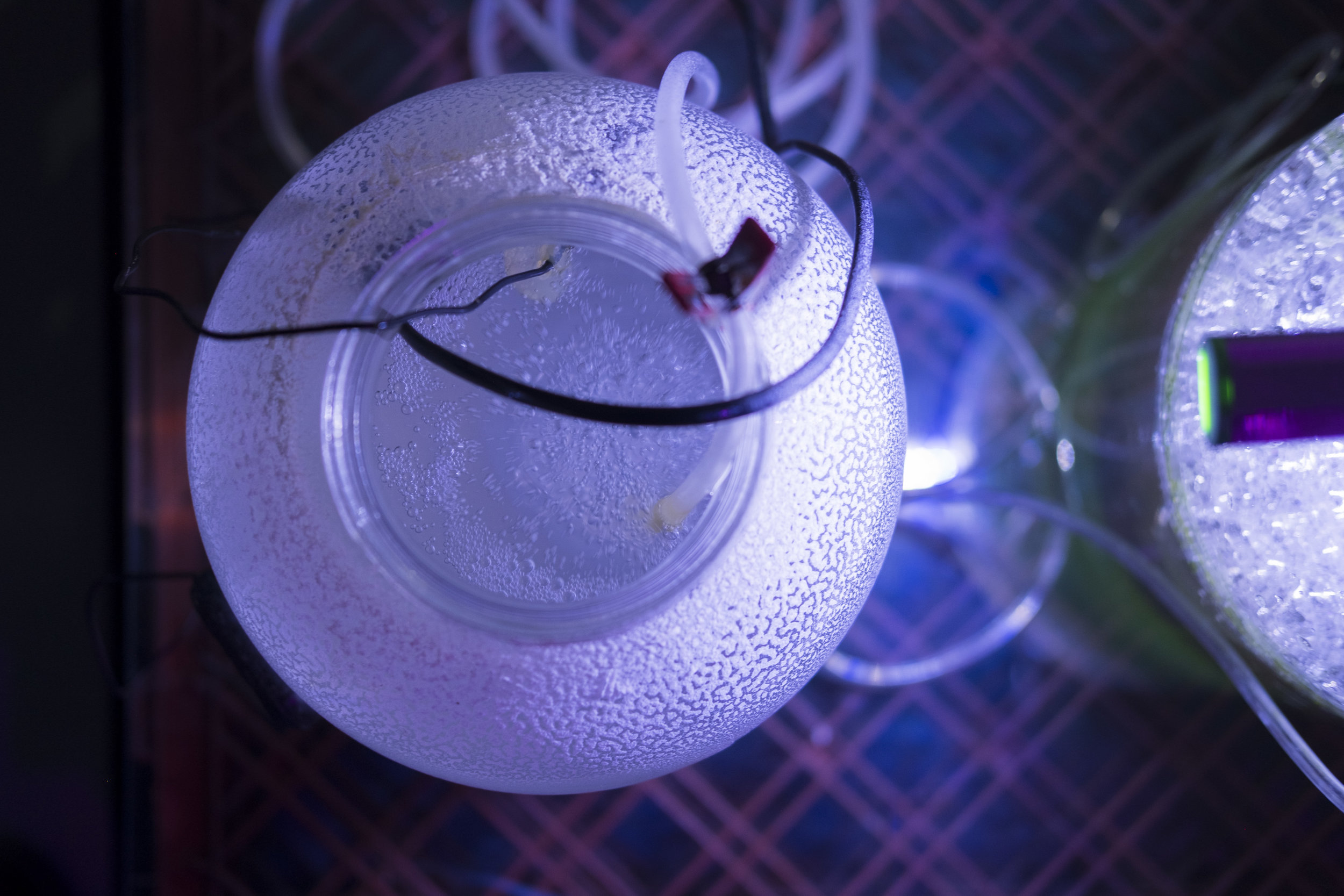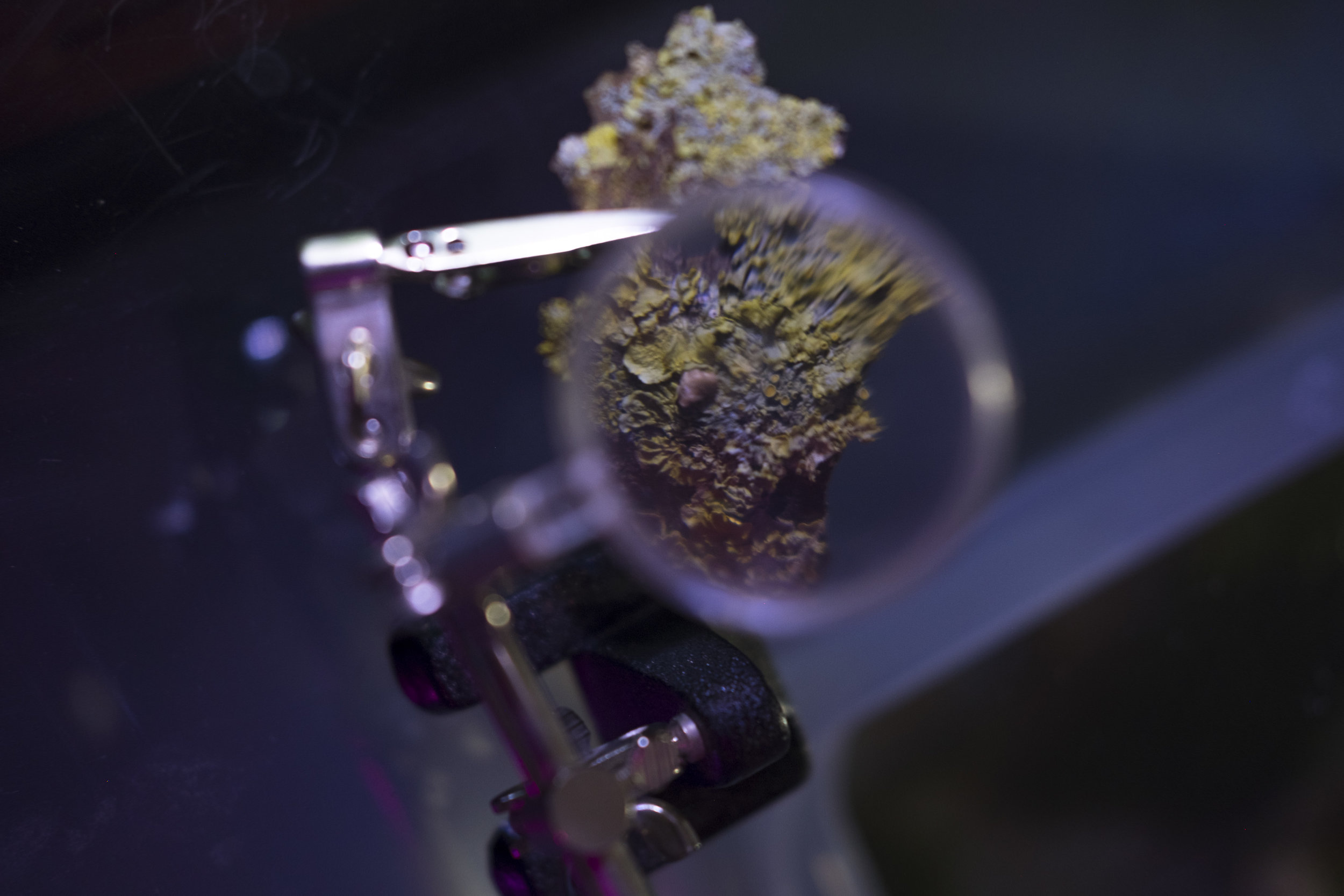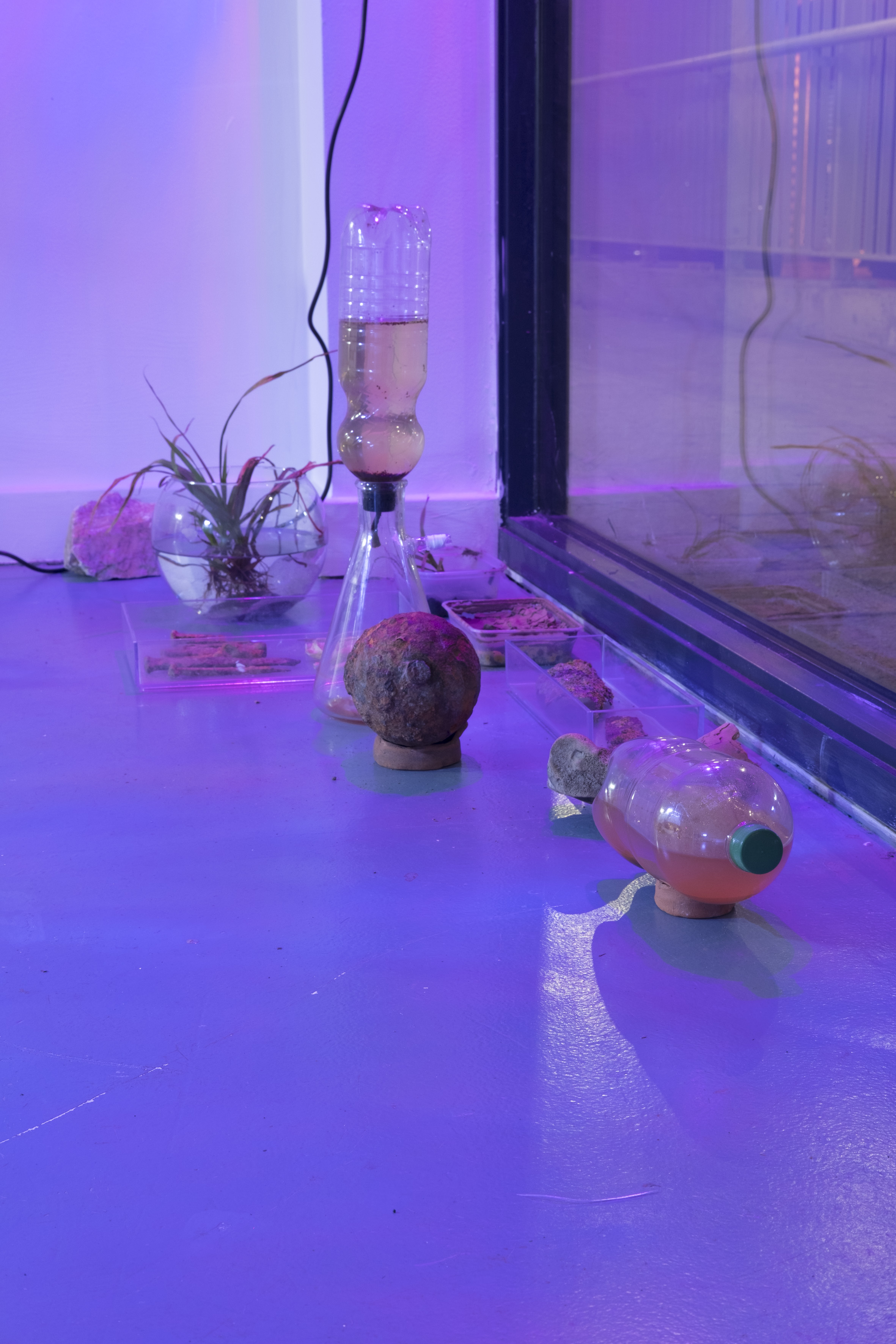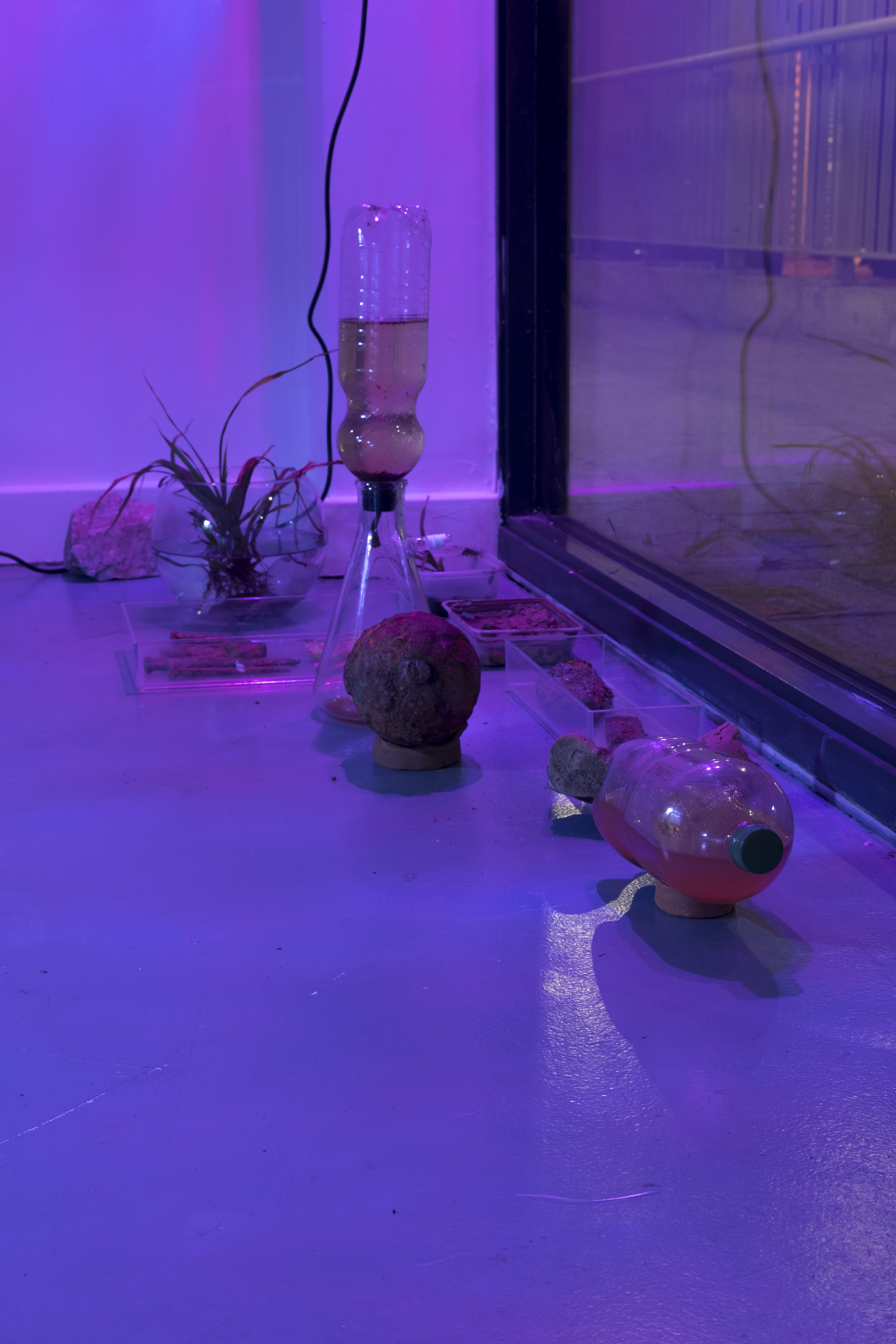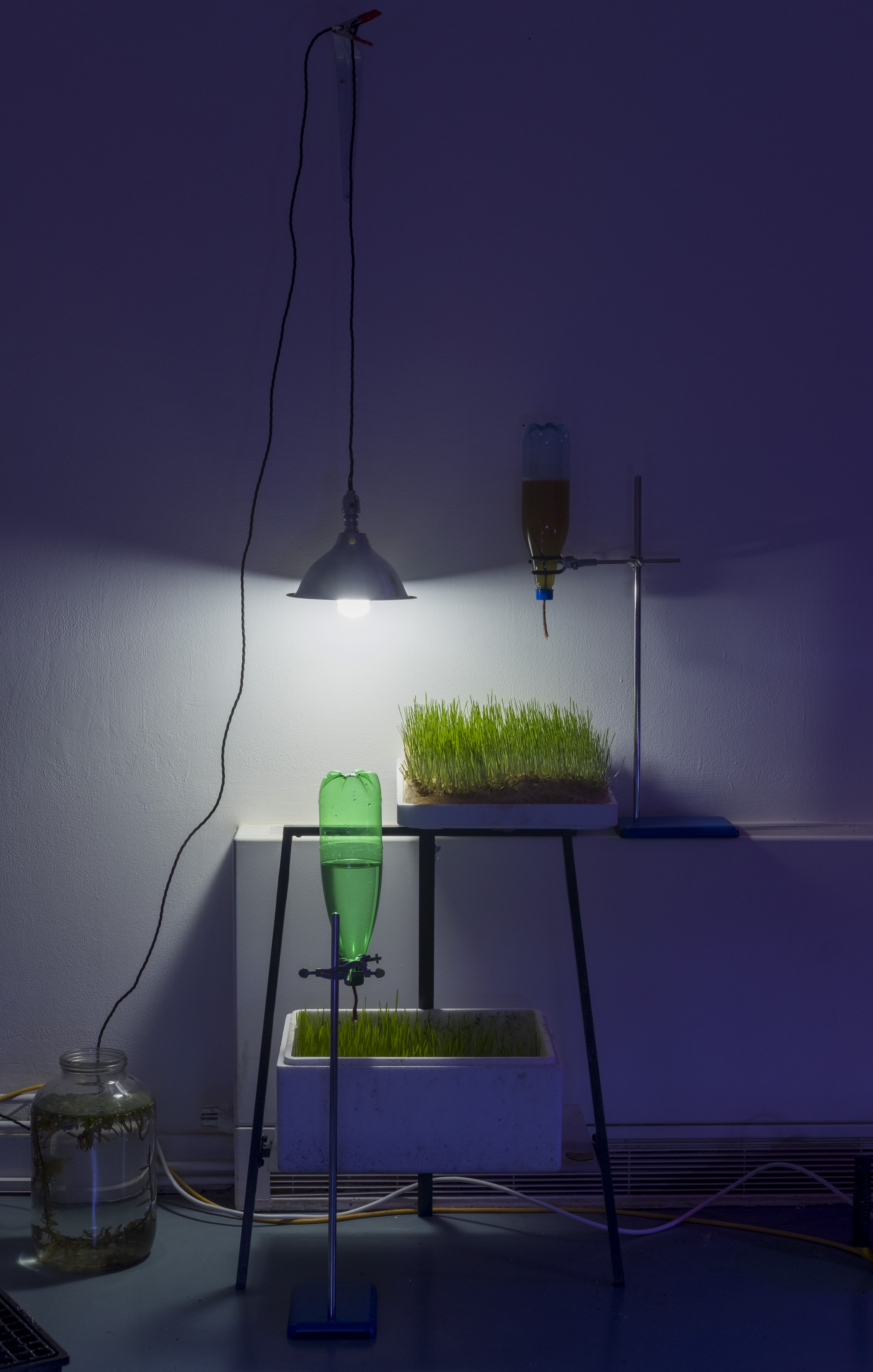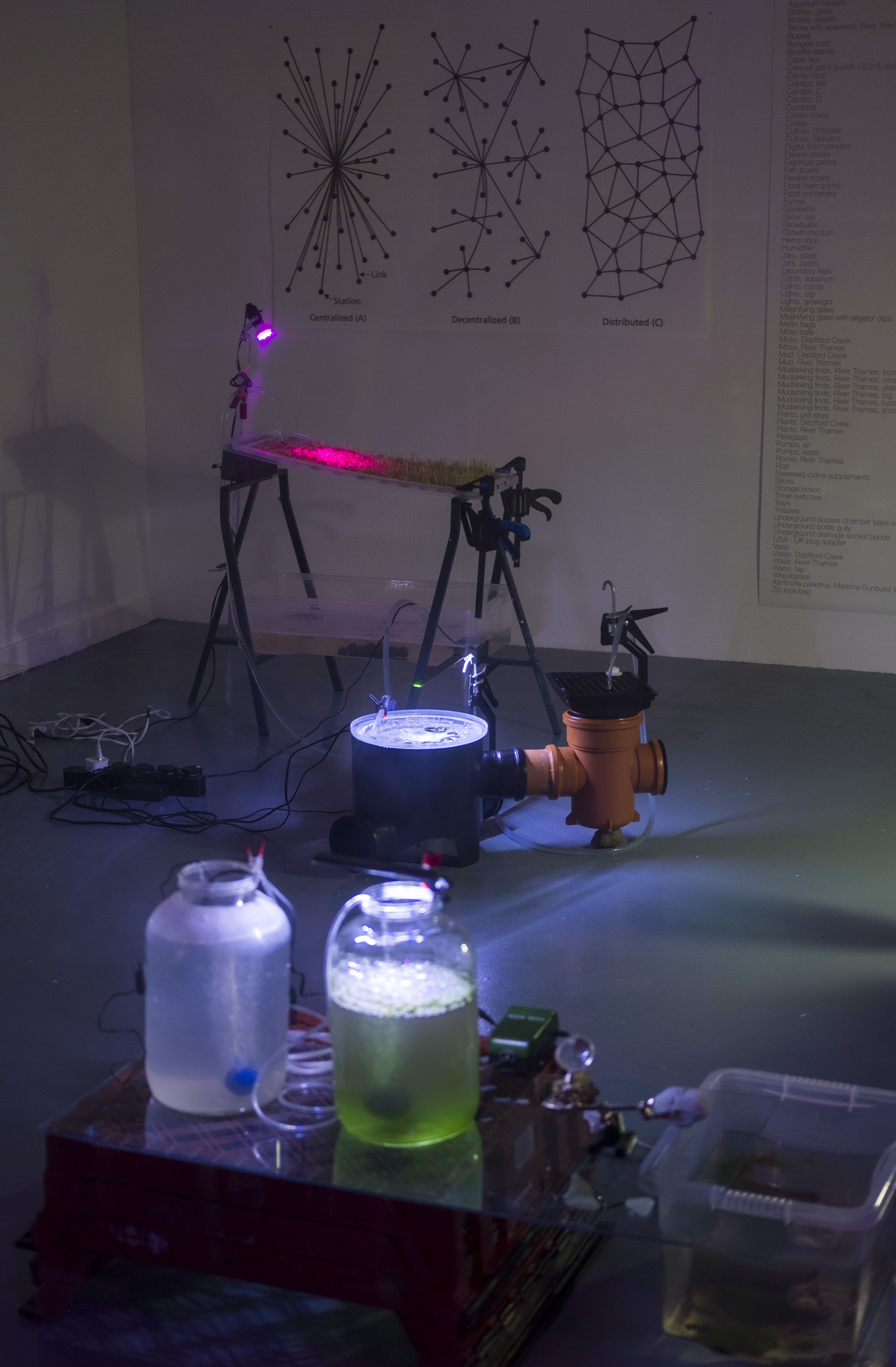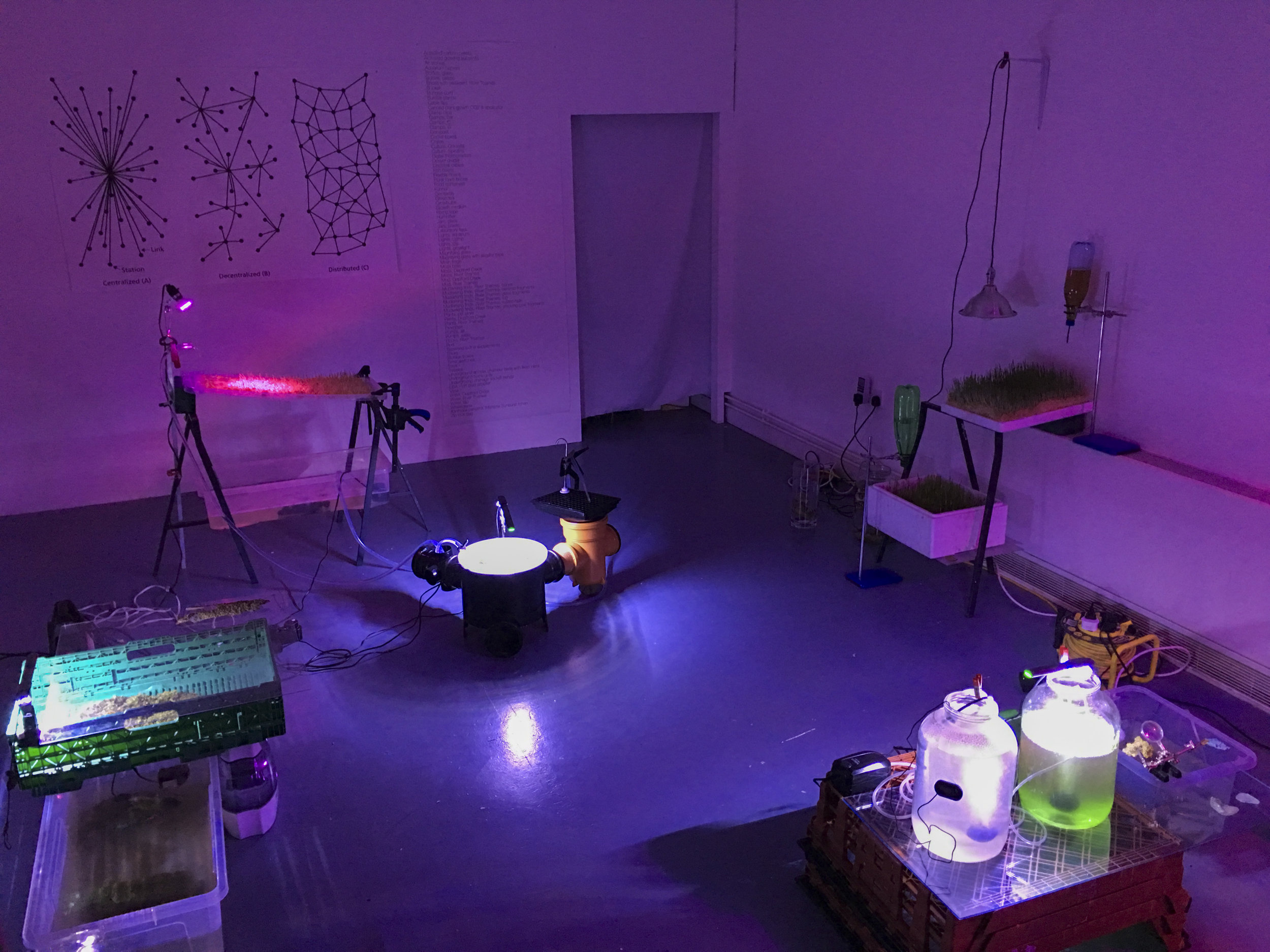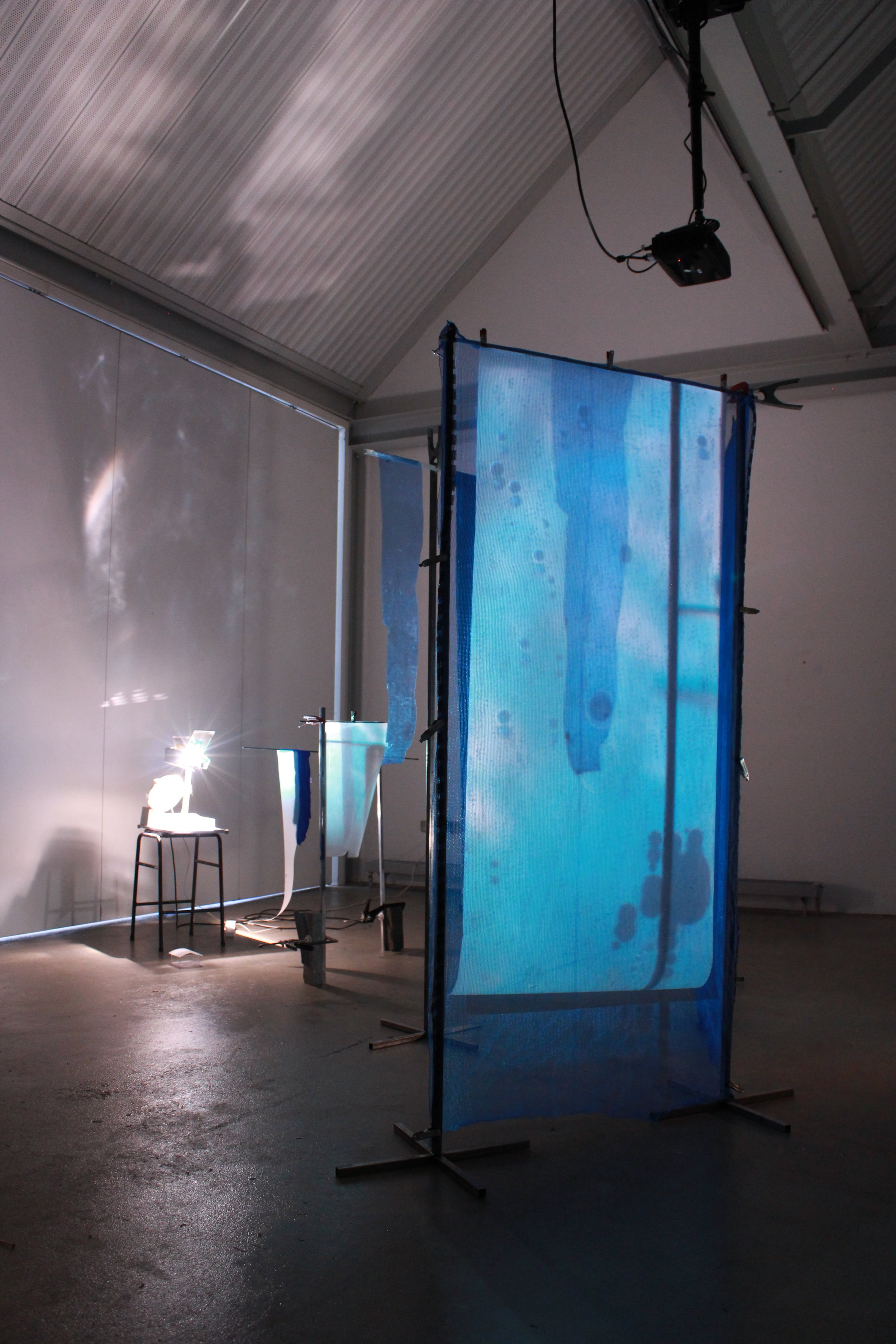Hannah Rowan, Tides in the Body, solo show at Canepaneri C+N Gallery, Milan, Italy.
7 March to 24 April 2023
press release
exhibition essay
On Tidal Politics of Touch
Anastasia (A) Khodyreva
All that is begins with a touch. Tides are of touch, too. Of a muddy frothy dance. Of a persistent and tentative with-ness of soils and rocks, salts and waters, of the Moon’s gravitational forces, Earth’s orbital attunement to the Moon, but also of (micro)organisms, bacteria, heat and cold, of nuanced climates that unwearyingly blueprint a tidal shoreline. Tides are never fully present and yet eternally alive. Tidal ambivalence might be precisely that spacetime where Hannah Rowan lures one to be at the currently over-heating socio-ecological moment that craves alternative - for Hannah, hydrofeminist (Neimanis 2012) - world. Imagining and sensing away from the crisis of extractive reproductive touch and its unlivable imaginaries of a body as a sealed, solid and sovereign entity, she invites to stay with ambivalence with her Tides In The Body, a solo show I walk, sniff, and touch in early March of Milan and with this snippet of a text.
As I walk through the unbreathable dust of Milan toward Tides In The Body, I feel swallowing anticipation of aquatic encounters. I am walking with a hopeful tickle of a reference to Virginia Woolf’s work and our years-long hydrofeminist conversations with Hannah about & with the planetary waters. As I step into the gallery space, I, curiously, do not feel a breeze. Neither do I immediately sense any other aqueous presence. Instead, I am pierced by heat by Prima Materia, a particle of Fagradalsfjall’s volcanic dust encapsulated into a glass ball held by Hannah’s cast bronze hands that greets and hits me with the sensation of nearly touching a screaming hot iron. The tiny particle radiates its agency; the glass in gentle palms emboldens it. Flushed by a cautious sweaty sensation of nearly burning myself, I wonder if this glass ball secures the primaeval matter or, instead, secures the artist’s hands and me from the matter that, in alchemy, is known to be all that the world is. I wonder if my body sweats since it assumes-imagines this glass ball as a bulb of ice that will melt and if I am to feel fragile. Or if I am to feel dangerous? Who is touching who? Is it possible to stay untouched? How to tend to this touchy encounter?
Dwelling on this ambivalent sensorial grasp, I crave a tidal breeze to soothe me, feeling tides of sweat in my pondering body. These tides feel to be a touch of their very own kind. This kind unfurls, unfolds, and lasts. It is not momentarily. Instead, it comes across as an ever-layering moody caress that is hardly graspable. It is a duration that blurs the boundaries of bodies and times. Yet again, who is touching who, and what is the temporality of this touch?
Inhale. Exhale. Feel the tides in your body (Rowan 2020). Feel tides as a distinctive bodying composed of elemental and interpersonal encounters but also political intimacies (ethical or otherwise) that, in attunement to the Moon and murks of the heated globality, is continuously re/made. A tidal ever-layering body might be a sibling to ice, Hannah’s long-term material and conceptual companion sensitive to all that is weathering (Sharpe 2016; Neimanis and Hamilton 2018; Malatino 2023) in planetary atmospheres. Layered histories-currents of the planetary becoming, at once, both possibilities and potentials (Massumi 2002; Lear 2018) oozing from bodies being in touch. Following tides with Hannah but also with a feminist philosopher Erin Manning, I wonder if they haptically evoke uncertainty as an alternative stable ground of “relational time-space, provisional embodiments [that] sense in layers, in textures, in rhythms and juxtapositions that defy strict organisation” (Manning 2006, xiv)? May one learn from tides how to layer sensitive ethics of touch for the heated socio-environmental now?
Next, I slide along the wall to quickly stumble upon what first comes across as the enlarged flexion creases of Hannah’s palms and that unfold as Desert Vessel, a cyanotype that blues into the space the textures of the Atacama Desert. I am ‘heat’ by another artwork, by its momentary cutaneous confusion that makes me sense-think of politics of touch that drains. Heat. Caution. Alert. Awareness. And once again, ambivalence: as a cyanotype, does not Desert Vessel emerge when the solar light caresses chemically alert paper? And isn’t it the volcanic heat that spat out the dust of Prima Materia from the planetary crust? The solar heat and the heat of Earth’s core, the two arduously ambivalent mights that dry up and ensure life. Whose life, though?
Where do tides begin? What is the time they make? If their fluted, in/coherent yet rhythmic time is Earth’s or planetary time, then time must be a multiplicity. In turn, what is the time of the socio-environmental crisis? If anything, it is untidal, that is, chrononormative (e.g. Freeman 2010), exhausting, unlivable, and infuriating. In the gallery space, I seek a soothing touch away from the heavy untidal time I know with my body-mind. And I am sensed: I am led into the soothing humid darkness of the other gallery room. It hosts Tides in the Body, an audio-video essay eponymous with the show. It first sores with salty airs of the open water winds projected-stretched over the wall to immediately alleviate with the swaying lull of the Arctic seascape. The seascape centres an iceberg. Sharply white, it is drifting, and Hannah’s bare milky warm body on and with it. Her body tactilуly attunes to the quasi-solid body of ice. The movement not nauseating but hypnotising. Two planetary bodies curve in their porous cutaneous conversation, seeping into each other from different scales, with different life speeds, and with bodily certainty that they are no entities capable of aligning with the heated dominant Western binary abstractions.
The screen tweaks the scene: the iceberg drafted outside the frame, and now the Arctic brash ice contours the shoreline. Enveloped in the neoprene costume, Hannah stretches her arms towards the slippery crystalline lumps but does not strive to grab and hold them tight. She is learning from their crystalline collaboration, from their stubborn doing-in-common (Neimanis 2012). Touch and its politics are, indeed, a slippery business.
Hypnotised by the slippery encounters, I step outside the humid darkness. I might have rushed outside too swiftly: I feel another tide of sudden sweat for Undersea, an oyster colony made of porcelain, black stoneware and glaze, begins to swing notoriously. The porcelain hangs down at me. In this quiet and sudden potentially cracking and crumbling moment of tension, a need for a vulnerable attunement surfaces. Undersea in-tense-ionally invigorates sensorium and visually nudges to remember capitalist modern/colonial (Lugones 2007; 2010) hierarchies-verticalities driven by and fuelling thirst for reproduction. The oyster colony here is not hidden in an industrial farm. Neither does it rest on a bed of crushed ice when dismembered for a restaurant plate affordable for some. It is pushing down upon me. Face us! - they whisper, making me look up, tweaking my sensorial coordinates, disorienting. They do not scream; they seamlessly drown me into the abyss where they dwell and grow in a tight community. Oysters, inherently precarious tidal bodies that cling, hold their gill-ed breath and whisper that there is nothing wrong with a tight hold if one holds precisely to ethical communal futurity.
And as I am about to step away, they haptically glaze rhymes with … dolphin or whale skin. Does this precariously swinging colony glare kinships with the mammalian oceanic creatures? Or does it in-tense-ionally pulls towards a multispecies kinship (for some - to stay with, for others - to nurture)? Here, to echo Walter Benjamin with liberties, haptic colours are not lifeless things or rigid individualities but winged or marine creatures that flit from one form to the next (Benjamin 2004). The blue and green hues might be flitting towards an exquisitely weaved critical poetics of a Black feminist poet, writer, independent scholar, and activist Alexis Pauline Gumbs and her Black Feminist Lessons from Marine Mammals (2020). Above all, Undersea colours might be layering towards an alternative politics of being in touch with critical decolonial practices, with lands back, waters back, and airs back.
Pulling myself away from Undersea, I arrive at Vessels of Touch, two small basins full of ice, standing on metal rods, encircled into a duo by a copper plate and a rock of salt that absorb waters dripping down from the top. The ice drips in attunement to Ocean Held, a glass vessel that balances on another material rod that holds a vessel and, in it, a piece of ice cast as an oyster shell. Both stand out as vibrant situations where the artist’s hands once again are touching towards uncertainty as a generative place to be for an alternative critical politics of touch. This time, the artwork unequivocally stages where touch that grabs leads - towards the planetary melting. Hannah’s companion, ice, this queer body of water that drifts the oceans and cracks metal pipes, lands its melting body for that. One cannot hold this aquatic trickster too tight even if one tries. It escapes, melting, evaporating, making puddles that unfurl on the metal surface, shape-echoing Tentacular, a circle of ceramic tentacles that colourfully rhymes with Undersean and that rests on the gallery wall to my left. Wording and worlding with the titles between the three artworks, Hannah seems to pull us to a realisation that a vessel is not simply a container that preserves pre-existing entities. Rubbing the titles against the material situations of her artworks, Hannah suggests a slight but powerful challenge-tweak of imagination: for a mind-body that refuses dominant Western thinking in sovereign entities, vessels do not solidly isolate but stand for nascent material intimacies. There is nothing solidly hard, everything is hardly solid. Even rocks liquify and evaporate becoming ephemeral fragrant cloud of Petrichor (Living Waters), a metal construction that might be speculatively forming a new chemical formula with all of its branches, holding more glass and more ice in its many containers of potential.
Vessels are relations and Tides in The Body is one of such vessels. The show gently but persistently pulls one towards their sensing, radically open and tentacularly connected body. It gradually layers nuanced sensorial attention to movement with the artworks and, beyond their material bodies, to the matters that caused the global heat of the socio-environmental crisis. Violent touch of extractive capitalism, modern/colonial unliveable and unbelievable sovereign bodies, precarity of actually living and breathing ones, exhaustion, vulnerability but never weakness, and collective critique and subversion that do not only happen in the streets or in parliaments but in and with slight shifts towards or amplification of existing critical imaginaries. These shifts or amplifications are called in to carve alternative - wet - futures which would not grab, but, instead, reach out, plant, water, caress, and tend. The shifts towards subversive politics that happens at the tips of one’s fingers (Neimanis 2017), a politics that does not take touch for granted and, as feminist theorist of care Maria Puig de la Bellacasa warns, does not equate any gesture of touch or of being touched physically with being in touch with oneself, the other (Puig de la Bellacasa 2017, 99), let alone, being in care-ful touch. May a politics of care-ful touch that never pre-exists a tactile encounter be the prima materia for a hydrofemnist world that lives in attunement to the tidal time? And if so, what membranes can hold it?
PRESS LINKS
Forme Uniche
Contemporary Line
Artibune
Espoarte
Il Giornale dell Arte
Small Zine




